Steve Wozniak
description: an American electronics engineer and computer programmer, co-founder of Apple Inc.
217 results

Valley of Genius: The Uncensored History of Silicon Valley (As Told by the Hackers, Founders, and Freaks Who Made It Boom)
by
Adam Fisher
Published 9 Jul 2018
And that’s another moment I’ll never forget. When we saw this journal, we thought, My God, it’s all real! Steve Wozniak: So I designed this little box and Steve said, “Oh, let’s sell it.” R. U. Sirius: And then Jobs and Woz manufactured those blue boxes. Captain Crunch: And I met Steve Wozniak, Steve Jobs, and one or two more individuals who were UC Berkeley students. Steve Wozniak was going there for his engineering degree. Steve Wozniak: We both sold it to people in the dorms for a year. Ron Rosenbaum: It was the beginning of the Apple partnership, even though as far as I can tell they weren’t very good at it then.
…
It disaggregated the album. Guy Bar-Nahum: iPod basically freed Apple from the PC wars. Apple was entrenched in this losing war. It was like World War One: suffering and bleeding and losing territory and losing cultural relevance until iPod came and opened up the big sky of the universal app that is music. Today it looks small, but back then it was infinitely bigger. Music crosses cultures, and operating systems, and everything that was limiting the growth of Apple. It was a big thing. Steve Wozniak: Apple didn’t grow in size ever over the Apple II days until the iPod. And it didn’t grow in size when he introduced the iMac.
…
When Steve Jobs visited PARC to see the Alto, Ingalls famously gave the demonstration. Later, Ingalls worked for Jobs at Apple. Steve Jarrett was a project manager for General Magic, the smartphone company that spun out of Apple in the midnineties. Later he joined Apple to help launch the original iPod. Today he’s an executive at Facebook, living in London. Steve Jobs and his friend Steve Wozniak cofounded Apple, the company most responsible for bringing the personal computer to the masses. Jobs didn’t manage to gain full control of his company until twenty years later, but after he did Apple released a string of hit products—the iMac, the iPod, the iPhone, the iPad—and it became the most valuable company in the world.
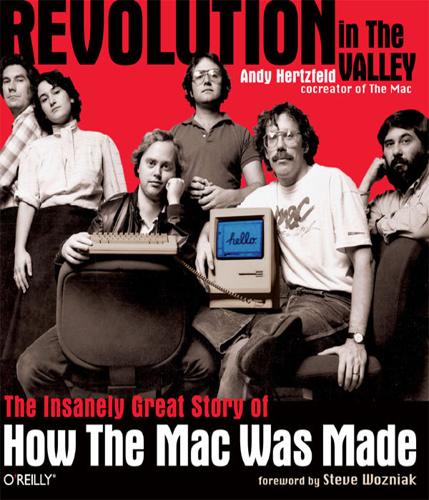
Revolution in the Valley: The Insanely Great Story of How the Mac Was Made
by
Andy Hertzfeld
Published 19 Nov 2011
He was instrumental in convincing Burrell to switch from the 6809 to the 68000 microprocessor, which turned Jef’s research project into the future of Apple. A year and a half later, in December 1981, he had to leave the project to return to finish his M.D./Ph.D. degree, but he eventually returned to Apple in the summer of 1984. He left Apple to co-found NeXT with Steve Jobs in September 1985, and after a seven-year stint at Sun and year and a half at Eazel, he returned to Apple as a vice president of software technology in January 2002. Steve Wozniak Steve Wozniak co-founded Apple Computer with Steve Jobs in 1976. His brilliant design for the hardware and software of the Apple II created the foundation for Apple’s initial success.
…
I abandoned graduate school and started work as a systems programmer at Apple in August 1979. Even though the Apple II was overflowing with both technical and marketing genius, the best thing about it was the spirit of its creation. It was not conceived or designed as a commercial product in the usual sense. Apple cofounder Steve Wozniak was just trying to make a great computer for himself and impress his friends at the Homebrew Computer Club. His design somehow projected an audacious sense of infinite horizons, as if the Apple II could do anything, if you were just clever enough. Most of the early Apple employees were their own ideal customers. The Apple II was simultaneously a work of art and the fulfillment of a dream, shared by Apple’s employees and customers.
…
He’s worked at Apple continuously since 1978, co-designing many of the best Macintoshes over the years, such as the Macintosh IIci. Steve Jobs Steve Jobs co-founded Apple Computer with Steve Wozniak in 1976, when he was twenty-one years old. After being rebuffed by the Lisa team in the fall of 1980, he took over the Mac project from Jef Raskin in January 1981, and led the Macintosh team until John Sculley ousted him in May 1985. He left Apple in September 1985 to co-found NeXT, Inc, and returned to Apple in 1997 after Apple bought NeXT in December 1996. He is currently the CEO of Apple, as well as Pixar, a leading computer animation studio.
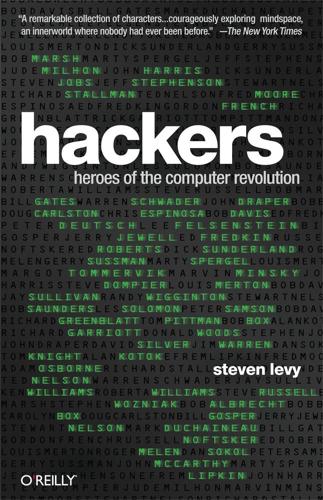
Hackers: Heroes of the Computer Revolution - 25th Anniversary Edition
by
Steven Levy
Published 18 May 2010
Anyone in Homebrew could take a look at the schematics for the design, Woz’s BASIC was given away free with purchase of a piece of equipment that connected the computer to a cassette recorder, and Woz published the routines for his 6502 “monitor,” which enabled you to look into memory and see what instructions were stored, in magazines like Dr. Dobbs. The Apple ad even said, “our philosophy is to provide software for our machines free or at minimal cost.” While the selling was going on, Steve Wozniak began working on an expanded design of the board, something that would impress his Homebrew peers even more. Steve Jobs had plans to sell many computers based on this new design, and he started getting financing, support, and professional help for the day the product would be ready. The new version of Steve Wozniak’s computer would be called the Apple II, and at the time no one suspected that it would become the most important computer in history
…
He was guided in this by the experienced hand of Mike Markkula, who was taking the Apple venture very seriously. One thing he apparently recognized was that Steve Wozniak’s commitment was to the computer rather than to the company. To Woz, the Apple was a brilliant hack, not an investment. It was his art, not his business. He got his payment by solving puzzles, saving chips, impressing people at Homebrew. This was fine for hacking, but Markkula wanted, at the least, Wozniak’s full-time participation in the company. He told Jobs to tell his partner that if Woz wanted there to be an Apple Computer company, he must quit HP for all-out work on pre-production of the Apple II. It was a tough decision for Wozniak.
…
Then you would plunk down your twenty or twenty-five or even thirty-five dollars and go home for what was the essential interface with the Apple. Playing games. In early 1980, the Hot New Game would most likely be written in deadly slow BASIC. Most of the Apples at that time used cassette recorders; the difficulty of using an assembler with a cassette recorder made it nearly impossible to go down into the deepest recess of the machine, the 6502 chip, to speak in the Apple’s assembly language. This was changing: Steve Wozniak had recently hacked a brilliant design for a disk-drive interface for the Apple, and the company was able to offer low-cost floppy-disk drives which accessed thousands of bytes a second, making assembling easy for those few who knew how to program on that difficult level.

Fire in the Valley: The Birth and Death of the Personal Computer
by
Michael Swaine
and
Paul Freiberger
Published 19 Oct 2014
Meanwhile, without the singular vision of a Steve Wozniak, the Apple III project was floundering. Delays in the Apple III were soon causing concern in the marketing department. The young company was beginning to feel growing pains at last. When Apple was formed, the Apple II was already near completion. The Apple III was the first computer that Apple—as a company—had designed and built from scratch. The Apple III was also the first Apple not conceived by Steve Wozniak in pursuit of his personal dream machine. Instead the Apple III was a bit of a hodgepodge, pasted together by many hands and designed by committee.
…
The other hobbyists were duly impressed. Some questioned his choice of processor, but no one argued with the processor’s $20 price tag. He called his machine an Apple. * * * Figure 57. The Apple I Steve Wozniak’s original Apple I was a circuit board. (Courtesy of Apple Computer Inc.) The Apple I had only the bare essentials. It lacked a case, a keyboard, and a power supply. The hobbyist owner had to connect a transformer to it in order to get it to work. The Apple I also required laborious assembly by hand. Woz spent a lot of time helping friends implement his design. Steve Jobs saw a great financial opportunity in this skeletal machine, and urged Woz to start a company with him.
…
The Debut The young company faced a more modest challenge than tackling the company that had defined computer for generations: they had to finish the Apple II design in time for Jim Warren’s first West Coast Computer Faire in April and get it ready for production shortly thereafter. Markkula was already signing up distributors nationwide, many of whom were eager to work with a company that would give them greater freedom than microcomputer manufacturer MITS had, as well as provide a product that actually did something. * * * Figure 62. Steve Wozniak Woz scrambles for a phone in one of Apple’s early offices. (Courtesy of Margaret Kern Wozniak) Steve Wozniak is justly credited with the technical design of the Apple I and Apple II.
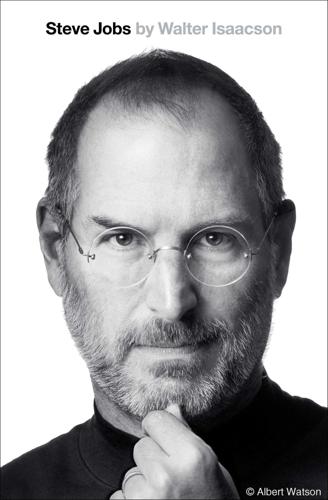
Steve Jobs
by
Walter Isaacson
Published 23 Oct 2011
The Homebrew Computer Club: Interviews with Steve Jobs, Steve Wozniak. Wozniak, 152–172; Freiberger and Swaine, 99; Linzmayer, 5; Moritz, 144; Steve Wozniak, “Homebrew and How Apple Came to Be,” www.atariarchives.org; Bill Gates, “Open Letter to Hobbyists,” Feb. 3, 1976. Apple Is Born: Interviews with Steve Jobs, Steve Wozniak, Mike Markkula, Ron Wayne. Steve Jobs, address to the Aspen Design Conference, June 15, 1983, tape in Aspen Institute archives; Apple Computer Partnership Agreement, County of Santa Clara, Apr. 1, 1976, and Amendment to Agreement, Apr. 12, 1976; Bruce Newman, “Apple’s Lost Founder,” San Jose Mercury News, June 2, 2010; Wozniak, 86, 176–177; Moritz, 149–151; Freiberger and Swaine, 212–213; Ashlee Vance, “A Haven for Spare Parts Lives on in Silicon Valley,” New York Times, Feb. 4, 2009; Paul Terrell interview, Aug. 1, 2008, mac-history.net.
…
Steve Jobs, address to the Aspen Design Conference, June 15, 1983, tape in Aspen Institute archives; Apple Computer Partnership Agreement, County of Santa Clara, Apr. 1, 1976, and Amendment to Agreement, Apr. 12, 1976; Bruce Newman, “Apple’s Lost Founder,” San Jose Mercury News, June 2, 2010; Wozniak, 86, 176–177; Moritz, 149–151; Freiberger and Swaine, 212–213; Ashlee Vance, “A Haven for Spare Parts Lives on in Silicon Valley,” New York Times, Feb. 4, 2009; Paul Terrell interview, Aug. 1, 2008, mac-history.net. Garage Band: Interviews with Steve Wozniak, Elizabeth Holmes, Daniel Kottke, Steve Jobs. Wozniak, 179–189; Moritz, 152–163; Young, 95–111; R. S. Jones, “Comparing Apples and Oranges,” Interface, July 1976. CHAPTER 6: THE APPLE II An Integrated Package: Interviews with Steve Jobs, Steve Wozniak, Al Alcorn, Ron Wayne. Wozniak, 165, 190–195; Young, 126; Moritz, 169–170, 194–197; Malone, v, 103. Mike Markkula: Interviews with Regis McKenna, Don Valentine, Steve Jobs, Steve Wozniak, Mike Markkula, Arthur Rock. Nolan Bushnell, keynote address at the ScrewAttack Gaming Convention, Dallas, July 5, 2009; Steve Jobs, talk at the International Design Conference at Aspen, June 15, 1983; Mike Markkula, “The Apple Marketing Philosophy” (courtesy of Mike Markkula), Dec. 1979; Wozniak, 196–199.
…
But the biggest news that month was the departure from Apple, yet again, of its cofounder, Steve Wozniak. Wozniak was then quietly working as a midlevel engineer in the Apple II division, serving as a humble mascot of the roots of the company and staying as far away from management and corporate politics as he could. He felt, with justification, that Jobs was not appreciative of the Apple II, which remained the cash cow of the company and accounted for 70% of its sales at Christmas 1984. “People in the Apple II group were being treated as very unimportant by the rest of the company,” he later said. “This was despite the fact that the Apple II was by far the largest-selling product in our company for ages, and would be for years to come.”
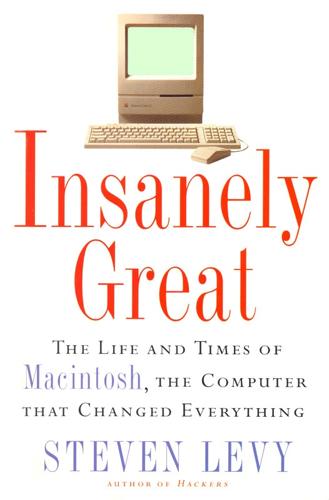
Insanely Great: The Life and Times of Macintosh, the Computer That Changed Everything
by
Steven Levy
Published 2 Feb 1994
But Steve Jobs had an idea for something even more special-Lisa, a computer that would leapfrog Apple's technology, surpassing not only the Apple II, but Apple III as well. This jump would also vault Apple a generation or so past anything that its competitors were preparing. Begun when Steve Wozniak, at Steve Jobs's request, sketched its architecture on a napkin, Lisa had, in less than a year, evolved to a computer based on the powerful Motorola 68000 microprocessor chip, and was engineered to handle more complicated applications, even running several at the same time, a trick called "multitasking." Named after an Apple engineer's daughter (and allegedly an additional tribute to Jobs's own daughter), Lisa was also the first Apple computer specifically directed at office professionals-from white-collar workers to captains of industry.
…
But a friend convinced him to sell it, and Hertzfeld made $40,000 in a few months. Andy went to work for Apple in 1979. In some ways it was a dream; he had access to the secrets of the Apple II, and even began a friendship with his hero, Steve Wozniak. On the other hand, the company was just beginning its accommodation with hypergrowth, with some disturbing side effects. A year after Hertzfeld arrived, Apple went public, and for months thereafter many of the instant millionaires at Apple were obsessed with the daily stock price. This unseemly behavior dismayed Andy, but he was downright depressed at the continuing influx of "bozos" from established companies like H-P, or even IBM.
…
The stunning visuals produced by Atkinson's work allowed people to see the brain from previously unimagined vistas. Atkinson had experienced a conversion experience when he came across an Apple II in 1977. He easily saw past its limitations (it was much less powerful than the machines he worked with at school), instead appreciating the virtuosity of Steve Wozniak's digital design. He went to work for Apple in 1978-employee number 51-writing applications that would help sell the Apple II. But with Lisa, Atkinson faced his biggest challenge. His ninety-minute exposure to Smalltalk had been somewhat deceiving. While the computer in some ways seemed to have completely solved the challenge of allowing an unschooled worker easy access to the information inside the computer-the furniture of cyberspace-when Atkinson sat down and tried to duplicate the task, he realized that there were gaps as yet unfilled.

Exploding the Phone: The Untold Story of the Teenagers and Outlaws Who Hacked Ma Bell
by
Phil Lapsley
Published 5 Feb 2013
Excerpt from IWOZ: COMPUTER GEEK TO CULT ICON: HOW I INVENTED THE PERSONAL COMPUTER, COFOUNDED APPLE, AND HAD FUN DOING IT by Steve Wozniak and Gina Smith. Copyright © 2006 by Steve Wozniak and Gina Smith. Used by permission of W. W. Norton & Company, Inc. ISBN-13: 978-0-8021-9375-9 Grove Press an imprint of Grove/Atlantic, Inc. 841 Broadway New York, NY 10003 Distributed by Publishers Group West www.groveatlantic.com 13 14 15 16 10 9 8 7 6 5 4 3 2 1 To the men and women of the Bell System, and especially to the members of the technical staff of Bell Laboratories, without whom none of this would have been possible CONTENTS FOREWORD BY STEVE WOZNIAK A NOTE ON NAMES AND TENSES CHAPTER 1 FINE ARTS 13 CHAPTER 2 BIRTH OF A PLAYGROUND CHAPTER 3 CAT AND CANARY CHAPTER 4 THE LARGEST MACHINE IN THE WORLD CHAPTER 5 BLUE BOX CHAPTER 6 “SOME PEOPLE COLLECT STAMPS” CHAPTER 7 HEADACHE CHAPTER 8 BLUE BOX BOOKIES CHAPTER 9 LITTLE JOJO LEARNS TO WHISTLE CHAPTER 10 BILL ACKER LEARNS TO PLAY THE FLUTE CHAPTER 11 THE PHONE FREAKS OF AMERICA PHOTO INSERT CHAPTER 12 THE LAW OF UNINTENDED CONSEQUENCES CHAPTER 13 COUNTERCULTURE CHAPTER 14 BUSTED CHAPTER 15 PRANKS CHAPTER 16 THE STORY OF A WAR CHAPTER 17 A LITTLE BIT STUPID CHAPTER 18 SNITCH CHAPTER 19 CRUNCHED CHAPTER 20 TWILIGHT CHAPTER 21 NIGHTFALL EPILOGUE SOURCES AND NOTES ACKNOWLEDGMENTS INDEX THE PLAYGROUND Phone phreak (n.) 1.
…
Riches, or promises of riches, or maybe just a fun job that might pay the bills beckoned. In 1976 former phone phreaks Steve Jobs and Steve Wozniak were selling Apple I computers to their fellow hobbyists. “Jobs placed ads in hobbyist publications and they began selling Apples for the price of $666.66,” journalist Steven Levy wrote. “Anyone in Homebrew could take a look at the schematics for the design, Woz’s BASIC was given away free with the purchase of a piece of equipment that connected the computer to a cassette recorder.” The fully assembled and tested Apple II followed later that year. By 1977 microcomputers had begun to enter the mainstream.
…
He had spent a total of three months on the inside, where he slopped pigs at the prison’s piggery and tended the prison grounds in a landscaping job. While there, Draper claims, he taught the art of phone phreaking to dozens of other inmates. Draper soon went to work for his friend Steve Wozniak at Apple Computer, designing an innovative product called the Charley Board. Charley was an add-in circuit board for the Apple II that connected the computer to the telephone line. With Charley and a few simple programs you could make your Apple II do all sorts of telephonic tricks. Not only could it dial telephone numbers and send touch tones down the line, it could even listen to the calls it placed and recognize basic telephone signals as the call progressed, signals such as a dial tone or busy signal or a ringing signal.

The Innovators: How a Group of Inventors, Hackers, Geniuses and Geeks Created the Digital Revolution
by
Walter Isaacson
Published 6 Oct 2014
Bill Gates interview, Playboy, July 1994. 82. This section draws from my Steve Jobs (Simon & Schuster, 2011), which was based on interviews with Steve Jobs, Steve Wozniak, Nolan Bushnell, Al Alcorn, and others. The Jobs biography includes a bibliography and source notes. For this book, I reinterviewed Bushnell, Alcorn, and Wozniak. This section also draws on Steve Wozniak, iWoz (Norton, 1984); Steve Wozniak, “Homebrew and How the Apple Came to Be,” http://www.atariarchives.org/deli/homebrew_and_how_the_apple.php. 83. When I posted an early draft of parts of this book for crowdsourced comments and corrections on Medium, Dan Bricklin offered useful suggestions.
…
Michael Riordan and Lillian Hoddeson, “Crystal Fire,” IEEE SCS News, Spring 2007, adapted from Crystal Fire (Norton, 1977). 117. Author’s interviews with Lee Felsenstein, Steve Wozniak, Steve Jobs, and Bob Albrecht. This section also draws from the accounts of the Homebrew Computer Club origins in Wozniak, iWoz (Norton, 2006); Markoff, What the Dormouse Said, 4493 and passim; Levy, Hackers, 201 and passim; Freiberger and Swaine, Fire in the Valley, 109 and passim; Steve Wozniak, “Homebrew and How the Apple Came to Be,” http://www.atariarchives.org/deli/homebrew_and_how_the_apple.php; the Homebrew archives exhibit at the Computer History Museum; the Homebrew newsletter archives, http://www.digibarn.com/collections/newsletters/homebrew/; Bob Lash, “Memoir of a Homebrew Computer Club Member,” http://www.bambi.net/bob/homebrew.html. 118.
…
To listen to Dompier’s Altair play “Fool on the Hill,” go to http://startup.nmnaturalhistory.org/gallery/story.php?ii=46. 32. After they became successful, Gates and Allen donated a new science building to Lakeside and named its auditorium after Kent Evans. 33. Steve Wozniak’s unwillingness to tackle this tedious task when he wrote BASIC for the Apple II would later force Apple to have to license BASIC from Allen and Gates. 34. Reading a draft version of this book online, Steve Wozniak said that Dan Sokol made only eight copies, because they were hard and time-consuming to make. But John Markoff, who reported this incident in What the Dormouse Said, shared with me (and Woz and Felsenstein) the transcript of his interview with Dan Sokol, who said he used a PDP-11 with a high-speed tape reader and punch.
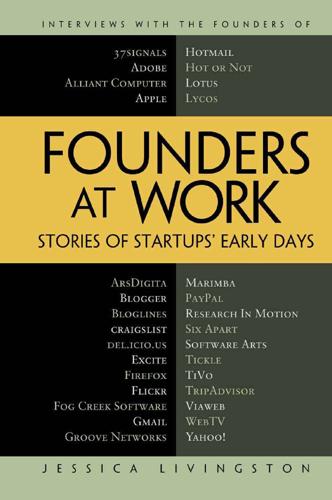
Founders at Work: Stories of Startups' Early Days
by
Jessica Livingston
Published 14 Aug 2008
Little did he know that I was actually up all night writing a business plan, not partying. C H A P T 3 E R Steve Wozniak Cofounder, Apple Computer If any one person can be said to have set off the personal computer revolution, it might be Steve Wozniak. He designed the machine that crystallized what a desktop computer was: the Apple II. Wozniak and Steve Jobs founded Apple Computer in 1976. Between Wozniak’s technical ability and Jobs’s mesmerizing energy, they were a powerful team. Woz first showed off his home-built computer, the Apple I, at Silicon Valley’s Homebrew Computer Club in 1976. After Jobs landed a contract with the Byte Shop, a local computer store, for 100 preassembled machines, Apple was launched on a rapid ascent.
…
The board gave him another job and he wrote a very shocking resignation letter that, basically, life was too important for this political type stuff. It was sad to see him go because he supported good people so well in the company. Steve Wozniak 47 Livingston: What about Ron Wayne? Wasn’t he one of the founders? Wozniak: Yes, but not when we incorporated as a real company. We had two phases. One was as a partnership with Steve Jobs for the Apple I, and then for the Apple II, we became a corporation, Apple Computer, Incorporated. Steve knew Ron at Atari and liked him. Ron was a super-conservative guy. I didn’t know anything about politics of any sort; I avoided it.
…
We put out manuals that had just hundreds of pages of listings of code, descriptions of circuits, examples of boards that you would plug in—so that Steve Wozniak 51 anyone could look at this and say, “Now I know how I would do my own.” They could type in the programs on their own Apple II and then see “that’s how that works” instantly, and know how to write their own programs. Running cards was the most important thing. All these companies started up making cards that you could plug into your Apple II and write a little software (mostly games at first) on cassette tapes. You’d go to the store and they’d just have all this stuff that you could buy to enhance the Apple II. So one of our big keys to success was that we were very open.

Start With Why: How Great Leaders Inspire Everyone to Take Action
by
Simon Sinek
Published 29 Oct 2009
They hung out with hippie types who shared their beliefs, but they saw a different way to change the world that didn’t require protesting or engaging in anything illegal. Steve Wozniak and Steve Jobs came of age in this time. Not only was the revolutionary spirit running high in Northern California, but it was also the time and place of the computer revolution. And in this technology they saw the opportunity to start their own revolution. “The Apple gave an individual the power to do the same things as any company,” Wozniak recounts. “For the first time ever, one person could take on a corporation simply because they had the ability to use the technology.” Wozniak engineered the Apple I and later the Apple II to be simple enough for people to harness the power of the technology.
…
Disney and the Creation of an Entertainment Empire. New York: Disney Editions, 1998. 142 Herb Kelleher was able to personify and preach the cause of freedom: Kevin Freiberg and Jackie Freiberg, Nuts! Southwest Airlines’ Crazy Recipe for Business and Personal Success. New York: Broadway, 1998. 142 Steve Wozniak is the engineer who made the Apple work: Steve Wozniak, personal interview, November 2008. 143 Bill Gates and Paul Allen went to high school together in Seattle: Randy Alfred, “April 4, 1975: Bill Gates, Paul Allen Form a Little Partnership,” Wired, April 4, 1975, http://www.wired.com/science/discoveries/news/2008/04/dayintech_0404. 145 Oprah Winfrey once gave away a free car: Ann Oldenburg, “7M car giveaway stuns TV audience,” USA Today, September 13, 2004, http://www.usatoday.com/life/people/2004-09-13-oprah-cars_x.htm. 150 the Education for Employment Foundation: http://www.efefoundation.org/homepage.html; Lisa Takeuchi Cullen, “Gainful Employment,” Time, September 20, 2007, http://www.time.com/time/magazine/article/0,9171,1663851,00.html; Ron Bruder, personal interview, February 2009.
…
They aimed to make an impact, a very big impact, even challenge the way people perceived how the world worked. But these young revolutionaries did not throw stones or take up arms against an authoritarian regime. Instead, they decided to beat the system at its own game. For Steve Wozniak and Steve Jobs, the cofounders of Apple Computer, the battlefield was business and the weapon of choice was the personal computer. The personal computer revolution was beginning to brew when Wozniak built the Apple I. Just starting to gain attention, the technology was primarily seen as a tool for business. Computers were too complicated and out of the price range of the average individual. But Wozniak, a man not motivated by money, envisioned a nobler purpose for the technology.

Troublemakers: Silicon Valley's Coming of Age
by
Leslie Berlin
Published 7 Nov 2017
Harriet Stix, “A UC Berkeley Degree Is Now the Apple of Steve Wozniak’s Eye,” Los Angeles Times, May 14, 1986. 18. Marilyn Chase, “Technical Flaws Plague Apple’s New Computer,” Wall Street Journal, April 15, 1981. Apple III prices ranged from $4,300 to nearly $8,000, compared to the Apple II systems at about half the cost. 19. Apple fixed the problems and brought the Apple III back in late 1981—“Let me re-introduce myself,” one advertisement began—but not much software was written for the machine, and it was not anywhere near as popular as the Apple II. (Sales were around 1,000 per month versus the Apple II’s 15,000.) By one estimate (Brent Schlender and Rick Tetzeli, Becoming Steve Jobs: The Evolution of a Reckless Upstart into a Visionary Leader [New York: Crown Business, 2015]: 72), before the Apple III was discontinued in 1984, only 120,000 had been sold.
…
There Are No Standards Yet MIKE MARKKULA Even by the time Mike Markkula visited Steve Jobs and Steve Wozniak in the garage in the fall of 1976, Apple was a profitable, albeit very small and very amateur, operation. The circuit boards sold to the Byte Shop for $500 each cost Apple about $220 to assemble.1 Before Markkula, however, Apple was a business by only the loosest definition. The family bedrooms and garage were rent free. The sales force was Jobs and Wozniak driving around to electronics stores and asking the owners if they wanted to sell Apple computers.2 The only two people being paid for their labor were Jobs’s sister and a friend, Dan Kottke, who earned $1 per board and $4 per hour, respectively, for their work.
…
Wendy Quiones, “Pioneering a Revolution: Apple’s Steve Jobs and Steve Wozniak,” Boston Computer Update, July–August 1981. 21. Norman Sklarewitz, “A Used Volkswagen Van and a $500 Commission Were the Starting Capital for Apple Computer,” SF Executive, December 1979. 22. Scott, quoted in Michael Moritz, Return to the Little Kingdom: How Apple and Steve Jobs Changed the World (London: Overlook Press, 2010): 187. 23. The Sporck-Noyce comparison is Scott’s and one that Markkula, in interviews with the author, agreed was accurate. See Bruce Entin, “Can Apple Keep Its Piece of the Pie?,” San Jose Mercury News, Aug. 17, 1981. 24.
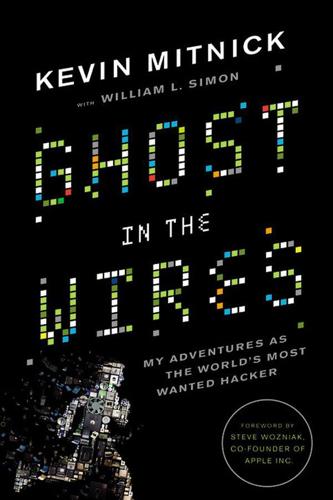
Ghost in the Wires: My Adventures as the World's Most Wanted Hacker
by
Kevin Mitnick
Published 14 Aug 2011
Me in my pre-hacking days, around age nine, when my hobby was performing magic tricks (Shelly Jaffe) Me at age twenty-one, with my mother in Stockton, California, 1984 With bride Bonnie Vitello at our wedding reception, June 1987 My hacking partner Lewis De Payne, around the time he and I first met Justin Petersen, aka Eric Heinz, 1992 (Virgil Kasperavicius) Justin Petersen aka Eric Heinz while working as an FBI informant trying to gather evidence against me, 1992 (Count Zero aka John Lester) The Soundex, or driver’s license image, that I obtained of Eric Heinz while he was tailing me The Kinko’s location in Studio City, California, that the DMV investigators chased me from on Christmas Eve, 1992 The cash register building housing the Denver law firm where I worked; in the foreground is the apartment building where I lived (Nick Arnott) In Denver while on the run, April 1993, age twenty-nine The apartment in Seattle where I was raided by the Secret Service and Seattle police, 1994 (Shellee Hale) Mug shot on the day of capture, February 15, 1995, Raleigh, North Carolina My prison ID card from Lompoc FCI, subject of international press after eBay yanked the item for violating “community standards,” vastly raising interest—and raising the value to $4,000 Demonstration by my supporters outside the Miramax offices in 1998 protesting the depiction of me in their feature film Takedown (Emmanuel Goldstein, 2600 magazine) Alex Kasperavicius posting a “Free Kevin” sticker at the Mobil gas station across the street from the Metropolitan Detention Center on my thirty-fifth birthday, August 6, 1998 (Emmanuel Goldstein, 2600 magazine) Holding up a bumper sticker from inside the Metropolitan Detention Center’s inmate law library, in Los Angeles, to a crowd of “Free Kevin” supporters outside, on my thirty-fifth birthday (Emmanuel Goldstein, 2600 magazine) In Lompoc Federal Correctional Institution visiting room, 1999, age thirty-six The day I was released from Lompoc Federal Correctional Institution, January 21, 2000, age thirty-six (Emmanuel Goldstein, 2600 magazine) Gift wrapping on the PowerBook G4 Steve Wozniak gave me in front of television cameras to celebrate the end of my supervised release, January 2003 (Alan Luckow) Apple cofounder Steve Wozniak, me, and Emmanuel Goldstein (founder of 2600 magazine) on the television show The Screen Savers, celebrating the end of my supervised release, making me a completely free man: January 20, 2003, age thirty-nine (Courtesy of G4 TV) Boys will be boys: me before cyberspace (Author’s personal collection) CONTENTS Front Cover Image Welcome Dedication Foreword by Steve Wozniak Prologue PART ONE: The Making of a Hacker 1 Rough Start 2 Just Visiting 3 Original Sin 4 Escape Artist 5 All Your Phone Lines Belong to Me 6 Will Hack for Love 7 Hitched in Haste 8 Lex Luthor 9 The Kevin Mitnick Discount Plan 10 Mystery Hacker PART TWO: Eric 11 Foul Play 12 You Can Never Hide 13 The Wiretapper 14 You Tap Me, I Tap You 15 “How the Fuck Did You Get That?”
…
A live cable TV show called The Screen Savers, with Leo Laporte and Patrick Norton, asked to televise my first interaction with the Internet. On the show with me were Eric Corley, who had headed up the “Free Kevin” movement and repeatedly proved himself to be my staunchest supporter, and Steve Wozniak, cofounder of Apple, who had become one of my closest friends. They both came on to “help” me navigate online after so many years away. As a surprise, the Woz presented me with a brand-new Apple PowerBook G4 wrapped in paper covered with a funny cartoon of a guy trying to reach a computer with a stick through the bars of his jail cell. In many ways, getting that laptop from the father of the personal computer was the moment I knew my life was finally starting to turn around.
…
He has lived a life as exciting and gripping as the best caper movies. Now you’ll be able to share all these stories that I have heard one by one, now and then through the years. In a way, I envy the experience of the journey you’re about to start, as you absorb the incredible, almost unbelievable tale of Kevin Mitnick’s life and exploits. —Steve Wozniak, cofounder, Apple, Inc. PROLOGUE Physical entry”: slipping into a building of your target company. It’s something I never like to do. Way too risky. Just writing about it makes me practically break out in a cold sweat. But there I was, lurking in the dark parking lot of a billion-dollar company on a warm evening in spring, watching for my opportunity.
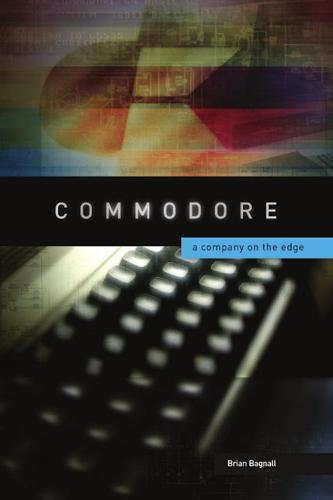
Commodore: A Company on the Edge
by
Brian Bagnall
Published 13 Sep 2005
Without an R/F modulator, the Apple II was too complicated for inexperienced users. “The PET and the TRS-80 both came with their own monitors, so they were a more appropriate solution for most people than the Apple II was,” says Yannes. The original design by Steve Wozniak also had several flaws. “Right after the Apple II came out, Electronic Engineering Times wrote a story about the three major design flaws that Woz made on the Apple II,” says Peddle. “He didn’t understand the ways the [6502] chipset worked and some other electronics stuff.” In response to these problems, Apple hired an engineer to redesign Wozniak’s motherboard.
…
After a tour of duty in Vietnam and a business degree, Tomczyk travelled to Silicon Valley in 1979. “I used to hang out at Apple almost daily. I would hang out with Steve Wozniak and Andy Hertzfeld and some of the people developing the Apple computers because I was planning to go into the industry and I wanted to learn.” Although he was not an Apple employee, he walked the halls freely. “I was kind of like a groupie at Apple. They let me come and go as I wanted. I could walk around even without an ID tag, which was forbidden at Apple. People used to ask me, ‘Where’s your ID tag? Go get your visitor badge!’ And I used to just wave them off.”
…
Gradually, Commodore was losing Peddle’s loyalty. At the same time, Apple was desperately seeking a new head of engineering because of their dissatisfaction with Steve Wozniak. After the difficulty in motivating Wozniak to develop the disk drive, Apple management wanted more stability. “They suddenly realized that their entire company was dependant on this one petulant 26 year old,” explains Peddle. “Markkula, Jobs, and particularly Mike [Scott] said, ‘We’re not going to be in that situation again. We’re going to go hire technical people that are better than Woz.’” In August 1978, Apple came to Peddle in search of a head engineer.
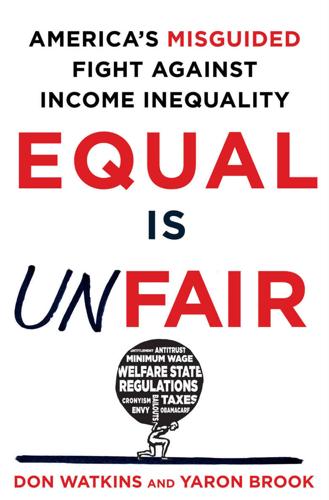
Equal Is Unfair: America's Misguided Fight Against Income Inequality
by
Don Watkins
and
Yaron Brook
Published 28 Mar 2016
Quoted in Sean Rossman, “Apple’s ‘The Woz’ Talks Jobs, Entrepreneurship,” Tallahassee Democrat, November 6, 2014, http://www.tallahassee.com/story/news/local/2014/11/05/apples-woz-talks-jobs-entrepreneurship/18561425/ (accessed April 13, 2015). 11. Quoted in Alec Hogg, “Apple’s ‘Other’ Steve—Wozniak on Jobs, Starting a Business, Changing the World, and Staying Hungry, Staying Foolish,” BizNews.com, February 17, 2014, http://www.biznews.com/video/2014/02/17/apples-other-steve-wozniak-on-jobs-starting-a-business-changing-the-world/ (accessed April 13, 2015). 12. Walter Isaacson, Steve Jobs (New York: Simon & Schuster, 2011), p. 295. 13. Ibid., pp. 308, 318. 14. Ibid., p. 317. 15. Ibid., p. 337. 16. Ibid., pp. 318–19. 17. Ibid., p. 329. 18. William J. Bernstein, The Birth of Plenty (New York: McGraw-Hill, 2004), p. 125. 19.
…
Spending on the Basics as a Share of Disposable Personal Income,” HumanProgress.org, http://humanprogress.org/static/us-spending-on-basics (accessed April 13, 2015). 5. Steve Wozniak with Gina Smith, iWoz: Computer Geek to Cult Icon (New York: Norton, 2006), pp. 12–13. 6. Ibid., p. 18. 7. Ibid., pp. 54–55. 8. Ibid., pp. 155–56. 9. “National Inventors Hall of Fame,” Ohio History Central, http://www.ohiohistorycentral.org/w/National_Inventors_Hall_of_Fame?rec=1727 (accessed August 31, 2015). 10. Quoted in Sean Rossman, “Apple’s ‘The Woz’ Talks Jobs, Entrepreneurship,” Tallahassee Democrat, November 6, 2014, http://www.tallahassee.com/story/news/local/2014/11/05/apples-woz-talks-jobs-entrepreneurship/18561425/ (accessed April 13, 2015). 11.
…
And it can be amazing for everyone, because it turns out that the way we improve our lives—ingenuity and effort—is not a fixed-sum game, where we battle over a static amount of wealth. We produce wealth, and there is no limit to how much wealth we can produce. Who Created the Modern World? In his autobiography, Apple cofounder Steve Wozniak, or Woz, as he’s usually called, describes how his dad, an engineer, would explain to the four-year-old Woz how electronics worked. “I remember sitting there and being so little, and thinking: ‘Wow, what a great, great world he’s living in,’” Woz recalls. “I mean, that’s all I thought: ‘Wow.’
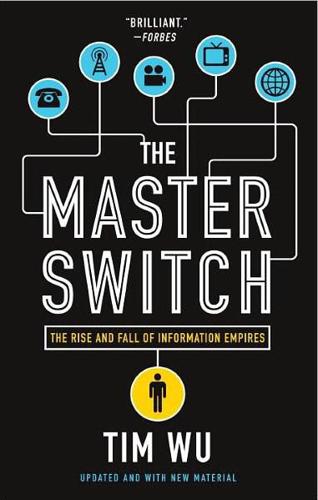
The Master Switch: The Rise and Fall of Information Empires
by
Tim Wu
Published 2 Nov 2010
It made it possible to write and sell one’s programs directly, creating what we now call the “software” industry. In 2006, I briefly met with Steve Wozniak on the campus of Columbia University. “There’s a question I’ve always wanted to ask you,” I said. “What happened with the Mac? You could open up the Apple II, and there were slots and so on, and anyone could write for it. The Mac was way more closed. What happened?” “Oh,” said Wozniak. “That was Steve. He wanted it that way. The Apple II was my machine, and the Mac was his.” Apple’s origins were pure Steve Wozniak, but as everyone knows, it was the other founder, Steve Jobs, whose ideas made Apple what it is today. Jobs maintained the early image that he and Wozniak created, but beginning with the Macintosh in the 1980s, and accelerating through the age of the iPod, iPhone, and iPad, he led Apple computers on a fundamentally different track.
…
Unlikely though it was, beginning in 2010, Apple, allied with the entertainment conglomerates, became the key firm in a broad challenge to the whole concept of the personal computer. When, in 1997, following another boardroom coup, Steve Jobs took back control of Apple, it was clear he had not changed or abandoned his basic ideas; to the contrary, he had intensified them, taking his whole ideology to, as it were, the next level. In doing so he repudiated, now decisively and forever, Steve Wozniak’s vision of the firm. The transformation would be symbolized by the moment in 2007 when Jobs renamed Apple Computers “Apple Inc.”—and at roughly the same time, as a personal flourish, refused to write a foreword for his old friend’s autobiography, iWoz.19 By the dawn of the decade, the cornerstone of Jobs’s strategy seeking perfect control over product and consumer had been laid; it took form as a triad of beautiful, perfect machines that have since won the allegiance of millions of users.
…
One particularly interesting history of Wozniak and Jobs’s initial meeting and development of what would eventually become Apple, as well as the reinvention of the company in recent years with the development of popular modern Apple technology, may be found in Michael Moritz, Return to the Little Kingdom: Steve Jobs, the Creation of Apple, and How It Changed the World (New York: Overlook, 2009). Other descriptions of the early history of Apple include Roy A. Allen, A History of the Personal Computer: The People and the Technology (London, Ontario: Allen Publishing, 2001), 36. 6. This quote, as well as much of the Wozniakcentric information in this chapter, is drawn from Steve Wozniak’s autobiography, iWoz—Computer Geek to Cult Icon: How I Invented the Personal Computer, Co-Founded Apple, and Had Fun Doing It (New York: W.
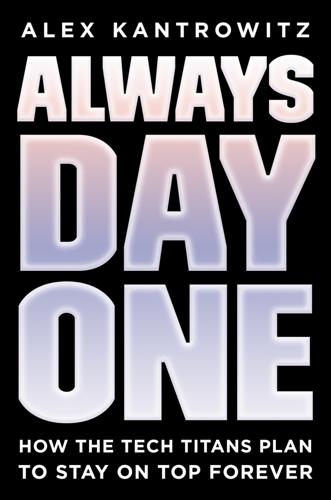
Always Day One: How the Tech Titans Plan to Stay on Top Forever
by
Alex Kantrowitz
Published 6 Apr 2020
“Letter from Tim Cook to Apple Investors.” Apple Newsroom, January 2, 2019. https://www.apple.com/newsroom/2019/01/letter-from-tim-cook-to-apple-investors/. revised its financial predictions: Thompson, Ben. “Apple’s Errors.” Stratechery by Ben Thompson, January 7, 2019. https://stratechery.com/2019/apples-errors/?utm_source=Memberful&utm_campaign=131ddd5a64-weekly_article_2019_01_07&utm_medium=email&utm_term=0_d4c7fece27-131ddd5a64-110945413. “I’m happy with my iPhone 8”: Balakrishnan, Anita, and Deirdre Bosa. “Apple Co-Founder Steve Wozniak: iPhone X Is the First iPhone I Won’t Buy on ‘Day One.’” CNBC. CNBC, October 23, 2017. https://www.cnbc.com/2017/10/23/apple-co-founder-steve-wozniak-not-upgrading-to-iphone-x-right-away.html.
…
CNBC, October 23, 2017. https://www.cnbc.com/2017/10/23/apple-co-founder-steve-wozniak-not-upgrading-to-iphone-x-right-away.html. Cook, in an interview with CNBC: “CNBC Exclusive: CNBC Transcript: Apple CEO Tim Cook Speaks with CNBC’s Jim Cramer Today.” CNBC. CNBC, January 8, 2019. https://www.cnbc.com/2019/01/08/exclusive-cnbc-transcript-apple-ceo-tim-cook-speaks-with-cnbcs-jim-cramer-today.html. Apple had Siri: Gross, Doug. “Apple Introduces Siri, Web Freaks Out.” CNN. Cable News Network, October 4, 2011. https://www.cnn.com/2011/10/04/tech/mobile/siri-iphone-4s-skynet/index.html. “Since October 2011, when Steve died”: Note that Jobs began the Siri project.
…
A struggling Chinese economy and the brewing trade war between China and the US played a part in the lower iPhone sales, but another factor loomed larger: Smartphones, after years of big advances, had become good enough that owning a top-of-the-line model was no longer important. People could wait longer to upgrade, and that put a dent in Apple sales. In November 2018, Apple had said it would no longer report unit sales of the iPhone, an indication of what was to come. Apple cofounder Steve Wozniak himself offered a convincing argument that the iPhone was reaching a point where upgrading wasn’t all that necessary. “I’m happy with my iPhone 8, which is the same as the iPhone 7, which is the same as the iPhone 6,” he said in a 2017 interview, adding that he would not be upgrading to the iPhone X.

Visual Thinking: The Hidden Gifts of People Who Think in Pictures, Patterns, and Abstractions
by
Temple Grandin, Ph.d.
Published 11 Oct 2022
Grandfather liked to say, somewhat judgmentally, that original ideas did not come from company men, because company men all think in a similar way. They can develop, refine, and market an idea but cannot originate it. Of the five major tech companies, four started as a garage operation or in a college dorm room, with two brilliant minds tinkering and dreaming together: Steve Jobs and Steve Wozniak created Apple, Bill Gates and Paul Allen created Microsoft, Sergey Brin and Larry Page created Google, and Mark Zuckerberg and Eduardo Saverin created Facebook. In the late 1930s, the Sperry Corporation hired two brothers, Russell and Sigurd Varian, who exemplify the concept of complementary minds.
…
The beauty of calligraphy had a big influence on Jobs’s design philosophy for the early Apple computers. They were both beautiful and intuitive to use. “The main thing in our design is that we have to make things intuitively obvious,” he told the graduates. What Steve Jobs accomplished was taking computers from gadgets that only computer hobbyists could use to a consumer product anyone could use. To make a beautiful computer functional, there needs to be a techie who can design the electronic circuits that will make it work. Steve Wozniak was the perfect partner for Jobs. Walter Isaacson writes, “It may have been the most significant meeting in a Silicon Valley garage since Hewlett went into Packard’s thirty-two years earlier.”
…
In some ways, this is object visualization at its most elegant—caring about the parts you can see with only your mind’s eye. When Jobs was sixteen, he met Steve Wozniak. The teenagers heard about a guy who had made a pirated phone off a flaw in AT&T’s network, using a device called a “blue box.” Once they understood that they could create something capable of tapping into a huge infrastructure, Jobs and Wozniak built their own blue box in three weeks. In a 1995 interview with documentary filmmaker Robert X. Cringely, Jobs said, “I don’t think there would have ever been an Apple Computer if there had not been blue boxing.” Like Gates, Jobs dropped out of college. The course he took at Reed College that impacted him the most was calligraphy.
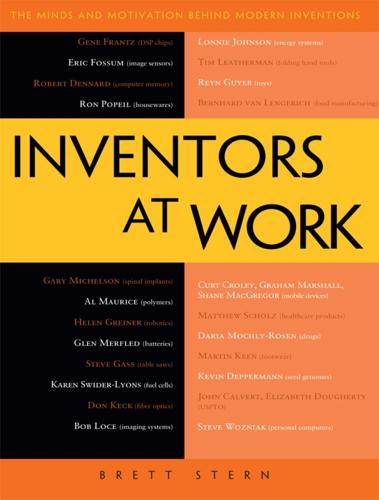
Inventors at Work: The Minds and Motivation Behind Modern Inventions
by
Brett Stern
Published 14 Oct 2012
Calvert: These are the things that an inventor really needs to learn and work out before taking that big step of sending a patent application to the USPTO—hopefully as the prelude to starting up their own business. 1 www.uspto.gov/inventors/independent/eye/201206/index.jsp 2 www.uiausa.org CHAPTER 23 Steve Wozniak Co-Founder Apple Computer A Silicon Valley icon and philanthropist for more than thirty years, Steve Wozniak helped shape the computing industry with his design of Apple’s first line of products, the Apple I and II, and influenced the popular Macintosh. In 1976, Wozniak and Steve Jobs founded Apple Computer Inc. with Wozniak’s Apple I personal computer. The following year he introduced his Apple II personal computer, featuring a central processing unit, a keyboard, color graphics, and a floppy disk drive. The Apple II was integral to launching the personal computer industry.
…
His bestselling autobiography—iWoz: Computer Geek to Cult Icon: How I Invented the Personal Computer, Co-Founded Apple, and Had Fun Doing It—was published in 2006 (W. W. Norton). His television appearances include Kathy Griffin: My Life on the D-List, Dancing with the Stars, and The Big Bang Theory. Brett Stern: You talk about having an engineering side and a human side. Any thoughts on what the difference is, and how you define those sides? Steve Wozniak: I talk about the difference between the engineering side and the human side in two different senses. One is the general sense of developing technology products. If you look at Apple history, you’ll find out that the most important thing that made Apple great—and made Steve Jobs such a great person—was our focus on understanding the users more than understanding the technology.
…
Curt Croley, Shane MacGregor, Graham Marshall, Mobile Devices Chapter 18. Matthew Scholz, Healthcare Products Chapter 19. Daria Mochly-Rosen, Drugs Chapter 20. Martin Keen, Footwear Chapter 21. Kevin Deppermann, Seed Genomes Chapter 22. John Calvert, Elizabeth Dougherty, USPTO Chapter 23. Steve Wozniak, Personal Computers Index About the Author Brett Stern is an industrial designer and inventor living in Portland, Oregon. He holds eight utility patents covering surgical instruments, medical implants, and robotic garmentmanufacturing systems. He holds trademarks in 34 countries on a line of snack foods that he created.

The Everything Blueprint: The Microchip Design That Changed the World
by
James Ashton
Published 11 May 2023
He drafted in his wife Shirley to greet engineers and take their money as they delved their hands into a glass jar of chips. One of the people waiting in line was a young computer designer called Steve Wozniak, whose Apple I machine was released the following year featuring the 6502. The Apple Seed When Steve Jobs saw what his best friend had come up with, he was convinced he was on to something. Jobs and Steve Wozniak had met in 1971, united by pranks and electronics even though they were four school years apart. The pair were polar opposites: Jobs, charismatic and brattish, occasionally dabbling in Eastern religions; Wozniak, the shy son of a rocket scientist at the aerospace manufacturer Lockheed.
…
‘He didn’t learn things very quickly,’ Jobs said of Sculley with his typical bluntness, who he decried for not embracing Apple’s products. ‘And the people he wanted to promote were usually bozos.’36 After Jobs’ resignation in September 1985, Sculley steered a recovery in Apple’s sales. Looking further out, in 1986 the company created an Advanced Technology Group (ATG) to hunt for and incubate cutting-edge ideas. Jobs the visionary was gone, as was a disillusioned Steve Wozniak. ATG looked and felt a lot like ‘AppleLabs’, the mooted development division Jobs could have run if he had opted to stay on, having been freed from managerial responsibility.
…
Arm was contractually obliged to produce a new floating-point accelerator (FPA) chip for Acorn that would improve the performance of high-end workstations, a market segment it was keen to pursue. Apple just wanted the Arm600 chip for what became the Newton and sent Allen Baum, an engineer who incidentally went along to the first Homebrew Computer Club with Steve Wozniak, to Cambridge to keep communication lines open. Neither product generated income for Arm, although some consulting work followed, and there was negligible demand externally for either of these specialist chips. Saxby hadn’t for a second believed the forecasts supplied by Acorn and Apple for how many chips they were going to buy and what that meant for his income.
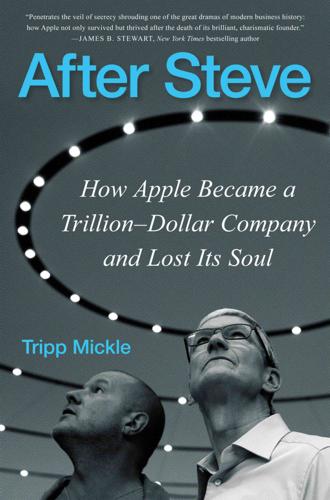
After Steve: How Apple Became a Trillion-Dollar Company and Lost Its Soul
by
Tripp Mickle
Published 2 May 2022
He led Abloh across: Nick Compton, “In the Loop: Jony Ive on Apple’s New HQ and the Disappearing iPhone,” Wallpaper, December 2017, https://www.wallpaper.com/design/jony-ive-apple-park. It looked like a supersize MacBook Air: Tripp Mickle and Eliot Brown, “Apple’s New Headquarters Is a Sign of Tech’s Boom, Bravado,” Wall Street Journal, May 14, 2017, https://www.wsj.com/articles/apples-new-headquarters-is-a-sign-of-techs-boom-bravado-1494759606. As he stopped: Interview with Steve Wozniak, September 14, 2017. Ive settled into: Apple, “Apple Special Event, September 2017” (video), Apple Events, September 14, 2017, https://podcasts.apple.com/us/podcast/apple-special-event-september-2017/id275834665?
…
After fifteen years of reporting directly to the CEO, Ive’s old design team—the group of aesthetes once thought of as gods inside Apple—would report to Apple’s chief operating officer, Jeff Williams, a mechanical engineer with an MBA. Epilogue The alchemy of Apple has long depended on visionary pairs. It was birthed by Steve Wozniak and Steve Jobs, revived by Jobs and Jony Ive, and sustained by Ive and Tim Cook. In the months and years after Jobs’s death, Silicon Valley anticipated that Apple’s business would falter. Wall Street fretted about the road ahead. And loyal customers were concerned about the future of a beloved product innovator.
…
Working from his parents’ ranch home in Los Altos, California, he and his friend Steve Wozniak, a self-taught engineer, developed one of the first computers for the masses, a gray box with a keyboard and power supply that could display graphics. In 1977, their company became formally incorporated as Apple Computer Inc., a name inspired by Jobs’s favorite band, the Beatles, and their record label, Apple Records. Jobs’s brazen salesmanship of their computers was dismissed by some as all pitch, no substance, but the Apple II computer became one of the first commercially successful PCs, earning the company $117 million in annual sales before it went public in 1980.
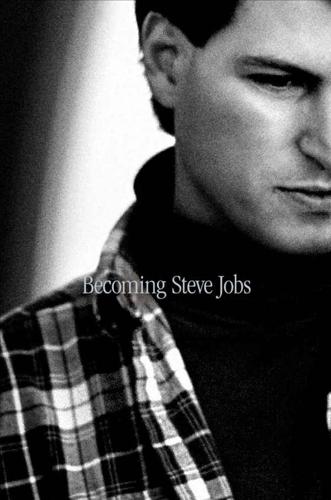
Becoming Steve Jobs: The Evolution of a Reckless Upstart Into a Visionary Leader
by
Brent Schlender
and
Rick Tetzeli
Published 24 Mar 2015
Other Newspapers and Magazines BusinessWeek/BloombergBusinessweek Esquire Fast Company Fortune New York Times The New Yorker Newsweek San Francisco Chronicle San Jose Mercury News Time Wall Street Journal Wired Websites allaboutstevejobs.com apple.com apple-history.com Computer History Museum: www.computerhistory.org/atchm/steve-jobs/ cultofmac.com donmelton.com/2014/04/10/memories-of-steve/ everystevejobsvideo.com Fastcodesign.com, a Fast Company website that a focuses on design news, May 22, 2014, http://www.fastcodesign.com/3030923/4-myths-about-apple-design-from-an-ex-apple-designer Forbes billionaires list: “Two Decades of Wealth,” www.forbes.com/static_html/rich400/2002/timemapFLA400.html foundersatwork.com; interview with Stephen Wozniak, www.foundersatwork.com/steve-wozniak.html Gartner Group: http://www.gartner.com/newsroom/id/2301715 Golden Gate Weather: http://ggweather.com/sjc/daily_records.html#September National Cancer Institute: http://www.cancer.gov/cancertopics/pdq/treatment/isletcell/HealthProfessional National Historic Trust for Historic Preservation: preservationnation.org (Jackling Mansion details) National Mining Hall of Fame, Leadville, Co.: http://www.mininghalloffame.org/inductee/jackling news.cnet.com paloalto.patch.com/groups/opinion/p/my-neighbor-steve-jobs quora.com; http://www.quora.com/Steve-Jobs/What-are-the-best-stories-about-people-randomly-meeting-Steve-Jobs/answer/Tim-Smith-18.
…
Long before Internet mania started churning out wunderkinds of the week, Jobs was technology’s original superstar, the real deal with an astounding, substantial record. The circuit boards he and Steve Wozniak had assembled in a garage in Los Altos had spawned a billion-dollar company. The personal computer seemed to have unlimited potential, and as the cofounder of Apple Computer, Steve Jobs had been the face of all those possibilities. But then, in September of 1985, he had resigned under pressure, shortly after telling the company’s board of directors that he was courting some key Apple employees to join him in a new venture to build computer “workstations.” The fascinated media had thoroughly dissected his departure, with both Fortune and Newsweek putting the ignominious saga on their covers.
…
Rock loved order, he loved processes, he believed that tech companies grew in certain ways according to certain rules, and he subscribed to these beliefs because he’d seen them work before, most notably at Intel, the great Santa Clara chipmaker that he had backed early on. Rock was perhaps the most notable tech investor of his time, but he in fact had been reluctant to back Apple at first, largely because he’d found Steve and his partner Steve Wozniak unpalatable. He didn’t see Apple the way Jobs saw it—as an extraordinary company that would humanize computing and do so with a defiantly unhierarchical organization. Rock simply viewed it as another investment. Steve found board meetings with Rock enervating, not invigorating; he had looked forward to a long, fast drive to Marin with the top down to get rid of the stale stench of seemingly endless discussion.

Whole Earth: The Many Lives of Stewart Brand
by
John Markoff
Published 22 Mar 2022
The deal proved to be a disappointment when the market for how-to computing manuals was quickly oversubscribed, but its magnitude alerted an industry that remained notoriously conservative about using new technologies that there might be a market for books about personal computing. Brockman had come to San Francisco in the spring of 1983 to attend the West Coast Computer Faire, an annual computer hobbyist exhibition. (It had been at the first Faire, held in 1977, that a twenty-two-year-old Steve Jobs and his twenty-six-year-old partner, Steve Wozniak, had introduced the Apple II.) Brockman’s literary agency was focused on scientists and technology writers. Now he embarked on a strategy of trying to find and represent star programmers, selling their work to the new software publishing industry. He had recently added an image of a floppy disk to the logo on his company stationery.
…
When Brand had read the quote in a generally flattering Washington Post profile,[25] the words had stung. The Hackers Conference would become an annual event, drawing together a digital subculture that was passionate about the machines and programs they designed. The first gathering was marked by several heated debates that would continue long after everyone had gone home. While Apple cofounder Steve Wozniak argued that the term hacker represented the child in everyone, a well-known programmer named Brian Harvey warned there was a dark side as well, and the general public would soon come to see the word as synonymous with computer outlaws who broke into computers for sport and profit. Another important debate took place over the economic value of software.
…
To appease Phelan’s mother, a Catholic prayer was read during the ceremony. Kevin Kelly had the original idea of an event that would allow the characters in Steven Levy’s Hackers to meet one another. Brand and Phelan helped organize the event, which was held in the fall of 1984. In response to a remark by Apple cofounder Steve Wozniak, Brand said, “Information wants to be expensive . . . and information wants to be free.” Virtually everyone ignored the first half of his aphorism, and “Information wants to be free” would become the rallying cry of the dot-com era. Although Brand had first conceived of the idea of an online community even before starting the Whole Earth Catalog, he founded the Whole Earth ’Lectronic Link in 1985.
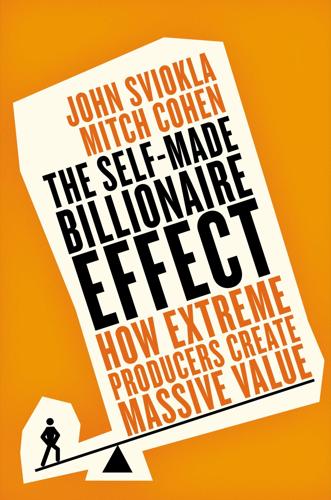
The Self-Made Billionaire Effect: How Extreme Producers Create Massive Value
by
John Sviokla
and
Mitch Cohen
Published 30 Dec 2014
He has since founded Vatera Healthcare Partners, a health venture capital firm, and Arisaph Pharmaceuticals, a biotech discovery firm. Steve Jobs 1955–2011, United States Apple Computer, Pixar Jobs was a game designer at Atari when he, Steve Wozniak, and Ronald Wayne launched Apple Computer in 1976 to market a personal computer Wozniak had invented. The first Apple PCs proved a huge success, but later products floundered. Infighting led to Jobs’s 1985 ouster. He founded NeXT Computer and bought the Pixar animation studio from George Lucas. Pixar’s 1995 IPO made Jobs a billionaire. Two years later, Apple bought NeXT and reinstated Jobs as CEO, ushering in an era of tremendous innovation and growth driven by the iPod, iPhone, and iPad.
…
Compare Boone Pickens’s resiliency to the hesitancy that affected Ron Wayne, an original partner in Apple Computer. Wayne had started a slot machine business that failed, swallowing $50,000 of savings. After that failure he went to work at Atari, where he met Steve Jobs. When Jobs later asked Wayne to join Apple Computer as a third partner to balance and adjudicate between Jobs and the engineering wunderkind Steve Wozniak, Wayne was initially enthusiastic. But then it became clear that they were going to structure the nascent Apple Computer as a partnership. Wayne, who was significantly older than his partners, was worried about the personal liability he would incur if all the borrowing and spending Jobs was doing to manufacture the Apple I at volume did not pan out.
…
THE PREVALENCE OF PRODUCER-PERFORMER PAIRS More than half of the billionaires in our study sample started their businesses as part of a Producer-Performer team.2 The number jumps to 60 percent when we remove financial industry billionaires from the sample.3 Some famous examples include Steve Jobs (Producer) and Steve Wozniak (engineering Performer) of Apple; Nike’s Bill Bowerman (Producer) and Phil Knight (Performer); and Amancio Ortega (Producer) and his first wife, Rosalia Mera (Performer), who together founded the apparel giant Zara. The prominence of pairs among the billionaires we observed cuts against a lot of what we always thought we knew about how people feel productive and successful in their professional lives.
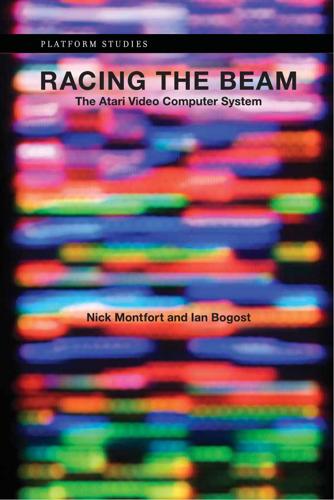
Racing the Beam: The Atari Video Computer System
by
Nick Montfort
and
Ian Bogost
Published 9 Jan 2009
At the time, the chip was the cheapest CPU on the market by far, and it was also faster than competing chips like the Motorola 6800 and the Intel 8080.19 The 6502’s low cost and high performance made it an immensely popular processor for more than a decade. The chip drove the Apple I and Apple ][, the Commodore PET and Commodore 64, the Atari 400 and 800 home computers, and the Nintendo Entertainment System (NES). It is still used today in some embedded systems. This chip seemed attractive, as cost was the primary consideration in the design of the Atari VCS. The system needed to be much more affordable than a personal computer, which was still a very rare and expensive commodity. When Apple Computer released the popular Apple ][ in 1977, it cost $1,298, even after Steve Wozniak’s many cost- and componentsaving engineering tricks.
…
Character sets and video memory for a grid of rows and lines of text were reserved in a special space in ROM chips on the motherboard. Such was the case for the Tandy TRS-80 and Commodore PET, both also released in 1977. The Apple ][‘s graphics and sound system was implemented in a similar but more sophisticated way, thanks in part to Steve Wozniak’s experience designing an Atari arcade game. As Wozniak explained: A lot of features of the Apple ][ went in because I had designed Breakout for Atari. I had designed it in hardware. I wanted to write it in software now. So that was the reason that color was added in first—so that games could be programmed.
…
Engineered by Al Alcorn. 1972. Atari. Gran Trak 10. Arcade. 1974. Atari. Touch Me. Arcade. 1974. Atari. Anti-Aircraft. Arcade. 1975. Atari. Home Pong. Engineered by Al Alcorn, Bob Brown, and Harold Lee. 1975. Atari. Breakout. Arcade. Designed by Nolan Bushnell and Steve Bristow. Engineered by Gary Waters and Steve Wozniak. 1976. Atari. Night Driver. Arcade. Programmed by Dave Shepperd. Engineered by Ron Milner, Steve Mayer, and Terry Fowler. 1976. Atari. Air-Sea Battle. Atari VCS. Programmed by Larry Kaplan. 1977. Atari. Basic Math. Atari VCS. Programmed by Gary Palmer. 1977. Atari. Blackjack. Atari VCS. Programmed by Bob Whitehead. 1977.
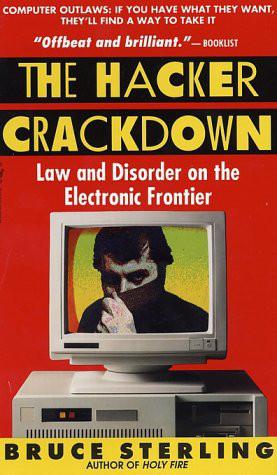
The Hacker Crackdown
by
Bruce Sterling
Published 15 Mar 1992
Before computers and their phone-line modems entered American homes in gigantic numbers, phone phreaks had their own special telecommunications hardware gadget, the famous "blue box." This fraud device (now rendered increasingly useless by the digital evolution of the phone system) could trick switching systems into granting free access to long-distance lines. It did this by mimicking the system's own signal, a tone of 2600 hertz. Steven Jobs and Steve Wozniak, the founders of Apple Computer, Inc., once dabbled in selling blue-boxes in college dorms in California. For many, in the early days of phreaking, blue-boxing was scarcely perceived as "theft," but rather as a fun (if sneaky) way to use excess phone capacity harmlessly. After all, the long-distance lines were JUST SITTING THERE....
…
They have funds to burn on any sophisticated tool and toy that might happen to catch their fancy. And their fancy is quite extensive. The Deadhead community boasts any number of recording engineers, lighting experts, rock video mavens, electronic technicians of all descriptions. And the drift goes both ways. Steve Wozniak, Apple's co-founder, used to throw rock festivals. Silicon Valley rocks out. These are the 1990s, not the 1960s. Today, for a surprising number of people all over America, the supposed dividing line between Bohemian and technician simply no longer exists. People of this sort may have a set of windchimes and a dog with a knotted kerchief 'round its neck, but they're also quite likely to own a multimegabyte Macintosh running MIDI synthesizer software and trippy fractal simulations.
…
Furthermore, proclaimed the manifesto, the foundation would "fund, conduct, and support legal efforts to demonstrate that the Secret Service has exercised prior restraint on publications, limited free speech, conducted improper seizure of equipment and data, used undue force, and generally conducted itself in a fashion which is arbitrary, oppressive, and unconstitutional." "Crime and Puzzlement" was distributed far and wide through computer networking channels, and also printed in the Whole Earth Review. The sudden declaration of a coherent, politicized counter-strike from the ranks of hackerdom electrified the community. Steve Wozniak (perhaps a bit stung by the NuPrometheus scandal) swiftly offered to match any funds Kapor offered the Foundation. John Gilmore, one of the pioneers of Sun Microsystems, immediately offered his own extensive financial and personal support. Gilmore, an ardent libertarian, was to prove an eloquent advocate of electronic privacy issues, especially freedom from governmental and corporate computer-assisted surveillance of private citizens.

Thinking Machines: The Inside Story of Artificial Intelligence and Our Race to Build the Future
by
Luke Dormehl
Published 10 Aug 2016
He insisted on giving it spoken responses – which the original Siri app had not had – and got rid of the ability to type requests as well as just ask them, so as not to complicate the experience of using it. Apple also removed the bad language, and gave Siri the ability to pull information from Apple’s native iOS apps. Early Siri reviews were very positive when the iPhone 4s launched in 2011. Over time, however, cracks began to show. Embarrassingly, Apple co-founder Steve Wozniak – who left Apple decades earlier – was one vocal critic of the service, noting how Apple’s own-brand version seemed less intelligent than the original third-party Siri app. What had won him over about the first Siri, he said, was its ability to correctly answer the questions, ‘What are the five largest lakes in California?’
…
CHAPTER 2 Another Way to Build AI IT IS 2014 and, in the Google-owned London offices of an AI company called DeepMind, a computer whiles away the hours by playing an old Atari 2600 video game called Breakout. The game was designed in the early 1970s by two young men named Steve Jobs and Steve Wozniak, who later went on to start a company called Apple. Breakout is essentially a variation on the bat-and-ball tennis game Pong, except that instead of hitting the square ‘ball’ across the screen to another player, you fire it at a wall of bricks which smash on impact. The goal is to destroy all of the bricks. As we saw in the previous chapter, there is nothing at all unusual about AI playing games.
…
Epub ISBN: 9780753551653 Version 1.0 3 5 7 9 10 8 6 4 2 WH Allen, an imprint of Ebury Publishing, 20 Vauxhall Bridge Road, London SW1V 2SA WH Allen is part of the Penguin Random House group of companies whose addresses can be found at global.penguinrandomhouse.com Copyright © Luke Dormehl 2016 Cover design: Two Associates Luke Dormehl has asserted his right to be identified as the author of this Work in accordance with the Copyright, Designs and Patents Act 1988 First published by WH Allen in 2016 www.eburypublishing.co.uk A CIP catalogue record for this book is available from the British Library ISBN 9780753556740 Chapter 1 fn1 The answer, in case you want to prove yourself as smart as an AI, is 162. Chapter 3 fn1 Coffee, as it turns out, is a good starting point for a discussion about smart devices. Apple’s co-founder Steve Wozniak once said that he could never foresee a robot with enough general intelligence to walk into a strange house and make a cup of coffee. Exploring this hypothesis, some researchers now suggest the ‘coffee test’ as a potential measure for AGI, Artificial General Intelligence. I will discuss AGI later on in this book.
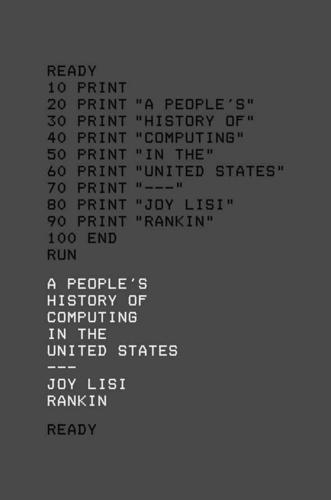
A People’s History of Computing in the United States
by
Joy Lisi Rankin
Increasingly, people would have to purchase computers and software (now, devices and apps) for their personal and social computing. BASIC also figures prominently in the history of Apple. Steve Wozniak produced his own “Integer BASIC” for his homemade computer, built around MOS Technology’s 6502 microprocessor chip; he shared Integer BASIC , and he even published programs in Dr. Dobb’s Journal.29 When Wozniak’s high school chum Steve Jobs saw the computer, he proposed they team up to assemble and sell them. They named the computer Apple, and soon began working on a new version, the Apple II. Although Apple declared its philosophy 238 A People’s History of Computing in the United States was “to provide software for our machines f ree or at minimal cost,” Apple sought (aggressively) to sell its hardware.30 W hether they w ere called home computers, hobby computers, microcomputers, or personal computers, they were consumer products, purveyed by Steve Jobs.
…
The BASIC programs shared freely around the Dartmouth network and on the pages of the People’s Computer Company newsletter fueled the imaginations of many—including Steve Wozniak and Bill Gates. Gates first learned to program in BASIC , the language on which he built his Microsoft empire. Wozniak adapted Tiny BASIC into Integer BASIC to program his homemade computer, the computer that attracted the partnership of Steve Jobs and launched Apple. And the Minnesota software library, mostly BASIC programs including The Oregon Trail, proved to be the ideal complement for the hardware of Apple Computers. During the 1980s, the combination of Apple hardware and MECC software 10 A People’s History of Computing in the United States cemented the transformation from computing citizens to computing consumers.
…
International Business Machines, much more familiar as IBM, dominated the era when computers were the remote and room-size machines of the military-industrial complex. Then, around 1975, along came the California hobbyists who created personal computers and liberated us from the monolithic mainframes. They were young men in the greater San Francisco Bay Area, and they tinkered in their garages. They started companies: Steve Jobs and Steve Wozniak established Apple; Bill Gates and Paul Allen developed Microsoft. Then, in the 1990s, along came the Internet to connect all of t hose personal computers, and the people using them. Another round of eccentric nerds (still all young white men)—Jeff Bezos, Sergey Brin, Larry Page, and Mark Zuckerberg among them—gave us Amazon, Google, Facebook, and the fiefdoms of Silicon Valley.

The Code: Silicon Valley and the Remaking of America
by
Margaret O'Mara
Published 8 Jul 2019
RISE OF THE STEVES This of course became the secret of Apple Computer Co., the most legendary Homebrew product of them all. The company wasn’t all that different from the dozens that sprouted from computer-club soil in 1975 and 1976. But it pulled away from the pack because, very early on, it bridged the hacker world of “The O” and storefront computer labs with the Silicon Valley ecosystem of the Wagon Wheel and Sand Hill Road. While baking countercultural credentials into its corporate positioning from the start, Apple was the first personal-computer company to join the silicon capitalists. At the beginning, Steve Wozniak was just another hacker in Gordon French’s damp garage, standing out a bit because he was a few shades more tech-obsessed.
…
In a replay of his audacious call to Bill Hewlett a decade earlier, Jobs dialed up the Intel switchboard, where someone connected him with the man who’d crafted that marketing campaign, Regis McKenna Himself. McKenna was unfazed by Apple’s garage setting and the co-founders’ scraggly looks. He’d worked with “lots of strange people” in the Valley already, and he was familiar with the Homebrew scene and the intriguing little enterprises bubbling up from it. The first meeting, however, was a bust. The Steves wanted help placing a Woz-authored article on the Apple II in Byte. It turned out that Steve Wozniak was much better at building elegant motherboards than crafting accessible prose; the piece was a rambling mess better suited for the hobbyist crowd back over at Dr.
…
The boldfaced headline blazed out at readers opening their copies of The Wall Street Journal the morning of August 13, 1980, sitting atop a full-page advertisement for Apple Computer. Below came a page crowded with print, accompanied by a portrait of its credited author, a professorially bearded Steven P. Jobs, “talk[ing] about the computer, and its effect on society.” The copy repeatedly referred to Jobs as “the inventor” of the personal computer, an artful fabrication that glossed over the fact that the elegant innards of the Apple came from the inventive mind of Jobs’s media-shy co-founder, Steve Wozniak. No insider technical specs here. The ad used simple, evocative language. “Think of the large computers (the mainframes and the minis) as the passenger trains and the Apple personal computer as a Volkswagen,” Jobs wrote.
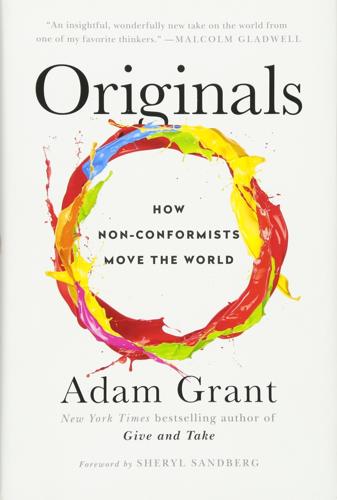
Originals: How Non-Conformists Move the World
by
Adam Grant
Published 2 Feb 2016
Even then, Copernicus stalled for four more years. His magnum opus only saw the light of day after a young mathematics professor took matters into his own hands and submitted it for publication. Almost half a millennium later, when an angel investor offered $250,000 to Steve Jobs and Steve Wozniak to bankroll Apple in 1977, it came with an ultimatum: Wozniak would have to leave Hewlett-Packard. He refused. “I still intended to be at that company forever,” Wozniak reflects. “My psychological block was really that I didn’t want to start a company. Because I was just afraid,” he admits. Wozniak changed his mind only after being encouraged by Jobs, multiple friends, and his own parents.
…
Like the Warby Parker crew, the entrepreneurs whose companies topped Fast Company’s recent most innovative lists typically stayed in their day jobs even after they launched. Former track star Phil Knight started selling running shoes out of the trunk of his car in 1964, yet kept working as an accountant until 1969. After inventing the original Apple I computer, Steve Wozniak started the company with Steve Jobs in 1976 but continued working full time in his engineering job at Hewlett-Packard until 1977. And although Google founders Larry Page and Sergey Brin figured out how to dramatically improve internet searches in 1996, they didn’t go on leave from their graduate studies at Stanford until 1998.
…
Phil Knight: Bill Katovsky and Peter Larson, Tread Lightly: Form, Footwear, and the Quest for Injury-Free Running (New York: Skyhorse Publishing, 2012); David C. Thomas, Readings and Cases in International Management: A Cross-Cultural Perspective (Thousand Oaks, CA: Sage Publications, 2003). Steve Wozniak: Jessica Livingston, Founders at Work: Stories of Startups’ Early Days (Berkeley, CA: Apress, 2007). “We almost didn’t start Google”: Personal conversations with Larry Page on September 15 and 16, 2014, and “Larry Page’s University of Michigan Commencement Address,” May 2, 2009, http://googlepress.blogspot.com/2009/05/larry-pages-university-of-michigan.html; Google Investor Relations, https://investor.google.com/financial/tables.html.
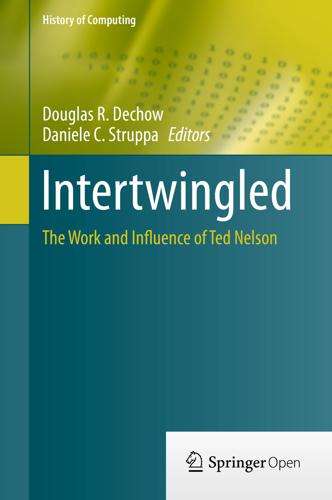
Intertwingled: The Work and Influence of Ted Nelson (History of Computing)
by
Douglas R. Dechow
Published 2 Jul 2015
Wozniak S (2014) In “Intertwingled: afternoon session #2.” Chapman University, Orange, California. Video timecode: 58:14. http://ibc.chapman.edu/Mediasite/Play/52694e57c4b546f0ba8814ec5d9223ae1d Footnotes 1For example, as Steve Wozniak said at Intertwingled, “At our computer club, the bible was Computer Lib” — referring to the Homebrew Computer Club, from which Apple Computer and other major elements of the turn to personal computers emerged [18]. 2“Computational thinking is the process of recognising aspects of computation in the world that surrounds us, and applying tools and techniques from Computer Science to understand and reason about both natural and artificial systems and processes” [5]. 3“Computational Media” has recently emerged as a name for the type of work that performs this interdisciplinary integration [15]. 4Kodu is both an influential system itself and the basis of Microsoft’s Project Spark, launched in October 2014. 5The first stage of our work is described in “Say it With Systems” [4].
…
Forty years after Computer Lib, computers are far more sophisticated and the networks among digital objects are much richer and more complex. It is time to revisit fundamental assumptions of networked computing, such as the directionality of links, a point made by multiple speakers at the symposium—Wendy Hall, Jaron Lanier, Steve Wozniak, and Rob Akcsyn amongst them.1 Fig. 10.3Ordinary hypertext, with multi-directional links. From Literary Machines (Used with permission) 10.2.3 Managing Research Data Managing research data is similarly a problem of defining and maintaining relationships amongst multi-media objects. Research data do not stand alone.
…
Another key is to make a working system of the future. This was ARPA’s and especially PARC’s main mission. Make something that works, not just for a demo, but for a group of people. Some of what I showed during my talk is what Steve Jobs saw, and the Macintosh was a result of his glimpse and also interpretations of that glimpse by him and others at Apple. But it missed a number of really important ideas. Many of Ted’s and Doug’s ideas have been missed. So, with all this working against someone like Ted, why bother having visions? Standard schooling is already trying to convert two-eyed children into standard children, that is, into blind children.

The Start-Up of You: Adapt to the Future, Invest in Yourself, and Transform Your Career
by
Reid Hoffman
and
Ben Casnocha
Published 14 Feb 2012
In 1975 a group of microcomputer enthusiasts in the Bay Area formed the Homebrew Computer Club and invited those who shared their interests in technology to “come to a gathering of people with like-minded interests. Exchange information, swap ideas, help work on a project, whatever.”8 Five hundred young geeks joined, and of them, twenty went on to start computer companies, including Steve Wozniak, who cofounded Apple. Homebrew helped establish the distinctly Silicon Valley model of disseminating opportunities and information through informal networks (something we’ll discuss in the Network Intelligence chapter). Small, informal networks are still uniquely efficient at circulating ideas. It’s why we still have local PTAs and alumni groups from schools.
…
No matter how brilliant your mind or strategy, if you’re playing a solo game, you’ll always lose out to a team. Athletes need coaches and trainers, child prodigies need parents and teachers, directors need producers and actors, politicians need donors and strategists, scientists need lab partners and mentors. Penn needed Teller. Ben needed Jerry. Steve Jobs needed Steve Wozniak. Indeed, teamwork is eminently on display in the start-up world. Very few start-ups are started by only one person. Everyone in the entrepreneurial community agrees that assembling a talented team is as important as it gets. Venture capitalists invest in people as much as in ideas. VCs will frequently back stellar founders with a so-so idea over mediocre founders with a good idea, on the belief that smart and adaptable people will maneuver their way to something that works.
…
But did I have the skills, and could I make enough connections in the tech industry, to become a hitter? To find out, I tried. I got a job (via a friend of a friend) at Apple Computer in Cupertino. Apple hired me into their user experience group, but shortly after starting on the job I learned that product/market fit—the focus of product management—mattered more than user experience or design. You can develop great and important user interfaces, and Apple certainly did, but if customers don’t need or want the product, they won’t buy. At Apple, and in most companies, the product/market fit questions fall under the purview of the product management group, not user experience.

Stakeholder Capitalism: A Global Economy That Works for Progress, People and Planet
by
Klaus Schwab
Published 7 Jan 2021
Kahn, The Yale Law Journal, January 2017 34 “Big Tech Has Too Much Monopoly Power—It's Right to Take It On,” Kenneth Rogoff, The Guardian, April 2019, https://www.theguardian.com/technology/2019/apr/02/big-tech-monopoly-power-elizabeth-warren-technology; Quote: “Here are titles of some recent articles: Paul Krugman's “Monopoly Capitalism Is Killing US Economy,” Joseph Stiglitz's “America Has a Monopoly Problem—and It's Huge,” and Kenneth Rogoff's “Big Tech Is a Big Problem”; “The Rise of Corporate Monopoly Power,” Zia Qureshi, Brookings, May 2019, https://www.brookings.edu/blog/up-front/2019/05/21/the-rise-of-corporate-market-power/. 35 “Steve Wozniak Says Apple Should've Split Up a Long Time Ago, Big Tech Is Too Big,” Bloomberg, August 2019, https://www.bloomberg.com/news/videos/2019-08-27/steve-wozniak-says-apple-should-ve-split-up-a-long-time-ago-big-tech-is-too-big-video. 36 Some scholars do dispute this notion. Yuval Noah Harari, for example, is much less upbeat about the impact of the agricultural revolution on the quality and quantity of food supply on people. 37 A Tale of Two Cities, Charles Dickens, Chapman & Hall, 1859. 38 “The Emma Goldman Papers,” Henry Clay Frick et al., University of California Press, 2003, https://www.lib.berkeley.edu/goldman/PublicationsoftheEmmaGoldmanPapers/samplebiographiesfromthedirectoryofindividuals.html. 39 “Historical Background and Development Of Social Security,” Social Security Administration, https://www.ssa.gov/history/briefhistory3.html. 40 “Standard Ogre,” The Economist, December 1999, https://www.economist.com/business/1999/12/23/standard-ogre. 41 “The Presidents of the United States of America”: Lyndon B.
…
Governments and companies must invest more in continuous retraining of workers, unions must be stronger but have a cooperative approach to business and government, and workers themselves should be positive and flexible about future economic challenges they and their country face. A Changing Business Landscape Tim Wu was still in elementary school in 1980, when he was one of the first of his class to get a personal computer: the Apple II. The now iconic computer propelled creators Steve Jobs and Steve Wozniak to stardom and heralded a new era in technology. But for Tim and his brother, the Apple II was first and foremost an exciting way to get acquainted with a new technology. “My brother and I loved Apple, we were obsessed with it,” Wu told us.31 The two preteens would make it their hobby to get the computers chips out, reprogram them, and put them back in. A couple of years later, when computer networks were first introduced, they would set up a dial-up modem, connect to other computers, and create their own networks.
…
Notes 1 “Top 5 Tech Giants Who Shape Shenzhen, ‘China's Silicon Valley,’” South China Morning Post, April 2015, https://www.scmp.com/lifestyle/technology/enterprises/article/1765430/top-5-tech-giants-who-shape-shenzhen-chinas-silicon. 2 Interview with Liu Guohong by Peter Vanham, Shenzhen, China, June 2019. 3 Nanyang Commercial Bank, https://www.ncb.com.hk/nanyang_bank/eng/html/111.html. 4 “First Land Auction Since 1949 Planned in Key China Area,” Los Angeles Times/Reuters, June 1987, https://www.latimes.com/archives/la-xpm-1987-06-28-mn-374-story.html. 5 “The Silicon Valley of Hardware,” Wired, https://www.wired.co.uk/video/shenzhen-episode-1. 6 “Exclusive: Apple Supplier Foxconn to Invest $1 Billion in India, Sources Say,” Reuters, July 2020, https://www.reuters.com/article/us-foxconn-india-apple-exclusive/exclusive-apple-supplier-foxconn-to-invest-1-billion-in-india-sources-say-idUSKBN24B2GH. 7 “Global 500: Ping An Insurance,” Fortune, https://fortune.com/global500/2019/ping-an-insurance. 8 “The World's Biggest Electric Vehicle Company Looks Nothing Like Tesla,” Bloomberg, April 2019, https://www.bloomberg.com/news/features/2019-04-16/the-world-s-biggest-electric-vehicle-company-looks-nothing-like-tesla. 9 “How Shenzhen Battles Congestion and Climate Change,” Chia Jie Lin, GovInsider, July 2018, https://govinsider.asia/security/exclusive-shenzhen-battles-congestion-climate-change/. 10 “China's Debt Threat: Time to Rein in the Lending Boom,” Martin Wolf, Financial Times, July 2018 https://www.ft.com/content/0c7ecae2-8cfb-11e8-bb8f-a6a2f7bca546. 11 “China's Debt-to-GDP Ratio Surges to 317 Percent,” The Street, May 2020, https://www.thestreet.com/mishtalk/economics/chinas-debt-to-gdp-ratio-hits-317-percent. 12 “Climate Change: Xi Jinping Makes Bold Pledge for China to Be Carbon Neutral by 2060,” South China Morning Post, September 2020, https://www.scmp.com/news/china/diplomacy/article/3102761/climate-change-xi-jinping-makes-bold-pledge-china-be-carbon. 13 “Current Direction for Renewable Energy in China,” Anders Hove, The Oxford Institute for Energy Studies, June 2019, https://www.oxfordenergy.org/wpcms/wp-content/uploads/2020/06/Current-direction-for-renewable-energy-in-China.pdf. 14 “Everyone around the World is Ditching Coal—Except Asia,” Bloomberg, June 2020, https://www.bloomberg.com/news/articles/2020-06-09/the-pandemic-has-everyone-ditching-coal-quicker-except-asia. 15 “Statistical Review of World Energy 2020,” BP, https://www.bp.com/en/global/corporate/energy-economics/statistical-review-of-world-energy.html. 16 “World Integrated Trade Solution,” World Bank, 2018, https://wits.worldbank.org/CountryProfile/en/Country/CHN/Year/LTST/TradeFlow/Import/Partner/by-country/Product/Total#. 17 “China Imports,” Comtrade, UN, 2018, https://comtrade.un.org/labs/data-explorer/. 18 “Does Investing in Emerging Markets Still Make Sense?”

Stakeholder Capitalism: A Global Economy That Works for Progress, People and Planet
by
Klaus Schwab
and
Peter Vanham
Published 27 Jan 2021
Kahn, The Yale Law Journal, January 2017 34 “Big Tech Has Too Much Monopoly Power—It's Right to Take It On,” Kenneth Rogoff, The Guardian, April 2019, https://www.theguardian.com/technology/2019/apr/02/big-tech-monopoly-power-elizabeth-warren-technology; Quote: “Here are titles of some recent articles: Paul Krugman's “Monopoly Capitalism Is Killing US Economy,” Joseph Stiglitz's “America Has a Monopoly Problem—and It's Huge,” and Kenneth Rogoff's “Big Tech Is a Big Problem”; “The Rise of Corporate Monopoly Power,” Zia Qureshi, Brookings, May 2019, https://www.brookings.edu/blog/up-front/2019/05/21/the-rise-of-corporate-market-power/. 35 “Steve Wozniak Says Apple Should've Split Up a Long Time Ago, Big Tech Is Too Big,” Bloomberg, August 2019, https://www.bloomberg.com/news/videos/2019-08-27/steve-wozniak-says-apple-should-ve-split-up-a-long-time-ago-big-tech-is-too-big-video. 36 Some scholars do dispute this notion. Yuval Noah Harari, for example, is much less upbeat about the impact of the agricultural revolution on the quality and quantity of food supply on people. 37 A Tale of Two Cities, Charles Dickens, Chapman & Hall, 1859. 38 “The Emma Goldman Papers,” Henry Clay Frick et al., University of California Press, 2003, https://www.lib.berkeley.edu/goldman/PublicationsoftheEmmaGoldmanPapers/samplebiographiesfromthedirectoryofindividuals.html. 39 “Historical Background and Development Of Social Security,” Social Security Administration, https://www.ssa.gov/history/briefhistory3.html. 40 “Standard Ogre,” The Economist, December 1999, https://www.economist.com/business/1999/12/23/standard-ogre. 41 “The Presidents of the United States of America”: Lyndon B.
…
Governments and companies must invest more in continuous retraining of workers, unions must be stronger but have a cooperative approach to business and government, and workers themselves should be positive and flexible about future economic challenges they and their country face. A Changing Business Landscape Tim Wu was still in elementary school in 1980, when he was one of the first of his class to get a personal computer: the Apple II. The now iconic computer propelled creators Steve Jobs and Steve Wozniak to stardom and heralded a new era in technology. But for Tim and his brother, the Apple II was first and foremost an exciting way to get acquainted with a new technology. “My brother and I loved Apple, we were obsessed with it,” Wu told us.31 The two preteens would make it their hobby to get the computers chips out, reprogram them, and put them back in. A couple of years later, when computer networks were first introduced, they would set up a dial-up modem, connect to other computers, and create their own networks.
…
Notes 1 “Top 5 Tech Giants Who Shape Shenzhen, ‘China's Silicon Valley,’” South China Morning Post, April 2015, https://www.scmp.com/lifestyle/technology/enterprises/article/1765430/top-5-tech-giants-who-shape-shenzhen-chinas-silicon. 2 Interview with Liu Guohong by Peter Vanham, Shenzhen, China, June 2019. 3 Nanyang Commercial Bank, https://www.ncb.com.hk/nanyang_bank/eng/html/111.html. 4 “First Land Auction Since 1949 Planned in Key China Area,” Los Angeles Times/Reuters, June 1987, https://www.latimes.com/archives/la-xpm-1987-06-28-mn-374-story.html. 5 “The Silicon Valley of Hardware,” Wired, https://www.wired.co.uk/video/shenzhen-episode-1. 6 “Exclusive: Apple Supplier Foxconn to Invest $1 Billion in India, Sources Say,” Reuters, July 2020, https://www.reuters.com/article/us-foxconn-india-apple-exclusive/exclusive-apple-supplier-foxconn-to-invest-1-billion-in-india-sources-say-idUSKBN24B2GH. 7 “Global 500: Ping An Insurance,” Fortune, https://fortune.com/global500/2019/ping-an-insurance. 8 “The World's Biggest Electric Vehicle Company Looks Nothing Like Tesla,” Bloomberg, April 2019, https://www.bloomberg.com/news/features/2019-04-16/the-world-s-biggest-electric-vehicle-company-looks-nothing-like-tesla. 9 “How Shenzhen Battles Congestion and Climate Change,” Chia Jie Lin, GovInsider, July 2018, https://govinsider.asia/security/exclusive-shenzhen-battles-congestion-climate-change/. 10 “China's Debt Threat: Time to Rein in the Lending Boom,” Martin Wolf, Financial Times, July 2018 https://www.ft.com/content/0c7ecae2-8cfb-11e8-bb8f-a6a2f7bca546. 11 “China's Debt-to-GDP Ratio Surges to 317 Percent,” The Street, May 2020, https://www.thestreet.com/mishtalk/economics/chinas-debt-to-gdp-ratio-hits-317-percent. 12 “Climate Change: Xi Jinping Makes Bold Pledge for China to Be Carbon Neutral by 2060,” South China Morning Post, September 2020, https://www.scmp.com/news/china/diplomacy/article/3102761/climate-change-xi-jinping-makes-bold-pledge-china-be-carbon. 13 “Current Direction for Renewable Energy in China,” Anders Hove, The Oxford Institute for Energy Studies, June 2019, https://www.oxfordenergy.org/wpcms/wp-content/uploads/2020/06/Current-direction-for-renewable-energy-in-China.pdf. 14 “Everyone around the World is Ditching Coal—Except Asia,” Bloomberg, June 2020, https://www.bloomberg.com/news/articles/2020-06-09/the-pandemic-has-everyone-ditching-coal-quicker-except-asia. 15 “Statistical Review of World Energy 2020,” BP, https://www.bp.com/en/global/corporate/energy-economics/statistical-review-of-world-energy.html. 16 “World Integrated Trade Solution,” World Bank, 2018, https://wits.worldbank.org/CountryProfile/en/Country/CHN/Year/LTST/TradeFlow/Import/Partner/by-country/Product/Total#. 17 “China Imports,” Comtrade, UN, 2018, https://comtrade.un.org/labs/data-explorer/. 18 “Does Investing in Emerging Markets Still Make Sense?”
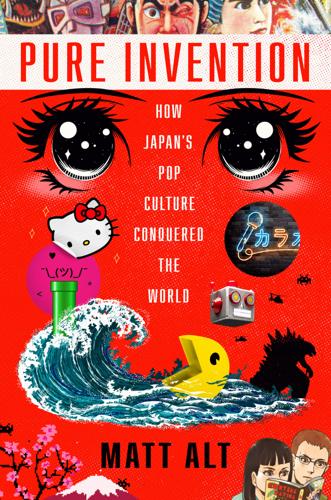
Pure Invention: How Japan's Pop Culture Conquered the World
by
Matt Alt
Published 14 Apr 2020
The first hit arcade game, Pong: Steven L. Kent, The Ultimate History of Video Games (New York: Three Rivers Press, 2010), chapters 4–6. In a story now enshrined in Silicon Valley lore: Owen W. Linzmayer, Apple Confidential 2.0: The Definitive History of the World’s Most Colorful Company (San Francisco: No Starch Press, 2004), 3–4. “I knew that Jobs and Woz were fast friends”: Nolan Bushnell, “I’m Apple Co-founder Steve Wozniak, Ask Me Anything!” Reddit, undated, https://www.reddit.com/r/IAmA/comments/2e7z17/i_am_nolan_bushnell_founder_of_atari_chuck_e/ (accessed January 23, 2020). Pachinko, which was invented in Japan in the thirties: Wolfram Manzenreiter, “Time, Space, and Money: The Cultural Dimensions of the ‘Pachinko’ Game,” in The Culture of Japan as Seen through Its Leisure, ed.
…
This would turn out to have some surprisingly profound effects on the way we listened to music, transforming popular culture and spawning new countercultures. The portable transistor radio transformed music culture by freeing young listeners from the shackles of parental approval, letting them mainline rock and roll in the privacy of their own rooms. “It opened my world up,” says the engineer Steve Wozniak, who went on to play the role of Ibuka to Steve Jobs’s Morita at Apple Computer. “I could sleep with it and hear music all night long.” They listened to newfangled forms of music with titles that mystified the grown-ups, like 1954’s “Rock Around the Clock”—the first song with “rock” in its title. Through their musical choices over the years to come, young Americans would construct the soundtrack for an ideological rebellion, most obviously in the form of the protest rock that sustained student activists of the sixties.
…
In a story now enshrined in Silicon Valley lore, a young employee by the name of Steve Jobs, recently returned from a pilgrimage to India, volunteered for the mission. By some accounts he was still dressed in saffron robes and sporting a shaved head. He didn’t do any of the work himself. Instead, he subcontracted it to none other than Steve Wozniak, the very same person who had spent his childhood nights enchanted by the transistor radio. Now twenty-three, Wozniak had blossomed into a crack electronics engineer. He worked days at Hewlett-Packard. Nights he spent hanging out with Jobs, whether in the garage or at the Atari offices. (“I knew that Jobs and Woz were fast friends and Woz worked days at HP,” said Bushnell in a 2015 Reddit post.

Falter: Has the Human Game Begun to Play Itself Out?
by
Bill McKibben
Published 15 Apr 2019
Google spelled out its corporate logo in mirrors at the giant solar station in the Mojave Desert on the day it announced that it would power every last watt of its global business with renewable energy; it’s the world’s biggest corporate purchaser of green power.2 But there is exactly one human being who bridges that cultural gulf between these different species of plutocrat. Vanity Fair, in 2016, declared that Ayn Rand was “perhaps the most influential figure in the tech industry.” Steve Wozniak (cofounder of Apple) said that Steve Jobs (deity) considered Atlas Shrugged one of his guides in life.3 Elon Musk (also a deity, and straight out of a Rand novel, with his rockets and hyperloops and wild cars) says Rand “has a fairly extreme set of views, but she has some good points in there.”4 That’s as faint as the praise gets.
…
Provide him with a minimum subsidy of Coke and pizza, and then remove all demands for work and all parental supervision. The likely outcome is that he will remain in his room for days, glued to the screen. He won’t do any homework or housework, will skip school, skip meals, and even skip showers and sleep. Yet he is unlikely to suffer from boredom or a sense of purposelessness.”8 Steve Wozniak, cofounder of Apple, predicts that robots will graciously take us on as pets so we can “be taken care of all the time.”9 He added that he was now feeding his dog filet mignon, on the principle of “do unto others.” None of that is why we’re developing artificial intelligence. (We’re developing it to make money, one business at a time.)
…
Tim Urban, “The AI Revolution: The Road to Superintelligence,” Huffington Post, February 10, 2015. 6. Ibid. 7. Decca Aitkenhead, “James Lovelock: Before the End of This Century, Robots Will Have Taken Over,” Guardian, September 30, 2016. 8. Yuval Harari, “The Meaning of Life in a World without Work,” Guardian, May 8, 2017. 9. Samuel Gibbs, “Apple Co-founder Steve Wozniak Says Humans Will Be Robots’ Pets,” Guardian, June 25, 2015. 10. Paul Lewis, “‘Our Minds Can Be Hijacked’: The Tech Insiders Who Fear a Smartphone Dystopia,” Guardian, October 6, 2017. 11. Lanier, Ten Arguments, p. 18. 12. Sang In Jung et al., “The Effect of Smartphone Usage Time on Posture and Respiratory Function,” Journal of Physical Therapy Science 28, no. 1 (January 2016). 13.
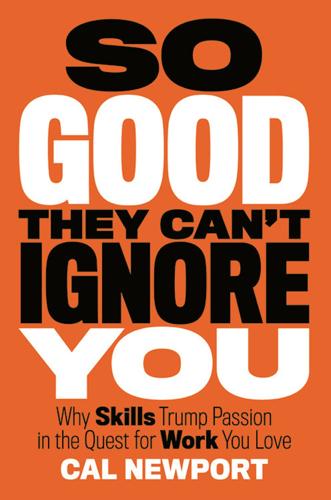
So Good They Can't Ignore You: Why Skills Trump Passion in the Quest for Work You Love
by
Cal Newport
Published 17 Sep 2012
When Jobs walked into Paul Terrell’s Byte Shop he was holding something that was literally rare and valuable: the circuit board for the Apple I, one of the more advanced personal computers in the fledgling market at the time. The money from selling a hundred units of that original design gave Jobs more control in his career, but in classic economic terms, to get even more valuable traits in his working life, he needed to increase the value of what he had to offer. It’s at this point that Jobs’s ascent begins to accelerate. He takes on $250,000 in funding from Mark Markkula and works with Steve Wozniak to produce a new computer design that is unambiguously too good to be ignored.
…
At one point, he left his job at Atari for several months to make a mendicants’ spiritual journey through India, and on returning home he began to train seriously at the nearby Los Altos Zen Center. In 1974, after Jobs’s return from India, a local engineer and entrepreneur named Alex Kamradt started a computer time-sharing company dubbed Call-in Computer. Kamradt approached Steve Wozniak to design a terminal device he could sell to clients to use for accessing his central computer. Unlike Jobs, Wozniak was a true electronics whiz who was obsessed with technology and had studied it formally at college. On the flip side, however, Wozniak couldn’t stomach business, so he allowed Jobs, a longtime friend, to handle the details of the arrangement.
…
Rule #1 is dedicated to laying out my argument against passion, as this insight—that “follow your passion” is bad advice—provides the foundation for everything that follows. Perhaps the best place to start is where we began, with the real story of Steve Jobs and the founding of Apple Computer. Do What Steve Jobs Did, Not What He Said If you had met a young Steve Jobs in the years leading up to his founding of Apple Computer, you wouldn’t have pegged him as someone who was passionate about starting a technology company. Jobs had attended Reed College, a prestigious liberal arts enclave in Oregon, where he grew his hair long and took to walking barefoot.
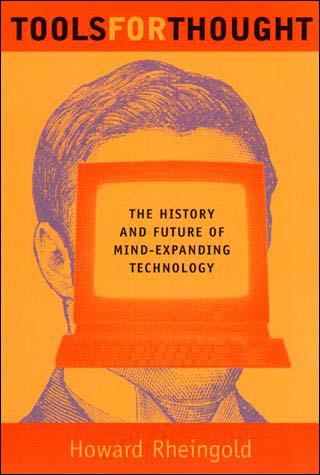
Tools for Thought: The History and Future of Mind-Expanding Technology
by
Howard Rheingold
Published 14 May 2000
A gap-toothed, crazy-eyed, full-bearded fellow who now writes software and stays away from illegal activities, Crunch traveled the highways in the late sixties and early seventies with a van full of electronic equipment, playing virtuoso pranks from roadside phone booths -- until he was caught, prosecuted, sentenced, and jailed. One of Crunch's phone hacking buddies from the outlaw days, Steve Wozniak, went on to bigger fame when he invented the first Apple computer. Captain Crunch, also known as John Draper, now makes very decent legitimate money as "Cap'n Software," the sole programmer for the microcomputer software company of the same name. At Project MAC, and at the subcultural counterparts at Stanford (where they began to blend some of their California brand of craziness into the hacker formula) and elsewhere, you had to suffer in order to be admitted to the more interesting levels of hacker wisdom.
…
MITS had the usual problems associated with a successful start-up company. Roberts eventually sold it. In 1977, Commodore, Heathkit, and Radio Shack began marketing personal computers based on the interconnection method established by the Altair -- still known as the S100 bus. Steve Wozniak and Steve Jobs started selling Apples in 1977 and now are firmly established in the annals of Silicon Valley garage-workshop mythology -- the Hewlett and Packard of the seventies generation. Gates and Allen became Microsoft, Inc. Their company sold over $50 million worth of software to personal computer users in 1983.
…
"A really good program designer makes an artist out of the person who uses the computer, by creating a world that puts them in the position of 'Here's the keyboard, and here's the screen. Now once you learn a few rudimentary computer skills, you can be a superstar.' " It was an unexpected, but perhaps not inappropriate philosophy to hear from a LISP hacker turned software vendor. He has yet to carve out an empire like Bill Gates or Steve Wozniak, but David Rodman knows that most of the potential consumers of microcomputer software are still in the earliest stages of their progression toward obsessive software intoxication. David sees a niche for people like himself as toolmakers and trailblazers, leading the way for the emergence of an entire population of programming artists.
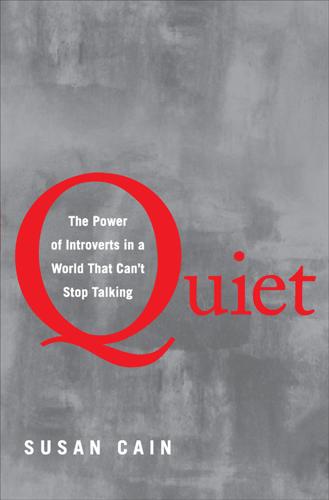
Quiet: The Power of Introverts in a World That Can't Stop Talking
by
Susan Cain
Published 24 Jan 2012
Three months later he builds a prototype of that machine. And ten months after that, he and Steve Jobs cofound Apple Computer. Today Steve Wozniak is a revered figure in Silicon Valley—there’s a street in San Jose, California, named Woz’s Way—and is sometimes called the nerd soul of Apple. He has learned over time to open up and speak publicly, even appearing as a contestant on Dancing with the Stars, where he displayed an endearing mixture of stiffness and good cheer. I once saw Wozniak speak at a bookstore in New York City. A standing-room-only crowd showed up bearing their 1970s Apple operating manuals, in honor of all that he had done for them.
…
But when the group is literally capable of changing our perceptions, and when to stand alone is to activate primitive, powerful, and unconscious feelings of rejection, then the health of these institutions seems far more vulnerable than we think. But of course I’ve been simplifying the case against face-to-face collaboration. Steve Wozniak collaborated with Steve Jobs, after all; without their pairing, there would be no Apple today. Every pair bond between mother and father, between parent and child, is an act of creative collaboration. Indeed, studies show that face-to-face interactions create trust in a way that online interactions can’t. Research also suggests that population density is correlated with innovation; despite the advantages of quiet walks in the woods, people in crowded cities benefit from the web of interactions that urban life offers.
…
Our schools should teach children the skills to work with others—cooperative learning can be effective when practiced well and in moderation—but also the time and training they need to deliberately practice on their own. It’s also vital to recognize that many people—especially introverts like Steve Wozniak—need extra quiet and privacy in order to do their best work. Some companies are starting to understand the value of silence and solitude, and are creating “flexible” open plans that offer a mix of solo workspaces, quiet zones, casual meeting areas, cafés, reading rooms, computer hubs, and even “streets” where people can chat casually with each other without interrupting others’ workflow.
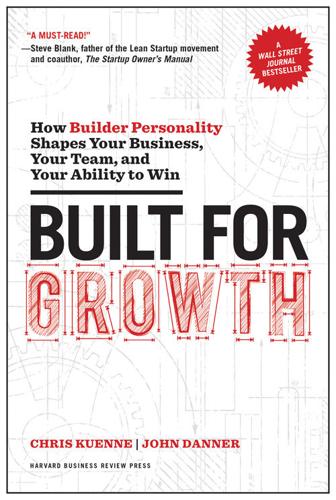
Built for Growth: How Builder Personality Shapes Your Business, Your Team, and Your Ability to Win
by
Chris Kuenne
and
John Danner
Published 5 Jun 2017
A Builder Personality Tour through Silicon Valley Let’s see these personalities in action by taking a quick spin through the heart of Silicon Valley. Take a look at how each Builder Personality has shaped the structure, growth trajectory, and culture of four iconic companies.7 Apple’s Driver Our first stop is on everybody’s short list of startup-to-standout success stories. Leaving aside how revolutionary Apple 1.0 was in transforming the computer industry when Steve Wozniak and Steve Jobs got started, consider the stamp the prodigal Jobs himself left on this company after his return in 1997 to spearhead the stunning revival of the company. His personality—born to build, an intuitive decision maker, with a controlling and often abrasive management style—shaped that company’s entire destiny.
…
Starting a business, much less building it into a large and durable enterprise, is never easy, and it’s often a lonely endeavor. It’s no surprise many builders—perhaps you included—choose to embark on that adventure with cofounders. That’s a decision that immediately puts the issue of Builder Personality front and center—for both of you. Just take a look at this partial list of cobuilders: Apple: Steve Jobs and Steve Wozniak Microsoft: Bill Gates and Paul Allen Ben & Jerry’s: Ben Cohen and Jerry Greenfield Intel: Gordon Moore and Bob Noyce P & G: William Procter and James Gamble Airbnb: Nathan Blecharczyk, Brian Chesky, and Joe Gebbia Google: Sergey Brin and Larry Page Rent the Runway: Jenn Hyman and Jenny Fleiss Warby Parker: Neil Blumenthal, Dave Gilboa, Andrew Hunt, and Jeffrey Raider Pinterest: Ben Silbermann, Evan Sharp, and Paul Sciarra Eventbrite: Julia Hartz and Kevin Hartz HP: Bill Hewlett and Dave Packard These builder partnerships cut across industry, geographic, gender, and cultural lines.
…
Jobs was a Driver’s Driver—relentless in lashing his company to his singular vision of “insanely great products” he knew the world (and his customers) needed, even before they did. This kind of market-sensing capability, propelled by an obsessive drive to launch the perfect market-fitting product, typifies the Builder Personality we call the Driver. Apple under Jobs’s direction was not a “we’re a big family” organization. It was—and is—a proud, defiant, and famously secretive place under the spotlight scrutiny of its brilliant, if sometimes mercurial, founder-CEO. Its fusion of beautiful design simplicity, functional technology, and innovative business models continues to reflect the transformative power a Driver can have—even when he or she sees way beyond everyone else’s headlights.
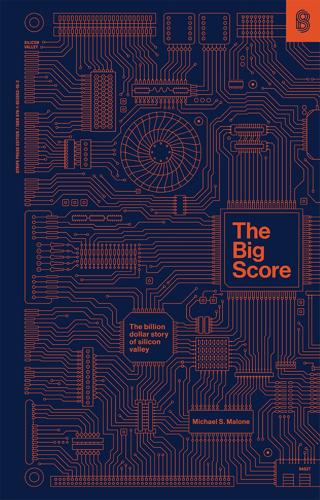
The Big Score
by
Michael S. Malone
Published 20 Jul 2021
In fact, though Silicon Valley is often described as a tight, incestuous family, Sporck knows very few of the presidents of the hot new computer, video game, and peripheral companies. Walking with a visitor across the lawn at the center of the company compound, Sporck asks about these young whiz kids, what they’re like. It is a week after Apple co-founder Steve Wozniak’s latest rock concert. Sporck says he doesn’t know any of these people, having only met Steve Jobs at some political event for Jerry Brown which Sporck found idiotic and walked out of. As the visitor describes some of the antics of these young tycoons, Sporck shakes his head. “You know,” he says, “us guys who started out at Fairchild and built all of these semiconductor companies, you know, when you get right down to it, we’re a pretty conservative, old-fashioned bunch.
…
This one is built around an Alpha Beta supermarket, a main-line market that gets the folks who can’t afford Petrini’s. This shopping center also sports a Farrell’s Ice Cream Parlor, a Velvet Turtle restaurant, a renowned Szechuan restaurant, a video cassette store, and a thriving computer store owned by Apple founder Steve Wozniak’s brother. The fourth corner contains a bank and the only two-story building around: an office complex that holds, among others, the West Coast bureau of Hayden Publishing (Popular Computing, Electronic Design). Past Mary, Fremont passes another gas station. Unlike its subdued competitor down the road, this one is a self-serve, with an attached quick-stop market.
…
But there has always been that insanity factor in the society of electrical engineers, a structural weakness that, given the right external pressure, can crack and send the individual crashing down into perdition, or at least a good time. Lee De Forest was an early case in point, with his run-ins with courts and his infatuation with movie stars. Shockley is another case, with his racial theories and genius sperm banks. The latter-day case, of course, is Steve Wozniak, with his rock festivals and Datsun commercials. For the most part, these occasional bouts with pixilation in the ranks were overwhelmed by the predominating soberness of the profession as a whole. This changed, however, with the rise of the modern entrepreneur, the man or woman who was just as much a businessperson as a scientist, who not only had to design the product but had to sell it to a skeptical market.
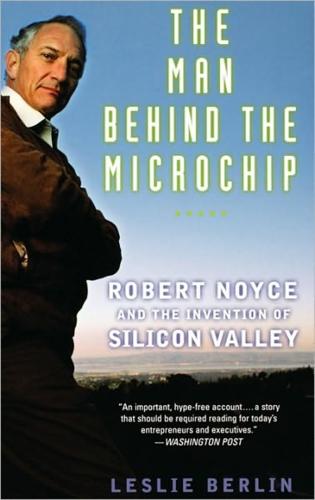
The Man Behind the Microchip: Robert Noyce and the Invention of Silicon Valley
by
Leslie Berlin
Published 9 Jun 2005
Markkula, who had long dreamed of something like a personal computer—as a teenager, he had built a “programmable electronic sliderule”—invested $91,000 in the company. In exchange, he received a one-third ownership stake in Apple.47 One of Markkula’s first calls on behalf of Apple was to Noyce. “I want you to be aware of this,” Markkula said. “I’d like to present to the [Intel] board.” Noyce gave his approval and on the appointed day, Markkula and Steve Wozniak gave a presentation about the personal computer, an Apple II on hand for demonstration purposes. “If you want to participate in this in some way, say so,” Markkula told the board. “If you don’t, fine. But this Renewal 251 is something you should have in front of your consciousness.”
…
Clearly this was a company that needed her help. She agreed to consult for Apple.49 A few months into her consulting work, Bowers learned that Steve Wozniak wanted to sell some of his founders’ stock for $13 a share. She bought it from him. “Bob thought I was nuts,” she recalls. Noyce did not try to stop her from investing—they had long ago agreed that she could do what she liked with her money, and he could do the same with his—but he could not take Jobs and Wozniak seriously. Even Arthur Rock admits, “Steve Jobs and Steve Wozniak weren’t very appealing people in those days.” Wozniak was the telephone-era’s version of a hacker—he used a small box that emitted electronic tones to call around the world for free—and Steve Jobs’s ungroomed appearance was offputting to Noyce.
…
Noyce once said that “small entrepreneurs depend totally upon the infrastructure that is— has been—established . . . so that they can use those tools, those techniques, and go off and do something specialized.” This certainly was true of Apple Computer, which was financed by men associated with Fairchild and Intel and staffed with many people from Hewlett-Packard and Intel.46 Apple had gotten its start in 1976, when 19-year-old Jobs convinced his friend Steve Wozniak, who had developed a personal computer in his garage, to start a business with him. The two showed their computer to venture capitalist Don Valentine (a former Fairchild salesman), who suggested they contact Mike Markkula, recently retired (at age 34) from his job in Intel’s marketing group.
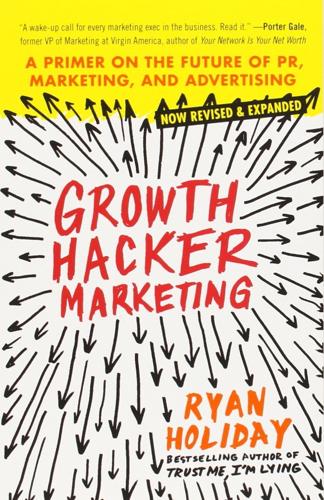
Growth Hacker Marketing: A Primer on the Future of PR, Marketing, and Advertising
by
Ryan Holiday
Published 2 Sep 2013
We must dive deeply into the analytics available to us and refine, refine, refine until we get maximum results. STEP 4 Close the Loop: Retention and Optimization You need the kind of objectivity that makes you forget everything you’ve heard, clear the table, and do a factual study like a scientist would. —Steve Wozniak If the growth hacking process begins with something I would have previously considered to be outside the marketer’s domain (product development), then I suppose it is only natural that it conclude with another. The traditional marketer’s job, as I learned in my time in fashion and publishing, is to get the leads—to bring in potential customers.
…
Think of Hotmail, whose early attempts at growth hacking we looked at earlier. It turned every e-mail its users sent into a pitch to new customers. Think of Apple and BlackBerry, which turned their devices into advertising engines by adding “Sent from my iPhone” or “Sent from my BlackBerry” to every message sent. (Apple’s best and most compelling public move, of course, was the decision to make its headphones white instead of black. Now the millions of people who’ve bought devices from Apple advertise them everywhere.) Now start-ups are following this lead. Mailbox, an in-box organizer, adds a “Sent from Mailbox” line to the end of its users’ e-mails.
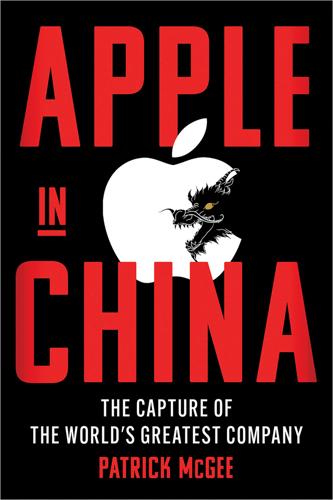
Apple in China: The Capture of the World's Greatest Company
by
Patrick McGee
Published 13 May 2025
But the owner of the home subscribed to BusinessWeek and got nervous. “This guy works for Apple!” he protested. De Luca’s banker tried to explain it wasn’t a problem, that De Luca had already secured a loan, but the owner wouldn’t listen. His offer was denied. The Threat from Boca Raton—and Huntsville In a way, it was amazing Apple had made it this far against a field of rivals who could achieve lower cost and better distribution for every computer they sold. Apple’s survival was testament to the twin and somewhat contradictory forces of its founders. The Steve Wozniak–led Apple II computer, released in 1977, was the first personal computer to define a standard for others to follow, and it would be Apple’s number one revenue driver for an entire decade.
…
IBM might have been a new player in PCs, but its branding was beyond reproach. Millions of Americans could name only one tech company, and it was IBM. And now it was aided by an army of third-party entrepreneurs in both software and hardware. Apple itself could have played this dominant role; in fact, it had played this role. At the behest of Steve Wozniak—overruling Jobs—the Apple II featured an open architecture with eight expansion slots and a floppy drive. This allowed third-party software and hardware companies to build applications for it, widening its appeal beyond hobbyists and gamers to the workplace.
…
It lacked much third-party support, so it was even more isolated than the Mac. Jobs had commissioned an expensive, inefficient factory capable of handling 10,000 units per month—far more capacity than it would ever need. The poor decisions highlight the difficult-to-grasp nature of his peculiar genius. Whereas the brilliance of Apple cofounder Steve Wozniak was tangible—he could disassemble a computer, then rebuild it to work faster and with fewer parts—Jobs lacked such practical skills. But through instinct, passion, and an uncompromising vision, he could lead a team to build “insanely great” products. When things weren’t going well, however, his idiosyncratic traits felt overbearing and his taste could seem arbitrary.

The Power Law: Venture Capital and the Making of the New Future
by
Sebastian Mallaby
Published 1 Feb 2022
The fertility of the network was illustrated by the story of Apple, founded in 1976 by Steve Jobs and Steve Wozniak. On the face of it, Apple was an obvious candidate for venture investment, because scores of insiders already understood that the personal computer would be the next big thing in technology. Xerox’s Palo Alto Research Center, or PARC, had recognized the PC as “an idea whose time has arrived” and had produced a prototype complete with mouse and graphical interface. Intel and National Semiconductor had considered making a PC, and Steve Wozniak had twice offered the Apple I design to his employer, Hewlett-Packard.[1] But all four companies had decided not to build a PC, inhibited by what the business thinker Clayton Christensen termed the “innovator’s dilemma.”
…
“Mr. Montagu, you are really a fortunate guy,” he said. Steve Wozniak had decided to buy a house. To raise the cash, he wanted to sell some of his own equity. Montagu asked how much stock Wozniak was selling. “Four hundred and fifty thousand dollars,” came the answer. It was more stock by far than Venrock or Valentine had laid hands on. A giddy Montagu called Kramlich again. “Dick, I wouldn’t be here without you!” he said, offering to split the allocation. Kramlich never told Rock that he had acquired a large slice of Apple through this roundabout route, and for years he kept quiet about it.
…
The contrast between the coasts was crystallized in the story of Bob Metcalfe.[22] A self-styled “Viking-American,” with grandparents from Oslo, Bergen, Leeds, and Dublin, Metcalfe sported bushy strawberry-blond hair and wing tip loafers and called himself “a right-wing hippie.”[23] After studies at MIT and Harvard, he moved out west to Xerox PARC, where he seldom used an alarm clock, frequently pulled all-nighters at the lab, and invented a computer-networking technology called Ethernet. He was a ferociously competitive tennis player and a force of nature: he combined the promotional charisma of Steve Jobs with the engineering virtuosity of Steve Wozniak. But to Metcalfe’s immense frustration, Xerox showed no sign of building a business out of his Ethernet invention, nor did the company appear eager to promote such a free spirit up the managerial ladder.[24] So Metcalfe quit and founded a startup called 3Com, promising that Ethernet would link up personal computers in offices and living rooms across the nation.[25] Fifteen years earlier, an ambitious engineer like Metcalfe would have lined up a financial backer first, then summoned the courage to quit afterward.

Dogfight: How Apple and Google Went to War and Started a Revolution
by
Fred Vogelstein
Published 12 Nov 2013
Steve Jobs’s store was, naturally, the one in downtown Palo Alto at the corner of University Avenue and Kipling Street. It was a mile and a half from his house and he often showed up there unannounced when he was in town. The appropriate high-tech luminaries had already gathered when he arrived. Apple cofounder Steve Wozniak and early Apple employees Bill Atkinson and Andy Hertzfeld were already standing on line. But it also seemed as if Jobs had some internal flames to fan of his own, said one of the engineers who was there along with Grignon and many others who had worked on the project, including Fadell and Forstall.
…
The shift hit Dell so hard that by the beginning of 2013 it was trying to take itself private to retrench. Jobs was particularly satisfied with this development, a confidant said—even though in the context of the other upheavals the iPad was unleashing it was almost a footnote. Thirty-five years after starting Apple with Steve Wozniak, Jobs was finally doing what he had set out to do all along: he was transforming what consumers and businesses expected from their computers. The Macintosh in 1984—the first mainstream machine to use a mouse—was supposed to have been the machine that did this. It was supposed to have taken a complicated device—the PC—and made it a consumer product that anyone could use.
…
Still, both platforms are now equally available among large carriers worldwide, and, with the exception of Apple stores, they are available for purchase in the same places. Seeing Apple’s market dominance challenged so swiftly and broadly was uniquely painful for Jobs and remains that way for the company’s other executives. Jobs thought, and Apple executives still think, that Google and the Android community cheated to create their success. They think that Google executives stole Apple’s software to build Android, and that Android’s largest phone maker, Samsung, copied Apple’s designs to build its supersuccessful Galaxy phones. They feel betrayed. Apple and Google weren’t just business partners when the iPhone was unveiled in early 2007.
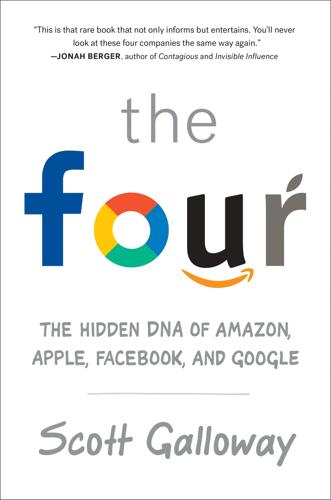
The Four: How Amazon, Apple, Facebook, and Google Divided and Conquered the World
by
Scott Galloway
Published 2 Oct 2017
Here’s a list of the source of wealth for the ten richest people in Europe (who cares who they are, their companies are infinitely more interesting than they are): Zara L’Oréal H&M LVMH Nutella Aldi Lidl Trader Joe’s Luxottica Crate & Barrel12 The Luxury of Time No technology firm has solved the problem of aging—losing relevance. As a luxury brand, Apple is the first technology company to have a shot at multigenerational success. Apple did not start as a luxury brand. It was the best house in a shitty neighborhood, tech hardware. A world of cables, geekware, acronyms, and low margins. In the early days, Apple simply made a more intuitive computer than its competitors. Steve Jobs’s notions about elegant packaging only appealed to a minority of customers; it was Steve Wozniak’s architecture that drew the rest. Back then, the company appealed largely to consumers’ brains. Many early Apple lovers were geeks (which did nothing for its sex appeal).
…
But who you really are has become what you text on. The Builder King You would be amazed at how many people still believe, against all evidence, that Steve Jobs actually invented all of Apple’s great products. As if he sat at a lab table in the R&D department at Apple headquarters in Cupertino and soldered chips on a tiny motherboard . . . until boom! he gave the world the iPod. Actually, that was Steve Wozniak with the Apple 1 a quarter century before. Steve Jobs was a genius—but his gifts lay elsewhere. And nowhere was that genius more visible than when business experts everywhere were proclaiming the “disintermediation” of tech—the disappearance of the physical distribution and retail channels as they were replaced by the virtualization of e-commerce.
…
Biography. http://www.biography.com/people/louis-vuitton-17112264. 21. Apple Newsroom. “‘Designed by Apple in Calfornia’ chronicles 20 years of Apple design.” https://www.apple.com/newsroom/2016/11/designed-by-apple-in-california-chronicles-20-years-of-apple-design/. 22. Ibid. 23. Norman, Don. Emotional Design: Why We Love (or Hate) Everyday Things (New York: Basic Books, 2005). 24. Turner, Daniel. “The Secret of Apple Design.” MIT Technology Review, May 1, 2007. https://www.technologyreview.com/s/407782/the-secret-of-apple-design/. 25. Munk, Nina. “Gap Gets It: Mickey Drexler Is Turning His Apparel Chain into a Global Brand.

Rebel Ideas: The Power of Diverse Thinking
by
Matthew Syed
Published 9 Sep 2019
‘It was a Eureka moment for me . . . I took this data sheet home and was shocked to find that the microprocessor had gotten to the point of being a complete processor of the type I’d designed over and over in high school. That night the full image of the Apple I popped in my head.’48 The hobbyist’s name was Steve Wozniak. Thirteen months later, he would start the Apple Corporation from the two ideas that fused in his head that night (could there be a more exquisite example of a rebel combination?). His co-founder was another attendee at the Homebrew: Steve Jobs. It is symptomatic that forums for idea exchange – whether restaurants, cafes or organically created clubs – were conspicuous by their absence along Route 128.
…
See ‘Innovation in the Collective Brain’, Philosophical Transactions of the Royal Society, 19 March 2016. 40 Joseph Henrich, The Secret of Our Success. 41 AnnaLee Saxenian, Regional Advantage: Culture and Competition in Silicon Valley and Route 128 (Harvard University Press, 1994). 42 AnnaLee Saxenian, Regional Advantage. 43 Glenn Rifkin and George Harrar, The Ultimate Entrepreneur: The Story of Ken Olsen and Digital Equipment Corporation (Contemporary Books, 1988). 44 AnnaLee Saxenian, Regional Advantage. 45 AnnaLee Saxenian, Regional Advantage. 46 Tom Wolfe, ‘The Tinkerings of Robert Noyce: How the Sun Rose on the Silicon Valley’, Esquire, December 1983. 47 Walter Isaacson, Innovators: How a Group of Inventors, Hackers, Geniuses and Geeks Created the Digital Revolution (Simon & Schuster, 2014). 48 https://www.cnet.com/news/steve-wozniak-on-homebrew-computer-club/ 49 AnnaLee Saxenian, Regional Advantage. 50 https://www.vox.com/2014/12/9/11633606/techs-lost-chapter-an-oral-history-of-bostons-rise-and-fall-part-one 51 AnnaLee Saxenian, Regional Advantage. 52 http://djcoregon.com/news/2012/06/19/building-20-what-made-it-so-special-and-why-it-will-probably-never-exist-again/ 53 Another line of research is conducted by network theorists themselves.
…
Much that could be got from a timber merchant (5,4) 15. We have nothing and are in debt (3) 16. Pretend (5) 17. Is this town ready for a flood? (6) 22. The little fellow has some beer; it makes me lose colour, I say (6) 24. Fashion of a famous French family (5) 27. Tree (3) 28. One might of course use this tool to core an apple (6,3) 31. Once used for unofficial currency (5) 32. Those well brought up help these over stiles (4,4) 33. A sport in a hurry (6) 34. Is the workshop that turns out this part of a motor a hush-hush affair? (8) 35. An illumination functioning (6) Down 1. Official instruction not to forget the servants (8) 2.
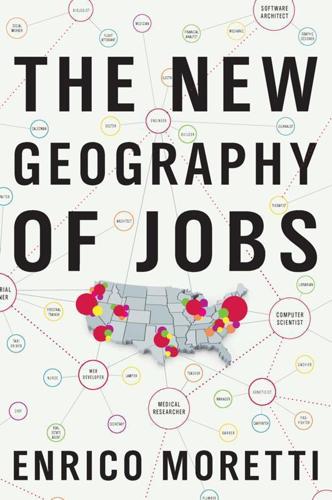
The New Geography of Jobs
by
Enrico Moretti
Published 21 May 2012
The first batch of two hundred Apple I computers was assembled by Steve Jobs and Steve Wozniak in Jobs’s famous garage in Los Altos in 1976. Production didn’t stray far for a few years. During the 1980s, Apple was manufacturing most of its Macs in a factory in Fremont, California. But in 1992 Apple shut down the factory and shifted production first to cheaper parts of California and Colorado, then to Ireland and Singapore. All other American companies followed the model. As James Fallows once put it, “Everyone in America has heard of Dell, Sony, Compaq, HP, Lenovo-IBM ThinkPad, Apple, NEC, Gateway, Toshiba.
…
A few decades later the number dropped to three giant corporations, with most of the production near Detroit. Today car factories are again spread all over the world, from Brazil to Poland. When personal computers first appeared in the 1970s, a myriad of small independent producers were scattered all over America. Steve Jobs and Steve Wozniak made the first Apple computer in 1976 by buying components from a mail-order catalogue and assembling them in Jobs’s garage. Later the production of personal computers became a highly concentrated industry, with just a few key players, mostly in Silicon Valley. Right now the industry is maturing, and production is scattered among hundreds of low-cost locations.
…
In less than two weeks that merchandise will be on a truck headed for a Walmart distribution center, an IKEA warehouse, or an Apple store. Shenzhen is where the iPhone is assembled. If there is a poster child of globalization, it is the iPhone. Apple has given as much attention to designing and optimizing its supply chain as to the design of the phone itself. The process by which the iPhone is produced illustrates how the new global economy is reshaping the location of jobs and presenting new challenges for American workers. Apple engineers in Cupertino, California, conceived and designed the iPhone. This is the only phase of the production process that takes place entirely in the United States.

Lab Rats: How Silicon Valley Made Work Miserable for the Rest of Us
by
Dan Lyons
Published 22 Oct 2018
Bosses engaged in “management by wandering around,” a practice that struck Tom Peters when he studied HP and raved about the company’s way of doing things in his 1982 business classic, In Search of Excellence. By the 1970s, HP was a thriving organization that many in Silicon Valley (and beyond) wanted to emulate. Apple co-founder Steve Wozniak, who worked as an engineer at HP in the 1970s, later recalled: “We had such great camaraderie. We were so happy. Almost everyone spoke about it as the greatest company you could ever work for.” The 1970s brought another element to Silicon Valley—the idealistic values of the counterculture.
…
Customers love Uber, but Uber operates a toxic workplace and exploits its drivers. Tesla makes very sexy electric cars, but by many accounts, Elon Musk behaves abominably toward his employees and has earned a reputation for being less than forthcoming with customers. “I don’t believe anything Elon Musk or Tesla says,” Apple co-founder Steve Wozniak, a disappointed Tesla owner, said in 2018. In the past few years I’ve come to the uncomfortable conclusion that, for various reasons mostly related to greed, the very people in Silicon Valley who talk so much about making the world a better place are actually making it worse—at least when it comes to the well-being of workers.
…
Aouf, Rima Sabina. “Apple Park Employees Revolt over Having to Work in Open-Plan Offices.” Dezeen, August 10, 2017. https://www.dezeen.com/2017/08/10/apple-park-campus-employees-rebel-over-open-plan-offices-architecture-news. Bray, Chad. “No Laptop, No Phone, No Desk: UBS Reinvents the Work Space.” New York Times, November 3, 2016. https://www.nytimes.com/2016/11/04/business/dealbook/ubs-bank-virtual-desktops-london.html. Broussard, Mitchel. “Some Apple Park Employees Said to Be Dissatisfied with Open Office Design.” MacRumors, August 9, 2017. https://www.macrumors.com/2017/08/09/apple-park-employees-open-office.
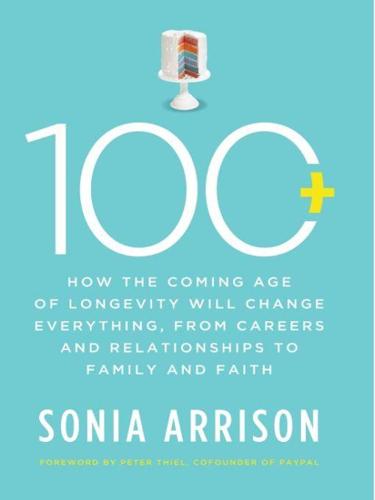
100 Plus: How the Coming Age of Longevity Will Change Everything, From Careers and Relationships to Family And
by
Sonia Arrison
Published 22 Aug 2011
And in a world where technology will continue to help level playing fields, businesses that shun smart, young people will face competitive disadvantages. There are many examples of young people starting small companies that grew into larger, very successful companies. For example, Steve Jobs and Steve Wozniak started Apple in their early twenties—the same age as Bill Gates and Paul Allen when they started Microsoft—and Sergey Brin and Larry Page launched Google in their mid-twenties. GOING LONG ON AMBITION The degree to which longevity will change the economic order also depends somewhat on how much of an effect an increased health span has on the conditions of human ambition.
…
Making cells blink, glow, or smell like banana is what many DIY bio types have on their minds, and such frivolous pursuits are reminiscent of the beginnings of the personal computer revolution. Back in the 1970s, it was the Homebrew Club that brought together clever thinkers—such as future Apple founders Steve Jobs and Steve Wozniak—to trade parts, circuits, and information for DIY computing devices. The point is that biology has become the latest and greatest engineering project, one that hobbyists celebrate. More importantly, eventually this passion will change the world. Those who have already made it big in the technology industry have not failed to notice.
…
See Artificial intelligence AIDS Airlines Alchemists Alcohol consumption Alexander the Great Algae Alginate hydrogel Allen, Paul Allen, Woody Allen Institute for Brain Science (Seattle) Alm, Richard Alzheimer’s Ambition American Council on Science and Health American Federation of Labor-Congress of Industrial Organizations Ames, Bruce Anatomy of Love (Fisher) Angola Annas, George Antibiotics Apple Inc. Aquinas, St. Thomas Archimedes Archon Genomics X PRIZE Aristotle Armed Forces Institute of Regenerative Medicine (AFIRM) Arnett, Dr. Jeffrey Jensen Art Artemisinin Arteriocyte company Artificial intelligence (AI) Artificial life Asian American females Asimov, Isaac Association of Medical Practitioners and Dentists (Italy) Astrology Atala, Dr.
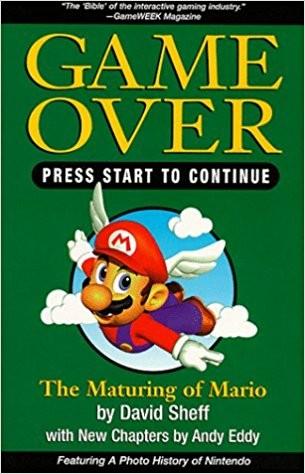
Game Over Press Start to Continue
by
David Sheff
and
Andy Eddy
Published 1 Jan 1993
He named it “Pong,” after the sonar-like “pongs” that sounded each time the ball made contact with the paddle. In the fall of 1972, Bushnell placed “Pong,” the first commercial video-arcade game, with a coin box bolted to the outside, in Andy Capp’s tavern, a popular Sunnyvale pool bar that holds a place in Silicon Valley lore rivaled only by the garage in which Steve Jobs and Steve Wozniak invented the Apple computer. Set beside a pinball machine, “Pong” was an oddity, a dark wood cabinet that held a black-and-white TV screen on which cavorted a white blip like a shooting star in a black sky. One of the bar’s patrons stood over the machine, examining it. “Avoid missing ball for high score,” read the only line of instructions.
…
Don Valentine’s money had helped build up production, but the returns lagged. A big success that followed “Pong” bailed them out. It was the first video car-racing game that was controlled by a steering wheel attached to the cabinet. The game, “Gran Trak,” gobbled up quarters even faster than “Pong.” A friend of Steve Jobs, Steve Wozniak, an engineer at Hewlett Packard, was a “Gran Trak” addict. Most evenings after work he headed to a pub, where he put great quantities of quarters, money he could not afford, into “Gran Trak.” Jobs began to sneak him into Atari’s production facility at night, where he could play the game for free.
…
When a successful hit was made, the on-screen tank exploded and the player controlling the disabled vehicle got an electric shock. “We did it so it wasn’t lethal or anything,” Bushnell notes. “But all of a sudden it was real. Certain people really liked it.” The company’s legal department, however, was not among them, and the game never made it out the door. Steve Wozniak came over to Atari to help Jobs build another “Pong”-based game for Bushnell called “Breakout.” A paddle hit a ball against a wall of bricks that disappeared, one by one, when hit, until there were none left. Bushnell liked the game, but the circuitry required too many expensive computer chips.
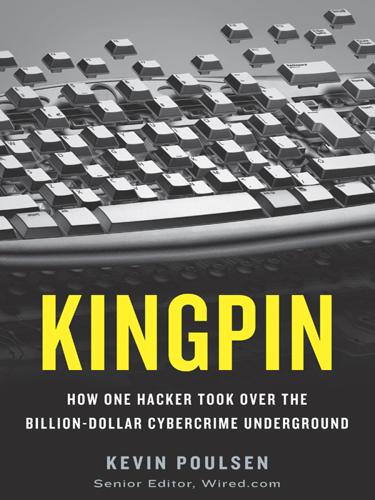
Kingpin: How One Hacker Took Over the Billion-Dollar Cybercrime Underground
by
Kevin Poulsen
Published 22 Feb 2011
But hacking was above all a creative effort, one that would lead to countless watershed moments in computer history. The word “hacker” took on darker connotations in the early 1980s, when the first home computers—the Commodore 64s, the TRS-80s, the Apples—came to teenagers’ bedrooms in suburbs and cities around the United States. The machines themselves were a product of hacker culture; the Apple II, and with it the entire home computer concept, was born of two Berkeley phone phreaks named Steve Wozniak and Steve Jobs. But not all teenagers were content with the machines, and in the impatience of youth, they weren’t inclined to wait for grad school to dip into real processing power or to explore the global networks that could be reached with a phone call and the squeal of a modem.
…
Max says he did not consider himself an informant and only provided technical information. Chapter 4: The White Hat 1 The first people to identify themselves as hackers: The seminal work on the early hackers is Steven Levy, Hackers: Heroes of the Computer Revolution (New York: Anchor Press/Doubleday, 1984). Also see Steve Wozniak and Gina Smith, iWoz: From Computer Geek to Cult Icon: How I Invented the Personal Computer, Co-Founded Apple, and Had Fun Doing It (New York: W. W. Norton and Company, 2006). 2 Tim was at work one day: This anecdote was recalled by Tim Spencer. Max later recalled Spencer’s advice in a letter to his sentencing judge in Pittsburgh. 3 If there was one thing Max: Details of Max’s relationship with Kimi come primarily from interviews with Kimi. 4 Max went up to the city to visit Matt Harrigan: Harrigan’s business and his work with Max were described primarily by Harrigan, with some details confirmed by Max.
…
He met twenty-year-old Kimi Winters at a rave called Warmth, held on an empty warehouse floor in the city—Max had become a fixture in the rave scene, dancing with a surprising, fluid grace, whirling his arms like a Brazilian flame dancer. Kimi was a community college student and part-time barista. A foot shorter than Max, she sported an androgynous appearance in the shapeless black hoodie she liked to wear when she went out. But on a second look, she was decidedly cute, with apple cheeks and her Korean mother’s copper-tinted skin. Max invited Kimi to a party at his place. The parties at Hungry Manor were legendary, and when Kimi arrived the living room was already packed with dozens of party guests from Silicon Valley’s keyboard class—programmers, system administrators, and Web designers—mingling under the glass chandelier.

From Counterculture to Cyberculture: Stewart Brand, the Whole Earth Network, and the Rise of Digital Utopianism
by
Fred Turner
Published 31 Aug 2006
I wasn’t approaching it from either a theoretical point of view or an engineering point of view, but from sort of a fun-ness point of view.”59 According to Levy, this point of view characterized the work of two subsequent generations of innovators. The first comprised the “hardware hackers” of the 1970s. Clustered in and around the San Francisco Bay area, they included the young founders of Apple Computer, Steve Jobs and Steve Wozniak, as well as early proselytizers for personal computing such as Lee Felsenstein, Bob Albrecht, and Ted Nelson, a programmer who had authored a volume loosely based on the Whole Earth Catalog entitled Computer Lib: You Can and Must Understand Computers Now. For this generation, Levy suggested, computing was a form of political rebellion.
…
In particular, he suggested, they wanted to “witness or have the group articulate what the hacker ethic was.”63 Brand and Kelly aimed to explore via the conference whether hackers might constitute the sort of cultural vanguard for the 1980s that the back-to-the-land and ecology crowds had hoped to be for the decade before. Something like 150 hackers actually arrived. Among others, they included luminaries such as Steve Wozniak of Apple, Ted Nelson, free software pioneer Richard Stallman, and Ted Draper—known as Captain Crunch for his discovery that a toy whistle he found in a box of the cereal gave just the right tone to grant him free access to the phone system. Some of the hackers worked alone, part-time, at home; others represented such diverse institutions as MIT, Stanford, Lotus Development, and various software makers.
…
The foundation would, in addition, work “to convey to both the public and the policy-makers metaphors which will illuminate the more general stake in liberating Cyberspace.”84 The first and most influential of the metaphors Barlow referred to was the “electronic frontier.”85 Being master networkers, Kapor and Barlow quickly gained press coverage of their new organization as well as offers of funding from Steve Wozniak, cofounder of Apple, and John Gilmore of Sun Microsystems. They started a conference on the WELL, and they recruited Stewart Brand, among others, to serve on their new organization’s board of directors. One evening in the early fall, Barlow convened a dinner in San Francisco attended by Brand, Jaron Lanier, Chuck Blanchard (who worked at VPL with Lanier), and Paul Saffo (head of the Institute for the Future, a Silicon Valley think tank).

Coders: The Making of a New Tribe and the Remaking of the World
by
Clive Thompson
Published 26 Mar 2019
tinker with the code: “GNU General Public License,” Free Software Foundation, June 29, 2007, accessed August 16, 2018, https://www.gnu.org/licenses/gpl-3.0.en.html. “bunch of other robots”: Levy, Hackers, 129. like the MIT hackers: Clive Thompson, “Steve Wozniak’s Apple I Booted Up a Tech Revolution,” Smithsonian, March 2016, accessed August 18, 2018, https://www.smithsonianmag.com/smithsonian-institution/steve-wozniaks-apple-i-booted-up-tech-revolution-180958112/. machine for $300: Philip H. Dougherty, “Commodore Computers Plans Big Campaign,” New York Times, February 18, 1982, accessed August 18, 2018, https://www.nytimes.com/1982/02/18/business/advertising-commodore-computers-plans-big-campaign.html.
…
The devices were becoming cheaper and cheaper, as a new breed of manufacturer decided it was time to truly bring computers to the masses. Over in Silicon Valley in 1976, Steve Wozniak created the Apple I, one of the first computers that had a radical design element: It could plug into a regular TV. Turn it on, and you could immediately start coding, just like the MIT hackers. Soon plenty of other manufacturers began following Apple’s lead, driving the price of computers down to something a middle-class family could afford. In 1981, Commodore released the VIC-20, a plug-and-play machine for $300. The revolution begun by Wilkes had now spread to the wood-paneled basements of America.
…
See artificial intelligence (AI) Albright, Jonathan, ref1 Alciné, Jacky, ref1 algorithms, ref1, ref2 bias in ranking systems, ref1 scale and, ref1 algorithms challenge whiteboard interview, ref1, ref2, ref3 Algorithms of Oppression (Noble), ref1 Allen, Fran, ref1, ref2 Allen, Paul, ref1 AlphaGo, ref1, ref2 Altman, Sam, ref1, ref2 Amabile, Teresa M., ref1 Amazon, ref1, ref2, ref3 Amazons (board game), ref1 Amazon Web Services, ref1 Analytical Engine, ref1 Anderson, Tom, ref1 AND gate, ref1 Andreessen, Marc, ref1, ref2, ref3, ref4, ref5, ref6, ref7, ref8 Antisocial Media (Vaidhyanathan), ref1 Apple, ref1 Apple I, ref1 Apple iPhone, ref1, ref2 aptitude testing, ref1 architects, ref1 artificial intelligence (AI), ref1 dangers of, warnings about and debate over, ref1 de-biasing of, ref1 deep learning (See deep learning) edge cases and, ref1 expert systems, ref1 Hollywood depiction of, ref1 initial attempts to create, at Dartmouth in 1956, ref1 job listing sites, biased results in, ref1 justice system, effect of AI bias on, ref1 learning problem, ref1 neural nets (See neural nets) racism and sexism, learning of, ref1 artistic temperaments, ref1 Assembly computer language, ref1 Atwood, Jeff, ref1, ref2 Babbage, Charles, ref1, ref2 back-end code, ref1, ref2, ref3, ref4 backpropagation, ref1 “Bad Smells in Code” (Fowler and Beck), ref1 Baffler, The, ref1 Bahnken, A.
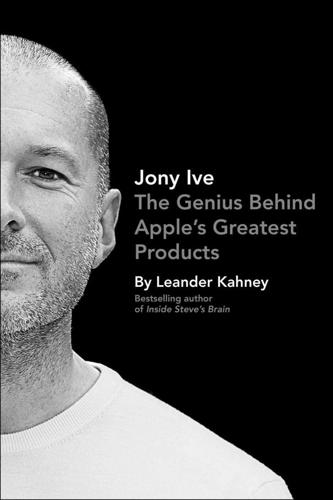
Jony Ive: The Genius Behind Apple's Greatest Products
by
Leander Kahney
Published 14 Nov 2013
With the much-anticipated twentieth anniversary of the Macintosh approaching, the decision was made to designate Spartacus as a special edition. Officially named the Twentieth Anniversary Macintosh, the new product was limited to a run of just twenty thousnd units. Apple unveiled it at Macworld in January 1997 and the first two units were given to Steve Jobs and Steve Wozniak, who had just returned to the company as advisers. To make it more memorable, the machine was hand-delivered to customers’ homes by specially trained “concierges,” who set up the machines, installed any expansion cards (along with the ugly hunchback) and showed users how to use them.
…
It has the status value of a Porsche. The fact that the machine combines computer, television and stereo system is impressive.” Like the MessagePad, the Twentieth Anniversary Macintosh (TAM) won not only kudos but awards, including the Best of Category prize for I.D. magazine’s Annual Design Review. Steve Wozniak thought it was the perfect college machine “with the computer, TV, radio, CD player and more (AV even) all in one sleek machine.” He had several at his mansion in the hills of Los Gatos above Silicon Valley. By the time the machine was pulled from the market one year after launch, however, Wozniak seemed to be the only person on the planet who liked it.
…
“Something that is not ‘important’ enough to really fix, but which will grate on those that care deeply about the appearance of their hardware . . . the very same people that are most attracted to a system like the Cube!”25 In September 2000, just a few months after the Cube’s debut, Apple announced sales were slower than expected. It was later revealed that Apple sold a paltry 150,000 units, only one-third of the volume Apple had projected. At the end of 2000, Apple reported earnings that were “substantially below expectations” for the last quarter, with a $600 million revenue shortfall.26 It was Apple’s first unprofitable quarter in three years. For Apple watchers, the news was ominous. Despite a string of hits, Apple was still on shaky ground, battling powerful foes like Microsoft and Dell, which were at the peak of their power.

Robot Rules: Regulating Artificial Intelligence
by
Jacob Turner
Published 29 Oct 2018
Our approach remembers old tasks by selectively slowing down learning on the weights important for those tasks.36 Other research projects have focused on AI’s ability to plan and “imagine” possible consequences of its actions under conditions of uncertainty—another step in the progression from narrower to more general AI.37 Leading technology companies are now focusing dedicated projects on multipurpose AI.38 Indeed, to accomplish many everyday tasks requires not just one discrete acumen, but rather multiple skills. Apple co-founder Steve Wozniak alluded to this point when he suggested in 2007 that we would never develop a robot with the numerous different capabilities needed to enter an unfamiliar home and make a coffee.39 Kazuo Yano, the Corporate Chief Engineer of the Research and Development Group at technology conglomerate Hitachi, has said:Many new technologies are developed for many specific purposes… For example, mobile phones originated from phones specialized for car use.
…
You can’t program these things, you have to learn it, and you have to watch how other people make coffee. … This is a kind of logic that the human brain does just to make a cup of coffee. We will never ever have artificial intelligence. Your pet, for example, your pet is smarter than any computer”. Steve Wozniak, interviewed by Peter Moon, “Three Minutes with Steve Wozniak”, PC World, 19 July 2007. See also Luke Muehlhauser, “What Is AGI?”, MIRI, https://intelligence.org/2013/08/11/what-is-agi/, accessed 1 June 2018. 40Interview with Dr. Kazuo Yano, “Enterprises of the Future Will Need Multi-purpose AIs”, Hitachi Website, http://www.hitachi.co.jp/products/it/it-pf/mag/special/2016_02th_e/interview_ky_02.pdf, accessed 1 June 2018. 41UK Department of Transport, “The Pathway to Driverless Cars: Detailed Review of Regulations for Automated Vehicle Technologies”, UK Government Website, February 2015, https://www.gov.uk/government/uploads/system/uploads/attachment_data/file/401565/pathway-driverless-cars-main.pdf, accessed 1 June 2018. 42When in 2017 the UK’s House of Lords Science and Technology Select Committee published a report entitled “Connected and Autonomous Vehicles: The Future?”
…
See Mark Anderson and Victor Warner, Drafting and Negotiating Commercial Contracts (Haywards Heath: Bloomsbury Professional, 2016), 18. 87In some systems, the requirement for something of value to pass is known as “consideration”. 88However, it can also be the case that a contract , and indeed contractual terms, will be deemed to have been agreed by the parties as a result of their relationship. When a person buys a crate of apples, there is usually an implied term that those apples will not be full of maggots. 89Kirsten Korosec, “Volvo CEO: We Will Accept All Liability When Our Cars Are in Autonomous Mode”, Fortune, 7 October 2015, http://fortune.com/2015/10/07/volvo-liability-self-driving-cars/, accessed 1 June 2018. 90[1892] EWCA Civ 1. 91Fumio Shimpo, “The Principal Japanese AI and Robot Strategy and Research toward Establishing Basic Principles”, Journal of Law and Information Systems, Vol. 3 (May 2018). 92Dirk A.
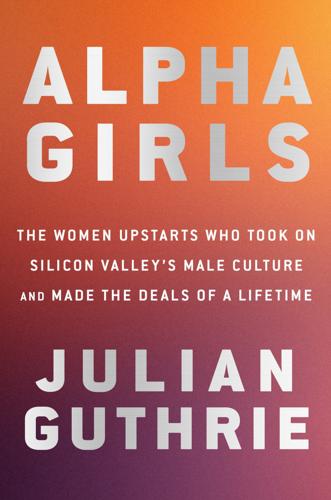
Alpha Girls: The Women Upstarts Who Took on Silicon Valley's Male Culture and Made the Deals of a Lifetime
by
Julian Guthrie
Published 15 Nov 2019
Even before she finished her master’s degree, Magdalena had gone to seven job interviews and received seven offers. Her first interview had been with Steve Jobs and Steve Wozniak of Apple. The founders invited double-e students to the LOTS computer center to hear a pitch about their three-year-old company. If the students liked what they heard, they could stay and be interviewed. Jobs, wearing wire-rimmed glasses and jeans, told Magdalena and the other double-e students that working for Apple would be like “an extension of college.” Magdalena was one of sixteen students who showed up for the interview. She loved the idea of working for Apple. Jobs had dropped out of college and spent time studying Hinduism and Buddhism in India.
…
Women, outnumbered and overmatched, were mostly reduced to entertainers, companions, wives, or housekeepers. Things were not that different in the more recent gold rush. The Valley was always a region dominated by men, from William Hewlett, Dave Packard, Bob Noyce, Gordon Moore, Andy Grove, Larry Ellison, Steve Jobs, and Steve Wozniak to, decades later, in the twenty-first century, Larry Page, Sergey Brin, Mark Zuckerberg, Elon Musk, Tim Cook, Travis Kalanick, and Marc Benioff. Mary Jane, fueled by peanut butter sandwiches packed in wax paper for the two-day journey, was under no illusion that it would be easy to navigate the old boys’ club of Sand Hill Road and Silicon Valley.
…
When he was a teenager, he and a few friends started a company called Liberty Software to make adventure games for the Atari 800. He earned extra money going to people’s homes to repair antennas and CB radios, and he worked for Apple Computer the summer before his junior year at the University of Southern California. Largely unsupervised, Marc started writing software for a game about raiding IBM’s headquarters. His manager at Apple said the game wasn’t appropriate and later suggested Marc consider a job at Oracle. They had the best salespeople in the world, he was told. In his first year at Oracle, Benioff was named rookie of the year.
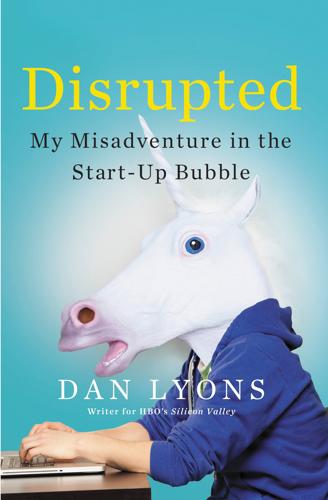
Disrupted: My Misadventure in the Start-Up Bubble
by
Dan Lyons
Published 4 Apr 2016
Then he will pause, as if he has just said something incredibly profound and wants to give you a moment to let it sink in. Then he repeats the line, and a ballroom full of marketing people cheer. But when I meet them together it occurs to me that their different personalities are probably why their partnership works. There’s a yin-and-yang quality, like the one between Steve Jobs and Steve Wozniak, the co-founders of Apple. Halligan is the Jobs figure, the corporate visionary, the guy who thinks about sales and marketing. Shah is like Woz, the nerdy software programmer. Shah is wearing scruffy jeans and a rumpled T-shirt, his usual attire. He has dark hair and a dark beard, flecked with gray. Halligan wears jeans, and a sports jacket over a button-down oxford shirt.
…
I’ve spent twenty-five years writing about technology companies, and I thought I understood this industry. But at HubSpot I’m discovering that a lot of what I believed was wrong. I thought, for example, that tech companies began with great inventions—an amazing gadget, a brilliant piece of software. At Apple Steve Jobs and Steve Wozniak built a personal computer; at Microsoft Bill Gates and Paul Allen developed programming languages and then an operating system; Sergey Brin and Larry Page created the Google search engine. Engineering came first, and sales came later. That’s how I thought things worked. But HubSpot did the opposite.
…
Many of these people have never worked anywhere else. A lot of them aren’t very good. But here, they’re in charge. And I’m stuck working under them. Eight The Bozo Explosion Apple CEO Steve Jobs used to talk about a phenomenon called a “bozo explosion,” by which a company’s mediocre early hires rise up through the ranks and end up running departments. The bozos now must hire other people, and of course they prefer to hire bozos. As Guy Kawasaki, who worked with Jobs at Apple, puts it: “B players hire C players, so they can feel superior to them, and C players hire D players.” That’s the bozo explosion, and that’s what I believe has happened at HubSpot in the course of the last seven years.
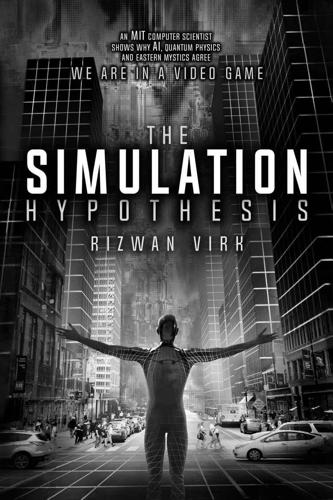
The Simulation Hypothesis
by
Rizwan Virk
Published 31 Mar 2019
Nevertheless, the video game pioneers of that time persisted, squeezing every bit of performance out of the limited hardware and memory of the day to create these early arcade games. A well-known anecdote from Silicon Valley at the time involves future Apple Computer co-founders Steve Jobs and Steve Wozniak. Jobs worked for Nolan Bushnell, the founder of Atari, and promised his boss that he could build a certain game quickly and using limited memory resources. Bushnell was skeptical but gave him the project. At night, Jobs brought in his friend, Steve Wozniak, who, created the game at night after his full-time engineering job. Wozniak, of course, as the future creator of the first Apple computers, is acknowledged today as a hardware genius. In some ways, the history of video games is the history of optimizing very limited resources.
…
I found myself wondering how far this “simulated world” extended in all directions beyond the track. What happened when no one was playing the video game? Did the characters and the buildings still exist, or did they simply cease to exist? Although I learned to program rudimentary video games myself shortly thereafter when my parents bought my brother and I a Commodore 64 (and later, an Apple II), it would be many years before I understood video game development well enough to answer these types of questions. The first game I ever created was Tic Tac Toe, basically putting blocky lines on the screen and then figuring out how to get the computer to “draw” Xs and Os on the squares selected by the players.
…
More than a decade after that, I moved to Silicon Valley at the start of the mobile gaming revolution. I designed a number of different games, including Tap Fish—one of the most popular games of its type (a resource management game, also called a simulation game), having reached more than 30 million downloads in the early days of the Apple iPhone. Later, I designed multiplayer competitive games based on popular TV shows like Penny Dreadful and Grimm and became an advisor to and investor in many video game companies. During these years, games evolved from simple adventure and arcade games to fully 3D massively multiplayer online role-playing games (MMORPGs), such as Ultima Online and World of Warcraft.
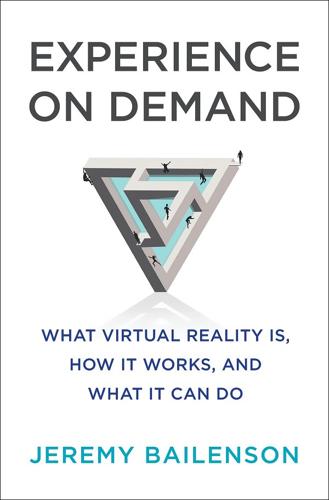
Experience on Demand: What Virtual Reality Is, How It Works, and What It Can Do
by
Jeremy Bailenson
Published 30 Jan 2018
Of course, trying to predict how a developing technology is going to affect culture is a speculative endeavor, at best. I was reminded of this while giving a talk at a technology conference in 2016 alongside Steve Wozniak, cofounder of Apple. Woz is high on VR—his first HTC Vive experience gave him goose bumps. But he cautions about overspecifying use cases. He told the story of the early days at Apple, and how when he and Steve Jobs made the Apple II, they conceived of it as a home appliance for computer enthusiasts, and believed users would use it to play games, or to store and access recipes in the kitchen. But it turned out it was good for unexpected applications.
…
An industry is already growing in Hollywood and Silicon Valley to explore VR as a space for fictional narratives, and within it storytellers from Hollywood and the gaming world, with technical help from technology companies, are beginning to take the tentative early steps in defining the grammar of virtual storytelling. Brett Leonard was a young filmmaker fresh from his hometown of Toledo, Ohio when he landed in Santa Cruz just before the beginning of the first VR boom in 1979. There he fell in with future Silicon Valley icons like Steve Wozniak, Steve Jobs, and Jaron Lanier. Jaron is also one of our most incisive and visionary thinkers about technology and its effects on human commerce and culture; at the time, as well as now, he was the very public face of virtual reality, a term he coined and popularized. Leonard was a big fan of technology and science fiction when his trip to Silicon Valley dropped him into what must have seemed the most interesting place in the world, amidst a group of people who were already playing a significant role in shaping the future.
…
See VR advocacy ageism, 84–85, 87–88, 93–95 Ahn, Sun Joo, 90–91, 114–16 AI (artificial intelligence), 225 air rage incidents, 211–12 Alito, Samuel, 65 Allen, Barbara, 203–4 Alzheimer’s, 146 Andreesen-Horowitz, 7 animal rights, 102–7 animal studies, 55–56 animated shorts, 226 anonymity, 201 Apollo missions, 108–10 Apple Computers Incorporated, 11, 195 Apple II, 11 archaeological sites, VR reconstruction of, 246 ARCHAVE system, 246 Arizona Cardinals, 16–17, 18, 33 astronomy, 108–10 AT&T, 179 athletics, 14–18, 27–28, 30–39, 100–102 attention, 36, 71, 219–20 audiovisual technology, 25–26 Augmented Reality, 71 avatar limb movements, 161, 162–66 avatars, 61–62, 86–87, 94, 99, 248–49 animal, 103–5 facial expressions and, 194–201 photorealistic, volumetric, 208 race and, 88–89 teacher, 242–44 three-dimensional, 168 vs. video, 195–200 avatar trolling, 202 aviation, 24 baby-boomers, aging of, 153 Bagai, Shaun, 176–77, 179–80, 188 Baidu, 235 Bailenson, Jeremy, 1–5, 7–9, 18, 35–36, 84, 99, 100–104, 112–13, 248–50 “Effects of Mass Media” course, 60 “The Effects of Mass Media” course at Stanford, 51 Infinite Reality, 111, 226 Virtual People class, 29–30, 58–59, 66, 242 Banaji, Mahzarin, 89 Bandura, Albert, 59–60 bandwidth, 197–98 Baron, Marty, 204 Beall, Andy, 29 “Becoming Homeless,” 98 behavior modeling, 59–65, 252–53 Belch, Derek, 29–30, 33–34 Bernstein, Lewis, 229–32 Blascovich, Jim, 226, 248 blindness, 92 Bloom, Benjamin S., 243 Bloomgren, Mike, 32 Bobo-doll study, 59–60 body adaptation, studies of, 165–68 body maps, 164–65 body movements, 181–84 measuring, 22 utilization of, 38 body transfer, 86, 92–95, 104–5 Bolas, Mark, 7, 29 Bostick, Joshua, 103–7 boundary effect, 94–95 Bower, Jim, 165 Brady, Mathew, 205–6 brain mapping, 167 brains, effect of VR on, 52–58 brain science, behavior modeling and, 60–61 BRAVEMIND, 148 Breivik, Anders Behring, 65 Falconer, Caroline, 106–7 Bridgeway Island Elementary School, 132–33 Brown, Thackery, 54 Brown, Veronica, 134 Brown v.

The Fourth Age: Smart Robots, Conscious Computers, and the Future of Humanity
by
Byron Reese
Published 23 Apr 2018
Bill Gates threw his hat in the ring on the side of the concerned: “I agree with Elon Musk and some others on this and don’t understand why some people are not concerned.” Jaan Tallinn, one of the cofounders of Skype, refers to AI as “one of the many potential existential risks.” He goes on to add, optimistically, that “if we get the AI right, then basically we’ll be able to address all the other existential risks.” Steve Wozniak, cofounder of Apple, looks at it this way: “If a computer is a hundred times better than our brain, will it make the world perfect? Probably not, it will probably end up just like us, fighting.” And finally, the Oxford University philosopher Nick Bostrom likened the current effort to build an AGI to “children playing with a bomb.”
…
They are so much a part of our lives that we literally may not be able to live without them, certainly not at our present standard of living. But our population may be large enough that without computers in the background managing everything from logistics to water treatment, their removal or incapacitation might cause a die-off of humans, especially in large cities. As Steve Wozniak said, “All of a sudden, we’ve lost a lot of control. We can’t turn off our Internet; we can’t turn off our smartphones; we can’t turn off our computers. You used to ask a smart person a question. Now who do you ask? It starts with g-o, and it’s not God.” In the 1960s and 1970s, we were building enough computers that it made sense to connect them to make one giant network.
…
We’ve already discussed at length how this came about, how the scientific method launched the Industrial Revolution and began an age of unprecedented innovation. Yet poverty remains. Yes, it has fallen substantially, but while the average per capita income on the planet is about $30 a day, a billion people get by on just $2 a day. What is their pathway out of poverty? While we can talk meaningfully about poverty rates in an apples-to-apples way starting around 1900, it bears little on our present situation, so let’s jump forward to 1980. The world’s population was four billion, and half of them lived on less than $2 a day, adjusted for inflation. By 1990, that number had fallen to 35 percent. In that year, the United Nations set a goal of halving poverty in twenty-five years.

Only Humans Need Apply: Winners and Losers in the Age of Smart Machines
by
Thomas H. Davenport
and
Julia Kirby
Published 23 May 2016
Before we leave the subject of taste, we shouldn’t neglect to mention Steve Jobs again. It might strike you as odd that, in a book about the encroachment of computers into knowledge work, the name of Apple’s iconic founder would come up in the chapter devoted to stepping aside. But note that whenever Jobs’s genius is mentioned, the emphasis is on his sensibilities—his taste. No one denies he had strong technical knowledge, but according to his cofounder, Steve Wozniak, “Steve didn’t ever code. He wasn’t an engineer and he didn’t do any original design, but he was technical enough to alter and change and add to other designs.”4 As an undergrad at Reed College, Jobs studied physics, but also literature, poetry, and calligraphy.
…
Tricia Drevets, “How to Make Money Living off the Grid,” Off the Grid News, June 25, 2014, http://www.offthegridnews.com/financial/how-to-make-money-living-off-the-grid/. 3. Heather Plett, “What It Means to ‘Hold Space’ for People, plus Eight Tips on How to Do It Well,” Heather Plett blog, March 11, 2015, http://heatherplett.com/2015/03/hold-space/. 4. Steve Wozniak, “Does Steve Jobs Know How to Code?,” response to email posted on Woz.org, http://www.woz.org/letters/does-steve-jobs-know-how-code. 5. Dan Ariely, Predictably Irrational: The Hidden Forces That Shape Our Decisions, revised and expanded edition (New York: Harper Perennial, 2010). 6. Howard Gardner, Frames of Mind: The Theory of Multiple Intelligences, 3rd ed.
…
This was the story of the late industrial revolution, which, having pulled all those workers off farms and into factories, proceeded to make most of them unnecessary with contraptions like the flying shuttle, the spinning jenny, and the power loom. And it’s a process that continues around the world. Consider Foxconn, the Chinese manufacturing subcontractor to global electronics brands like Apple. Starting in 2011, it started putting robots on the lines to perform welding, polishing, and such tasks—ten thousand of them that first year. In 2013, Chairman Terry Gou noted at Foxconn’s annual meeting that the firm now employed over a million people. But, he was quick to add: “In the future we will add one million robotic workers.”1 If that goal is realized, it will mean, of course, that some hundreds of thousands of human workers will never get hired—a loss of jobs for the local economy.
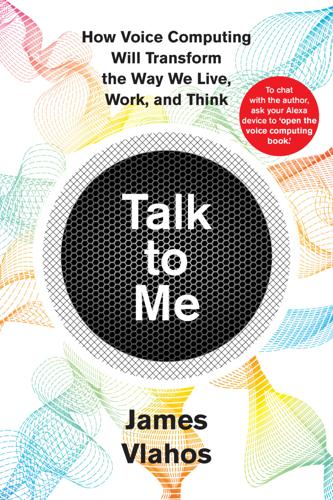
Talk to Me: How Voice Computing Will Transform the Way We Live, Work, and Think
by
James Vlahos
Published 1 Mar 2019
Titans 39 Decades before he founded Amazon: Amazon CEO Jeff Bezos on how he got a role in Star Trek Beyond, posted to YouTube on October 23, 2016, https://goo.gl/RJKBL1. 39 “build space hotels”: Luisa Yanez, “Jeff Bezos: A rocket launched from Miami’s Palmetto High,” Miami Herald, August 5, 2013, https://goo.gl/GxFrx8. 40 After the discussion with Hart: Greg Hart, interview with author, April 27, 2018. 41 “If we could build it”: this and subsequent quotes from Greg Hart come from interview with author, April 27, 2018. 41 “We think it [the project] is critical to Amazon’s success”: this and subsequent quotes from Al Lindsay, unless otherwise identified, come from interview with author, April 4, 2018. 42 Rohit Prasad, a scientist whom Amazon hired: Rohit Prasad, interview with author, April 2, 2018. 44 Bezos was reportedly aiming for the stars: Joshua Brustein, “The Real Story of How Amazon Built the Echo,” Bloomberg Businessweek, April 19, 2016, https://goo.gl/4SIi8F. 44 “hero feature”: Prasad, interview with author. 44 An article in Bloomberg Businessweek : Brustein, “The Real Story of How Amazon Built the Echo.” 45 “Amazon just surprised everyone”: Chris Welch, “Amazon just surprised everyone with a crazy speaker that talks to you,” The Verge, November 6, 2014, https://goo.gl/sVgsPi. 45 “Don’t laugh at or ignore”: Mike Elgan, “Why Amazon Echo is the future of every home,” Computerworld, November 8, 2014, https://goo.gl/wriJXE. 45 “the happiest person in the world”: this and other quotes from Adam Cheyer, unless otherwise indicated, come from interviews with author, April 19 and 23, 2018. 45 “Apple’s digital assistant was delivered”: Farhad Manjoo, “Siri Is a Gimmick and a Tease,” Slate, November 15, 2012, https://goo.gl/2cSoK. 46 Steve Wozniak, one of the original cofounders of Apple: Bryan Fitzgerald, “‘Woz’ gallops in to a horse’s rescue,” Albany Times Union, June 13, 2012, https://goo.gl/dPdHso. 46 Even Jack in the Box ran an ad: Yukari Iwatani Kane, Haunted Empire: Apple After Steve Jobs (New York: HarperCollins, 2014), 154. 46 Years later, some people who had worked: Aaron Tilley and Kevin McLaughlin, “The Seven-Year Itch: How Apple’s Marriage to Siri Turned Sour,” The Information, March 14, 2018, https://goo.gl/6e7BxM. 48 “artificially-intelligent orphan”: Bosker, “Siri Rising.” 48 “Siri’s various teams morphed”: Tilley and McLaughlin, “The Seven-Year Itch.” 48 John Burkey, who was part: John Burkey, interview with author, June 19, 2018. 49 “it’s really the first time in history”: Megan Garber, “Sorry, Siri: How Google Is Planning to Be Your New Personal Assistant,” The Atlantic, April 29, 2013, https://goo.gl/XFLPDP. 49 “We are not shipping”: Dan Farber, “Microsoft’s Bing seeks enlightenment with Satori,” CNET, July 30, 2013, https://goo.gl/fnLVmb. 50 CNN Tech ran an emblematic headline: Adrian Covert, “Meet Cortana, Microsoft’s Siri,” CNN Tech, April 2, 2014, https://goo.gl/pyoW4v. 50 “feels like a potent mashup of Google Now’s worldliness”: Chris Velazco, “Living with Cortana, Windows 10’s thoughtful, flaky assistant,” Engadget, July 30, 2015, https://goo.gl/mbZpon. 50 “arrogant disdain followed by panic”: Burkey, interview with author. 51 “I’ll start teaching it”: Mark Zuckerberg, “Building Jarvis,” Facebook blog, December 19, 2016, https://goo.gl/DyQSBN. 51 Zuckerberg might have to say a command: Daniel Terdiman, “At Home With Mark Zuckerberg And Jarvis, The AI Assistant He Built For His Family,” Fast Company, December 19, 2016, https://goo.gl/qJNIxW. 51 One lucky user who tested M: Alex Kantrowitz, “Facebook Reveals The Secrets Behind ‘M,’ Its Artificial Intelligence Bot,” BuzzFeed, November 19, 2015, https://goo.gl/bwmFyN. 52 “an experiment to see what people would ask”: Kemal El Moujahid, interview with author, September 29, 2017. 54 “just the tip of the iceberg”: Mark Bergen, “Jeff Bezos says more than 1,000 people are working on Amazon Echo and Alexa,” Recode, May 31, 2016, https://goo.gl/hhSQXc. 59 “When you speak”: Robert Hoffer, interview with author, April 30, 2018. 4.
…
“Apple’s digital assistant was delivered to us on a magic carpet of hype, promising to change everything about everything,” wrote Farhad Manjoo, an influential tech reporter, in Slate. But instead, due to poor language understanding, the “profoundly disappointing” assistant was a “gimmick and a tease.” Apple ran commercials in which Zooey Deschanel, Samuel L. Jackson, John Malkovich, and Martin Scorsese stumped for Siri. But some users, feeling that those ads made false claims, filed class-action lawsuits against Apple claiming deception. Steve Wozniak, one of the original cofounders of Apple, got his licks in, too, implying to a reporter that Siri had worked better before the company had been acquired. Even Jack in the Box ran an ad that lampooned the speech recognition of a Siri-like virtual assistant.
…
Afterword: The Last Computer 278 “Alexa is the AOL of voice”: Sophie Kleber, interview with author, July 11, 2018. 279 “I don’t think people can remember”: Adam Cheyer, interview with author, April 23, 2018. 279 “This is a race”: Dag Kittlaus, “Beyond Siri: The World Premiere of Viv with Dag Kittlaus,” presentation at TechCrunch Disrupt New York, May 9, 2016. 280 “bumbling” and “embarrassing”: Geoffrey Fowler, “Siri, already bumbling, just got less intelligent on the HomePod,” Washington Post, February 14, 2018, https://goo.gl/XTzHJz. 280 “Apple’s biggest missed opportunity”: Dwight Silverman, “As HomePod sales start, Siri is Apple’s biggest missed opportunity,” Houston Chronicle, February 6, 2018, https://goo.gl/pVs6Kv. 280 “embarrassingly inadequate”: Brian X. Chen, “Apple’s HomePod Has Arrived. Don’t Rush to Buy It,” New York Times, February 6, 2018, https://goo.gl/UDckNN. 280 “it’s as if Apple has given up entirely on Siri”: Jefferson Graham, “Apple, where’s the smarter Siri in iOS 12?”, USA Today, June 6, 2018, https://goo.gl/gTFMzv. 280 And it’s worth noting Siri’s improvements: Gene Munster and Will Thompson, “Annual Digital Assistant IQ Test—Siri, Google Assistant, Alexa, Cortana,” Loup Ventures blog post, July 25, 2018, https://is.gd/VanF69. 282 In 2018 a paltry 39 devices supported integrations with Cortana: Bret Kinsella, “Alexa and Google Assistant Battle for Smart Home Leadership, Apple and Cortana Barely Register” Voicebot.ai, May 7, 2018, https://goo.gl/bNdDUQ. 282 20,000 did so for Alexa: Bret Kinsella, “Amazon Alexa Now Has 50,000 Skills Worldwide, works with 20,000 Devices, Used by 3,500 Brands,” Voicebot.ai, September 2, 2018, https://is.gd/5znhdP. 282 Amazon had captured 65 percent of the smart home speaker market: Bret Kinsella, “Amazon Maintains Smart Speaker Market Share Lead, Apple Rises Slightly to 4.5%,” Voicebot.ai, September 12, 2018, https://is.gd/DHlBni. 282 An independent research firm took apart: “ABI Research Amazon Echo Dot Teardown: Voice Command Makes a Power Play in the Smart Home Market,” press release from ABI Research, January 17, 2017, https://goo.gl/xDctQy. 282 “We make money when people use our services”: Greg Hart, interview with author, May 21, 2018. 283 “They don’t want to be the first to do it”: this and subsequent quotes from Adam Marchick come from interview with author, May 21, 2018. 283 “If you’re Google, you’re thinking, ‘Wow,’”: this and subsequent quotes from James McQuivey come from interview with author, May 30, 2018. 283 One market research study projected: OC&C Strategy Consultants, “Voice Shopping Set to Jump to $40 Billion by 2022, Rising From $2 Billion Today,” February 28, 2018, https://goo.gl/MGFGUe. 283 Another study found that: “Amazon Echo Customers Spend Much More,” Consumer Intelligence Research Partners press release, PR Newswire, January 3, 2018, https://goo.gl/65MXmV. 284 In the first half of 2018, Google’s smart home devices outsold those of Amazon: Bret Kinsella, “Google Home Beats Amazon Echo for Second Straight Quarter in Smart Speaker Shipments, Echo Sales Fall,” Voicebot.ai, August 16, 2018, https://is.gd/5wiBAy.

Brotopia: Breaking Up the Boys' Club of Silicon Valley
by
Emily Chang
Published 6 Feb 2018
As the number of overall computer science degrees picked back up leading into the dot-com boom, more men than women were filling those coveted seats. In fact, the percentage of women in the field would dramatically decline for the next two and a half decades. APPLE UPSETS THE NERD CART As women were leaving the tech world, a new type of tech hero was taking center stage. In 1976, Apple was co-founded by Steve Wozniak, your typical nerd, and Steve Jobs, who was not your typical nerd at all. Jobs exuded a style and confidence heretofore unseen in the computer industry. He had few technical skills—Wozniak handled all that—yet Jobs was a never-before-seen kind of tech rock star.
…
The cherry on top: when the troll responded inappropriately to a tweet in which I had tagged IBM CEO Ginni Rometty, after an interview I had conducted with her, Rometty herself was alerted with several cheerful notifications from Twitter. I’ve developed the requisite thick skin, and I use a common tactic for dealing with trolls: ignoring them. I quickly scroll past the vitriolic direct replies to my Twitter account, and I never, ever use Reddit. Once an interview I conducted with Apple’s co-founder Steve Wozniak ended up on Reddit, and the response was worse than unnerving. (For the same reason, many women in tech avoid using Hacker News, the prominent start-up incubator YCombinator’s official bulletin board that has since become one of the industry’s leading message boards; the trolls are there too.)
…
“Of course I do”: Sheryl Sandberg, “Sheryl Sandberg: Bloomberg Studio 1.0 (Full Show),” interview by author, Bloomberg, Aug. 9, 2017, video, 24:16, https://www.bloomberg.com/news/videos/2017-08-10/sheryl-sandberg-bloomberg-studio-1-0-full-show-video. “broader group of employees”: “Uber Report: Eric Holder’s Recommendations for Change.” A true marvel: Steven Levy, “One More Thing: Inside Apple’s Insanely Great (or Just Insane) New Mothership,” Wired, May 16, 2017, https://www.wired.com/2017/05/apple-park-new-silicon-valley-campus. “everything an Apple employee”: Beth Spotswood, “Apple’s Campus Has Everything—Oh, Except Daycare,” SFist, May 19, 2017, http://sfist.com/2017/05/19/apples_campus_has_everything_-_oh_e.php. Because child care has proven: Rose Marcario, “Patagonia’s CEO Explains How to Make On-Site Child Care Pay for Itself,” Fast Company, Aug. 15, 2016, https://www.fastcompany.com/3062792/patagonias-ceo-explains-how-to-make-onsite-child-care-pay-for-itself.

Empire of the Sum: The Rise and Reign of the Pocket Calculator
by
Keith Houston
Published 22 Aug 2023
Its disappearance as an artifact worthy of note has been so complete that it is difficult to say with any certainty, but the sheer pace of technological change may well have had something to do with it. During the 1970s, electronics, computing, and software were evolving so rapidly that the calculator was caught up in a jumble of cause and effect. For a flavor of that foment, consider that Apple’s co-founders, Steve Wozniak and Steve Jobs, met at HP during that company’s push into calculators. The Steves’ early microcomputers, the Apple and Apple II, helped spark the home-computer revolution, which in turn gave Dan Bricklin the opportunity to perfect the first computerized spreadsheet. Mitch Kapor, who had worked for Bricklin’s publisher, stole the spreadsheet crown with his own program, Lotus 1-2-3, and with it gave the IBM PC one of its first killer apps.
…
Engineers bought HP-35s with their own money, rather than wait for their employers to process purchase orders.49 College students sold their cars to fund HP-35s. General Electric asked to buy twenty thousand units.50 Scientists working for the U.S. Army invented a training course* as an excuse to buy HP-35s as “training tools.”51 Steve Wozniak, then an HP employee and later the co-founder of Apple Computer, was hypnotized by the sleek, pocketable machine.52 And the HP-35 breached frontiers both on Earth and in heaven: climbers took them to the top of Mount Everest; TV broadcast engineers brought them on Richard Nixon’s 1972 trade mission to China; and NASA astronauts flew with them to the Skylab† space station.53 In its first year, HP sold ten thousand HP-35s each month against initial predictions of just a tenth that figure, and would likely have sold more had there been any spare capacity to make them.
…
He showed Bricklin and Frankston what he considered to be the front runners: a Commodore PET, a Radio Shack TRS-80, and an Apple II. The last of these Fylstra had bought directly from Steve Jobs, one of Apple’s founding partners, and quite aside from the machine’s technical merits, he was convinced that Apple was destined for greater things. Accordingly, Bricklin borrowed Fylstra’s square, beige Apple II and set to work on a new prototype.22 It was on that Apple II that Bricklin’s electronic spreadsheet came to life—and where his wildest ideas went to die. Out went the heads-up display and in came the Apple’s monochrome monitor. Out went the mouse and in came the Apple’s “game paddle,” a kind of primitive joystick for playing games like Pong.

All Your Base Are Belong to Us: How Fifty Years of Video Games Conquered Pop Culture
by
Harold Goldberg
Published 5 Apr 2011
Tobey spent most of his time at the computer trying to make a game that was as close to real life as a computer in the 1980s could make it. Through word of mouth, Tobey’s flying and shooting game based on F-15 fighter jets came to the attention of Apple’s Steve Wozniak when Tobey was just sixteen. Wozniak was wowed at the sound, graphics, and game play. He kept saying, “This can’t be done on the Apple II. I can’t believe it. This can’t be done.” He gave Tobey a calling card and added a note to Trip Hawkins, which read, “Please consider this flight simulator as the finest Apple game ever done.” Hawkins didn’t waste any time. He wanted to make a deal right away. Tobey’s parents came with him to EA’s offices to oversee a lucrative royalty deal for Skyfox, a game that would eventually sell more than a million copies.
…
It was precious gold to the principals of Atari, and it would only become more valuable as the decade progressed. Atari’s arcade business was still thriving, and Home Pong exceeded sales expectations, and demand exceeded supply. Alcorn hired an unkempt and unshaven Steve Jobs, who in turn asked his best friend, the diffident genius Steve Wozniak, for help with what would be one of Atari’s most popular additions to its ever expanding library. Without telling Alcorn, Bushnell asked Jobs to help him streamline the innards of a brick-breaking arcade game called Breakout. Bushnell wanted to save money because the chips used in each arcade machine were still pricey at the time.
…
When he finished, he still couldn’t find the right job in the nascent world of games. So he took at job at Apple Computer. As employee number sixty-eight and the company’s inaugural MBA, Hawkins was the first person at Apple to tackle the job of marketing. Within a year, Hawkins had worked his way up to an executive position at Apple. He was in the right place at the right time. Apple was the “it” company. Like Apple today, with the iPod and iPhone, the company could do little wrong. The media hyped the Apple II personal computers, and business (“an elixir for U.S. industry,” glowed the New York Times) and families loved the quality the technicians put into each piece of equipment.
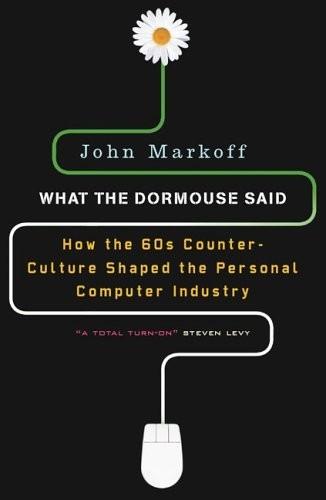
What the Dormouse Said: How the Sixties Counterculture Shaped the Personal Computer Industry
by
John Markoff
Published 1 Jan 2005
At various times Engelbart has said that he found the original article in the library and at other times he has said he believed he first read the Life account of Vannevar Bush’s Memex. Whatever the case, it had a defining impact on him. 5.Vannevar Bush, “As We May Think,” Atlantic Monthly, July 1945. 6.Lowood and Adams, oral history. 7.Ibid. Twenty years later, a young Steve Wozniak, then a brand-new HP engineer, would ask the company if they wanted to sell a personal computer. HP said it wasn’t interested, and Wozniak went off to cofound Apple Computer. It was the second time the Silicon Valley pioneer missed an opportunity to define the future of computing. 8.Ibid. 9.Jack Goldberg, Stanford Research Institute, e-mail to author. 10.Author interview, Charles Rosen, Menlo Park, Calif., October 10, 2001. 11.Douglas C.
…
Or are you buying time on a time-sharing service? If so you might like to come to a gathering of people with like-minded interests. Exchange information, swap ideas, talk shop, help work on a project, whatever…13 One person who saw the flyer was Allen Baum, who was working at Hewlett-Packard at the time with his friend Steve Wozniak. The two had met in high school when Baum had seen Wozniak sitting in his homeroom class drawing strange graphics in a notebook. “What are you doing?” Baum asked. “I’m designing a computer,” was Wozniak’s reply. It turned out that Baum had on his own become intrigued with computers just months earlier after his father, who had moved the family from the East Coast, took a job at Stanford Research Institute.
…
It seemed inevitable that the old order would collapse and that a different, more spiritual path—to somewhere—lay just ahead. For some of Silicon Valley’s most influential figures, the connection between personal computing and the counterculture has not been forgotten. Early in 2001, I met with Apple’s cofounder, Steve Jobs. I have interviewed Jobs dozens of times over two decades and have come to know his moods well. This was not one of our better conversations. A photographer had accompanied me, and if there is one way to insure that Apple’s mercurial chief executive will be irritated, it is to attempt to take his picture during an interview. After only a handful of photographs, Jobs threw the photographer out, and things went downhill from there.
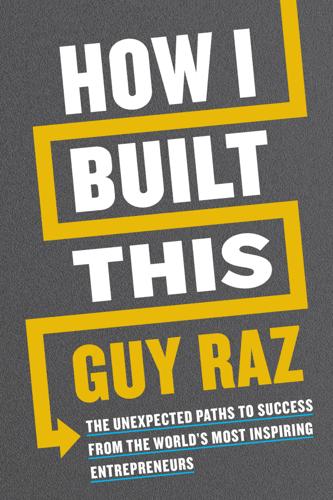
How I Built This: The Unexpected Paths to Success From the World's Most Inspiring Entrepreneurs
by
Guy Raz
Published 14 Sep 2020
Having somebody who you totally trust, who’s totally committed, who shares your vision and yet has a little bit different set of skills, and also acts as a check on you—and just the benefit of sparking off of somebody who’s got that kind of brilliance—it’s not only made it fun, but it’s really led to a lot of success.” In a 1985 Playboy interview, Apple co-founder Steve Jobs talked about the importance of both his partner Steve Wozniak’s differing interests and their shared lack of a vision. “Neither of us had any idea that this would go anywhere,” Jobs said. “Woz was motivated by figuring things out. He concentrated more on the engineering and proceeded to do one of his most brilliant pieces of work, which was the disk drive that made the Apple II a possibility. I was trying to build the company . . . I don’t think it would have happened without Woz and I don’t think it would have happened without me.”
…
As for Warren Buffett and his part in that conversation with Bill Gates in 1998, he was in complete agreement about the importance of picking people: “I’ve had a partner like that, Charlie Munger, for a lot of years, and it does for me exactly what Bill is talking about.” As unlikely as many of these successful partnerships seem, to me at least, they do not appear to be entirely the product of chance. Adam and Eric were childhood friends. Gates and Allen went to high school together. Steve Wozniak lived across the street from Steve Jobs’s only friend at the Cupertino, California, high school Jobs attended. Jen Rubio and Steph Korey worked together. Charlie Munger worked in Warren Buffett’s grandfather’s store. There are also countless marriages at the center of the founding of great brands: Kate Spade, Dermalogica, Stacy’s Pita Chips, Drybar, Lonely Planet, Melissa & Doug, to name just a few.
…
A beautiful four-bedroom house on the top of a hill overlooking San Francisco Bay might run you into the multiple millions of dollars. But take that same house, with the same amount of land, and move it to the bottom of that hill, next to a fire station, and you’re looking at a piece of property worth only half as much, if you’re lucky. This kind of raw “apples to apples” comparison is not really what real estate titans are referring to, though, when they talk about the value of a property and the primacy of location. What they are talking about is the power of location in the context of the subjective needs and preferences of individual buyers. For parents with young children, a mediocre three-bedroom house in a great school district is better, or more valuable to them, than a great four-bedroom house in a mediocre school district.
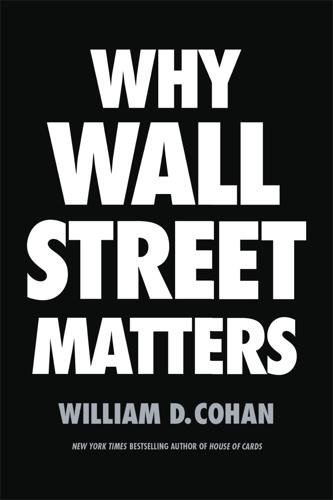
Why Wall Street Matters
by
William D. Cohan
Published 27 Feb 2017
One of the main reasons the Securities and Exchange Commission was created in the wake of the stock market crash of 1929 was to provide investors, or potential investors, with more information about the companies that wanted their money and to try to thwart charlatans. The Apple prospectus resulted from regulators at the SEC making sure that Apple complied with disclosure rules in ways that were not required before the creation of the SEC. This is a good thing. Objectively speaking, we learn from the Apple prospectus that there would be no Apple, at least in its present form, without Wall Street. The prospectus explains that Apple had a relatively large group of early investors who supported the company from its inception in 1976, when Steve Jobs and Steve Wozniak, the two founders, “designed, developed and assembled the Apple I, a microprocessor-based computer consisting of a single printed circuit board.”
…
Rock had a 1.3 percent stake in Apple. There were other venture capitalists, too, and together they owned another 8.7 percent of Apple before its IPO. As for Jobs, then twenty-five years old, and Wozniak, then thirty years old, they had stakes in Apple of 15 percent and 7.9 percent, respectively. A. C. Markkula Jr., Apple’s chief marketing executive since May 1977 and also the chairman of the board of directors, had a 14 percent stake. Michael Scott, Apple’s short-lived first CEO, bought his stake of nearly 1.3 million shares for a penny a share when he joined Apple in May 1977. The venture capitalists backing Apple did so for one reason: They were hoping to make money.
…
Apple’s success allows it to buy new equipment and to build new plants—including a space-age, $5 billion circular headquarters in Cupertino, California—and, of course, it allows Apple to design and to build new groundbreaking products, such as the iPod, the iPhone, and the Apple Watch, and to dream about what the future will look like, whether it includes the Apple car or the Apple personal transporter, like The Jetsons. I know that in the current political climate, that might sound like a heavy dose of corporate pabulum, courtesy of a Wall Street or Apple flack, but here’s the point: It’s absolutely, demonstrably true. Companies like Apple need Wall Street to achieve their destiny and to become great. Admittedly, Apple’s products are first-world luxuries. But their appeal goes well beyond the pockets of rich Westerners.
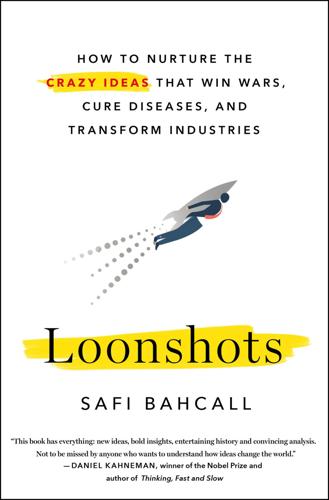
Loonshots: How to Nurture the Crazy Ideas That Win Wars, Cure Diseases, and Transform Industries
by
Safi Bahcall
Published 19 Mar 2019
WHEN MOSES DOUBLES DOWN The facts of Jobs’s forced exit from Apple in 1985, and his path to the mess at NeXT, have been well laid out. In 1975, Steve Wozniak combined a microprocessor, keyboard, and screen into one of the earliest personal computers. Jobs convinced Wozniak to quit his job and start a company. After some initial success with their Apple I and II, however, competitors quickly passed Apple by. In 1980, Atari and Radio Shack (TRS-80) sold roughly seven times as many computers as Apple. By 1983, Commodore dominated the market, with the IBM PC, launched only two years earlier, a close second. Apple’s share had dropped to less than 10 percent and was shrinking rapidly.
…
During Steve Jobs’s first stint at Apple, he called his loonshot group working on the Mac “pirates” or “artists” (he saw himself, of course, as the ultimate pirate-artist). Jobs dismissed the group working on the Apple II franchise as “regular Navy.” The hostility he created between the two groups, by lionizing the artists and belittling the soldiers, was so great that the street between their two buildings was known as the DMZ—the demilitarized zone. The hostility undermined both products. Steve Wozniak, Apple’s cofounder along with Jobs, who was working on the Apple II franchise, left, along with other critical employees; the Mac launch failed commercially; Apple faced severe financial pressure; Jobs was exiled; and John Sculley took over (eventually rescuing the Mac and restoring financial stability).
…
He referred to the rest of the company, developing the Apple II franchise, as bozos. Apple II engineers took to wearing buttons with a circle and line running through an image of Bozo the Clown. Wozniak, an engineer with the demeanor of a teddy bear, was widely beloved at the company and in the industry. He resigned, openly complaining about the demoralizing attacks. Departures in the Apple II group became so common that one joke ran, “If your boss calls, be sure to get his name.” The toxicity spread. Key designers on the Macintosh side soon began leaving as well. It didn’t take long for the Apple Board of Directors and its recently hired CEO, John Sculley, to conclude the dysfunction was not sustainable.

Future Crimes: Everything Is Connected, Everyone Is Vulnerable and What We Can Do About It
by
Marc Goodman
Published 24 Feb 2015
In the early days of hacking, it was the telephone system that was the target of hackers’ attention as so-called phone phreaks manipulated the network to avoid the sky-high costs of long-distance calls. Let’s not forget two hackers who spent part of their youth back in 1971 building “blue boxes,” devices capable of hacking the phone network and making free calls: Steve Wozniak and Steve Jobs. The pair sold blue boxes to students at UC Berkeley as a means of making money that would effectively help fund their other small start-up, the Apple computer company. As time passed, other notable hackers emerged, such as Kevin Mitnick and Kevin Poulsen. Mitnick famously broke into the Digital Equipment Corporation’s computers at the age of sixteen and went on to a string of such cyber intrusions, earning him the FBI’s ire and the distinction of being “America’s most wanted hacker.”
…
Crime, Inc. is out there busily recruiting minions for its efforts. Shouldn’t we be doing the same? People of all stripes and backgrounds can help with these endeavors—young, old, and even some hackers who surely have the skill set to make a difference, should they wish to direct their talents for public benefit. As the Apple co-founder Steve Wozniak reminds us, “Some challenging of the rules is good.” We need to help create opportunities, particularly for young people, to channel their considerable talents and energies for good, lest Crime, Inc. engage them for ill. The exponential nature of technology and the linear response of government mean we will need many more hands on deck to help build a safe and stable society that won’t destroy itself.
…
For the criminal angle, see David Shamah, “Hack Attacks on Infrastructure on the Rise, Experts Say,” Times of Israel, Jan. 30, 2014. 18 President Obama when he noted: Barack Obama, “Remarks by the President on Securing Our Nation’s Cyber Infrastructure,” The White House Office of the Press Secretary, May 29, 2009. 19 Each plays its role: “War in the Fifth Domain,” Economist, July 5, 2010. 20 Let’s not forget two hackers: Phil Lapsley, “The Definitive Story of Steve Wozniak, Steve Jobs, and Phone Phreaking,” Atlantic, Feb. 20, 2013. 21 As time passed, other notable hackers: Kevin D. Mitnick and William L Simon, Ghost in the Wires: My Adventures as the World’s Most Wanted Hacker (New York: Little, Brown, 2012). 22 Poulsen’s ingenious 1990 hack: Jonathan Littman, “The Last Hacker,” Los Angeles Times, Sept. 12, 1993. 23 For example, in October 2013: “Adobe Hack: At Least 38 Million Accounts Breached,” BBC, Oct. 30, 2013. 24 But what changed in that attack: Brian Krebs, “Adobe to Announce Source Code, Customer Data Breach,” Krebs on Security, Oct. 3, 2013. 25 Yep, the company that is selling: Darlene Storm, “AntiSec Leaks Symantec pcAnywhere Source Code After $50K Extortion Not Paid,” Computerworld, Feb. 7, 2012. 26 Traditional organized crime groups: The Hague, Threat Assessment: Italian Organized Crime, Europol Public Information, June 2013; Nir Kshetri, The Global Cybercrime Industry: Economic, Institutional, and Strategic Perspectives (London: Springer, 2010), 1; Chuck Easttom, Computer Crime, Investigation, and the Law (Boston: Cengage Learning, 2010), 206. 27 These newly emerging: Mark Milian, “Top Ten Hacking Countries,” Bloomberg, April 23, 2013. 28 New syndicates: Brian Krebs, “Shadowy Russian Firm Seen as Conduit for Cybercrime,” Washington Post, Oct. 13, 2007; Verisign iDefense, The Russian Business Network: Survey of a Criminal ISP, June 27, 2007. 29 RBN famously provides: Trend Micro, The Business of Cybercrime: A Complex Business Model, Jan. 2010. 30 ShadowCrew operated the now-defunct Web site: Kevin Poulsen, “One Hacker’s Audacious Plan to Rule the Black Market in Stolen Credit Cards,” Wired, Dec. 22, 2008. 31 Founded by the notorious criminal hacker: James Verini, “The Great Cyberheist,” New York Times Magazine, Nov. 10, 2010. 32 The number and reach: John E.

Elon Musk
by
Walter Isaacson
Published 11 Sep 2023
“He is a drama magnet,” says Kimbal. “That’s his compulsion, the theme of his life.” * * * When I was reporting on Steve Jobs, his partner Steve Wozniak said that the big question to ask was Did he have to be so mean? So rough and cruel? So drama-addicted? When I turned the question back to Woz at the end of my reporting, he said that if he had run Apple, he would have been kinder. He would have treated everyone there like family and not summarily fired people. Then he paused and added, “But if I had run Apple, we may never have made the Macintosh.” And thus the question about Elon Musk: Could he have been more chill and still be the one launching us toward Mars and an electric-vehicle future?
…
In addition, he came to a realization: he had a fanatic love of video games and the skills to make money creating them, but that was not the best way to spend his life. “I wanted to have more impact,” he says. King of the road One unfortunate trend in the 1980s was that cars and computers became tightly sealed appliances. It was possible to open up and fiddle with the innards of the Apple II that Steve Wozniak designed in the late 1970s, but you couldn’t do that with the Macintosh, which Steve Jobs in 1984 made almost impossible to open. Similarly, kids in the 1970s and earlier grew up rummaging under the hoods of cars, tinkering with the carburetors, changing spark plugs, and souping up the engines.
…
After Musk took his turn zipping around and marveling at the car’s super-quick but silent acceleration, he agreed to invest $9 million more in the company. Whose company? One issue with startups, especially those with multiple founders and funders, is who should be in charge. Sometimes the alpha male wins, as when Steve Jobs marginalized Steve Wozniak and when Bill Gates did the same to Paul Allen. At other times it’s messier, especially when different players feel that they are the founder of a company. Both Eberhard and Musk considered themselves to be the main founder of Tesla. In Eberhard’s mind, he had come up with the idea, enlisted his friend Tarpenning, registered a company, chosen a name, and gone out and found funders.
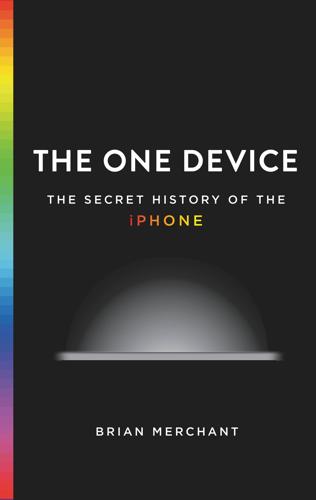
The One Device: The Secret History of the iPhone
by
Brian Merchant
Published 19 Jun 2017
He grew up in Florida with a love of tinkering and gadgets; he was more Wozniak than Jobs, and experimented with hardware in his spare time. “I was a hacker, and hackers, well, from that era—hackers meant you could build a computer from scratch. So, I was building computers,” he says, some based on the motherboard designs of Steve Wozniak. “It was unfortunate, I’ll call it, to live in Florida, outside of where the [Silicon] Valley stuff was going on.” He graduated with a degree in electrical engineering from the Florida Institute of Technology and went to work for IBM. He stayed at the company for sixteen years, rising through the ranks thanks to his mastery of both hardware and software.
…
John Draper, another legendary hacker who came to be known as Captain Crunch, found that the pitch of a toy whistle that came free in Cap’n Crunch cereal boxes could be used to open long-distance call lines; he built blue boxes, electronic devices that generated the tone, and demonstrated the technology to a young Steve Wozniak and his friend Steve Jobs. Jobs famously turned the blue boxes into his first ad hoc entrepreneurial effort; Woz built them, and Jobs sold them. The culture of hacking, reshaping, and bending consumer technologies to one’s personal will is as old as the history of those technologies. The iPhone is not immune.
…
But there are other situations—such as when photos that Apple helped law enforcement unlock sent two people who had sexually abused a sixteen-month-old child to prison—that help make a case for Apple’s cooperation. (Which, it should be added, the company has provided in the past: Apple has reportedly opened over seventy iPhones at the behest of law enforcement, though many of those were before the Secure Enclave necessitated a novel software hack from Apple.) There may need to be a mechanism for law enforcement to access this stuff, but how we do that in the age of the Secure Enclave is an open question. For Apple, security is a question of product too.
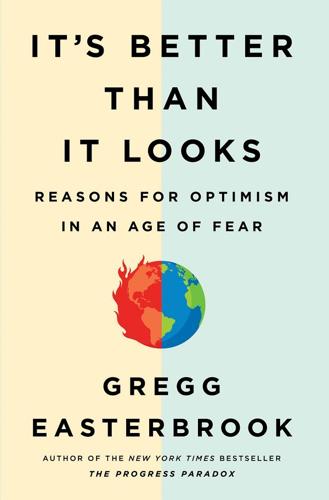
It's Better Than It Looks: Reasons for Optimism in an Age of Fear
by
Gregg Easterbrook
Published 20 Feb 2018
But danger is real. Three generations ago, the advent of thermonuclear explosions appeared to doom humanity; instead, the world has grown more peaceful since then. In the next generation, artificial intelligence may become an existential threat. In 2015, Elon Musk, Martin Rees, Francesca Rossi, Steve Wozniak, and other luminaries of the tech and physics realms warned that artificial intelligence could be a great benefit but also could cause society great harm. The time to impose regulation on artificial intelligence, they said, is now—before chips are capable of thinking for themselves. Laws have mandated basic safety for a range of products, including cars and flying machines.
…
Japan, the nation with the longest life spans: See the “Life Expectancy” page maintained by the World Health Organization, detailing life expectancy around the globe, at http://www.who.int/gho/mortality_burden_disease/life_tables/situation_trends/en/. The Yale University computer scientist David Gelernter forecast: David Gelernter, The Tides of Mind (New York: Liveright, 2016). Elon Musk, Martin Rees, Francesca Rossi, Steve Wozniak, and other luminaries: See “Research Priorities for Robust and Beneficial Artificial Intelligence,” an open letter with over 8,000 signatories to date, available at Future of Life Institute, https://futureoflife.org/ai-open-letter/. Alan Robock of Rutgers University and Owen Toon of the University of Colorado calculate: Alan Robock and Owen Toon, “The Climate Impacts of Nuclear War,” Bulletin of the Atomic Scientists, 2012.
…
If instead the gauge is purchasing power parity, China looks better. Russia remains an economic basket case under all forms of measurement. As Deirdre McCloskey, an economic historian… has written: Deirdre McCloskey, Bourgeois Equality (Chicago: University of Chicago Press, 2016). In early 2017, the market capitalization of Apple reached $800 billion: Anita Balakrishnan, “Apple Market Cap Tops $800 Billion,” CNBC, May 8, 2017. Most of the world’s great colleges and universities are in the United States: Benjamin Wildavsky, Reinventing Higher Education (Cambridge, MA: Harvard Education Press, 2011). “dissent is not permissible,” The Atlantic said in 2016: James Fallows, “China’s Great Leap Backward,” The Atlantic, December 2016.
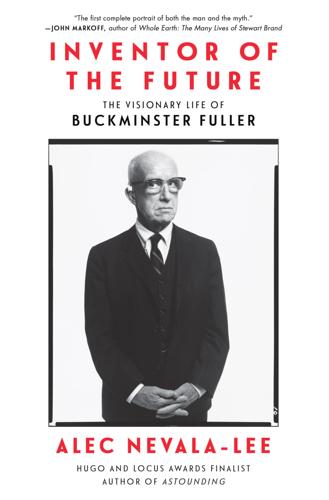
Inventor of the Future: The Visionary Life of Buckminster Fuller
by
Alec Nevala-Lee
Published 1 Aug 2022
“but maybe better”: Steve Wozniak with Gina Smith, iWoz: Computer Geek to Cult Icon—How I Invented the Personal Computer, Co-founded Apple, and Had Fun Doing It (New York: W. W. Norton, 2006), 246. Fuller and the World Game: Hunter, “Graphics in the Sky,” 86. legacy at Apple: Jobs later hired RBF’s former associate Norman Foster to design the company’s corporate headquarters. Foster thought that RBF was only “lurking in the background” of Apple Park (Norman Foster, interviewed by author, October 30, 2020), but he credited him afterward for inspiring the glass dome of the Apple Marina Bay Sands store in Singapore (Norman Foster, “Buckminster Fuller—File for Future,” provided to the author by Foster).
…
In his classic book Hackers: Heroes of the Computer Revolution, writer Steven Levy described it as “a textbook example” of Fuller’s concept of synergy, in which the whole became more than the sum of its parts, and with Felsenstein as its moderator, it grew into the birthplace of an entire industry. Fuller was there in spirit as well. Toward the back of the garage sat Steve Wozniak, who was working with Jobs on the computer that would be sold as the Apple II. When they needed an industrial designer for the housing, they hired Jerry Manock, a graduate of the legendary product design program at Stanford University. Its founder, John E. Arnold, had been a pioneer of creative engineering, with a curriculum grounded in Fuller’s philosophy.
…
“the twentieth century’s Leonardo da Vinci”: Steve Wozniak, blurb for Lloyd Steven Sieden, ed., A Fuller View: Buckminster Fuller’s Vision of Hope and Abundance for All (Studio City, CA: Divine Arts, 2011). Wozniak was echoing a frequent comparison, with the most common version—“the Leonardo da Vinci of the twentieth century”—often attributed to Marshall McLuhan, who actually praised RBF as “the twentieth century Pythagoras” (McLuhan to Bruce Carrick, September 10, 1974, B375-V6). Janek Kaliczak: Itinerary, February 1, 1982. “the Han Solo of the Apple world”: David Hunter, “Graphics in the Sky with Diamond Vision,” Softalk, July 1983, 88.
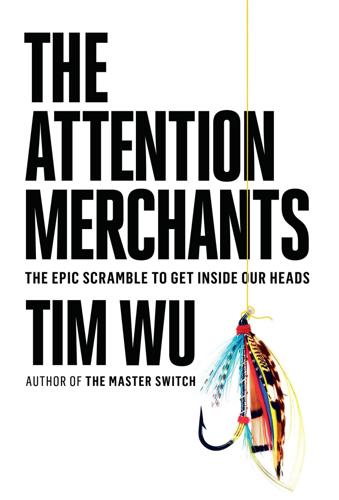
The Attention Merchants: The Epic Scramble to Get Inside Our Heads
by
Tim Wu
Published 14 May 2016
In this way video games were arguably the killer app—the application that justifies the investment—of many computers in the home. As a game machine, sometimes used for other purposes, computers had gained their foothold. There they would lie for some time, a sleeping giant.7 * * * * Breakout was written by Apple’s cofounders, Steve Wozniak and Steve Jobs, as a side project, as described in the Master Switch, chapter 20. CHAPTER 16 AOL PULLS ’EM IN In 1991, when Steve Case, just thirty-three years old, was promoted to CEO of AOL, there were four companies, all but one lost to history, that shared the goal of trying to get Americans to spend more leisure time within an abstraction known as an “online computer network.”
…
In the end, AOL was no corporate Ozymandias; though a failure, it would have a lasting and monumental legacy. True to its name, it got America online—reaching out to one another, ready for the biggest attention harvest since television. * * * *1 Before this, personal computers had come in the now unrecognizable form of hobbyist kits, assembled and programmed by guys like Steve Wozniak of Apple. For more, see The Master Switch, 274–75. *2 Example: +++, ATDT (416) 225-9492. *3 The movie also proved an opportunity for the first meetings between AOL and Time Warner executives: Steve Case and Jerry Levin met at a White House screening of the film. See The Master Switch, chapter 19
…
Matthew Panzarino, “Apple’s Tim Cook Delivers Blistering Speech on Encryption, Privacy,” TechCrunch, June 2, 2015, http://techcrunch.com/2015/06/02/apples-tim-cook-delivers-blistering-speech-on-encryption-privacy/. 2. Ibid. 3. Tim Cook, “Apple’s Commitment to Your Privacy,” Apple, http://www.apple.com/privacy/. 4. Robin Anderson, Consumer Culture and TV Programming (Boulder, CO: Westview Press, 1995). 5. Richard Serra and Carlota Fay Schoolman, “Television Delivers People,” Persistence of Vision—Volume 1: Monitoring the Media (1973), video. 6. Farhad Manjoo, “What Apple’s Tim Cook Overlooked in His Defense of Privacy,” New York Times, June 10, 2015, http://www.nytimes.com/2015/06/11/technology/what-apples-tim-cook-overlooked-in-his-defense-of-privacy.html?

Surveillance Valley: The Rise of the Military-Digital Complex
by
Yasha Levine
Published 6 Feb 2018
He also launched the Good Business Network, a corporate consulting company that applied his counterculture public relations strategies to problems faced by clients such as Shell Oil, Morgan Stanley, Bechtel, and DARPA.31 He also organized an influential computer conference that brought together leading computer engineers and journalists.32 It was called, simply, “Hackers’ Conference” and was held in Marin County in 1984. About 150 of the country’s top computer geniuses attended, including Apple’s Steve Wozniak. Brand cleverly stage-managed the event to give the group maximum cultural cachet. To hear him and other believers tell it, the event was the “Woodstock of the computer elite!” Newspaper accounts regaled readers with tales of strange nerds with fantastical visions of the future. “Giving a computer self-hood.
…
The Electronic Frontier Foundation was founded by Lotus Notes creator Mitch Kapor, cattle rancher and Grateful Dead songwriter John Perry Barlow, and early Sun Microsystems employee John Gilmore. It started out with a vague mission: to defend people’s civil liberties on the Internet and to “find a way of preserving the ideology of the 1960s” in the digital era. From its first days, EFF had deep pockets and featured an impressive roster: Stewart Brand and Apple’s Steve Wozniak were board members, while press outreach was conducted by Cathy Cook, who had done public relations for Steve Jobs. It did not take long for EFF to find its calling: lobbying Congress on behalf of the budding Internet service providers that came out of the NSFNET network and pushing for a privatized Internet system, where the government stayed pretty much out of the way—“Designing the Future Net” is how EFF’s Barlow described it. 103.
…
That same year, Apple Computer released its “1984” ad for the Macintosh. Directed by Ridley Scott, who had just wowed audiences with the dystopian hit Blade Runner, and aired during the Super Bowl, Apple’s message could not have been more clear: forget what you know about IBM or corporate mainframes or military computer systems. With Apple at the helm, personal computers are the opposite of what they used to be: they are not about domination and control but about individual rebellion and empowerment. “In a striking departure from the direct, buy-this-product approach of most American corporations, Apple Computer introduced its new line of personal computers with the provocative claim that Macintosh would help save the world from the lockstep society of George Orwell’s novel,” reported the New York Times.36 Interestingly, the paper pointed out that the “1984” ad had grown out of another campaign that the company had abandoned but that had explicitly talked about the ability to misuse computers.

Blockchain Revolution: How the Technology Behind Bitcoin Is Changing Money, Business, and the World
by
Don Tapscott
and
Alex Tapscott
Published 9 May 2016
In doing so, IBM saved $900 million a year developing its own proprietary systems and created a platform on which it built a multibillion-dollar software and services business. Experience shows that long-term sustainability of volunteer communities can be challenging. In fact, some of the more successful communities have found ways to compensate members for their hard work. As Steve Wozniak said to Stewart Brand, “Information should be free, but your time should not.”19 In the case of Linux, most of the participants get paid by companies like IBM or Google to ensure that Linux meets their strategic needs. Linux is still an example of social production. Benkler told us, “The fact that some developers are paid by third parties to participate does not change the governance model of Linux, or the fact that it is socially developed.”
…
Once machines have intelligence and the ability to learn, how quickly will they become autonomous? Will military drones and robots, for example, decide to turn on civilians? According to researchers in AI, we’re only years, not decades, away from the realization of such weapons. In July 2015, a large group of scientists and researchers, including Stephen Hawking, Elon Musk, and Steve Wozniak, issued an open letter calling for a ban on the development of autonomous offensive weapons beyond meaningful human control.53 “The nightmare headline for me is, ‘100,000 Refrigerators Attack Bank of America,’” said Vint Cerf, widely regarded as the father of the Internet. “That is going to take some serious thinking not only about basic security and privacy technology, but also how to configure and upgrade devices at scale,” he added, noting that no one wants to spend their entire weekend typing IP addresses for each and every household device.54 We do not recommend broad regulation of DAEs and the IoT or regulatory approvals.
…
For one, “You don’t require all the legacy infrastructure or institutions that make up Wall Street today. . . . Not only can you issue these assets on the blockchain, but you can create systems where I can have an instantaneous atomic transaction where I might have Apple stock in my wallet and I want to buy something from you. But you want dollars. With this platform I can enter a single atomic transaction (i.e., all or none) and use my Apple stock to send you dollars.”48 Is it really that easy? The battle to reinvent the financial services industry differs from the battle for e-commerce in the early days of the Web. For businesses like Allaire’s to scale, they must facilitate one of the largest value transfers in human history, moving trillions of dollars from millions of traditional bank accounts to millions of Circle wallets.

The Rise of the Network Society
by
Manuel Castells
Published 31 Aug 1996
The machine was a primitive object, but it was built as a small-scale computer around a microprocessor. It was the basis for the design of Apple I, then of Apple II, the first commercially successful micro-computer, realized in the garage of their parents’ home by two young school drop-outs, Steve Wozniak and Steve Jobs, in Menlo Park, Silicon Valley, in a truly extraordinary saga that has by now become the founding legend of the Information Age. Launched in 1976, with three partners and $91,000 capital, Apple Computers had by 1982 reached $583 million in sales, ushering in the age of diffusion of computer power. IBM reacted quickly: in 1981 it introduced its own version of the microcomputer, with a brilliant name: the Personal Computer (PC), which became in fact the generic name for microcomputers.
…
One such gathering was the Home Brew Computer Club, whose young visionaries (including Bill Gates, Steve Jobs, and Steve Wozniak) would go on to create in the following years up to 22 companies, including Microsoft, Apple, Comenco, and North Star. It was the club’s reading, in Popular Electronics, of an article reporting Ed Roberts’s Altair machine which inspired Wozniak to design a microcomputer, Apple I, in his Menlo Park garage in the summer of 1976. Steve Jobs saw the potential, and together they founded Apple, with a $91,000 loan from an Intel executive, Mike Markkula, who came in as a partner. At about the same time Bill Gates founded Microsoft to provide the operating system for microcomputers, although he located his company in 1978 in Seattle to take advantage of the social contacts of his family.
…
But a few indications seem to point to the fact that they were intentionally trying to undo the centralizing technologies of the corporate world, both out of conviction and as their market niche. As evidence, I recall the famous Apple Computer 1984 advertising spot to launch Macintosh, in explicit opposition to Big Brother IBM of Orwellian mythology. As for the countercultural character of many of these innovators, I shall also refer to the life story of the genius developer of the personal computer, Steve Wozniak: after quitting Apple, bored by its transformation into another multinational corporation, he spent a fortune for a few years subsidizing rock groups that he liked, before creating another company to develop technologies of his taste.
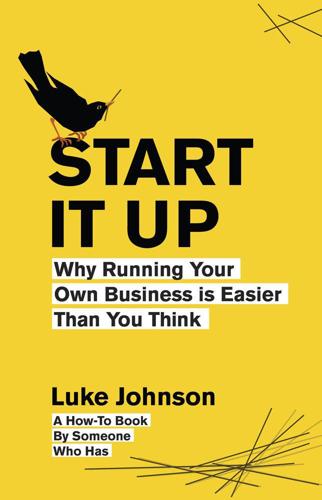
Start It Up: Why Running Your Own Business Is Easier Than You Think
by
Luke Johnson
Published 31 Aug 2011
Spouses and children become far more important to a founder than their business and the partnership that created it. They make some money, the hunger and ambition abate, and perhaps they decide to give up all the striving for a more settled life. Illness can also intervene. At both Microsoft and Apple, a single founder of each remains involved and famous: Bill Gates and Steve Jobs. But in each case there was a co-founder who dropped out through ill-health (Paul Allen and Steve Wozniak respectively). The fact is that running large organizations takes real stamina and many find the intensity and responsibilities too onerous. Failure tends to bring out the knives. Everyone starts blaming someone else for the problems.
…
But life continues, new opportunities arise. ‘That which doesn’t kill you makes you stronger’ Friedrich Nietzsche I have been given the boot on more than one occasion, but the experience has only encouraged me to try harder. Steve Jobs said: ‘Getting fired from Apple was the best thing that could have happened to me.’ He went off and founded neXT, then Pixar, and then returned to Apple, and made it vastly more successful than it had ever been. For him, losing his role at the company he founded was a stimulus to make a new start. I can empathize. As a stockbroking analyst in the 1980s I was passed over for promotion by my then boss (who went on to become a chairman of insurance giant Prudential).
…
To avoid being forever in stealth mode, you should have a ‘boat-burning’ target: a clearly defined point at which you chuck the day job and dive in. Don’t tweak your fledgling business until it seems like a sure-fire bet: it never will be. It’s very easy to tinker away on the margins for ever but, as Steve Jobs once said to a perfectionist engineer at Apple, ‘real artists ship’. The online revolution has made moonlighting easier than ever. As long as there is no conflict with your principal job, why shouldn’t such an arrangement be successful? Of course, a part-time enterprise will have to become your hobby and consume your holidays. You must steel yourself for the prospect of 100-hour working weeks.
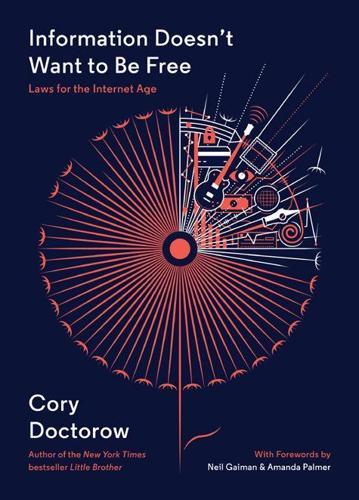
Information Doesn't Want to Be Free: Laws for the Internet Age
by
Cory Doctorow
,
Amanda Palmer
and
Neil Gaiman
Published 18 Nov 2014
It’s up to creators everywhere to engage with their colleagues about the ways that expanded liability for intermediaries drive us all into the old-media companies’ corrals, where they get to make the rules, pick the winners, and run the show. 3. DOCTOROW’S THIRD LAW Information Doesn’t Want to Be Free, People Do BACK IN 1984, Stewart Brand—founder of the Whole Earth Catalog—had a public conversation with Apple cofounder Steve Wozniak at the first Hackers Conference. There, Brand uttered a few dozen famous words: “On the one hand, information wants to be expensive, because it’s so valuable. The right information in the right place just changes your life. On the other hand, information wants to be free, because the cost of getting it out is getting lower and lower all the time.
…
Blu-ray’s keys are 128 bits long—you could spraypaint one of them onto a smallish wall. Is Apple for or against digital locks? One of the world’s most successful digital-lock vendors is Apple. Despite public pronouncements from its late cofounder, Steve Jobs, condemning DRM, Apple has deployed digital locks in nearly every corner of its business. The popular iOS devices—the iPod, iPhone, and iPad—all use DRM that ensures that only software bought through Apple’s store can run on them. (Apple gets 30 percent of the purchase price of such software, and another 30 percent of any in-app purchases you make afterward.) Apple’s iTunes Store, meanwhile, sells all its digital video and audiobooks with DRM.
…
You couldn’t buy the kind of promotion that the labels wanted, and you could sell songs for only one price: ninety-nine cents. The labels hated this. Apple wouldn’t budge on it. The labels came to realize that they’d been caught in yet another roach motel: their customers had bought millions of dollars’ worth of Apple-locked music, and if the labels left the iTunes Store, the listeners would be hard-pressed to follow them. Just to make this very clear, Apple threatened a competitor, RealNetworks, when Real released a version of its player that allowed users to load (digitally locked) songs bought from the RealPlayer store onto an iPod, enabling customers to play both Real’s and Apple’s music on the same device. “We are stunned that RealNetworks has adopted the tactics and ethics of a hacker to break into the iPod, and we are investigating the implications of their actions under the DMCA and other laws,” Apple said.
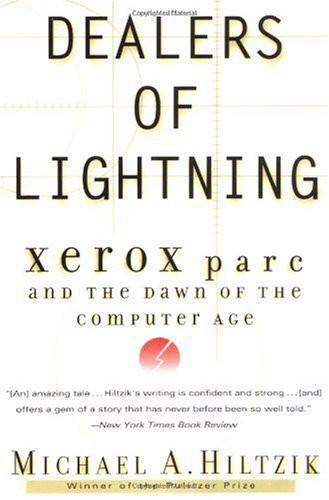
Dealers of Lightning
by
Michael A. Hiltzik
Published 27 Apr 2000
His idea was to turn the technology over to a young, hungry company with a modest cost structure—one that would not dither endlessly about whether a promising innovation would fit into its tradition-encrusted product line but would simply march ahead (while paying Xerox royalties). A company, say, like Apple. The idea was not wholly implausible. Apple was coming on strong. Started in the proverbial Silicon Valley garage by Jobs and his high school classmate Steve Wozniak, Apple had successfully negotiated the transition in its product line from kit versions of Woz’s little personal computer to a more versatile version, the Apple II. This machine was unique in the hobbyist market. It came already assembled, with a keyboard (although it required a separate monitor). Shortly after Jobs’s appearance before Zarem’s group, Apple started bundling it with VisiCalc, a unique software program known as a financial spreadsheet—a “killer app” that would single-handedly turn the Apple II into a popular businessman’s tool.
…
February: PARC engineers demonstrate for their colleagues a graphical user interface for a personal computer, including icons and the first use of pop-up menus, that will develop into the Windows and Macintosh interfaces of today. March 1: PARC’s permanent headquarters at 3333 Coyote Hill Road are formally opened. January 3: Apple Computer is incorporated by Steve Jobs and Steve Wozniak. August: Having perfected a new technology for designing high-density computer chips at PARC, Lynn Conway and Carver Mead begin drafting Introduction to VLSI Systems, a textbook on the technology that is written and typeset entirely on desktop publishing systems invented at the center.
…
Another dubious assumption is that Xerox, simply by dint of its size and marketing savvy, should have been well up to the demands of commercializing the Alto, Ethernet, and dozens of other orphaned PARC innovations. This argument is most often expressed as a question: “If little Apple could sell personal computers, why couldn’t big Xerox?” The answer, of course, is that Apple was able to market the PCnot in spite of its small size, but because of it. Commercializing a radical new technology often means betting the company on the outcome. In 1981 this had decidedly different meanings for Xerox and Apple. Xerox employed 125,000 workers, Apple forty. Virtually Xerox’s entire workforce was focused on selling one type of product: the office copier. They represented decades of corporate investment—hundreds of millions of dollars—in embedded training, technology, and customer service.

Track Changes
by
Matthew G. Kirschenbaum
Published 1 May 2016
Users’ groups were one of the fixtures of early computer culture. The first and most famous of them all was the Homebrew Computer Club, which met in the auditorium of Stanford University’s linear accelerator. Adam Osborne was a member, and at one of those now quasi-legendary gatherings Steve Wozniak had demonstrated his prototype for what eventually became the Apple II computer. But users’ groups were all very “homebrew”; they tended to coalesce organically, their members finding each other through notices tacked up in computer shops (or on virtual bulletin boards), ads in newsletters, and word of mouth. Typically they were tied together by an interest in a common system or product.
…
Beeching’s fanciful scenario would thus have already been familiar—mundane—to any office secretary who had been trained on Lexitron or its competitors’ equipment.2 The creation of a working “TV Typewriter” (TVT) also soon became a rite of passage for the home computer hobbyist. It was a key stepping stone for Steve Wozniak on the way to the Apple computer, and it featured prominently in the announcement for the first meeting of the Homebrew Computer Club: “Are you building your own computer? Terminal? T V Typewriter? I O [input/output] device? Or some other digital black-magic box?” read the ad that was posted around Silicon Valley in February 1975.3 Computers themselves, of course, compute: which is to say they work by fundamentally arithmetical principles.
…
Many of the writers I stayed up late reading as a teenager—best-selling authors like Stephen King, Frank Herbert, Anne McCaffrey, and Tom Clancy—were themselves experimenting with the technology, getting their own first computers at more or less the same time we got our Apple. (Clancy got an Apple IIe himself, in fact.) All of this explains one of the attractions of this project to me: a chance to explore some of the connections that tied me, a kid in my upstairs bedroom poking around with the Bank Street Writer or Apple BASIC, to the writers I idolized—who were also, it turns out, wrestling with the very same technology themselves. They were learning the same jargon and terminology that I was, scratching their heads over dot matrix and ink jet, and struggling to initialize a diskette or recover a file they had just inadvertently deleted.
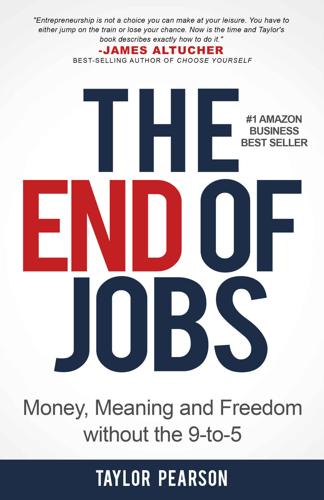
The End of Jobs: Money, Meaning and Freedom Without the 9-To-5
by
Taylor Pearson
Published 27 Jun 2015
Instead of a large, up-front investment in hiring and training someone who may or may not be good enough for the role, you’re able to make a small investment, over time, in someone that has been vetted by other people in your industry. Self-Education: Information Wants to Be Free In 1984, at the first Hackers Conference, Whole Earth Catalog founder Stewart Brand was overheard telling Apple co-founder Steve Wozniak the now iconic phrase: “Information wants to be free.” The internet has done more to facilitate information transparency than any technology since the printing press. Knowledge that used to be opaque and hard to source is often now just a Google search away. Scott Young, a young entrepreneur who now teaches others about advanced learning strategies, put himself through the entire MIT course material in twelve months for two thousand dollars.
…
He is engaged in a dialogue with his reality asking “why” and “why not” instead of “how” or “what.”52 The degree to which we’re able to design our reality is directly related to our quality of life, freedom, and wealth. Those that design reality have a higher quality of all factors in their life, and through designing their reality they enable others to do the same by creating more wealth. In designing my reality in the form of an iPhone, Steve Jobs and Apple created more power, freedom, and wealth for me than Rockefeller had. This leads to an upward spiral. As wealth is increasing, so is our ability to design our realities. PhD or Podcast? While it’s always been true that great work comes from those who freely choose it and that the ability to design our realities creates more freedom, it’s the changes we’ve seen over the past decade that made both of those radically more accessible and safer.
…
ref=business&_r=1& Chapter 1 5. http://www.chrisducker.com/how-much-do-i-pay-my-virtual-assistant/ 6. http://dazeinfo.com/2014/10/28/1-5-million-engineering-pass-outs-india-every-year-fewer-getting-hired-trends/ 7. http://www.engineeringuk.com/View/?con_id=360 8. http://www.oecd.org/edu/50495363.pdf 9. http://www.forbes.com/sites/michaelzakkour/2014/04/30/copycat-china-still-a-problem-for-brands-chinas-future-just-ask-apple-hyatt-starbucks/ 10. Example borrowed from Antifragile by Nassim Taleb 11. Peter Drucker (1974) Management: tasks, responsibilities, practices. p. 181. Source: http://bit.ly/1K8KvP4 12. Author Interview with Jesse Lawler. To listen to Jesse’s interview, please visit taylorpearson.me/eoj 13. For further reading on how power distribution effects, see The Dictator’s Handbook: http://www.amazon.com/The-Dictators-Handbook-Behavior-Politics/dp/1610391845 Chapter 2 14. http://www.washingtonpost.com/wp-dyn/content/article/2008/02/22/AR2008022202283_2.html?
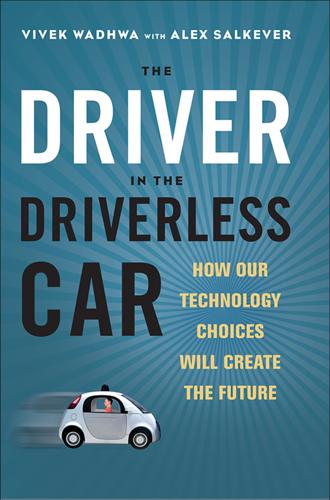
The Driver in the Driverless Car: How Our Technology Choices Will Create the Future
by
Vivek Wadhwa
and
Alex Salkever
Published 2 Apr 2017
The debate concerns whether we should allow robots powered by A.I. to kill people autonomously. More than 20,000 people signed an open letter in July 2015 that called for a worldwide ban on autonomous killing machines. A thousand of these signatories were A.I. researchers and technologists, including Elon Musk, Stephen Hawking, and Steve Wozniak.6 Their logic was simple: that once development begins of military robots enabled to autonomously kill humans, the technology will follow all technology cost and capability curves; that, in the not-so-distant future, A.I. killing machines will therefore become commodity items, easy to purchase and available to every dictator, paramilitary group, and terrorist cell.
…
We could become overly confident or pessimistic on the basis of data we don’t really understand but imagine we do. Over all, as you will note, I am really excited about the advances in medicine. Yes, Apple and Google, both developing medical devices and healthcare applications, may want my health data in order to present me with more highly targeted ads. But their motivation is to keep me healthy, to prevent disease, so that I can do more searches and download more applications. The motivation of the healthcare industry has been to keep me coming back for more. So, Apple, take my data and send me your ads, but please help me keep healthy. PART THREE What Are the Risks and the Rewards?
…
Office of Personnel Management (undated), https://www.opm.gov/cybersecurity/cybersecurity-incidents (accessed 21 October 2016). 4. Casey Newton, “The mind-bending messiness of the Ashley Madison data dump,” the Verge 19 August 2015, http://www.theverge.com/2015/8/19/9178855/ashley-madison-data-breach-implications (accessed 21 October 2016). 5. Mat Honan, “How Apple and Amazon security flaws led to my epic hacking,” WIRED 6 August 2012, https://www.wired.com/2012/08/apple-amazon-mat-honan-hacking (accessed 21 October 2016). 6. Kevin Kelley, The Inevitable, Viking: New York, 2016. CHAPTER TEN 1. Jonathan Vanian, “7-Eleven Just Used a Drone to Deliver a Chicken Sandwich and Slurpees,” Fortune 22 July 2016, http://fortune.com/2016/07/22/7-eleven-drone-flirtey-slurpee (accessed 21 October 2016). 2.
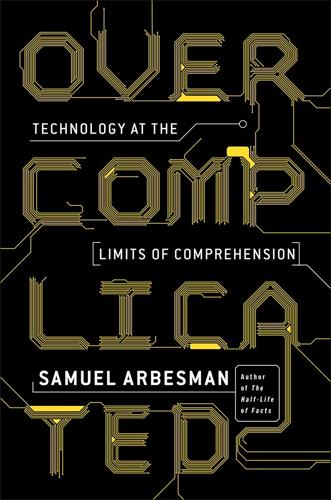
Overcomplicated: Technology at the Limits of Comprehension
by
Samuel Arbesman
Published 18 Jul 2016
A self-taught genius who worked during the early part of the twentieth century, Ramanujan was not your average mathematician who tried to solve problems through trial and error and occasional flashes of brilliance. Instead, equations seemed to leap fully formed from his brain, often mind-bogglingly complex and stunningly correct (though some were also wrong). The Ramanujan of technology might be Steve Wozniak. Wozniak programmed the first Apple computer and was responsible for every aspect of the Apple II. As the programmer and novelist Vikram Chandra notes, “Every piece and bit and byte of that computer was done by Woz, and not one bug has ever been found. . . . Woz did both hardware and software. Woz created a programming language in machine code.
…
abstraction, 163 biological thinking’s avoidance of, 115–16 in complexity science, 133, 135 in physics thinking, 115–16, 121–22, 128 specialization and, 24, 26–27 technological complexity and, 23–28, 81, 121–22 accretion, 65 in complex systems, 36–43, 51, 62, 65, 191 in genomes, 156 in infrastructure, 42, 100–101 legacy systems and, 39–42 in legal system, 40–41, 46 in software, 37–38, 41–42, 44 in technological complexity, 130–31 unexpected behavior and, 38 aesthetics: biological thinking and, 119 and physics thinking, 113, 114 aggregation, diffusion-limited, 134–35 algorithm aversion, 5 Amazon, 5 American Philosophical Society, 90 Anaximander of Miletus, 139 Apple, 161, 163 Apple II computer, 77 applied mathematics, 143 arche, 140 Ariane 5 rocket, 1996 explosion of, 11–12 Aristotle, 151 Ascher, Kate, 100 Asimov, Isaac, 124 atomic nucleus, discovery of, 124, 141 Audubon, John James, 109 autocorrect, 5, 16 automobiles: self-driving, 91, 231–32 software in, 10–11, 13, 45, 65, 100, 174 see also Toyota automobiles Autonomous Technology (Winner), 22 Average Is Over (Cowen), 84 awe, as response to technological complexity, 6, 7, 154–55, 156, 165, 174 bacteria, 124–25 Balkin, Jack, 60–61 Ball, Philip, 12, 87–88, 136, 140 Barr, Michael, 10 Barrow, Isaac, 89 BASIC, 44–45 Bayonne Bridge, 46 Beacock, Ian, 12–13 Benner, Steven, 119 “Big Ball of Mud” (Foote and Yoder), 201 binary searches, 104–5 biological systems, 7 accretion in, 130–31 complexity of, 116–20, 122 digital technology and, 49 kluges in, 119 legacy code in, 118, 119–20 modules in, 63 tinkering in, 118 unexpected behavior in, 109–10, 123–24 biological thinking, 222 abstraction avoided in, 115–16 aesthetics and, 119 as comfortable with diversity and complexity, 113–14, 115 concept of miscellaneous in, 108–9, 140–41, 143 as detail oriented, 121, 122, 128 generalization in, 131–32 humility and, 155 physics thinking vs., 114–16, 137–38, 142–43, 222 technological complexity and, 116–49, 158, 174 Blum, Andrew, 101–2 Boeing 777, 99 Bogost, Ian, 154 Bookout, Jean, 10 Boorstin, Daniel, 89 Borges, Jorge Luis, 76–77, 131 Boston, Mass., 101, 102 branch points, 80–81 Brand, Stewart, 39–40, 126, 198–99 Brookline, Mass., 101 Brooks, David, 155 Brooks, Frederick P., Jr., 38, 59, 93 bugs, in software, see software bugs bureaucracies, growth of, 41 cabinets of curiosities (wunderkammers), 87–88, 140 calendar application, programming of, 51–53 Cambridge, Mass., 101 cancer, 126 Carew, Diana, 46 catastrophes, interactions in, 126 Challenger disaster, 9, 11, 12, 192 Chandra, Vikram, 77 Chaos Monkey, 107, 126 Chekhov, Anton, 129 Chekhov’s Gun, 129 chess, 84 Chiang, Ted, 230 clickstream, 141–42 Clock of the Long Now, The (Brand), 39–40 clouds, 147 Code of Federal Regulations, 41 cognitive processing: of language, 73–74 limitations on, 75–76, 210 nonlinear systems and, 78–79 outliers in, 76–77 working memory and, 74 see also comprehension, human collaboration, specialization and, 91–92 Commodore VIC-20 computer, 160–61 complexity, complex systems: acceptance of, see biological thinking accretion in, 36–43, 51, 62, 65, 191 aesthetics of, 148–49, 156–57 biological systems and, 116–17, 122 buoys as examples of, 14–15, 17 complication vs., 13–15 connectivity in, 14–15 debugging of, 103–4 edge cases in, 53–62, 65, 201, 205 feedback and, 79, 141–45 Gall on, 157–58, 227 hierarchies in, 27, 50–51 human interaction with, 163 infrastructure and, 100–101 inherent vs. accidental, 189 interaction in, 36, 43–51, 62, 65, 146 interconnectivity of, see interconnectivity interpreters of, 166–67, 229 kluges as inevitable in, 34–36, 62–66, 127 in legal systems, 85 and limits of human comprehension, 1–7, 13, 16–17, 66, 92–93 “losing the bubble” and, 70–71, 85 meaning of terms, 13–20 in natural world, 107–10 scientific models as means of understanding, 165–67 specialization and, 85–93 unexpected behavior in, 27, 93, 96–97, 98–99, 192 see also diversity; technological complexity complexity science, 132–38, 160 complication, complexity vs., 13–15 comprehension, human: educability of, 17–18 mystery and, 173–74 overoptimistic view of, 12–13, 152–53, 156 wonder and, 172 see also cognitive processing comprehension, human, limits of, 67, 212 complex systems and, 1–7, 13, 16–17, 66, 92–93 humility as response to, 155–56 interconnectivity and, 78–79 kluges and, 42 legal system and, 22 limitative theorems and, 175 “losing the bubble” in, 70–71, 85 Maimonides on, 152 stock market systems and, 26–27 technological complexity and, 18–29, 69–70, 80–81, 153–54, 169–70, 175–76 unexpected behavior and, 18–22, 96–97, 98 “Computational Biology” (Doyle), 222 computational linguistics, 54–57 computers, computing: complexity of, 3 evolutionary, 82–84, 213 impact on technology of, 3 see also programmers, programming; software concealed electronic complexity, 164 Congress, U.S., 34 Constitution, U.S., 33–34 construction, cost of, 48–50 Cope, David, 168–69, 229–30 corpus, in linguistics, 55–56 counting: cognitive limits on, 75 human vs. computer, 69–70, 97, 209 Cowen, Tyler, 84 Cryptonomicon (Stephenson), 128–29 “Crystalline Structure of Legal Thought, The” (Balkin), 60–61 Curiosity (Ball), 87–88 Dabbler badge, 144–45 dark code, 21–22 Darwin, Charles, 115, 221, 227 Daston, Lorraine, 140–41 data scientists, 143 datasets, massive, 81–82, 104–5, 143 debugging, 103–4 Deep Blue, 84 diffusion-limited aggregation (DLA), 134–35 digital mapping systems, 5, 49, 51 Dijkstra, Edsger, 3, 50–51, 155 “Divers Instances of Peculiarities of Nature, Both in Men and Brutes” (Fairfax), 111–12 diversity, 113–14, 115 see also complexity, complex systems DNA, see genomes Doyle, John, 222 Dreyfus, Hubert, 173 dwarfism, 120 Dyson, Freeman, on unity vs. diversity, 114 Dyson, George, 110 Economist, 41 edge cases, 53–62, 65, 116, 128, 141, 201, 205, 207 unexpected behavior and, 99–100 see also outliers Einstein, Albert, 114 Eisen, Michael, 61 email, evolution of, 32–33 emergence, in complex systems, 27 encryption software, bugs in, 97–98 Enlightenment, 23 Entanglement, Age of, 23–29, 71, 92, 96, 97, 165, 173, 175, 176 symptoms of, 100–102 Environmental Protection Agency, 41 evolution: aesthetics and, 119 of biological systems, 117–20, 122 of genomes, 118, 156 of technological complexity, 127, 137–38 evolutionary computation, 82–84, 213 exceptions, see edge cases; outliers Facebook, 98, 189 failure, cost of, 48–50 Fairfax, Nathanael, 111–12, 113, 140 fear, as response to technological complexity, 5, 7, 154–55, 156, 165 Federal Aviation Administration (FAA), Y2K bug and, 37 feedback, 14–15, 79, 135 Felsenstein, Lee, 21 Fermi, Enrico, 109 Feynman, Richard, 9, 11 field biologists, 122 for complex technologies, 123, 126, 127, 132 financial sector: interaction in, 126 interconnectivity of, 62, 64 see also stock market systems Firthian linguistics, 206 Flash Crash (2010), 25 Fleming, Alexander, 124 Flood, Mark, 61, 85 Foote, Brian, 201 Fortran, 39 fractals, 60, 61, 136 Frederick the Great, king of Prussia, 89 fruit flies, 109–10 “Funes the Memorious” (Borges), 76–77, 131 Galaga, bug in, 95–96, 97, 216–17 Gall, John, 157–58, 167, 227 game theory, 210 garden path sentences, 74–75 generalists, 93 combination of physics and biological thinking in, 142–43, 146 education of, 144, 145 explosion of knowledge and, 142–49 specialists and, 146 as T-shaped individuals, 143–44, 146 see also Renaissance man generalization, in biological thinking, 131–32 genomes, 109, 128 accretion in, 156 evolution of, 118, 156 legacy code (junk) in, 118, 119–20, 222 mutations in, 120 RNAi and, 123–24 Gibson, William, 176 Gingold, Chaim, 162–63 Girl Scouts, 144–45 glitches, see unexpected behavior Gmail, crash of, 103 Gödel, Kurt, 175 “good enough,” 27, 42, 118, 119 Goodenough, Oliver, 61, 85 Google, 32, 59, 98, 104–5 data centers of, 81–82, 103, 189 Google Docs, 32 Google Maps, 205 Google Translate, 57 GOTO command, 44–45, 81 grammar, 54, 57–58 gravitation, Newton’s law of, 113 greeblies, 130–31 Greek philosophy, 138–40, 151 Gresham College, 89 Guide of the Perplexed, The (Maimonides), 151 Haldane, J.
…
On the other hand, some of us veer to the opposite extreme: an undue veneration of our technology. When something is so complicated that its behavior feels magical, we end up resorting to the terminology and solemnity of religion. When we delight at Google’s brain and its anticipation of our needs and queries, when we delicately caress the newest Apple gadget, or when we visit a massive data center and it stirs something in the heart similar to stepping into a cathedral, we are tending toward this reverence. However, neither of these responses—whether from experts or laypeople—is good or productive. One leaves us with a crippling fear and the other with a worshipful awe of systems that are far from meriting unquestioning wonder.
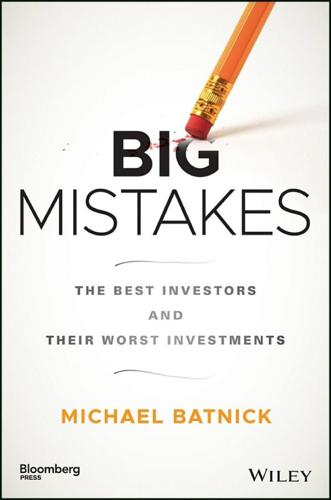
Big Mistakes: The Best Investors and Their Worst Investments
by
Michael Batnick
Published 21 May 2018
“I'm going to hold onto this fund that's done horribly because I can't stand the thought of selling at the bottom,” and it can compel us to do something because we don't want to regret not doing it: “I'm going to buy this ICO (initial coin offering) because I won't be able to live with myself if I miss the next Bitcoin.” You know Steve Jobs and his early partner Steve Wozniak, but the name Ronald Wayne likely means nothing to you. Wayne was the third founder of Apple, but the reason his name is erased from the history books is because in 1976 he sold his 10% stake in the company for $800.4 Apple is currently worth north of $900 billion! You're never going to experience anything quite this painful, but the odds are high that at some point in time, you'll pass on an investment that goes on to deliver fantastic results.
…
The same idea holds true in finance – Serotonin plus adrenaline plus different time horizons times a few million participants equals literally nobody knows. Let's pretend that we knew with complete certainty that Apple's earnings will grow by 8% a year for the next decade. Would this give you the confidence to buy its stock? It shouldn't, and here's why. How fast is the overall market growing and how fast are investors expecting Apple to grow? Even if we have clairvoyance on the most important driver of long‐term returns, earnings, it wouldn't be enough to ensure success. The missing ingredient, which cannot be modeled by all the PhDs in the world, is investor's moods and expectations.
…
Berkshire is in that rare group of stocks that is responsible for the majority of the market's long‐term gains. The distribution of total stock market returns is heavily skewed toward these giant winners. The top 1,000 stocks alone, or less than 4% of the total public companies since 1926, have accounted for all of the market's gains. Exxon Mobil, Apple, Microsoft, General Electric, and IBM have each generated over half a trillion dollars in shareholder wealth.2 The hunt for these potentially life‐changing stocks motivates millions of market participants each day. But for every Berkshire Hathaway, there is a Sears Holdings, a GoPro for every IBM.
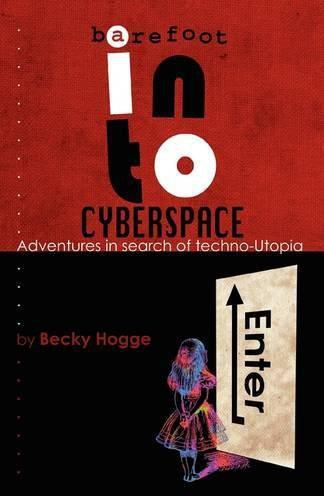
Barefoot Into Cyberspace: Adventures in Search of Techno-Utopia
by
Becky Hogge
,
Damien Morris
and
Christopher Scally
Published 26 Jul 2011
Most of the money Moore received the night of Stewart Brand’s Demise Party eventually went into founding the Homebrew Computer Club, a place for amateur and professional computer enthusiasts to tinker with personal computers. And so from the ashes of the Catalog rose a legendary phoenix. For it was at Homebrew that Steve Wozniak would meet Steve Jobs, and the two decide to found Apple Computers. Lee Felsenstein, designer of the first mass-produced portable computer the Osborne 1, also hung out there, as did the legendary telephone network hacker or “phreak” John “Captain Crunch” Draper. And it was to the Homebrew Computer Club that a 20-year old Bill Gates wrote his disgruntled “Open letter to Hobbyists”
…
And yes, I may have dropped his name at the desk to secure our entry, after all, at one time he was the Netherlands’ most notorious hacker. But I’m sure he wouldn’t mind. He’s accustomed to the so-called “social hack”. In 2006, Rop and his friends obtained decommissioned voting computers from a Dutch local authority in exchange for apple cake. He then proceeded to demonstrate on national television how the machines could be hacked to reveal and even alter what unsuspecting Dutch voters were keying in at the polling station. Unsurprisingly, the Dutch don’t use electronic voting anymore in their elections, they vote with pencil and paper.
…
This couple both study history of art: he’s about to get his PhD; hers has won her a permanent fellowship at Berlin’s Humboldt University. He wears pointy shoes, she wears vintage dresses bought by weight in downtown East Berlin. They have a Siamese cat called Raoul. Neither of them care about computers, although they both have Apple Mac laptops for work. Their names are Sarah and Luke. The one problem with Berlin, they tell me, is the Germans. They’re all so bloody rude. To prove their point, Sarah and Luke have brought me to what seems like the most poorly-served bar in Berlin. When the waitress does eventually arrive at our table, it seems she has only done so in order to let us know that tonight she shouldn’t really be working at all – the boss has brought her in because he got the rota wrong.

Age of Context: Mobile, Sensors, Data and the Future of Privacy
by
Robert Scoble
and
Shel Israel
Published 4 Sep 2013
Some years will pass before people look back and try to understand how they ever could have lived without such a device. Scoble tells audiences it’s like seeing the first Apple IIs as they rolled off the assembly line in 1977: They were like nothing people had seen before, but you couldn’t do much with them. Decision makers at HP and Atari weren’t interested in cutting a deal with Steve Wozniak and Steve Jobs for rights to market their new computer—the new, highly personalized devices were obviously too radically different to sell in significant quantity. Yet, it turned out a lot of people wanted them and the Apple II kicked off a 20-year explosion of invention and productivity that we now remember as the PC revolution.
…
How could a company, universally acclaimed for unmatched product elegance, make such an unmitigated gaffe? Some pointed to a bitter and public divorce between Apple and Google. Steve Jobs had considered Google Android to be a direct rip-off of Apple’s iOS operating system. Could Apple Maps have simply been a crudely devised and poorly executed act of revenge against a powerful former ally? We think not. In our view, Apple made a huge mistake, but it was strategically motivated and not part of a petty Silicon Valley vendetta. Although Google and Apple historically had lots of good reasons to be allies, they were destined to become the rivals they now are.
…
Caterina Fake, CEO and founder of Findery, a location-based platform, explains it best in a statement that is simultaneously obvious and profound: “Without location, there is no context.” And for Apple, without context there will be no leadership. So Apple and Google divorced. Today Android and iOS compete for mobile operating system dominance, and thus Apple had little choice but to develop its own maps. Its big mistake was not in the play, but in being unprepared for the enormous challenges they faced on an unrealistically short timeline and then blindly plowing forward. By the time Apple Maps launched, Google had about 7000 employees working on its mobile maps. Matching that is nearly impossible for Apple, whose entire company has only 20,000 employees.

Little Bets: How Breakthrough Ideas Emerge From Small Discoveries
by
Peter Sims
Published 18 Apr 2011
“It was beautiful, historical, artistically subtle in a way that science can’t capture, and I found it fascinating,” Jobs recalled in a commencement speech at Stanford University. Jobs never expected the experience to have practical applications, but it did ten years later when Jobs and Steve Wozniak were developing Apple’s first Macintosh computer. “It was the first computer with beautiful typography. If I had never dropped in on that single course in college, the Mac would never have had multiple typefaces or proportionally spaced fonts.” Some investors have achieved significant advantages by embracing the value of immersion.
…
The surprising story of Pixar’s development from a struggling startup without a viable business plan into one of the most successful movie makers ever beautifully illustrates both the value of building means as well as an affordable losses mentality. Pixar was a computer hardware company when Steve Jobs bought it in 1986. Before purchasing Pixar, Jobs had been forced out of Apple in 1985 by his hand-picked CEO successor, John Scully, following frequent clashes. Scully wanted Jobs to focus exclusively on products, while Jobs wanted to take Apple back over from Scully. After Scully caught wind of an attempted coup by Jobs when Scully was on a trip to Asia, he stripped Jobs of his responsibilities. Jobs then left Apple, bought Pixar, and started another computer company, called Next Computer. Both Pixar and Next struggled, and the open question was whether Steve Jobs was just another one-hit wonder.
…
Kahney, Leander. Inside Steve’s Brain. New York: Portfolio, 2009. Kahney, a contributing editor at Wired magazine, has done the best job I’ve seen of writing about Steve Jobs and Apple, a company that is notoriously secretive. Kahney’s book provides the reader with a fairly detailed feel for how Jobs works and leads, as well as the best description of Apple’s design process that I’ve seen. The book was bolstered by Kahney’s ability to interview Apple’s chief designer, Jonathan Ive, among other insiders. Lamott, Anne. Bird by Bird: Some Instructions on Writing and Life. Garden City, NY: Anchor, 1995. Anne Lamott is primarily a prominent American novelist, but this is a nonfiction book in which Lamott describes her writing tactics, especially how to overcome the common fears and barriers writers face.

Palo Alto: A History of California, Capitalism, and the World
by
Malcolm Harris
Published 14 Feb 2023
Once upon a time, the world’s most valuable company was a similar bet, one against the future of working-class power in American manufacturing. It wasn’t Steve Jobs’s “think different” vision or even Steve Wozniak’s circuit-design brilliance that drew Xerox into the partnership that gave Apple that influential look at PARC’s Alto; it was the secret network of Peninsula kitchens and basements where immigrant families assembled Apple’s electronics. Throughout the early years, Jobs’s most important contribution was getting things done faster than other people could imagine, and he did that by emotionally manipulating his employees (and cofounder) into working harder and longer than they wanted to.
…
The value chain links ex-Soviet extractionists like Usmanov—convicted of and imprisoned for “theft of socialist property” in the ’80s—with Foxconn’s company towns and their mandatory overtime, corporate dorms, and loathsome security patrols.35 Chasing no goal other than rapid private gain, Palo Alto’s capitalists once again found a nice place in the middle. It doesn’t matter that, as creators, this generation of petty scrapers and advertising salesmen is a joke compared to Charles Litton and Steve Wozniak. As capitalists they are unmatched, and that is what they are. The Million Dollar Spot “We think we have effectively dismantled the Taliban,” declared Ron Davis at an East Palo Alto press conference in the spring of 2009.36 East Palo Alto was an unusual location to announce the end of the Taliban, except that Davis was the chief of police, and he was talking about a local organization named for the then temporarily displaced Afghan regime.
…
Unable to compete, the supermajority of Chicago cab medallions had gone off the street, so “that cramped Uber ride to O’Hare might well set you back $100 or more on a busy Friday afternoon, double or triple the price of the cab that no longer cruises your neighborhood.”20 The board took a desperately apologetic tone, but it can’t get the cabs back on the street or the crabs back in the barrel. Compared to past cohorts of successful Silicon Valley tech founders, the crab platform leaders made Steve Jobs look like Steve Wozniak. Not only did they not build anything substantial—most of them didn’t have the technical expertise to know where to begin—they also didn’t even come up with anything new. Still, investors pumped novel magnitudes of value through these platforms, allowing them to pursue money-losing strategies indefinitely and hold out for monopoly positions.
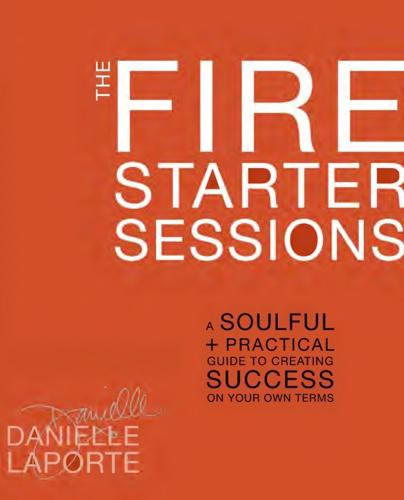
The Fire Starter Sessions: A Soulful + Practical Guide to Creating Success on Your Own Terms
by
Danielle Laporte
Published 16 Apr 2012
Raising money is incredibly distracting. When raising money is the right thing to do, get mentors, start sending your banker season tickets, prepare to be out of the office at least 30 percent of the time. Take your vitamins. All the best things I did at Apple came from (a) not having any money, and (b) not having done it before, ever. —Steve Wozniak, cofounder of Apple HOW MONEY FEELS THERE’S ONLY ONE TIME THAT DOING IT FOR THE MONEY WORKS.… And that’s when you have a light at the end of the tunnel and an unwavering commitment to yourself to transition into doing work that makes you happier, or selling something that you’re 100 percent proud of.
…
Motives become clearer; new information shows up. Amazing grace can happen when you choose inner rhythms over external pressure. ENTHUSIASM SAVES LIVES You know what’s easy? Dreaming. Hanging out with people who make you feel good. Laughing. Resting. Being passionate. Sometimes you have to shovel horse apples to make your dreams come true. But, ultimately, no dream will serve you if you’re forcing yourself to make it happen. Enthusiasm is a fantastic indicator of where your true strength lives. It’s the immediate “I love it!” response, the game you’ve got to get into, the cause you can’t walk away from, the idea that makes you pause and then nod, “Oh, this is a good one, a really good one.”
…
If you’re not having some polarizing effects, then you’re not fully showing up. ONLY THE SELF-REFERENCING THRIVE The starting point is Who am I? not What will sell? Your foundation has to be built on your real passion. The rest of branding is about accurate packaging. CONSISTENCY WINS Keep on being yourself, relentlessly. We can count on Apple to innovate. We know that Ford trucks will always be tough. We could rely on Dr. Martin Luther King, Jr., to deliver his vision with strength. Being consistent doesn’t mean you don’t change or evolve. Look at Madonna. She’s consistently reinventing herself. Reinvention is her brand. When you consistently and genuinely show up, you build trust.
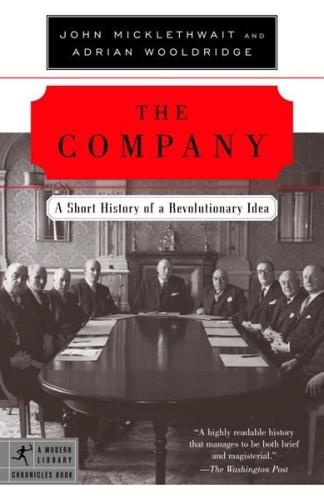
Company: A Short History of a Revolutionary Idea
by
John Micklethwait
and
Adrian Wooldridge
Published 4 Mar 2003
In the 1970s, the Valley began to acquire its identity. The name “Silicon Valley” was invented in 1971 by a local technology journalist—reflecting the success of its memory-chip makers. Meanwhile, the Valley began to be taken over by the sort of people who protested against the Vietnam War, rather than helped run it. In 1976, Steve Jobs and Steve Wozniak set up Apple Computer in the Jobs family garage. But the 1970s boom was brought to a halt by the Japanese. On “the black day,” March 28, 1980, Richard Anderson, a HP manager, revealed that tests had shown the Japanese memory chips outperformed the Valley’s. To its shame, the Valley turned to the American government for protection, but it also successfully changed shape, outsourcing its manufacturing and diversifying from chips into computer software.
…
The third and most important thing that provided a bedrock of support for the company came down to a simple proposition: The company was making America richer. In his essay “Why Is There No Socialism in the United States?,” Werner Sombart, a German sociologist, argued that “on the reefs of roast beef and apple pie socialist utopias of every sort are sent to their doom.” The new companies plainly improved the living standards of millions of ordinary people, putting the luxuries of the rich within the reach of the man in the street. When Henry Ford went into the car business, it was devoted to handcrafting toys for the super-rich; by 1917, he had sold 1.5 million Model T’s.
…
(Nobody was particularly surprised when a survey showed that 82 percent of chief executives admitted to cheating at golf.)34 Meanwhile, investors fumed when they discovered that Wall Street analysts had been misleading them with Orwellian doublespeak: to the cognoscenti, a “buy” recommendation meant “hold” and “hold” meant “run like hell.” What had gone wrong? Two explanations emerged. The first, to which the Bush administration initially subscribed, might be described as the “bad apples” school: the scandals were the product of individual greed, not a flawed system. The bankruptcies and the arrests would be enough: the founder of Adelphia, John Rigas, was forced to do a “perp walk,” clamped into handcuffs and paraded in front of the cameras. By contrast, those of the “rotten roots” school argued that the problems went much deeper.

Dawn of the Code War: America's Battle Against Russia, China, and the Rising Global Cyber Threat
by
John P. Carlin
and
Garrett M. Graff
Published 15 Oct 2018
Sold through small ads in the backs of magazines, the home-brew computers involved long hours of soldering, circuit arranging, and wiring. “Phone phreakers,” who stole free telephone calls by circumventing AT&T’s long-distance system, played an integral role in early computing—including, most famously, Steve Wozniak and Steve Jobs, who founded Apple Computer. The phreakers used gadgets known as “blue boxes” to mimic the specific 2,600-hertz tone AT&T used to control its switches, allowing them to bypass billing systems and dial for free. In 1971, an Esquire magazine article, “Secrets of the Little Blue Box,” brought the practice out into the mainstream, celebrating the counterculture and making a celebrity out of John Draper, an early phreaker known as Captain Crunch, nicknamed after the red plastic captain’s whistles that came in the eponymous cereal boxes that happened to hit that perfect 2,600-hertz note.13* “Phreaking,” Draper explained, wasn’t about theft, it was about “learning about a system.
…
Barlow, who raised cattle in Wyoming, recalls awakening to the challenges of cyberspace when an FBI agent, Richard Baxter, showed up at his ranch asking about the “New Prosthesis League,” which was actually a hacking group known as Nu Prometheus League. Barlow had attended the Hackers Conference with phone phreakers like Steve Wozniak, and the FBI figured someone who had attended that conference might be able to help them track down the group that was stealing code from Apple Computer. “I knew Agent Baxter from before. I’d had livestock stolen when I was still in the cattle business, and he’s a pretty good hand with livestock theft. But in this instance, he was at sea,” Barlow recalled later.63 Barlow spent two hours explaining to the FBI agent the crime he was investigating.
…
Yet the moment when computers would be a real part of daily life still seemed far away; the computers he knew at the time were the “size of the side of a barn.” Then, Gibson passed a bus stop with an advertisement for Apple Computers, the upstart technology firm led by wunderkind Steve Jobs. He stopped again and stared at the life-sized businessman in the ad. As Gibson recalled, the businessman’s neatly cuffed arm was holding an Apple II computer, which was vastly smaller than the side of a barn. “‘Everyone is going to have one of these,’ I thought, and ‘everyone is going to want to live inside them,’” he recalled. “Somehow I knew that the notional space behind all of the computer screens would be one single universe.”
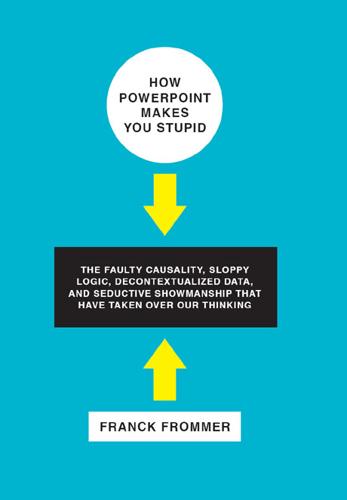
How PowerPoint Makes You Stupid
by
Franck Frommer
Published 6 Oct 2010
It is touching today to see the young man in a black suit with a bow tie, a little ironic smile at the corner of his mouth as though he’d just made a bad joke, presenting the machine that revolutionized the computer market. Obviously, presentations at the time did not yet use dedicated software. But the procedure was already well honed. Even though Jobs, just out of his garage with Steve Wozniak, read his notes, spoke too fast, and stood awkwardly, he made a few jokes, manipulated projected photographs, and played with numbers. All the ingredients were present. And Steve Jobs had a great sense of drama. One of the main arguments for the advantage of Macintosh over the large systems of the time was its size and portability.
…
The presentation follows a well-tried plan: brief slide on earnings—better to be quick; they’re bad—then Steve Jobs, armed with his remote, the essential tool of Steve Notes, briefly recounts his time at Pixar, then follows with three quotations that appear on the screen. “Apple has become irrelevant.” “Apple can’t execute anything.”18 “Apple’s culture is anarchy; you can’t manage it.” Jobs’s entire presentation is based on these three negative judgments. The procedure is clever; it enables him to build, practically in real time, Apple’s new strategy on the basis of criticisms made of it and to bring out the value of the innovative products and services intended to contradict these received ideas. Jobs’s first trick is to rely on the audience’s taste for numbers.
…
The lights go out, mysterious music is heard—Tubular Bells by Mike Oldfield15—and all the machine’s features start to parade on the screen, crowning the show. This type of exhibition symbolizes one of Apple’s trademarks. Every year since 1984, the manufacturer has organized a large conference to which it invites the “Apple family.” The California company understood early the marketing value of creating a community of users, as opposed to mere consumers. The most famous of these gatherings is the Macworld Conference Expo that takes place in January every year. Apple presents its earnings, its plans, and its new software and hardware. The “Mac family” waits like impatient fans for Steve Notes, the boss’s presentation.16 Over the years, these annual meetings have become highly codified ceremonies, the staging of which Steve Jobs has brought to a high polish.
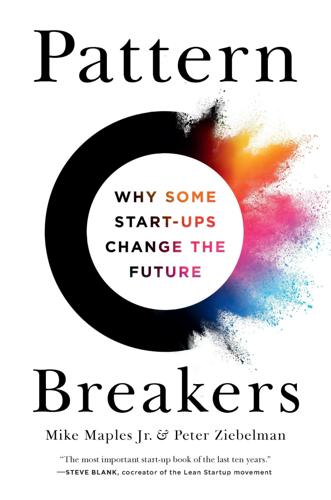
Pattern Breakers: Why Some Start-Ups Change the Future
by
Mike Maples
and
Peter Ziebelman
Published 8 Jul 2024
As word of Mosaic’s potential spread, the number of web pages and creators grew rapidly. The movement was a bottom-up phenomenon, driven by the thrill of those who reveled in its new, empowering capabilities. You might remember that in the late 1970s, the original Apple computer found favor with another group of alpha geeks, the sort that tinkered in garages and gathered in home-brew clubs. Those early enthusiasts respected the craft of cofounder Steve Wozniak, specifically, his way of making circuit boards simply designed but deeply functional. The early personal computer was like a blank canvas, waiting to be programmed for the next task. It could connect to a person’s home TV, and it could load the BASIC programming language from a cassette.
…
This can be achieved by leveraging inflections and combining them with unique, preexisting assets. Apple exemplifies this strategy. When launching the iPhone, Apple didn’t just capitalize on the technological inflections that made smartphones feasible; it also leveraged its unique assets like OS X (Apple’s operating system), iTunes, and existing relationships with the entertainment industry. This approach was replicated in the launches of the iPad, Apple Watch, and the Vision Pro headset. The Vision Pro, for instance, utilizes advancements in motion- and eye-tracking while also tapping into Apple’s established software capabilities and Hollywood partnerships.
…
The power of different favors the start-up because it forces a choice and not a comparison. Suppose incumbent companies sell apples. As a breakthrough start-up, you don’t want to offer a five-times-better apple. You would be better off saying, “I have an entirely new thing: the world’s first and only banana.” Not everyone will want your bananas. But 100 percent of the people who do want them will only be able to get them from you. This example may seem overly simplistic, so let’s consider real examples of technology breakthroughs. When Apple introduced the iPhone, people didn’t ask, “How does that compare to the BlackBerry?” When OpenAI introduced ChatGPT, people didn’t ask, “How does that compare to Google Search?”
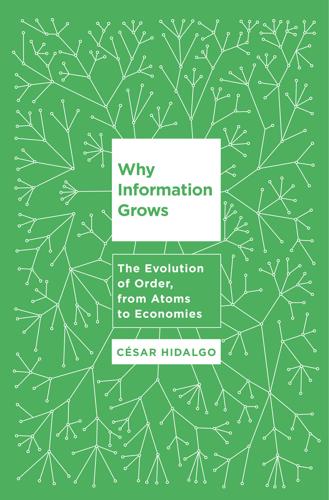
Why Information Grows: The Evolution of Order, From Atoms to Economies
by
Cesar Hidalgo
Published 1 Jun 2015
Silicon Valley’s knowledge and knowhow are not contained in a collection of perennially unemployed experts but rather in the experts working in firms that participate in the design and development of software and hardware. In fact, the histories of most firms in Silicon Valley are highly interwoven. Steve Jobs worked at Atari and Steve Wozniak worked at HP before starting Apple. As mentioned previously, Steve Jobs is also famously known for “borrowing” the ideas of a graphical user interface and object-oriented programming from Xerox PARC. If HP, Atari, and Xerox PARC had not been located in the valley, it is likely that the knowledge and knowhow needed to get Apple started would not have been there, either. Hence, industries that require subsets of the knowledge and knowhow needed in other industries represent essential stepping-stones in the process of industrial diversification.
…
PIRSIG Consider two types of apples: those that grow on trees and you buy at the supermarket, and those that are designed in Silicon Valley. Both are traded in the economy, and both embody information, whether in biological cells or silicon chips. The main difference between them is not their number of parts or their ability to perform functions—edible apples are the result of tens of thousands of genes that perform sophisticated biochemical functions. The main difference between apples and Apples is that the apples we eat existed first in the world and then in our heads, while the Apples we use to check our email existed first in someone’s head and then in the world.
…
The main difference between apples and Apples is that the apples we eat existed first in the world and then in our heads, while the Apples we use to check our email existed first in someone’s head and then in the world. Both of these apples are products and embody information, but only one of them—the silicon Apple—is a crystal of imagination.1 Thinking about products as crystals of imagination tells us that products do not just embody information but also imagination. This is information that we have generated through mental computations and then disembodied by creating an object that mimics the one we had in our head. Edible apples existed before we had a name for them, a price for them, or a market for them. They were present in the world. As a concept, apples were simply imported into our minds.
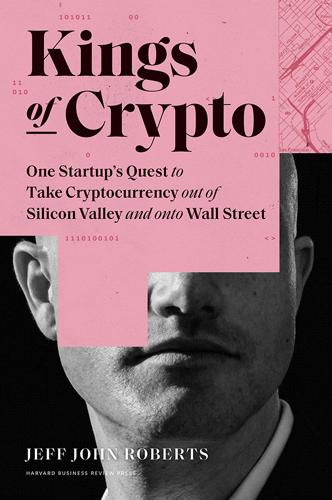
Kings of Crypto: One Startup's Quest to Take Cryptocurrency Out of Silicon Valley and Onto Wall Street
by
Jeff John Roberts
Published 15 Dec 2020
In works like Collaborative Circles and Powers of Two, researchers have shown how genius is rarely solitary: John Lennon and Paul McCartney relied on each other to compose timeless Beatles hits; Pablo Picasso and Georges Braque used their brushes side by side to create Cubism; biologists James Watson and Francis Crick worked intensely together to discover the double helix and DNA. Tech is no different. Apple is famously associated with Steve Jobs, but, in its early days, the computer company wouldn’t have gotten off the ground without the other Steve—Jobs’s partner and programming virtuoso Steve Wozniak. The same is true with Google. The Stanford graduate supervisor of Larry Page and Sergey Brin has remarked on the near total mind-meld of the search engine founders. And a garage in Palo Alto, known as the birthplace of Silicon Valley and now an official California state landmark, did not belong to a lone inventor but to two men: Bill Hewlett and Dave Packard, who founded HP.
…
Fiercely competitive, the former lacrosse and basketball star took to bellowing about “running through brick walls” until the phrase became a company mantra that can be found on Coinbase’s website to this day. One such brick wall came in the form of Apple. A teenage bitcoin enthusiast had built an app for Coinbase as a quick way for customers to buy and sell bitcoin on iPhones. Unfortunately, Apple didn’t allow cryptocurrency trading and would bar any apps that offered it from its App Store. Brian, though, came up with a plan to run right through this wall: Coinbase would use a technology called geo-fencing to disable the app’s trading feature, but only for the town of Cupertino, California—the site of Apple’s headquarters and where its engineers vetted new apps. As far as those engineers could tell, Coinbase’s app complied with policy, and so it was allowed to remain in the App Store.
…
Running through brick walls is a killer tactic—when it works. When it doesn’t, you end up on your ass—with a bloody nose. Coinbase’s earlier bid to outwit Apple, for instance, had been clever. It let the startup flout Apple’s rules by letting customers buy and sell bitcoin directly in its app, all the while keeping the iPhone maker in the dark by disabling the buy-sell feature in the city of Cupertino, where the app was vetted. But it took Apple only a few months to discover the ruse, and Coinbase was tossed unceremoniously from the App Store. Sometimes when Coinbase crashed through a brick wall, the founders discovered there was nothing on the other side.

The Secret War Between Downloading and Uploading: Tales of the Computer as Culture Machine
by
Peter Lunenfeld
Published 31 Mar 2011
Jobs and Gates started out when personal computing, that idea advanced by Licklider the Patriarch and Kay the Aquarian, was the province of a tiny group of obsessed hobbyists. It was a business, but one with a smaller market than fly-fishing. As teenagers in the 1970s, Jobs and Gates were part of this small group of hobbyists who purchased kits to make simple, programmable computers to use (and play with) at home. Jobs, along with Steve Wozniak, were members of the best-known group of these enthusiasts, the Homebrew Computer Club of Cupertino, California. Gates, who had been programming since he found himself able to get access to a DEC mainframe in high school, was already writing software professionally while he was a student at Harvard.
…
What made them both rich and powerful was their ability to meld the attributes of the two generations that preceded them—fusing the hardheaded business logic of the Plutocrats with the visionary futurity of the Aquarians. 163 GENERATIONS Jobs and Gates have an interesting competitive history, leapfrogging each other in the quest to achieve “insane greatness,” in Jobs’s words, and global market preeminence, for Gates.21 Jobs and his partner, Wozniak, were the first to make the leap from hobbyists to industrialists with their Apple computers, launched in 1976. It was the Apple II that really broke loose, in 1977, attracting a huge user base, and establishing Jobs and Wozniak as the first publicly lauded millionaire whiz kids of Silicon Valley. As important as their early success with the Apple II was, however, their greatest impact came seven years later, when they took the inspiration of people like Engelbart and Kay, and created a mass-market personal computer that set a new standard for participation.
…
The Hosts: Tim Berners-Lee and Linus Torvalds You affect the world by what you browse. —Tim Berners-Lee Software is like sex: it’s better when it’s free. —Linus Torvalds After the triumph of Apple, the Macintosh, Pixar, iTunes, the iPhone and the iPad, it is hard to remember that Jobs also had his share of failures. Buried in his corporate biography is NeXT Computer, the short-lived company that he founded after leaving Apple in the mid-1980s. The beautifully designed NeXT Cube was a commercial disaster. Like the now-forgotten Apple Lisa, the predecessor to the Macintosh, it was too expensive to develop more than a tiny niche market among researchers and academics.
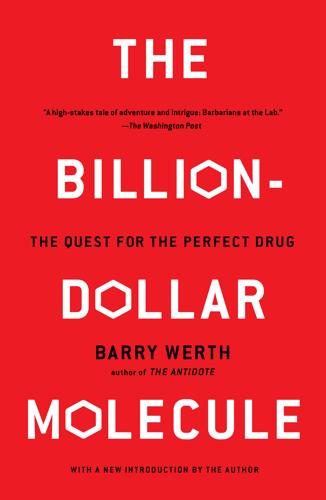
The Billion-Dollar Molecule
by
Barry Werth
Nowadays the chief reference point for anyone charting the dramatic arc of an innovative company and its visionary founder is the triumphal three-act history—so established in the culture that it’s become a meme—of Apple and Steve Jobs. Jobs was barely twenty-one in the spring of 1976 when he and Steve Wozniak started assembling Apple I computers in his family’s garage. Nine years later, after introducing the Macintosh, he was stripped of control in a palace coup, then returned to Apple more than a decade after that, when he was forty-two, to rebuild the company. In 2007, in his most memorable keynote presentation ever, Jobs unveiled the iPhone with its life-altering touch-screen interface: the Emancipation Proclamation of the mobile revolution.
…
Just as in The Godfather Vito Corleone builds the family business in the first picture so that his son Michael can leverage it in the second, Boger has handed Vertex to others to drive ahead. While I was researching The Antidote, I tried to describe what I was doing and feeling. I told people: “It’s like I was in the garage with Jobs and Steve Wozniak, and now I’m watching from backstage as Jobs introduces the iPhone.” Will Vertex go on to become the world’s most valuable company, as Apple has done since then and after Jobs left the scene? Most likely not, though it’s surely possible, and as Boger likes to say; “Until something is not a possibility, it’s a possibility.” Frankly I don’t think that matters now, at least for reading purposes.
…
He was not about to be refused now. “I want to ask you a question,” Kinsella said, after laying out terms that effectively gave Boger complete control over the new company. “Do you remember who the person at Apple was who developed the personal computer?” “Steve Jobs,” Boger replied. “Now who’s the largest PC maker in the world?” he asked rhetorically. Again Boger answered effortlessly, “IBM.” “OK. Do you want to be the guy at IBM or the guy at Apple? Do you want to end up with a good watch? What kind of credit do you want for your work?” Boger’s departure from Merck was swift, determined; ten days after submitting his resignation—ten days, fittingly, in which Navia’s paper on the structure of HIV protease, announcing the first concrete inroad of the new religion of structure-based drug design in AIDS, was being vouchsafed by Nature—he was gone.
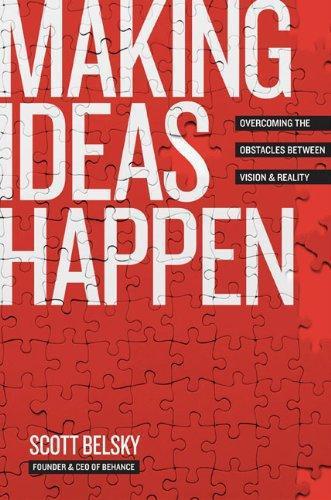
Making Ideas Happen: Overcoming the Obstacles Between Vision and Reality
by
Scott Belsky
Published 31 Mar 2010
Leaders in the worlds of technology, entertainment, and design have come for a curated set of eighteen-minute presentations on new ideas and breakthroughs across industries. They have also made the trek to meet each other during the breaks and dinners that happen over the course of the five-day conference. The audience is star-studded. From tech legends like Bill Gates, Steve Wozniak, and Google founders Larry Page and Sergey Brin, to entertainment icons like Robin Williams and Ben Affleck, everyone has come to indulge themselves with a healthy dose of wonderment. TED’s tagline is “ideas worth spreading.” As chief curator Chris Anderson (not to be confused with Wired ’s Chris Anderson) explains, the purpose is “to put great people on the TED stage and let the rest happen as it will.”
…
You also don’t want to create too much structure around when you can and cannot generate new ideas. However, you must be willing to kill ideas liberally—for the sake of fully pursuing others. In a rare interview in BusinessWeek on Apple’s system for innovation, CEO Steve Jobs explained that, in fact, there is no system at Apple—and that spontaneity is a crucial element for innovation, so long as it is paired with the ability to say no without hesitation: Apple is a very disciplined company, and we have great processes. But that’s not what it’s about. Process makes you more efficient. But innovation comes from people meeting up in the hallways or calling each other at 10:30 at night with a new idea, or because they realized something that shoots holes in how we’ve been thinking about a problem.
…
Since 2004, AMR Research, a leading authority on supply chain research that serves numerous Fortune 500 companies, has published an annual list of the twenty-five companies with the best supply chain management. You might be surprised to learn that Apple debuted on the list at No. 2 in 2007, and overtook companies such as Anheuser-Busch, Wal-Mart, Procter & Gamble, and Toyota to take the No. 1 slot in 2008. Why would Apple, a company known for new ideas and its ability to “think different,” also be one of the most organized companies on the planet? The answer is that—like it or not—organization is a major force for making ideas happen.

Geek Sublime: The Beauty of Code, the Code of Beauty
by
Vikram Chandra
Published 7 Nov 2013
The Real Programmer squints his eyes, does his work, and rides into the horizon to the whistling notes of Ennio Morricone. To you, Steve Wozniak may be that cuddly penguin who was on a few episodes of Dancing with the Stars, and by all accounts, he really is the good, generous man one sees in interviews. But within the imaginations of programmers, Woz is also a hard man, an Original Gangsta: he wired together his television set and a keyboard and a bunch of chips on a circuit board and so created the Apple I computer. Then he realized he needed a programming language for the microprocessor he’d used, and none existed, so Woz—who had never taken a language-design class—read a couple of books, wrote a compiler, and then wrote a programming language called Integer BASIC in machine code.
…
And when we say “wrote” this programming language we mean that he wrote the assembly code in a paper notebook on the right side of the pages, and then transcribed it into machine code on the left.13 And he did all this while holding down a full-time job at Hewlett-Packard: “I designed two computers and cassette tape interfaces and printer interfaces and serial ports and I wrote a Basic and all this application software, I wrote demos, and I did all this moonlighting, all in a year.”14 That second computer was the Apple II, the machine that defined personal computing, that is on every list of the greatest computers ever made. Woz designed all the hardware and all the circuit boards and all the software that went into the Apple II, while the other Steve spewed marketing talk at potential investors and customers on the phone. Every piece and bit and byte of that computer was done by Woz, and not one bug has ever been found, “not one bug in the hardware, not one bug in the software.”15 The circuit design of the Apple II is widely considered to be astonishingly beautiful, as close to perfection as one can get in engineering.
…
Sebastopol, CA: O’Reilly Media, 2007. Kindle edition. Matthews, Peter Hugoe. The Concise Oxford Dictionary of Linguistics. 2nd ed. Oxford: Oxford University Press, 2007. Matyszczyk, Chris. “Woz: Microsoft Might Be More Creative Than Apple.” Technically Incorrect—CNET News, November 15, 2012. http://news.cnet.com/8301-17852_3-57550839-71/woz-microsoft-might-be-more-creative-than-apple/. McCrea, Lawrence J. The Teleology of Poetics in Medieval Kashmir. Cambridge, MA: Harvard University, Department of Sanskrit and Indian Studies, 2008. McPherson, Amanda, Brian Proffitt, and Ron Hale-Evans. “Estimating the Total Development Cost of a Linux Distribution.”
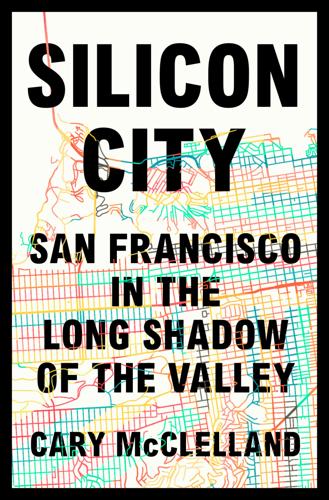
Silicon City: San Francisco in the Long Shadow of the Valley
by
Cary McClelland
Published 8 Oct 2018
My philosophy was—I’ve said this my whole career—you have to keep moving backwards, backwards into the organization. You can’t stay outside. You can’t be on the periphery. You have to move inside and drive it from where the original decisions are being made. With management. That’s what we did with Intel, with Apple, with all our clients. When Steve Jobs and Steve Wozniak came into my office, they had Birkenstocks and cutoffs. Steve had a Ho Chi Minh beard and hair down his back. That actually never, ever bothered me, because I had worked with a lot of crazy people in the semiconductor industry. They were making “hobby” computers. Things people could tinker with at home.
…
It applies to larger things too—because it’s only then, in these little windows, when the money isn’t crazy, you can actually buy a house, have a kid, do these things that normal adult people do. So you wait for the bust to make progress in your life. To have some space. And so we always say, But there will be a bust, but there will be a bust, but there will be a . . . * Apple’s first iconic product—with a housing, monitor, and keyboard—the Apple II was a huge leap forward from the Apple I, which was just a spare circuit board hobbyists could use to build their own computer. † The Defense Advanced Research Projects Agency (DARPA) invests on behalf of the US government in groundbreaking technology for national security. It hosted a series of competitions, challenging students from the nation’s top universities to demonstrate breakthroughs in robotics and autonomous vehicles
…
He called. He would sit on my doorstep. Steve was relentless. Relentless. We spent a lot of time together. We went for walks. We talked a lot. The Apple logo, by the way, I sold to him on the kitchen table upstairs—showing him the layouts. His retort was, “Can we print it on metal?” Because even getting paper to hold the register of all those different colors was quite a task. He made sure he saw it printed on metal before he accepted it. That was for the Apple II, so that was the first logo to appear on their products.* His sense of aesthetics, he had that innately. He was much broader than most people think he was, in terms of literature, in terms of art.
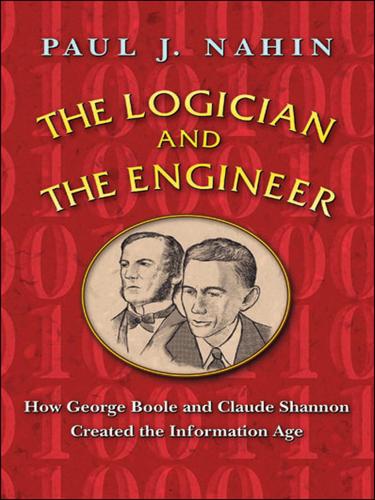
The Logician and the Engineer: How George Boole and Claude Shannon Created the Information Age
by
Paul J. Nahin
Published 27 Oct 2012
A diagram like Figure 7.1.2 is very nice for a high-level, slide-show management meeting (I call it a Jobs-diagram, in honor of Apple’s late marketing genius Steve Jobs, who sold a good line, but who I suspect might have been more than just a little vague on what is actually inside an Apple computer or iPad). For engineers who are tasked with building real hardware, however, it really won’t do. What we need to do now is show precisely how to build both the parity bit generator logic at the source end of the channel, and the parity bit checking logic at the receiver end of the channel. What we are aiming for is a Wozniak-diagram (in honor of Apple’s Steve Wozniak, the technical brains behind the original Apple computer). 7.2 THE EXCLUSIVE-OR GATE (XOR) To lay the groundwork for parity logic, this section introduces a “new” logic gate, the exclusive-OR (written as XOR).
…
And yet, as we proceed through the book, I’ll show you how they too will easily yield to routine Boolean algebraic analysis.3 PUZZLE 2 The local truant officer has six boys under suspicion for stealing apples. He knows that only two are actually guilty (but not which two), and so he questions each boy individually. (a) Harry said, “Charlie and George did it.” (b) James said, “Donald and Tom did it.” (c) Donald said, “Tom and Charlie did it.” (d) George said, “Harry and Charlie did it.” (e) Charlie said, “Donald and James did it.” (f) Tom couldn’t be found and didn’t say anything. (g) Of the five boys interrogated, four of them each correctly named one of the guilty. (h) The remaining boy lied about both of the names he gave. Who stole the apples? PUZZLE 3 Alice, Brenda, Cissie, and Doreen competed for a scholarship.

Don't Trust Your Gut: Using Data to Get What You Really Want in LIfe
by
Seth Stephens-Davidowitz
Published 9 May 2022
Paul Graham, the brilliant essayist and founder of Y Combinator, a start-up accelerator, wrote a fascinating and provocative essay arguing that people who have failed a lot can actually have an edge in entrepreneurship. In the essay, called “The Power of the Marginal,” Graham notes that “great new things often come from the margins.” Graham points to the examples of the founders of Apple, Steve Jobs and Steve Wozniak. Jobs and Wozniak, Graham writes, “can’t have looked good on paper” when they started their now-iconic company. At the time, they were “a pair of college dropouts” and “hippies” whose only business experience consisted of creating blue boxes to hack into phone systems. Graham suspects that stories such as that of Jobs and Wozniak—successful founders who didn’t look good on paper—may not be mere anomalies.
…
Fadell was not some serial entrepreneur who was a born risk-taker and incapable of having a boss; nor was he some career failure taking his last swing at career success. By the time Fadell started Nest, he had worked as a diagnostics engineer at General Magic, a director of engineering at Philips Electronics, and a senior vice president at Apple. By the time he started Nest, in other words, he had among the best employee résumés in Silicon Valley. And crucially, this decade-plus of experience rising as an employee at blue-chip companies gave Fadell deeply relevant and specific skills related to the business he created on his own. When he had his the-world-needs-a-less-clunky-thermostat epiphany, he had experiences that directly prepared him to follow through on his idea.
…
When he had his the-world-needs-a-less-clunky-thermostat epiphany, he had experiences that directly prepared him to follow through on his idea. Fadell utilized the lessons in product design that he had learned at General Magic; the lessons in managing teams and financing that he had picked up at Philips Electronics; and the lessons in improving the entire customer experience that he had absorbed at Apple. He recruited a team from the network that he had built and poured in capital that he had earned from his time as an employee at all three companies. He had also learned from the many mistakes he had made during his twenties and thirties. In an interview on The Tim Ferriss Show, Fadell said, “I wanted to look as horrible as I could in my 20s, so I could only look better as I got older.”
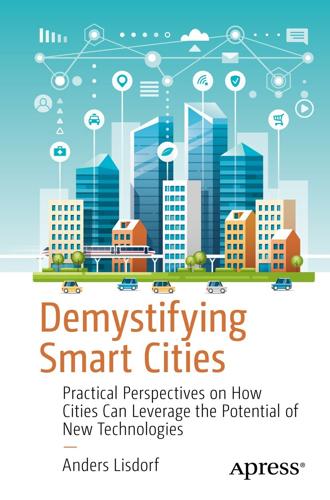
Demystifying Smart Cities
by
Anders Lisdorf
He does not need to know or be interested in any way about why or what the potential of the bridge is, nor does he need to plan or carry out the actual work. He needs to find a way to do something very specific and nontrivial based on his knowledge of technology and environment. A prime example is Steve Wozniak who designed the Apple I and II according to the vision of Steve Jobs. Not a lot of people of this type are well known in public because they usually do their job without any great publicity or acclaim. Engineer types are often lead developers or solution architects with responsibility for a technical product or solution.
…
Creating a special innovation team is a bad way since this isolates the innovative behavior from influencing the way the organization as a whole works. We should therefore look at subtle ways of changing the existing routines. This is also why most diets are unsuccessful: the amount of change is too massive and will feel alien. We are therefore looking at minimal changes similar to substituting our delicious donut with an apple. Examples could be to let employees spend time on innovative projects that would usually be considered a waste of time or circulate them through an innovation lab. Reward – For the habit-forming process, this is the most important point. It is not enough to have a ceremony after an innovation challenge and issue press releases.
…
Self-sustaining cities are also vital for the next frontier of human civilization: space. Within a hundred years, the first budding cities will begin to appear in our solar system – presumably the moon and Mars first, but other targets such as the moons of Jupiter and Saturn are other good candidates for future cities. These cities will not have nearby farms where you can go to buy apples or distribution centers from where you can get a new computer delivered next day through a carrier service. Virtually everything needs to be produced and recycled within the context of the city. In the future cities in space, we have to be able to produce our own food. Not only do we need hydroponic farms but also advanced gene editing solutions.
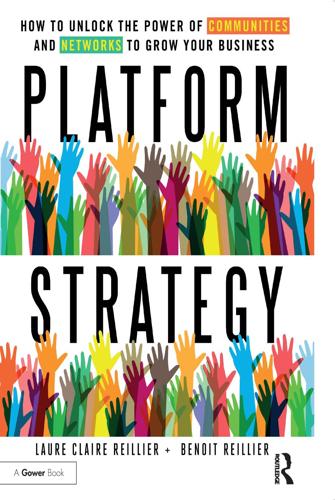
Open for Business Harnessing the Power of Platform Ecosystems
by
Lauren Turner Claire
,
Laure Claire Reillier
and
Benoit Reillier
Published 14 Oct 2017
Amazon Go, a new ‘Just Walk Out’ shopping experiment, where customers can shop with no checkout required, has also launched in early 2017.14 Platform-powered ecosystems 63 Apple’s ecosystem Apple is one of the largest companies in the world. In 40 years, it has become a leader in manufacturing computer devices and mobile phones, developing operating systems and software, and distributing music and digital apps. $1,000 of Apple stock purchased when it floated would now be worth approximately $220,287, equivalent to a yearly return of 16.3%.15 A bit of history In 1976, Steve Jobs, Steve Wozniak and Ronald Wayne invented the first Apple personal computer. Sales grew exponentially and Apple publicly traded on the stock market in 1980.
…
These outsourcing decisions do not fundamentally alter the business model of the company, however, since it keeps tight control over the end-to-end production process of its devices. 18 Statista, June 2016, www.statista.com/statistics/276623/number-of-apps-available-inleading-app-stores/. 19 If you want to better understand the nature of this ‘governance’, you may want to have a look at the App Store guidelines for app developers: https://developer.apple.com/appstore/review/guidelines/. 20 Apple’s services include the various app stores, as well as iTunes, iCloud, Apple Music, Apple Pay, Apple Care, licensing and other services. 21 Fiscal data from Apple’s website, www.apple.com/pr/library/2016/. 22 http://uk.businessinsider.com/apple-ceo-tim-cook-services-q3-2016-7. 23 Apple announced in June 2016 that this 30% figure could go down to 15% (with 85% going to developers) in some circumstances. See www.theverge.com/2016/6/8/ 11880730/apple-app-store-subscription-update-phil-schiller-interview. 24 Horace Dediu, Asymco (2014), www.asymco.com/, www.asymco.com/2015/08/26/muchbigger-than-hollywood/ and www.asymco.com/2015/01/22/bigger-than-hollywood/. 72 Platform-powered ecosystems 25 At the developer level, Apple now allows third-party developers to plug into Siri across multiple operating systems (iOS, tvOS and macOS).
…
Through 64 Platform-powered ecosystems Figure 6.3 Apple’s main business lines Source: Apple website, Wikipedia, Launchworks analysis Table 6.2 Apple’s ecosystem APPLE Apple hardware (iPhone, MacBook, iPad, Apple Watch) Apple Operating Systems (iOS, macOS, Watch OS) Digital Stores (iTunes, Apple Music) App stores (iOS, Mac) Cloud services (iCloud) Apple software (iMovie, iPhoto) Platform Retailer/ Reseller Input/Output business 3 3 3 3 3 3 Source: Launchworks analysis its operating systems and app stores for computers, mobile phones, tablets and wearables, Apple manages a two-sided platform between consumers and software providers. This model fosters a diverse range of software applications. As of June 2016, Apple’s App Store had more than 2 million applications.18 It is interesting to note that Apple, unlike other marketplaces, remains very keen to control the experience of its products end-to-end, and has therefore maintained strong governance around its businesses.
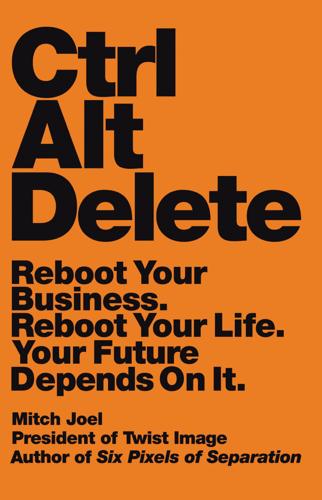
Ctrl Alt Delete: Reboot Your Business. Reboot Your Life. Your Future Depends on It.
by
Mitch Joel
Published 20 May 2013
What can only be described as a contemporary subculture, this annual event showcases “makers”—people who create robotics, electronics, woodworking, 3D printing, and more. These hobbyists embody the next generation of the same philosophical ideologies that brought together people interested in computers and computing back in the 1970s at computer clubs and meetups (the places that people like Bill Gates and Steve Wozniak used to hang out). What’s now being worked on in these garages and shared at events like Maker Faire is a combination of invention and prototyping. We’re evolving from computer hardware and software into more tangible things (concept cars, robots, and more). The Maker Movement is closely tied to the rise of hackers, and people like Tim O’Reilly (founder of O’Reilly Media and advocate of the free software and open-source movements) have described these events as the most exciting ways to see what the future holds for humanity.
…
Ironically, other, scrappier startups have disrupted this traditional retail model with digital-only brands that are capturing the imagination (and money) of consumers all over the world. WHAT APPLE KNOWS. What happened prior to 2001 that made Apple go into the retail business? Whenever the topic of Apple and the Apple retail experience (aka Apple Store) is brought up, many media pundits roll their eyes as if the success of these sparse and crisp stores is some kind of anomaly in business lore. It’s not. Apple came to a conclusion in the 1990s that many businesses have yet to wake up to. They knew that if potential customers walked into a traditional consumer electronics goods store and became inundated with a massive selection of computers and laptops, they would, instinctively, defer to the first sales associate they could wrestle down.
…
Prior to becoming the CEO of JCPenney, Johnson was the senior vice president of retail operations at Apple. In short, he led the concept of both the Apple retail stores and the Genius Bar. His record at Apple is pristine. Within two years of the first store opening, the retail operation of Apple surpassed a billion dollars in annual sales (beating the record held by The Gap). Globally, Apple now has over three hundred stores, and their expansion plans continue to be as aggressive as their product launches. In November 2011, Johnson left Apple to lead JCPenney through this time of purgatory and reboot. His first big and bold moves made news as the 110-year-old company not only struggles to remain relevant but fights within the constraints of the traditional retail world—a place where being an anchor store at a highly coveted shopping mall was the difference between success and failure.

Makers
by
Chris Anderson
Published 1 Oct 2012
From neighbors who worked in the electronics firm in the Valley, he learned about that field—and also understood that things like television sets were not magical things that just showed up in one’s house, but designed objects that human beings had painstakingly created. “It gave a tremendous sense of self-confidence, that through exploration and learning one could understand seemingly very complex things in one’s environment,” he told [an] interviewer. Later, when Jobs and his Apple cofounder, Steve Wozniak, were members of the Homebrew Computer Club, they saw the potential of desktop tools—in this case the personal computer—to change not just people’s lives, but also the world. In this, they were inspired by Stewart Brand, who had emerged from the psychedelic culture of the 1960s to work with the early Silicon Valley visionaries to promote technology as a form of “computer liberation,” which would free both the minds and the talents of people in a way that drugs had not.
…
(There is no evidence that any actually sold, not least because the very modern cook would have to enter data with toggle switches and read the recipes displayed in binary blinking lights.) Yet when the truly personal—“desktop”—computer did eventually arrive with the Apple II and then the IBM PC, countless uses quickly emerged, starting with the spreadsheet and word processor for business and quickly moving to entertainment with video games and communications. This was not because the wise minds of the big computer companies had finally figured out why people would want one, but because people found new uses all by themselves. Then, in 1985, Apple released the LaserWriter, the first real desktop laser printer, which, along with the Mac, started the desktop publishing phenomenon.
…
The same is true today. Take even the best company you can think of, say Apple, and consider how it hires. First, it’s based in the United States, and most of its employees are in Cupertino, California. So there’s a bias toward those who are already in the United States, or can legally work in the country, as well as toward those who live in the San Francisco Bay Area or are willing to move there. (It’s lovely in Cupertino, but if your spouse doesn’t want to leave her family in Rome or Chang Mai, that may matter more.) Like all companies, Apple favors people with experience in the industry it’s hiring for, and it likes to see degrees from good universities as an indication of intelligence and work ethic.
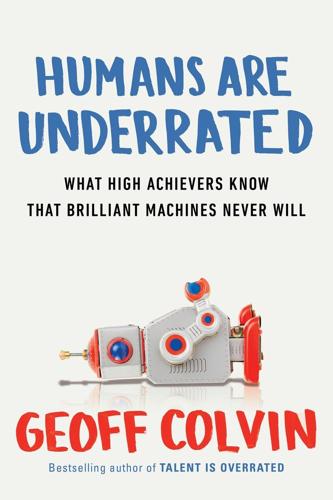
Humans Are Underrated: What High Achievers Know That Brilliant Machines Never Will
by
Geoff Colvin
Published 3 Aug 2015
The finding that groups are more creative when their members trust one another helps explain a phenomenon frequently observed: that the most creative groups of all are often groups of two. The writer Joshua Wolf Shenk has pointed out the truly astounding number of pairs who have produced many of the world’s greatest creative successes. Think of John Lennon and Paul McCartney, Steve Jobs and Steve Wozniak, James Watson and Francis Crick, Jean-Paul Sartre and Simone de Beauvoir—once you get started you can think of them all day without even mentioning less known two-member teams like C. S. Lewis and J. R. R. Tolkien. Shenk argues that they all developed mutual trust so deep that it became faith in one another.
…
We do not all bring the same social skills, and group effectiveness depends on building up social capital between group members through earning trust and helping one another. It all takes time. An important implication of these findings is that since highly effective teams are rare and valuable, not easily or quickly replicated, keeping them together, once formed, is worth a lot. Exhibit A was Apple’s top team under Steve Jobs. The conventional view of Apple’s success is that it derived from Jobs’s genius and dictatorial management, but Jobs knew that wasn’t nearly enough. He worked extraordinarily hard to assemble and keep a highly effective top team, which is an extremely difficult feat in a successful company. As the company prospers, other firms try to lure away its executives, usually with higher-level, higher-paying, more highly visible roles, and the temptation can be overwhelming.
…
You run into someone, you ask what they’re doing, you say ‘Wow,’ and soon you’re cooking up all sorts of ideas.’” It all has to happen in person. That’s why Jobs famously designed the Pixar headquarters the way he did. Pixar is the animation studio that Jobs initially funded and eventually ran in the years before he returned to Apple and for several years thereafter. It’s arguably the most successful film studio ever, since it has never produced a flop. The Toy Story films, Finding Nemo, the Cars films—of the fourteen features it had produced through 2013, every one was a major financial winner. Jobs wanted to keep it that way, so he insisted that Pixar’s new headquarters be designed around a central atrium; he then placed the café, mailboxes, conference rooms, and other elements so as to force people to criss-cross it.
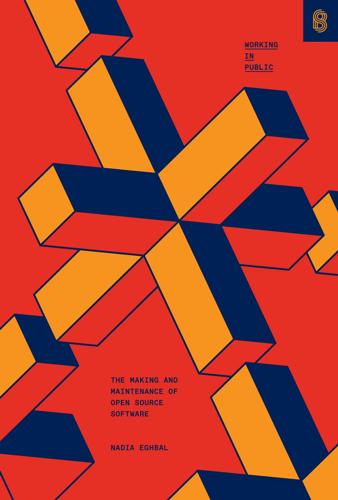
Working in Public: The Making and Maintenance of Open Source Software
by
Nadia Eghbal
Published 3 Aug 2020
Free software was counterculture, and it fell right in line with the burgeoning hacker culture of the times. The term “hacker” was popularized by author Steven Levy, who memorably captured a portrait of the 1980s hacker generation in the book Hackers: Heroes of the Computer Revolution. In Hackers, Levy profiles a number of well-known programmers of the time, including Bill Gates, Steve Jobs, Steve Wozniak, and Richard Stallman. He suggests that hackers believe in sharing, openness, and decentralization, which he calls the “hacker ethic.”17 According to Levy’s portrait, hackers care about improving the world, but don’t believe in following the rules to get there. Hackers are characterized by bravado, showmanship, mischievousness, and a deep mistrust of authority.
…
MARGINAL COSTS We believe that software is zero marginal cost due to the following properties, which together imply that additional copies are cheap to produce: NON-RIVALRY: If I download code from GitHub, my decision doesn’t diminish your ability to download that same code. (By contrast, if I bite into an apple and hand it to you, there is now less apple for you to eat.) NON-EXCLUDABILITY: If someone owns a copy of my code, it is difficult for me to prevent them from sharing it with others. (By contrast, if I build a theme park, I can prevent people from entering by putting up a turnstile and charging admission.) Technology policy writer David Bollier paints a rosy picture of what he calls the “information commons,” or online information goods, including open source software, under the commonly held belief that these are non-rival goods.
…
These activities take place away from platforms, too—you can still upload photos or videos of your Hawaii vacation to a self-hosted website—but why would you? For those hoping to reach an audience, platforms and creators have become inseparable. Platforms are often portrayed as being at odds with creators. App: The Human Story is a documentary about Apple App Store developers who struggle against the limitations of their platform.34 Facebook, meanwhile, is frequently accused of “eras[ing] a huge part of publishers’ audience” with the “stroke of an algorithm.”35 But for all the problems that platforms might have caused, they’ve also delivered immeasurable value.
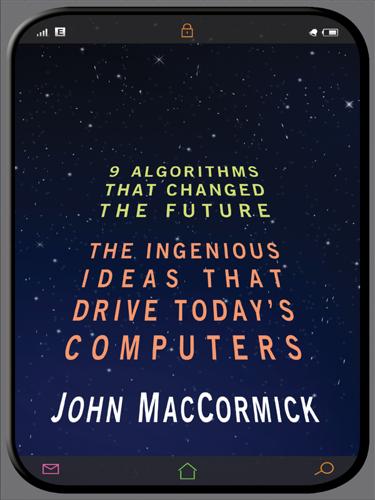
Nine Algorithms That Changed the Future: The Ingenious Ideas That Drive Today's Computers
by
John MacCormick
and
Chris Bishop
Published 27 Dec 2011
Over 50 years earlier—in 1939, with the world economy still reeling from the Great Depression—Hewlett-Packard got underway in Dave Hewlett's garage in Palo Alto, California. Several decades after that, in 1976, Steve Jobs and Steve Wozniak operated out of Jobs' garage in Los Altos, California, after founding their now-legendary Apple computer company. (Although popular lore has it that Apple was founded in the garage, Jobs and Wozniak actually worked out of a bedroom at first. They soon ran out of space and moved into the garage.) But perhaps even more remarkable than the HP and Apple success stories is the launch of a search engine called Google, which operated out of a garage in Menlo Park, California, when first incorporated as a company in September 1998.
…
Let's be very clear about one thing: in both cases, I'm running exactly the same computer program, which is Microsoft Word. It's just that the inputs are different in each case. Don't be fooled by the fact that all modern operating systems let you run a computer program by double-clicking on a document. That is just a convenience that your friendly computer company (most likely Apple or Microsoft) has provided you. When you double-click on a document, a certain computer program gets run, and that program uses the document as its input. The output of the program is what you see on the screen, and naturally it depends on what document you clicked on. Throughout this chapter, I'll be using file names like “abcd.txt.”
…
See also addition algorithm; checksum; compression; digital signature; error-correcting code; Dijkstra's shortest-path algorithm; Euclid's algorithm; factorization; JPEG; key exchange; LZ77; matching; nine algorithms; PageRank; public key; ranking; RSA; web search AltaVista AlwaysYes.exe Amazon Analytical Engine AntiCrashOnSelf.exe AntiYesOnSelf.exe Apple artifact. See compression artificial intelligence. See also pattern recognition artificial neural network. See neural network As We May Think astronomy Atlantic magazine atomic. See transaction audio. See also compression Austen, Jane authentication authority: score; of a web page. See also certification authority authority trick B-tree Babylonia backup bank; account number; balance; for keys; online banking; for signatures; transfer; as trusted third party base, in exponentiation Battelle, John Bell Telephone Company binary Bing biology biometric sensor Bishop, Christopher bit block cipher body, of a web page brain Brin, Sergey British government browser brute force bug Burrows, Mike Bush, Vannevar Businessweek Byzantine fault tolerance C++ programming language CA.
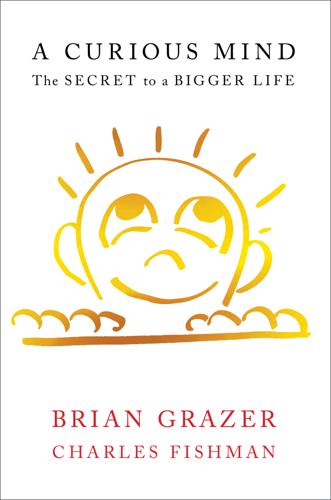
A Curious Mind: The Secret to a Bigger Life
by
Brian Grazer
and
Charles Fishman
Published 6 Apr 2014
Wilson: biologist, author, professor emeritus at Harvard University, two-time winner of the Pulitzer Prize Oprah Winfrey: founder and chairwoman of the Oprah Winfrey Network, actress, author George C. Wolfe: playwright, theater director, two-time winner of the Tony Award Steve Wozniak: cofounder of Apple Inc., designer of Apple I and Apple II computers, inventor John D. Wren: president and CEO of marketing and communications company Omnicom Will Wright: game designer, creator of Sim City and The Sims Steve Wynn: businessman, Las Vegas casino magnate Gideon Yago: writer, former correspondent for MTV News Eitan Yardeni: teacher and spiritual counselor at the Kabbalah Centre Daniel Yergin: economist, author of The Prize: The Epic Quest for Oil, Money and Power, winner of the Pulitzer Prize Dan York: chief content officer at DirecTV, former president of content and advertising sales, AT&T Michael W.
…
Simpson Jared Cohen: director of Google Ideas Joel Cohen: population specialist, mathematical biologist Kat Cohen: university admissions counselor, author of The Truth About Getting In William Colby: CIA director, 1973–1976 Elizabeth Baron Cole: nutritionist Jim Collins: management consultant, expert on business and management, author of Good to Great Robert Collins: neurologist, former chairman of neurology at UCLA School of Medicine Sean Combs: musician, music producer, fashion designer, entrepreneur Richard Conniff: author who specializes in human and animal behavior Tim Cook: CEO of Apple, Inc. Tatiana Cooley-Marquardt: repeat winner of USA Memory Championship Anderson Cooper: journalist, author, TV personality, anchor of CNN’s Anderson Cooper 360 Norman Cousins: medical guru, author of Anatomy of an Illness: As Perceived by the Patient Jacques Cousteau: oceanographer, pioneered marine conservation Chris W.
…
News & World Report, winner of the Pulitzer Prize for investigative reporting Jack Healey: human rights activist, former executive director of Amnesty International USA Thomas Heaton: seismologist, professor at California Institute of Technology, contributed to the development of earthquake early warning systems Peter Herbst: journalist, former editor of Premiere and New York magazines Danette Herman: talent executive for Academy Awards Seymour Hersh: investigative reporter, author, winner of the Pulitzer Prize for uncovering the My Lai massacre and its cover-up during the Vietnam War Dave Hickey: art and cultural critic who has written for Harper’s, Rolling Stone, and Vanity Fair Jim Hightower: progressive political activist, radio talk-show host Tommy Hilfiger: fashion designer, founder of lifestyle brand Christopher Hitchens: journalist and author who was a critic of politics and religion David Hockney: artist and major contributor to the Pop art movement in the 1960s Nancy Irwin: hypnotherapist Chris Isaak: musician, actor Michael Jackson: singer, songwriter, his 1982 album Thriller is the bestselling album of all time LeBron James: NBA basketball player Mort Janklow: literary agent, founder and chairman of the literary agency Janklow & Nesbit Associates Jay Z: musician, music producer, fashion designer, entrepreneur Wyclef Jean: musician, actor James Jebbia: CEO of the Supreme clothing brand Harry J. Jerison: paleoneurologist, professor emeritus at UCLA Steve Jobs: cofounder and former CEO of Apple Inc., cofounder and former CEO of Pixar Betsey Johnson: fashion designer Jamie Johnson: documentary filmmaker who directed Born Rich, heir to Johnson & Johnson fortune Larry C. Johnson: former analyst for the CIA, security and terrorism consultant Robert L. Johnson: businessman, media magnate, cofounder and former chairman of BET Sheila Johnson: cofounder of BET, first African American woman to be an owner/partner in three professional sports teams Steve Johnson: media theorist, popular science author, cocreated online magazine FEED Jackie Joyner-Kersee: Olympic gold medalist, track star Paul Kagame: president of Rwanda Michiko Kakutani: book critic for the New York Times, winner of the Pulitzer Prize for criticism Sam Hall Kaplan: former architecture critic for the Los Angeles Times Masoud Karkehabadi: wunderkind who graduated from college at age thirteen Patrick Keefe: author, staff writer for the New Yorker Gershon Kekst: founder of the corporate communications company Kekst and Co.
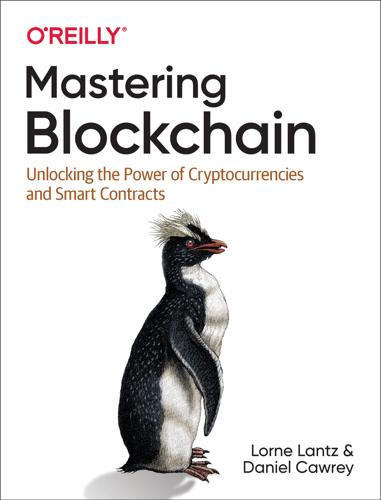
Mastering Blockchain: Unlocking the Power of Cryptocurrencies and Smart Contracts
by
Lorne Lantz
and
Daniel Cawrey
Published 8 Dec 2020
Although it may sound far-fetched, phishing is the most effective tool attackers have—all they need is to obtain some personal information. The best policy is to never give personal information out to anyone in response to an unverified email or text. Always try another means of communication, like a phone call, to verify the request as valid. It’s important to keep these fundamentals in mind. Even Steve Wozniak, the cofounder of Apple, was scammed out of bitcoins by letting a prospective buyer use a credit card to send funds to him via PayPal. The card transaction was reversed, but the bitcoin had already been sent. Be very careful, as cryptocurrency is a major attraction for scammers! Recovery Seed A recovery seed is a series of words that can be used to retrieve a private key stored in a noncustodial wallet.
…
They are also useful to determine, given a certain market order at a certain price, how much an individual person selling at a certain price could push the price of the market. Jurisdiction Most assets in the traditional financial world are traded on centralized exchanges that are highly regulated. For example, Apple stock is traded on the NASDAQ, and the price of Apple stock is dictated by the trading activity on that one market. By contrast, cryptocurrency trading is done on thousands of markets on hundreds of exchanges. These operate in different jurisdictions and therefore must comply with different levels of regulatory oversight. Figure 6-5 illustrates.
…
Distributed means that no single point of failure can bring down an entire system, such as the network of computers that powered the early implementations of the internet. Figure 1-1. A bicycle wheel has a distributed design The early internet as designed decades ago was distributed to protect the network from any type of disruption, and this system has proven itself to this day. In more recent times, centralized companies such as Google, Facebook, Apple, and Amazon have come to largely dominate the internet. It is the hope of some that blockchain technology’s distributed nature could help to mitigate the dominance of the web by these few powerful companies by giving individual users more control—a topic that will be explored later in this book. In the field of computing, a distributed system is one where processing is not done solely on one computer.

Vassal State
by
Angus Hanton
Published 25 Mar 2024
Here, William Hewlett and David Packard started building the pioneering audio oscillator that revolutionised sound engineering. Today, that garage appears in the US National Register of Historic Places with a plaque which reads: ‘Birthplace of Silicon Valley’.34 Microsoft also claims to have been started in a garage in 1975 by college dropout Bill Gates, and Apple fans insist that Steve Jobs and Steve Wozniak built their computers in a garage, though ‘Woz’ has since explained that it was little more than a drop-off point. Google also relates that it was started in a garage by Sergey Brin and Larry Page, although online footage of this location reveals it to be a comfortable office that happens to have double doors at the front.35 The myth of the ‘garage as birthplace’ is also claimed by Californian companies Disney, Mattel and Wham-O, as well as by Xerox and Dell.
…
Why You Cannot Milk an Eagle 1 Quoted in ‘G.E.’s strategies let it avoid taxes altogether’, New York Times (24 March 2011), https://www.nytimes.com/2011/03/25/business/economy/25tax.html. 2 ‘List of countries by GDP (nominal)’, Wikipedia [website], https://en.wikipedia.org/wiki/List_of_countries_by_GDP_(nominal); ‘SOI tax stats – country by country report’, IRS [website], https://www.irs.gov/statistics/soi-tax-stats-country-by-country-report. 3 Bobby Allyn, ‘Apple does not owe Ireland nearly $15 billion in back taxes, court rules’, NPR [website] (15 July 2020), https://www.npr.org/2020/07/15/891383815/apple-does-not-owe-ireland-nearly-15-billion-in-back-taxes-court-rules. 4 ‘Paradise Papers: Apple’s secret tax bolthole revealed’, BBC News [website] (6 November 2017), https://www.bbc.co.uk/news/world-us-canada-41889787. 5 Quoted in Shane Walton, ‘Where next for Apple shares as $14B tax order set to be challenged?’, IG Bank [website] (17 September 2019), https://www.ig.com/en-ch/news-and-trade-ideas/where-next-for-apple-shares-as--14b-tax-order-set-to-be-challeng-190917. 6 ‘Labour force survey quarter 1 2021’, Central Statistics Office [website], https://www.cso.ie/en/releasesandpublications/ep/p-lfs/labourforcesurveyquarter12021/labourforce/, combined with the statistics for 2020 at ‘SOI tax stats – country by country report’. 7 Cain Burdeau, ‘Apple suffers setback as it fights colossal tax penalty in EU courts’, Courthouse News Service [website] (9 November 2023), https://www.courthousenews.com/apple-suffers-setback-as-it-fights-colossal-tax-penalty-in-eu-courts/. 8 ‘Bermuda black hole’, Wikipedia [website], https://en.wikipedia.org/wiki/Bermuda_Black_Hole. 9 Gabriel Zucman et al., ‘The missing profits of nations’ [PDF], Gabriel Zucman [website] (June 2018), https://gabriel-zucman.eu/files/TWZ2018.pdf. 10 Katarzyna Anna Bilicka, ‘Comparing UK tax returns of foreign multinationals to matched domestic firms’, American Economic Review 109/8 (2019), pp. 2921–53, doi: 10.1257/aer.20180496. 11 The figure of 10 per cent is based on the official IRS numbers available at ‘SOI tax stats – country by country report’. 12 Nicky Burridge, ‘Government to spend £8.6bn on 119,000 affordable homes’, Zoopla [website] (1 September 2021), https://www.zoopla.co.uk/discover/property-news/government-to-spend-gbp8-6bn-on-119-000-affordable-homes/. 13 Quoted in Richard Murphy, ‘Starbucks avoiding tax has a knock-on effect on homegrown business’, Guardian (16 October 2012), https://www.theguardian.com/commentisfree/2012/oct/16/starbucks-tax-british-business. 14 Tom Bergin, ‘UK committees to examine Starbucks tax strategies’, Reuters [website] (15 October 2012), https://www.reuters.com/article/us-britain-starbucks-tax-idUSBRE89E0EX20121015. 15 Tom Bergin, ‘Starbucks’s European tax bill disappears down $100 million hole’, Reuters [website] (1 November 2012), https://www.reuters.com/article/us-starbucks-tax-europe-idINBRE8A00DP20121101. 16 ‘Special report – how Starbucks avoids UK taxes’, Reuters [website] (15 October 2012), https://www.reuters.com/article/idUSBRE89E0F4/. 17 Andrew Goodall, ‘Starbucks paid no corporation tax on “profitable” UK business’, Tax Journal (16 October 2012), https://www.taxjournal.com/articles/starbucks-paid-no-corporation-tax-profitable-uk-business-16102012. 18 Alex Dunnagan, ‘US set to raise $8.5bn from four tech companies following global tax deal’, TaxWatch [website] (7 October 2021), https://www.taxwatchuk.org/tag/apple/. 19 Alex Cobham and Petr Jansky, ‘Global distribution of revenue loss from corporate tax avoidance: re-estimation and country results: global corporate tax avoidance’, Journal of International Development 30/2 (March 2018), pp. 206–32, doi:10.1002/jid.3348. 20 Felicity Lawrence, Not on the Label: What Really Goes into the Food on Your Plate (London: Penguin, 2004). 21 ‘New ranking reveals corporate tax havens behind breakdown of global corporate tax system; toll of UK’s tax war exposed’, Tax Justice Network [website] (28 May 2019), https://taxjustice.net/press/new-ranking-reveals-corporate-tax-havens-behind-breakdown-of-global-corporate-tax-system-toll-of-uks-tax-war-exposed/. 22 ‘European stocks vs US stocks portfolio comparison’, Lazy Portfolio ETF [website], https://www.lazyportfolioetf.com/comparison/european-stocks-vs-us-stocks/. 23 For Luas, see ‘Luas’, TII [website], https://www.tii.ie/public-transport/luas/. 24 Quoted in ‘The most influential person in the tax world’, NYU Law Magazine 23 (2013) [PDF], https://issuu.com/nyulaw/docs/complete_law_school_magazine_2013/36?
…
r=US&IR=T. 10 ‘The story of Zipcar’, Zipcar [website], https://www.zipcar.com/en-gb/about#:~:text=We’re%20on%20a%20mission,vehicles%20that%20support%20environmental%20sustainability. 11 Richard Thaler, Nudge: Improving Decisions about Health, Wealth, and Happiness (New Haven, CT: Yale University Press, 2008). 12 Daniel Kahneman, Thinking, Fast and Slow (New York: Farrar, Straus & Giroux, 2011). 13 Quoted in Tim Bradshaw, ‘Apple aims to double service revenues by 2021’, Financial Times (31 January 2017), https://www.ft.com/content/a3e00a3a-4372-3f96-b8d6-d673ac4a5d57. 14 Quoted in ‘Apple paid subscriptions top 1 billion, doubling in three years’, Pymnts [website] (2 November 2023), https://www.pymnts.com/apple/2023/apple-paid-subscriptions-top-1-billion-doubling-in-three-years/. 15 ‘Media nations UK 2023’ [PDF], Ofcom [website] (3 August 2023), https://www.ofcom.org.uk/__data/assets/pdf_file/0029/265376/media-nations-report-2023.pdf. 16 Quoted in ‘Pain of paying – everything you need to know’, InsideBE [website], https://insidebe.com/articles/pain-of-paying/. 17 Florent Geerts, ‘The jam experiment – how choice overloads makes consumers buy less’, Medium [website] (17 August 2017), https://medium.com/@FlorentGeerts/the-jam-experiment-how-choice-overloads-makes-consumers-buy-less-d610f8c37b9b. 18 Barry Schwartz, The Paradox of Choice: Why More Is Less (New York: Harper Perennial, 2004).

How to Fix the Future: Staying Human in the Digital Age
by
Andrew Keen
Published 1 Mar 2018
Lick-lider,1 is considered a father of the internet—chose to name his new science after kybernetes. Networked technology, Wiener initially believed, could steer or pilot us to a better world. This assumption, which Wiener shared not only with Bush and Licklider, but with many other twentieth-century visionaries—including Steve Jobs and Steve Wozniak, the cofounders of Apple—was based on the conviction that this new technology would empower us with agency to change our societies. “You’ll see why 1984 won’t be like ‘1984,’” promised the iconic Super Bowl XVIII advertisement about the transformative power of Jobs’s and Wozniak’s new desktop computer. But Edward Snowden’s virtual speech at the Alte Teppichfabrik doesn’t share this optimism.
…
Vestager,” Stephens admits, “but everyone who supports the liberal market economy that made possible the success of Apple, Google and the like should be applauding her courageous effort to reset the balance.”4 Vestager’s courage has been her unwavering determination to squarely stand up to what Farhad Manjoo calls the “new superclass of American corporate might.”5 By reminding companies like Google and Apple of their responsibilities in the real world, Philip Stephens suggests, Vestager—as it happens, the mother of three young girls—is socializing these often rather childish exponents of radical disruption. Apple’s CEO, Tim Cook, for example, “often sounds as if he believes his company should be free to decide how much it pays in tax,” Stephens notes.6 And Vestager hasn’t been shy about explaining to Cook his grown-up obligations.
…
Apple’s CEO, Tim Cook, for example, “often sounds as if he believes his company should be free to decide how much it pays in tax,” Stephens notes.6 And Vestager hasn’t been shy about explaining to Cook his grown-up obligations. Thus her imposition of a 13-billion-euro fine on Apple in back taxes for what Stephens describes as the company’s “labyrinthine tax arrangements” with the Irish government. Apple, Vestager reminded Cook, was paying just 0.005 percent tax on the tens of billions of dollars in revenue from its Irish-based European subsidiary to the Irish government. Given this brazen tax avoidance scheme, it’s no wonder that Apple, the world’s most valuable and wealthiest company, still holds $215 billion offshore, beyond the reach of any sovereign government.
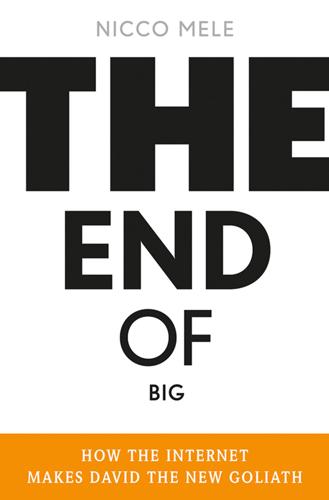
The End of Big: How the Internet Makes David the New Goliath
by
Nicco Mele
Published 14 Apr 2013
One group, the People’s Computer Company, put this explanation on the cover of its newsletter: “Computers are mostly used against people instead of for people; used to control people instead of to free them; Time to change all that—we need a … People’s Computer Company.”13 It all amounted to a sharp departure from mainstream computer science in America, which lived on in the giant mainframes of academic and government institutions. A famous example of the burgeoning anti-institutional computer counterculture is the Homebrew Computer Club, an ad hoc group of hobbyist nerds who in 1975 began meeting once a month in Gordon French’s garage in Silicon Valley. Some of its more famous members included the Apple founders Steve Jobs and Steve Wozniak.14 Gates drew the ire of the Homebrew Computer Club by selling something that had previously been given away free—a terrible development for hobbyists. Microsoft’s first software product, Altair BASIC, was sold at a time that software was generally bundled with a hardware purchase.
…
But it’s easy to imagine that ten years from now, every home will have a 3-D printer, just like every home today has a microwave. Over time, these 3-D printers will grow more advanced. Once nanotechnology hits its stride, 3-D printers will build complex machines such as an iPhone in your own home. In fact, Apple is already preparing for this future. Take the iPhone you’ve got in your pocket right now and turn it over. You’ll see that it says in fine print, “Designed by Apple in California. Assembled in China.” Apple understands that the design is the important part of what companies do, not manufacturing, and it is already staking its claim to the design. The Coming Plague of Shanzhai On-demand fabrication has the potential to do a lot of good around the world.
…
The quotation is taken from his essay “We Owe It All to the Hippies,” Time, 1 Mar. 1995. 13. http://www.digibarn.com/collections/newsletters/peoples-computer/peoples-1972-oct/index.html 14. http://www.atariarchives.org/deli/homebrew_and_how_the_apple.php 15. http://www.digibarn.com/collections/newsletters/homebrew/V2_01/index.html 16. http://www.gadgetspage.com/comps-peripheral/apple-i-computer-ad.html 17. John Markoff, What the Dormouse Said: How the Sixties Counterculture Shaped the Personal Computer Industry (New York: Penguin, 1996). 18. http://pdgmag.com/2012/02/02/steve-jobs-lee-clow-and-ridley-scott-the-three-geniuses-who-made-1984-less-like-1984/ 19. http://www.youtube.com/watch?v=OYecfV3ubP8 20. Adelia Cellini, “The Story Behind Apple’s ‘1984’ TV Commercial: Big Brother at 20.”

The Internet Is Not the Answer
by
Andrew Keen
Published 5 Jan 2015
In particular, I’d like to thank Kurt Andersen, John Borthwick, Stewart Brand, Po Bronson, Erik Brynjolfsson, Nicholas Carr, Clayton Christensen, Ron Conway, Tyler Cowen, Kenneth Cukier, Larry Downes, Tim Draper, Esther Dyson, George Dyson, Walter Isaacson, Tim Ferriss, Michael Fertik, Ze Frank, David Frigstad, James Gleick, Seth Godin, Peter Hirshberg, Reid Hoffman, Ryan Holiday, Brad Horowitz, Jeff Jarvis, Kevin Kelly, David Kirkpatrick, Ray Kurzweil, Jaron Lanier, Robert Levine, Steven Levy, Viktor Mayer-Schönberger, Andrew McAfee, Gavin Newsom, George Packer, Eli Pariser, Andrew Rasiej, Douglas Rushkoff, Chris Schroeder, Tiffany Shlain, Robert Scoble, Dov Seidman, Gary Shapiro, Clay Shirky, Micah Sifry, Martin Sorrell, Tom Standage, Bruce Sterling, Brad Stone, Clive Thompson, Sherry Turkle, Fred Turner, Yossi Vardi, Hans Vestberg, Vivek Wadhwa, and Steve Wozniak for appearing on Keen On . . . and sharing their valuable ideas with me. NOTES Preface 1 The Cult of the Amateur: How Today’s Internet Is Killing Our Culture (New York: Currency/Doubleday, 2007), and Digital Vertigo: How Today’s Online Social Revolution Is Dividing, Diminishing, and Disorienting Us (New York: St.
…
This new data factory economy changes everything—even the monetary supply of our global financial system. In early 2014, the global economy’s top five companies’ gross cash holdings—those of Apple, Google, Microsoft, as well as the US telecom giant Verizon and the Korean electronics conglomerate Samsung—came to $387 billion, the equivalent of the 2013 GDP of the United Arab Emirates.78 This capital imbalance puts the fate of the world economy in the hands of the few cash hoarders like Apple and Google, whose profits are mostly kept offshore to avoid paying US tax. “Apple, Google and Facebook are latter-day scrooges,” worries the Financial Times columnist John Plender about a corporate miserliness that is undermining the growth of the world economy.79 “So what does it all mean?”
…
See also “The Square People, Part Two,” New York Times, May 17, 2014. 2 Edward Luce, “America Must Dump Its Disrupters in 2014,” Financial Times, December 22, 2014. 3 Nick Cohen, “Beware the Lure of Mark Zuckerberg’s Cool Capitalism,” Observer, March 30, 2013. 4 Fred Turner, From Counterculture to Cyberculture (University of Chicago Press, 2008). 5 For more on Apple, Steve Jobs, and Foxconn, see my TechCrunchTV interview with Mike Daisey, who starred in the Broadway hit The Agony and Ecstasy of Steve Jobs: “Apple and Foxconn, TechCrunchTV, February 1, 2011. 6 Lyn Stuart Parramore, “What Does Apple Really Owe Taxpayers? A Lot, Actually,” Reuters, June 18, 2013. 7 Jo Confino, “How Technology Has Stopped Evolution and Is Destroying the World,” Guardian, July 11, 2013. 8 Alexis C.
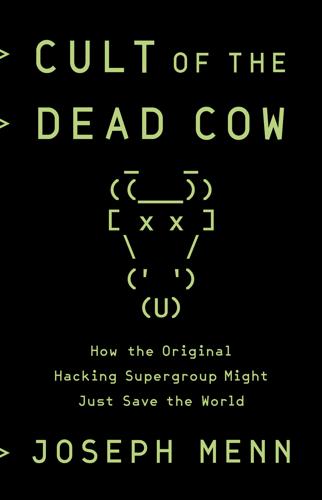
Cult of the Dead Cow: How the Original Hacking Supergroup Might Just Save the World
by
Joseph Menn
Published 3 Jun 2019
The phreakers were a diverse group, including John Draper, who called himself Cap’n Crunch after learning that whistles given out with that breakfast cereal could be used to blow 2600 hertz, which allowed free calls. The technical puzzles of phreaking would attract future innovators up to and including Apple founders Steve Jobs and Steve Wozniak, who sold blue boxes to make free calls while in college. The political divide in America at the end of the 1960s was the worst until the 2000s, and that helped push phreaking in a radical direction. The phone companies were very clearly part of the establishment, and AT&T was a monopoly to boot.
…
After Microsoft, Window Snyder went to Apple. Apple’s software had fewer holes than Microsoft’s, but its customers were more valuable, since they tended to have more money. Snyder looked at the criminal ecosystem for chokepoints where she could make fraud more difficult. One of her innovations was to require a developer certificate, which cost $100, to install anything on an iPhone. It wasn’t a lot of money, but it was enough of a speed bump that it became economically unviable for criminals to ship malware in the same way. Going deeper, Snyder argued that criminals would target Apple users less if the company held less data about them.
…
Going deeper, Snyder argued that criminals would target Apple users less if the company held less data about them. But more data also made for a seamless user experience, a dominant theme at Apple, and executives kept pressing Snyder for evidence that consumers cared. “It was made easier when people started freaking out about Snowden,” Snyder said. “When people really understand it, they care.” In large part due to Snyder, Apple implemented new techniques that rendered iPhones impenetrable to police and to Apple itself, to the great frustration of the FBI. It was the first major technology company to declare that it had to consider itself a potential adversary to its customers, a real breakthrough in threat modeling.

To Be a Machine: Adventures Among Cyborgs, Utopians, Hackers, and the Futurists Solving the Modest Problem of Death
by
Mark O'Connell
Published 28 Feb 2017
There is, obviously, something about the idea of intelligent robots that frightens and titillates us, that fuels our feverish visions of omnipotence and obsolescence. The technological imagination projects a fantasy of godhood, with its attendant Promethean anxieties, onto the figure of the automaton. A few days after I returned from Pomona, I read that Steve Wozniak, the cofounder of Apple, had spoken at a conference about his conviction that humans were destined to become the pets of superintelligent robots. But this, he stressed, would not necessarily be an especially undesirable outcome. “It’s actually going to turn out really good for humans,” he said. Robots “will be so smart by then that they’ll know they have to keep nature, and humans are part of nature.”
…
When I thought of DARPA, I thought, among other things, of its administration of the so-called Information Awareness Office, exposed by the former CIA employee Edward Snowden as a mass surveillance operation organized around a database for the collection and storage of the personal information (emails, telephone records, social networking messages, credit card and banking transactions) of every single resident of the United States, along with those of many other countries, all of which was accomplished by tapping into the user data of marquee-name tech companies like Facebook, Apple, Microsoft, Skype, Google—the corporate proprietors of the sum of things that might be factually and usefully said about you, your information. “Look at him go!” said Prabhakar now, as the robot rounded the second safety barrier, bringing the car over a line in the sand, and gently to a halt in front of the door through which the industrial disaster zone stage set was to be accessed by means of knob-turning.
…
I glanced down at the book in front of us on the table, and did not disagree. We were sitting in a courtyard at the rear of the café, in blinding midday sunlight. The tables were all occupied, I noted, and yet we were the only people conducting a conversation. Every other customer in the café was alone, and typing on an Apple laptop. As so often in San Francisco, I had a sense of being embedded in some hyperreal simulation of a corporate utopia—or, rather, a heavy-handed parody of such a thing. As a scene, it felt a little overbearing in its symbolism. This is one of the problems with reality: the extent to which it resembles bad fiction.

Our Final Invention: Artificial Intelligence and the End of the Human Era
by
James Barrat
Published 30 Sep 2013
and deriving Newton’s second law of thermodynamics, fall in seconds to well-programmed AI. At the same time, no computer vision system can tell the difference between a dog and a cat—something most two-year-old humans can do. To some degree these are apples-and-oranges problems, high-level cognition versus low-level sensor motor skill. But it should be a source of humility for AGI builders, since they aspire to master the whole spectrum of human intelligence. Apple cofounder Steve Wozniak has proposed an “easy” alternative to the Turing test that shows the complexity of simple tasks. We should deem any robot intelligent, Wozniak says, when it can walk into any home, find the coffeemaker and supplies, and make us a cup of coffee.
…
And more technologies are becoming information technologies, as computers, and even robots, grow ever more intimately involved with every aspect of product design, manufacture, and sales. Consider that every smart phone’s manufacture—not just its processor chip—took advantage of the digital revolution. It’s been just six years since Apple’s iPhone first came out, and Apple has released six versions. Apple has more than doubled its speed and for most users halved its price, or better. That’s because hardware speed has been regularly doubling in the components within the end product. But it’s also been doubling in every link in the production pipeline that led to its creation.
…
Another is to use the agent AI to augment a human brain. Broadly speaking, those who believe intelligence must be embodied hold that knowledge itself is grounded in sensory and motor experiences. Cognitive processing cannot take place without it. Learning facts about apples, they claim, will never make you intelligent, in a human sense, about an apple. You’ll never develop a “concept” of an apple from reading or hearing about one—concept forming requires that you smell, feel, see, and taste—the more the better. In AI this is known as the “grounding problem.” Consider some systems whose powerful cognitive abilities lie somewhere beyond narrow AI but fall short of AGI.

Live Work Work Work Die: A Journey Into the Savage Heart of Silicon Valley
by
Corey Pein
Published 23 Apr 2018
He was about to move to London to take a job with a startup that projected Web streams on walls at tech conferences. It sounded stupid, but I congratulated him all the same. This was his dream vacation in America—his “techie pilgrimage” around Silicon Valley. So far Francis had visited Steve Jobs’s old house; the garage where Apple cofounder Steve Wozniak built the first Apple computer; the Xerox PARC laboratory, where many modern features of consumer computers, such as the graphical user interface, had been invented with government support; the Hewlett-Packard campus; and the Googleplex, which was a stone’s throw from Jeannie’s place. Marveling at the many golden-hued wonders over every desiccated California hilltop, Francis saw signs of genius everywhere he looked.
…
Four in five distrusted the economic institutions of organized labor, banks, and big business. However, another poll, also taken in 2012, found that 82 percent of Americans had a favorable opinion of Google. Two-thirds felt favorably toward Apple. Nearly three in five approved of Facebook. Zuckerberg was bigger than Jesus. In 2015, Gallup reran its poll and found that confidence in government and most other institutions had fallen even lower, while another poll of consumer brands showed that Google, Apple, and Facebook had maintained the same high levels of public admiration. Americans hate the government, and they don’t much like big corporations, either, but years of propaganda have convinced them that the tech companies are somehow different, that Silicon Valley nobility are uniquely enlightened, benevolent, and cool—not your average jerk billionaires!
…
For your reference, the terms that appear in the print index are listed below. Adolphe, Eric Ad:Tech Aeiveos Airbnb Alcor Alexander, Steve Aloise, Rome Alphabet Altman, Sam Amazon American Conservative Ancestry.com Anderson, Kyle Andreessen, Marc Andreessen-Horowitz Anduril Angry Birds Anissimov, Michael Apple Apple iTunes Architectural Digest ARPANET Ask.fm Associated Press Auerbach, David Auletta, Ken Bank of America Bannon, Steve Benthall, Blake Bezos, Jeff Bharara, Preet BIL Conference BioCurious Biogen Bitcoin BitTorrent Blogger Bloomberg News Blum, Richard C. “Dick” BMW Boeing Booz Allen Hamilton Borges, Jorge Luis Bradbury, Robert J.
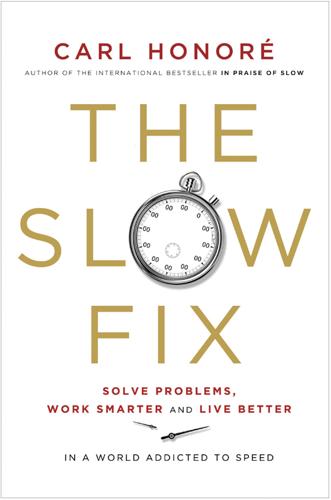
The Slow Fix: Solve Problems, Work Smarter, and Live Better in a World Addicted to Speed
by
Carl Honore
Published 29 Jan 2013
Every major religion has prophets – Buddha, Muhammad, Moses – who went out into the wilderness to grapple with the big questions on their own. Picasso once said, “Without great solitude, no serious work is possible.” This remains true in the modern, high-tech world. In his memoir, Steve Wozniak described how he built the first two Apple computers working by himself late into the night: “Most inventors and engineers I’ve met are like me … they live in their heads. They’re almost like artists … And artists work best alone.” That is why we all need to be careful when tapping the crowd. Ask yourself if your problem really will benefit from being thrown open to everybody.
…
Like McNutt, his motto was: “The good God is in the detail.” Steve Jobs, founder and former CEO of Apple, took that creed to the level of obsessive compulsion. Towards the end of his life, as he lay dying in hospital, he burned through 67 nurses before settling on three that met his exacting standards. Even when heavily sedated, he tore an oxygen mask off his face to object to the way it looked. The pulmonologist was startled when Jobs demanded to see five other mask designs so he could pick the one he liked best. Yet what sounds like a rampant case of OCD helped turn Apple into one of the most successful companies in history. Deadlines came and went as Jobs drove his designers, engineers and marketers to get every detail just right.
…
When they complained, after nearly 20 iterations, he yelled at them: “Can you imagine looking at that every day? It’s not just a little thing. It’s something we have to get right.” Even when Apple was riding high, Jobs, like a latter-day Sung ceramicist, took an interest in how many screws went into the company’s laptop cases. In other words, by the time he took to the stage in his trademark black turtleneck to unveil the latest game-changing gadget, Apple had already dotted all the i’s and crossed all the t’s in a way that put the Burton boys, and most rivals, to shame. Sometimes the tiniest detail can mean the difference between a triumph and a turkey.
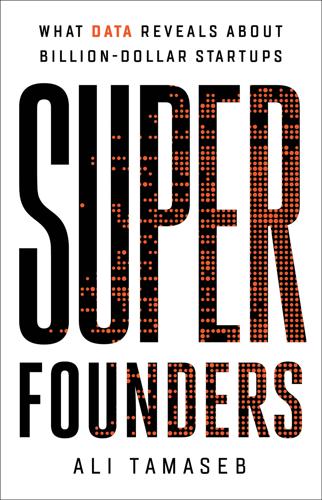
Super Founders: What Data Reveals About Billion-Dollar Startups
by
Ali Tamaseb
Published 14 Sep 2021
Founders of health and biotech billion-dollar startups were on average older, and founders of any age were successful at consumer and enterprise. ON SOLO FOUNDERS There’s another myth that founders will fail if they don’t have a partner alongside them. There are so many successful duos—Larry Page and Sergey Brin of Google, Steve Jobs and Steve Wozniak of Apple, Bill Hewlett and David Packard of HP—that it’s almost hard to imagine starting a company without a co-founder. In fact, most aspiring entrepreneurs are advised not to. This standard startup advice is so ingrained that some incubators and accelerator programs push founders away from solo entrepreneurship and encourage co-founder “dating” rituals as part of the program.
…
When I started telling my network of friends about the situation, I received a surprise call from Apple. I joined Apple in 2001, designing what would become the iPod. After ten years at Apple, I didn’t want to be on the treadmill, making smaller, lighter, or faster versions of what I had already built. Building eighteen generations of the iPod, three generations of the iPhone, and working on the first generation of iPad, I saw this movie playing out and I told myself that I’m just not going to sit here and do the same thing for the next twenty years. So my wife (who was Apple’s VP of human resources) and I retired from the daily drive to Cupertino and started traveling the world with our two toddlers.
…
—CHUCK PALAHNIUK, SURVIVOR Years ago, when I was starting my first company, my idea of a successful startup mostly came from movies I’d watched, articles I’d read, and the ever-present popular mythology of famous companies. Facebook’s story made me believe that most successful founders start when they are in college, as Mark Zuckerberg did. Apple’s story made me believe that you needed two co-founders, one technical genius and one business visionary to become super successful (it wasn’t until much later that I learned Apple actually had a third co-founder at the very beginning). Billion-dollar startups—or “unicorns,” a term coined by venture capitalist Aileen Lee—are, as their name indicates, relatively rare. They make up less than 0.1 percent of startups.
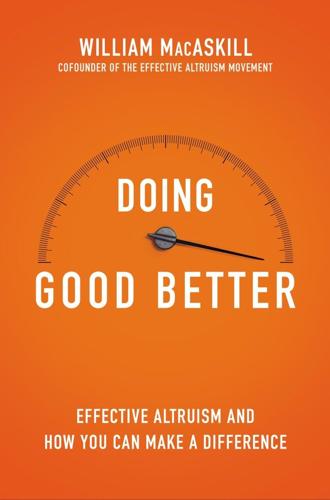
Doing Good Better: How Effective Altruism Can Help You Make a Difference
by
William MacAskill
Published 27 Jul 2015
He first got into electronics only reluctantly, as a way to earn cash on the side, helping his tech-savvy friend Steve Wozniak handle business deals while also spending time at the All-One Farm. Even Apple Computer’s very existence was fortuitous: while Jobs and Wozniak were trying to sell circuit boards to hobbyists, the owner of one local computer store said he would buy fully assembled computers, and they jumped at the chance to make more money. It was only once they started to gain traction and success that Jobs’s passion for Apple and computing really bloomed. What about following your heart, your gut, or your itch to find work you love?
…
For health benefits, economists: In this discussion I’ve left out the most common metric used by economists to measure harms and benefits, which is called willingness to pay. According to this metric, the size of a benefit of something to a person is measured by how much that person is willing to pay for it. If Jones is willing to pay a dollar for an apple, but Smith is willing to pay ten dollars for an apple, then, if we used this metric, we would conclude that giving Smith an apple provides ten times as great a benefit as providing Jones with an apple. The reason I don’t rely on this metric is that it treats an additional dollar as being of equal worth no matter who has it. But this is clearly wrong. If Smith is a multimillionaire, whereas Jones is poor, then one dollar will be much less valuable to Smith than a dollar is to Jones.
…
You’d probably think about the design and usability of the two computers, the hardware, the software, and the price. You certainly wouldn’t think about how much Apple and Microsoft each spend on administration, and you wouldn’t think about how much their respective CEOs are paid. Why would you? As a consumer you only care about the product you get with the money you spend; details about the financials of the companies who make the products are almost always irrelevant. If Apple spent a lot of money to attract a more talented management team, you might even consider that a good sign that their products were the best on the market!
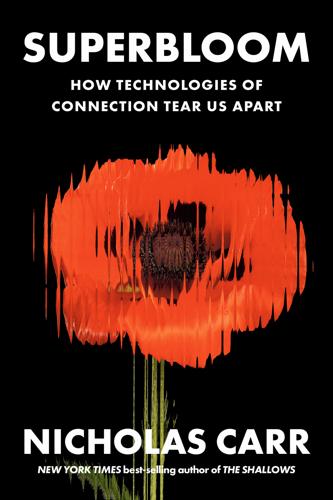
Superbloom: How Technologies of Connection Tear Us Apart
by
Nicholas Carr
Published 28 Jan 2025
The apocalyptic view has particular currency among tech-industry bigwigs—the very people constructing the language models. In the wake of OpenAI’s release of ChatGPT at the end of 2022, the press was overrun with doomsday scenarios of, in Elon Musk’s excited phrase, “civilization destruction.” In March 2023, Musk, one of OpenAI’s original investors and directors, joined other tech luminaries, including Apple cofounder Steve Wozniak and Berkeley AI guru Stuart Russell, to urge a six-month moratorium on the further development of LLMs, saying the systems could have “catastrophic effects.”9 A few weeks later, the top executives of OpenAI, Google DeepMind, and other prominent AI outfits co-signed a public statement warning of “the risk of extinction.”10 In a portentous interview with the New York Times, OpenAI’s boss, Sam Altman, compared his company’s work to that of the Manhattan Project.
…
Reality wasn’t designed from the bottom up to make us happy.13 She’s right, except for the maximizing-our-potential part and the making-us-happy part. It remains to be seen whether virtual-reality and augmented-reality eyewear such as Meta’s Quest, Apple’s Vision, and Ray-Ban’s smart glasses eventually catch on with the masses—consumers so far have been wary of ceding control over their field of vision to corporate coders—but in the development and promotion of such hardware we see yet more signs of society’s retreat from the real. Apple’s Vision Pro “lets you put yourself inside a sphere of screens,” the Wall Street Journal reported shortly after the pricey “face-based computer” went on sale in 2024.
…
one user tweeted—but they did seem to have an effect, increasing the likelihood that people would at least glance at an article before sharing it. Two years later, Twitter tested a similar pop-up to deter “abusive language” in tweets. It, too, seemed to have an effect, with users canceling or revising about a third of the flagged messages.5 Apple and Instagram have introduced algorithmic interventions aimed at curbing the exchange of nude photos among minors. Teenaged users of Apple’s Messages and Instagram’s direct-messaging service are warned before sending or receiving messages that include nude images, and the images themselves are sometimes automatically blurred.6 But while frictional design may help curb certain well-defined types of undesirable online behavior, it is likely to prove as futile as Frank Walsh’s gunplay when it comes to changing how social media operates.
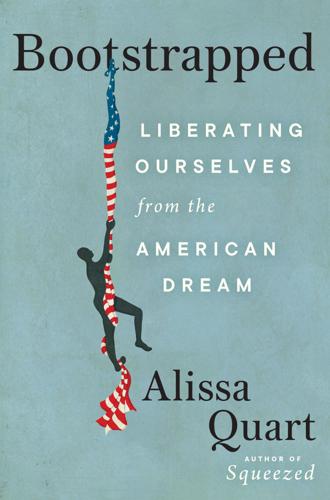
Bootstrapped: Liberating Ourselves From the American Dream
by
Alissa Quart
Published 14 Mar 2023
Her contemporary followers are legion and include the King-of-the-NASDAQ-by-way-of-Burning Man Travis Kalanick, cofounder of Uber, who had the cover of a Rand book as his Twitter avatar, as well as the founder of Snapchat, Evan Spiegel, and Twitter’s Jack Dorsey. Lisa Duggan, in her account of Rand entitled Mean Girl, writes that the most “influential figure in the industry, after all, isn’t Steve Jobs or Sheryl Sandberg, but rather Ayn Rand.” Apple’s cofounder Steve Wozniak even called Rand’s Atlas Shrugged one of Jobs’s “guides in life.” Rand’s version of self-made absolutism is particularly attractive to these people, because they tend to be more absolutist: no one may contradict their point of view. As Adrian Daub wrote scathingly of her allure, “Who is teaching them [bro-grammers] that when they press a button on their keyboard, millions, or even billions, of people can be affected, sometimes in terrifying ways?
…
The Dial, the publication that members of the Transcendental Club created and contributed to until 1844, was also a testament to their interwoven lives and minds. Emerson was so connected to his circle of friends, in fact, that he begged Thoreau to move in with him; his second wife, Lidian; and his four children. He crowed that doing chores with Thoreau would make him “suddenly well and strong . . . [Thoreau is] as full of buds of promise as a young apple tree.” Ultimately, they lived separated by a creek, which in autumn was filled with brackish plants, and brown branches, drying red berries and crows. Thoreau wrote Walden, published in 1854, on a plain, scarred writing table, distinguished by tiny finials and symmetrical shapes. Emerson wrote on a similar desk.
…
At the same time, Americans think their odds of success, and of rising from the bottom to the top, are much higher than they are, and they have greater expectations based on more slender reeds than those relied on by their European counterparts. When running in 2012 as the Republican candidate for president, Mitt Romney announced at a town hall in Ohio, “To say that Steve Jobs didn’t build Apple, that Henry Ford didn’t build Ford Motors, that Papa John [Schnatter] didn’t build Papa John’s pizza . . . [is] not just foolishness. It’s insulting to every entrepreneur, every innovator in America.” (Romney might have considered retiring entrepreneurial heroes, as Robert Reich suggested we should do in the 1980s, exchanging the archetype of the Executive Alone with a more honest model that prized teams of coworkers.)
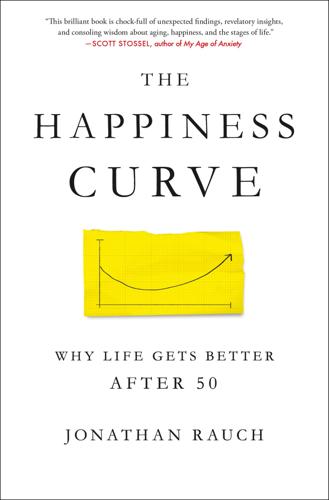
The Happiness Curve: Why Life Gets Better After 50
by
Jonathan Rauch
Published 30 Apr 2018
As Joshua Wolf Shenk has observed in his book Powers of Two: How Relationships Drive Creativity, a lot of the greatest creativity is the result of creative dyads, partnerships in which two very different people complement each other and become a sort of super-thinker or super-creator. John Lennon and Paul McCartney, of the Beatles, are an iconic example; or Steve Jobs and Steve Wozniak, the founders of Apple Computer; or Thomas Jefferson and James Madison, whose political partnership married the ideas of individual freedom and constitutional order. Though each member of the dyad was exceptionally talented, their combination sparked a chemical reaction that created something fantastic. Around the time he discovered big data sets on happiness, Oswald met his own creativity reagent: David Blanchflower.
…
See also life satisfaction by age assumptions about equations expectation gap and Graham and Nikolova data on sensitization factor significance of effect unemployment factor compared to ages of man aging depression and anxiety survey on geriatric psychiatry field of successful Golden Years model for outdated model of paradox of physical limits and as social concept social selectivity and stress decline after age fifty survey on successful time and United States and Japan study on wisdom and wisdom and American Association of Retired Persons (AARP) American Beauty The American Interest American Journal of Psychiatry American Psychiatric Association American Psychologist antidepressants anxiety apes, U-curve pattern in Apple Computer Ardelt, Monika Aristotle The Atlantic Authentic Happiness: Using the New Positive Psychology to Realize Your Potential for Lasting Fulfillment (Seligman) average life satisfaction by age adjusted world sample, 2010–2012 unadjusted world sample, 2010–2012 awards baby boomers Bangen, Katherine Barbary macaques Bartolini, Stefano Be Here Now (Ram Dass) Berlin, Isaiah Bhagavad Gita bias.
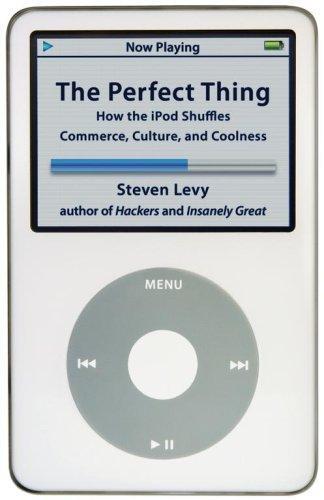
The Perfect Thing: How the iPod Shuffles Commerce, Culture, and Coolness
by
Steven Levy
Published 23 Oct 2006
One is drugs; the other is technology, applied so as to please ourselves. When the latter is used to get effects as mind-blowing as the former, things become really interesting. (One of the most memorable quotes I've ever gathered in my reporting career came in 1982, covering the US Festival, a huge rock concert sponsored by Apple cofounder Steve Wozniak. At a motel nearby, Jerry Garcia, who was prepping to play a "Breakfast with the Grateful Dead" set, proclaimed, "Technology is the new drugs." Okay, not an original concept, but consider the source.) Without altering one's chemical composition, the iPod does change your head. Plugging directly into your ears, dominating the Personal brain matter in between, and shuffling your music collection to extract constant delight, it generates a portable alternative reality, almost always more pleasant than the real one.
…
Soon before the launch, the first production iPods arrived, ready for the lucky first wave (like me) who would receive them in advance of the thousands that would be snapped up instantly when Apple began selling them to the public in November. Looking back on the process, Jobs waxes philosophical. "If there was ever a product that catalyzed what's Apple's reason for being, it's this," he says. "Because it combines Apple's incredible technology base with Apple's legendary ease of use with Apple's Origin awesome design. Those three things come together in this, and it's Uke, that's what we do. So if anybody was ever wondering why is Apple on the earth, I would hold up this as a good example." A few days after the launch, Jobs threw a celebratory lunch for forty or so of the core people who had worked on the product.
…
Years earlier, when he had been in his earlier phase at Apple and working on the Macintosh, I had asked him what he wanted for Apple. "I want us," he said, "to be a ten- Apple billion-dollar company that doesn't lose its soul." Now Apple's revenues had fallen from a high of eight billion dollars to barely five billion. And Jobs would be the first to tell you that the soul level had fallen from Solomon Burke heights to the Lawrence Welk abyss. "I think the world is a slightly better place with Apple Computer," he told me then. "If Apple could return to its roots as an innovator, then the whole industry would benefit from that.
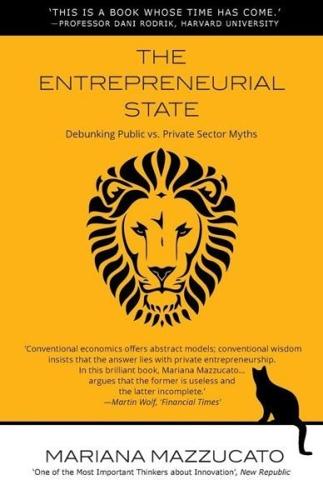
The Entrepreneurial State: Debunking Public vs. Private Sector Myths
by
Mariana Mazzucato
Published 1 Jan 2011
Only about a decade ago Apple was best known for its innovative personal computer design and production. Established on 1 April 1976 in Cupertino, California by Steve Jobs, Steve Wozniak and Ronald Wayne, Apple was incorporated in 1977 by Jobs and Wozniak to sell the Apple I personal computer.1 The company was originally named Apple Computer, Inc. and for 30 years focused on the production of personal computers. On 9 January 2007, the company announced it was removing the ‘Computer’ from its name, reflecting its shift in focus from personal computers to consumer electronics. This same year, Apple launched the iPhone and iPod Touch featuring its new mobile operating system, iOS, which is now used in other Apple products such as the iPad and Apple TV.
…
This same year, Apple launched the iPhone and iPod Touch featuring its new mobile operating system, iOS, which is now used in other Apple products such as the iPad and Apple TV. Drawing on many of the technological capabilities of earlier generations of the iPod, the iPhone (and iPod Touch) featured a revolutionary multi-touch screen with a virtual keyboard as part of its new operating system. Table 3. Apple’s net sales, income and R&D figures between 1999 and 2011 (US$, millions) Note: Apple’s annual net sales, income and R&D figures were obtained from company’s annual SEC 10-K filings. Figure 10. Apple net sales by region and product (US$, billions) While Apple achieved notable success during its 30-year history by focusing on personal computers, the success and popularity of its new iOS products has far exceeded any of its former achievements in personal computing.2 In the 5-year period following the launch of the iPhone and iPod Touch in 2007, Apple’s global net sales increased nearly 460 per cent.
…
Recent public debates involving Apple have raised issues regarding corporate tax revenues, declining manufacturing and job creation in the US, and critiques of its overseas manufacturing and production activities. Apple claims that it has directly or indirectly created 304,000 jobs over the course of its history. If one takes this figure and then adds the estimated 210,000 jobs that are focused on developing mobile applications for the Apple Store, the aggregate total is estimated at 514,000 jobs that are either created or enabled/supported by Apple (Apple 2012). Apple bases its claims on a report developed by the Analysis Group, a private consulting firm Apple hired to study its impact in the job market.1 The attention to these numbers stems largely from the ongoing debate regarding whether or not technology companies have been contributing to overall job creation within the domestic manufacturing sector.
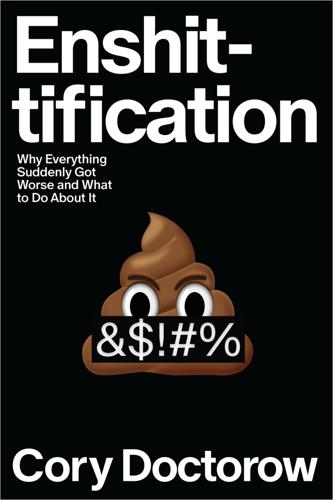
Enshittification: Why Everything Suddenly Got Worse and What to Do About It
by
Cory Doctorow
Published 6 Oct 2025
The expansion of IP law in a sector where everything has software—and thus embodies a copyrighted work—and terms of service means that customers and suppliers have lost the most promising, direct tool they have for defending themselves from the enshittificatory impulses of the companies they have to do business with. The End of Labor Power When I entered the tech workforce in the 1990s, we were surrounded by the myth of the heroic founder, people like Apple founders Steve Jobs and Steve Wozniak, who kicked around for a few years working at HP1 before striking out on their own and founding a company that put their former employers in the shade. That was what we all aspired to. But that dream shrank. As Big Tech consolidated its grip on the tech sector, venture capitalists and founders understood that the most likely “exit” for any startup was acquisition by a Big Tech company.
…
Take the media Apple sells you through Apple Music, Apple Books, and iTunes: these are all scrambled before they are sent to your phone. The only programs that can unscramble these files come from Apple, and Apple has designed those programs so that they delete the unscrambled version as soon as you’re done with it. The fact that only Apple apps can unscramble Apple media, and that these apps don’t let you save the media in an unscrambled state, means that you must use Apple’s programs to play your Apple media. Naturally, these programs don’t run on Android, so switching from Apple to Android means throwing away all the media you’ve ever purchased.
…
Apple has also touted the superiority of an economy grounded in good, old-fashioned money, contrasting this with Google’s ad-centric Android. Both Google and Apple charge you for the service you get, but (Apple claims) Apple puts the price tag on the front of its product, while Google charges you by siphoning off a constant stream of personal data used to feed a vast surveillance advertising empire. Apple said it was a hardware company, swapping material objects for cash, not a surveillance company that made its profits by selling its customers. Apple’s defenders claim that this makes Apple a better bargain—for its users, and for society. Because Apple gets paid in dollars, rather than eyeballs, it has an incentive to satisfy you.
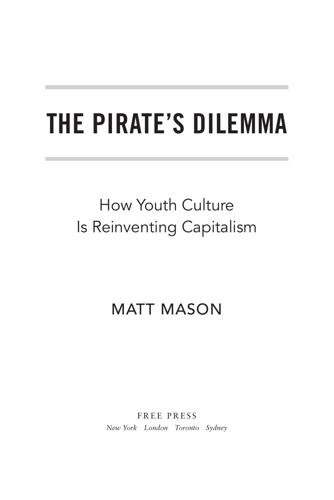
The Pirate's Dilemma: How Youth Culture Is Reinventing Capitalism
by
Matt Mason
They met in the garage of French's home in San Mateo County, California, to ponder the future of computing, using new technology such as the Altair kit. Here the idea that became the personal computer was formulated. The club's members included a college dropout who occasionally dropped acid named Steve Jobs, and his future Apple cofounder, Steve Wozniak. They remixed early programs, fixing and debugging them, publishing their findings in a regular newsletter, and recruiting more members along the way. Like disco, computer software was something of a loose-knit, collaborative effort with an open social structure. And like disco, it would change completely once it went commercial.
…
In May 2006 he financed a lawsuit that overturned New York legislation that banned anyone age eighteen to twenty from buy- ing or carrying spray paint or broad-tipped marker pens, which effectively prohibited many art students from buying supplies for school, or even carrying them to class. Judge George B. Daniels granted a temporary injunction against the law, arguing, “That's like telling me I can eat an apple, but I can't buy an apple, no one can sell me an apple and I can't bring it to work for lunch.”] and yet the tag became a billion-dollar brand. Ecko's hoax was spectacular [FN: *Ecko wasn't the first person to think of this. Back in the 1960s one of the earliest writ- ers, CORNBREAD, tagged the Jackson 5's 747 when the pop group made a stop in Philadelphia.] and his ongoing defense of street art and free speech is admirable, but some critics see nothing more than thinly veiled PR stunts for his multinational corporation.
…
If we also consider that over 800 million mobile phones are sold every year, which will all be able to receive music, and study the growth of new technologies and their application in the last century, the industry should be confident.” The jury is still out on Jenner's solution, but EMI and Universal became the first major labels to begin selling MP3s without DRM encryption in 2007. That February, Apple's Steve Jobs made a plea to all the record companies to abolish DRM completely, saying it was “clearly the best alternative for consumers, and Apple would embrace it in a heartbeat.” John Kennedy, the CEO of the IFPI (the International Federation of Phonograph Industries), summed up the music industry's new position on the Pirate's Dilemma it faced: “At long last the threat has become the opportunity.”
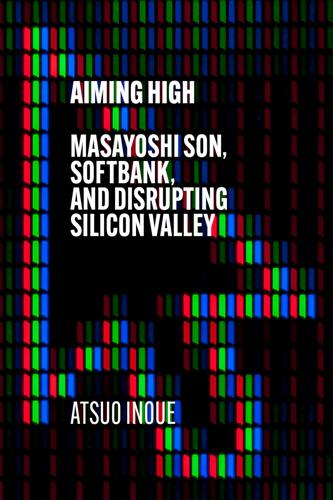
Aiming High: Masayoshi Son, SoftBank, and Disrupting Silicon Valley
by
Atsuo Inoue
Published 18 Nov 2021
It was the start of an arms race within the nascent computer industry and the two had just developed a way for BASIC to run on an Altair. Gates was only 19 at the time whilst Allen was 22. Allen quit his job at Honeywell and Gates dropped out of Harvard to move to Albuquerque and start Microsoft. Steve Jobs and Steve Wozniak were also at the forefront of the emerging computer industry (they would go on to found Apple Computer Company in 1976), while Scott McNealy (Sun Microsystems) and Larry Ellison (Oracle) could also be said to be Son’s contemporaries. The digital information revolution was calling and all of these individual Damascus moments would lay the groundwork for it to become a reality.
…
Son would turn 50 in August 2007 and – according to his life plan – he was determined to spend his fifties bringing his business aspirations to completion, with preparations in this respect having steadily been made, dating back to two years prior to the Vodafone acquisition and the unveiling of Apple’s iPhone. At the time Son had placed a lot of time and thought into what he would do if he entered the mobile phone market, and the conclusion he reached was he would require a secret weapon. And who did Son think of asking to forge such a technological weapon? None other than Steve Jobs, and he wasted no time in getting the ball rolling, ringing the Apple founder up for a teleconference. Steve Jobs may have possessed the charisma required to make Apple an international concern, but despite being the company’s founder he had occasionally been estranged due to his rather intense personality and verbal clashes.
…
Steve Jobs may have possessed the charisma required to make Apple an international concern, but despite being the company’s founder he had occasionally been estranged due to his rather intense personality and verbal clashes. Jobs, after rescuing Apple from the brink and mounting a miraculous comeback, unleashed the innovative iMac and iPod on the world, sparking a complete lifestyle change in users. Son had envisioned an iPod with mobile phone technology included in it and had sent Jobs a sketch. Jobs replied that Apple already had something like that in the offing, to which Son countered by apologising for his poor artistic talent, but once they’d got this new model of phone ready he wanted exclusivity rights to sell it in Japan.
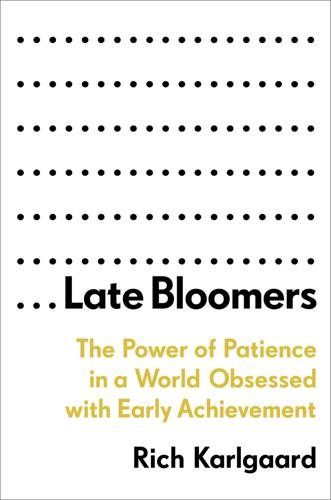
Late Bloomers: The Power of Patience in a World Obsessed With Early Achievement
by
Rich Karlgaard
Published 15 Apr 2019
Bezos said: ‘Every time we hire someone, he or she should raise the bar for the next hire, so that the overall talent pool is always improving.’ ” Bezos jokingly told a reporter that his wife’s high SAT scores made the pair compatible. Facebook founder Mark Zuckerberg scored a perfect 1600 on the math and English parts of his SAT. And Apple cofounder Steve Wozniak? He, too, scored an 800 on his math SAT. Two more eye-opening numbers: The combined personal wealth of our six wunderkinds math SAT test takers is more than $300 billion. And the companies they created are worth $3.6 trillion, more than the GDP of all but nine countries. Surely this is worthy of applause.
…
In 2008, Hector Zenil, who coleads the Algorithmic Dynamics Lab at the Karolinska Institute in Sweden, studied 3,400 people between the ages of four and ninety-one on their ability to behave randomly. The idea is that random thinking—seeing beyond the obvious—is connected to creative thinking. When an apple falls from a tree, the creative person doesn’t simply think that apple must have been ripe; like Isaac Newton, she sees the apple fall and pictures the invisible force of gravity. How did Hector Zenil and researchers test for random thinking? They developed five short “random item generation” tasks performed on a computer, including twelve simulated coin flips, ten simulated rolls of a die, and arranging boxes on a grid.
…
She ran Theranos like a police state, obsessed with preventing employees from talking about their work with each other. She became a master at employing Jobs’s “reality distortion field”—a fictional narrative about her own genius and wondrous Theranos products that were unyielding to the facts. Jobs was only twenty-one when he cofounded Apple, and twenty-five when Apple first sold its stock to the public, making Jobs a young celebrity and centi-millionaire. Holmes felt increasingly pressured in a race to glory and early wealth against her old idol. As the Theranos pinprick blood tests proved worthless, she pushed ahead instead of getting the technology right.
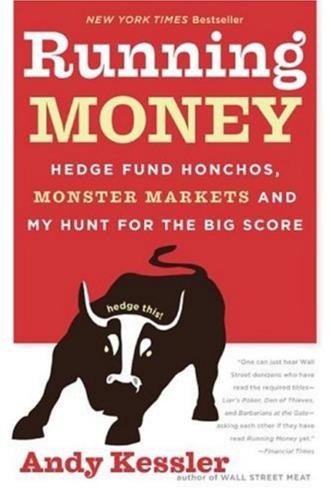
Running Money
by
Andy Kessler
Published 4 Jun 2007
He quickly pulled up his sleeve and pointed to a Microma watch on his wrist and told me he wore it often to remind himself to never be that stupid again. Intel’s lesson: make the intellectual property, not the end product. The cool thing about a computer on a chip is you can start a computer company without knowing much about computers. Steve Jobs and Steve Wozniak created Apple Computer without knowing that much. Wozniak had to write some software to get data on and off a floppy disk drive, which no one else had, and their Apple I became a hit. IBM knew lots about how to milk big bucks out of big computers, but nothing about microprocessors. So a stealth group in Florida contracted out the work, creating a Frankensteinlike IBM PC in 1981, using an Intel microprocessor, Microsoft software and a Western Digital disk controller.
…
See AOL Andreessen, Marc, 197, 199 animation, 134–35 AOL (America Online), 69–73, 207, 208, 223, 290 Cisco routers and, 199 Inktomic cache software and, 143 Netscape Navigator purchase, 201, 225 Telesave deal, 72–73 TimeWarner deal, 223, 229 as top market cap company, 111 Apache Web server, 247 Apple Computer, 45, 127, 128 Apple II, 183 Applied Materials, 245 Archimedes (propeller ship), 94 Arkwright, Richard, 65 ARPANET, 186, 187, 189, 191 Arthur Andersen, 290 Artists and Repertoire (A&R), 212, 216 Asian debt crisis, 3, 150, 151, 229, 260 yen and, 162–65, 168, 292 @ (at sign), 187 AT&T, 61, 185–86, 189 August Capital, 2, 4 auto industry, 267–68 Aziz, Tariq, 26 Babbage, Charles, 93 Baker, James, 26 Balkanski, Alex, 44, 249 bandwidth, 60, 111, 121, 140, 180, 188–89 Baran, Paul, 184, 185 Barbados, 251, 254 300 Index Barksdale, Jim, 198, 199–201 Barksdale Group, 201 BASE, 249 BASIC computer language, 126, 127 BBN.
…
“Of course, you told me that a salesman or broker has 30 seconds and three bullet points to pitch our deal. So we need to provide that in our positioning.” “Right. But I figured out that the bullet points are always the same.” “Always?” “Sure. Bullet one is a large market, as Don Valentine says.” Don Valentine ran Sequoia Ventures and first made his mark funding Apple Computer. His golden touch didn’t stop—he funded Cisco and Sierra Semiconductor. He was also chairman of C-Cube and sitting across the table. “Bullet two is an unfair competitive advantage, and bullet three is a business model leveraging that unfair advantage. I just fill in the details company by company.”
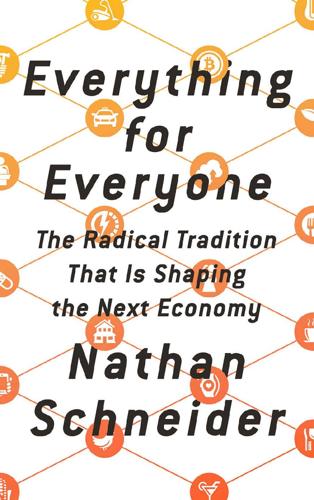
Everything for Everyone: The Radical Tradition That Is Shaping the Next Economy
by
Nathan Schneider
Published 10 Sep 2018
They had their own publication, the People’s Computer Company Newsletter, and a mostly theoretical network (with only one actual node, in a Berkeley record store) called Community Memory. Their propaganda described the computer as a “radical social artifact” that would usher in a “direct democracy of information”—“actively free (‘open’) information,” of course.5 This was the culture out of which arose such icons as Steve Wozniak, inventor of the Apple computer, and the Whole Earth Catalog, which hyped the digital revolution with all that newsprint and mail-order could muster. Like the unMonastery, these guerrilla hackers blended the old with the new, the ancient with the postindustrial. Although their projects often relied on state or corporate subsidies, they envisioned their efforts as apolitical, wrapped in the “safe neutrality” of information, as Roszak put it.
…
When tech people talk about “democratizing” something, like driving directions or online banking, what they really mean is access. Access is fine, but it’s just access. It’s a drive-through window, not a door. Access is only part of what democracy has always entailed—alongside real ownership, governance, and accountability. Democracy is a process, not a product. Apple’s Orwell-themed 1984 Super Bowl commercial presented the personal computer as a hammer in the face of Big Brother; later that year, after Election Day, the company printed an ad in Newsweek that proposed “the principle of democracy as it applies to technology”: “One person, one computer.” The best-selling futurist handbook of the same period, John Naisbitt’s Megatrends, likewise promised that “the computer will smash the pyramid,” and with its networks “we can restructure our institutions horizontally.”16 What we’ve gotten instead are apps from online monopolies accountable to their almighty stock tickers.
…
Similarly, though my computer is for the most part very speedy and able, slow computing means slowing down enough to compute in community. This turns annoyances into pleasures, just as one learns to appreciate unhygienic soil, disorderly farmers’ markets, and inconvenient seasons. The software I use now lacks the veneer of flawlessness that Apple products provide; it is quite clearly a work in progress, forever under construction by programmers who notice a need and share their fixes with everyone. But early on, I found that the glitches felt different than they used to. What would have driven me crazy on a MacBook didn’t upset me anymore.

This Is for Everyone: The Captivating Memoir From the Inventor of the World Wide Web
by
Tim Berners-Lee
Published 8 Sep 2025
• While attending Emanuel I decided I would build my own computer. What choice did I have? Personal computers like the Apple II were still years away, and even if they were available, I couldn’t have afforded one. Besides, homebrew computing gives you a feel for the system from the CPU to the backplane. This was a project that would take me years to complete, and it helped lay the foundations for my journey. In fact, as I later learned, building a computer from scratch was a rite of passage for many engineers in my generation – Bill Gates and Steve Wozniak did it too. I already had some experience with electrical engineering. With my friends Nick and Christopher, I had manufactured an electromagnet by softening an iron nail in the fireplace, then wrapping the nail in coils of copper wire.
…
Apple, you see, got a 30 per cent commission of the apps it sold; plus, it received continuing income from subscriptions and in-app purchases. It was far more profitable for Apple to direct the developers to build an app than to build a mobile website. Apple got a cut from the former, and nothing for the latter. I considered what he was saying as I stared out into the Pacific. He was right, of course – Apple had found a way to profit from not just apps, but also magazine subscriptions, in-game transactions and anything else that was sold through its platform. Worse, when vendors tried to direct customers to pay using cheaper web-based alternatives, Apple kicked them out of the store! Some of the more powerful vendors objected; Spotify later filed an antitrust complaint against Apple, and Amazon to this day will not sell e-books through its Kindle mobile app.
…
Some of the more powerful vendors objected; Spotify later filed an antitrust complaint against Apple, and Amazon to this day will not sell e-books through its Kindle mobile app. But few vendors had the clout to fight Apple, especially given the predominance of the iPhone. I considered the implications of Apple’s competitive position. The Apple app store was an example of exactly the kind of for-profit gatekeeping I’d always hoped the web could navigate around. But the iPhone was extraordinarily popular – I owned one myself. The toll booths the web had managed to avoid on the PC had found their way into the mobile realm

Everything Is Obvious: *Once You Know the Answer
by
Duncan J. Watts
Published 28 Mar 2011
To illustrate this problem, let’s step away from bankers for a moment and ask a less-fashionable question: To what extent should Steve Jobs, founder and CEO of Apple Inc., be credited with Apple’s recent success? Conventional wisdom holds that he is largely responsible for it, and not without reason. Since Jobs returned in the late 1990s to lead the company that he founded in 1976 with Steve Wozniak in a Silicon Valley garage, its fortunes have undergone a dramatic resurgence, producing a string of hit products like the iMac, the iPod, and the iPhone. As of the end of 2009, Apple had outperformed the overall stock market and its industry peers by about 150 percent over the previous six years, and in May 2010 Apple overtook Microsoft to become the most valuable technology company in the world.
…
Surprisingly, the company that “got it right” in the music industry was Apple, with their combination of the iPod player and their iTunes store. In retrospect, Apple’s strategy looks visionary, and analysts and consumers alike fall over themselves to pay homage to Apple’s dedication to design and quality. Yet the iPod was exactly the kind of strategic play that the lessons of Betamax, not to mention Apple’s own experience in the PC market, should have taught them would fail. The iPod was large and expensive. It was based on closed architecture that Apple refused to license, ran on proprietary software, and was actively resisted by the major content providers.
…
As with all explanations that depend on the known outcome to account for why a particular strategy was good or bad, the conventional wisdom regarding Apple’s recent success is vulnerable to the Halo Effect. Quite aside from the Halo Effect, however, there is another potential problem with the conventional wisdom about Apple. And that is our tendency to attribute the lion’s share of the success of an entire corporation, employing tens of thousands of talented engineers, designers, and managers to one individual. As with all commonsense explanations, the argument that Steve Jobs is the irreplaceable architect of Apple’s success is entirely plausible. Not only did Apple’s turnaround begin with Jobs’s return, after a decade of exile, from 1986 to 1996, but his reputation as a fiercely demanding manager with a relentless focus on innovation, design, and engineering excellence would seem to draw a direct line between his approach to leadership and Apple’s success.
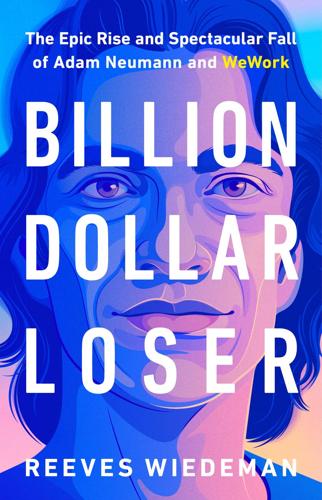
Billion Dollar Loser: The Epic Rise and Spectacular Fall of Adam Neumann and WeWork
by
Reeves Wiedeman
Published 19 Oct 2020
He was crucial to their early success, defining WeWork’s aesthetic and handling the dirty work of its physical growth—wiring the internet, sandblasting the walls. When Adam promised the world to investors and landlords, Miguel was usually sitting nearby, his mind racing to figure out how they were going to pull off whatever his partner had just guaranteed they would do. If Adam fancied himself a successor to Steve Jobs, Miguel was his Steve Wozniak, building the machine to make his partner’s dream a reality. But there wasn’t much of a role for a do-it-all handyman in a company with several thousand employees. Miguel had let his architecture license expire, and his role in the design process had diminished as the job became a blitzscaled version of American Apparel’s expansion from a decade before.
…
No one had raised private capital in the 2010s as successfully as Neumann, and he became less concerned about the specifics of what WeWork could offer potential partners and more focused on pushing his fellow CEOs to commit to investing in his IPO. Even a token commitment from Salesforce or Apple would go a long way toward building support for the story Adam was telling to investors. In the spring, Adam secured a meeting with Tim Cook, Apple’s CEO. Neumann and Gross worked with Adrian Perica, Apple’s vice president of corporate development, and Luca Maestri, Apple’s CFO, to develop a pitch to Cook on a collaboration that could lead Apple—which was already invested in WeWork through the Vision Fund—to invest in WeWork’s IPO. When he visited Cupertino, Adam wore a T-shirt under a blazer and brought his dad.
…
Jen Berrent, the company’s lawyer, got frustrated when one new tech hire came in with a spreadsheet laying out various kinds of equity payment schemes. “You have to trust us,” Berrent said. To build out the tech team, Adam poached Shiva Rajaraman, an engineer who had bounced among jobs at YouTube, Spotify, and Apple; Adam told Rajaraman he should leave Apple because what WeWork was building would be “bigger than the iPhone.” WeWork’s tech team had grown from half a dozen people in 2013 to more than two hundred, but the first task facing Rajaraman remained fixing Space Station and Space Man. The insistence that WeWork build and maintain its systems in-house rather than outsourcing to an established software provider had lingering consequences.
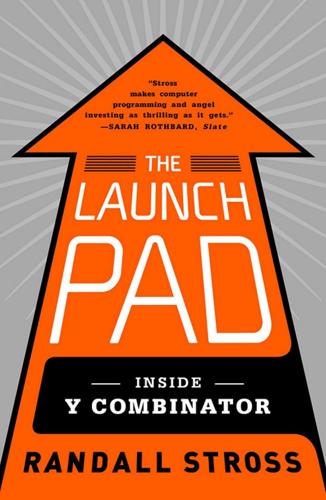
The Launch Pad: Inside Y Combinator, Silicon Valley's Most Exclusive School for Startups
by
Randall Stross
Published 4 Sep 2013
He tries another tack, asking about areas in which they are “domain experts,” the way Google’s founders were experts in search. “We all sort of collected our strengths and things we’re good at,” Shen says. “It’s the most random things.” Graham offers another inspiring tale about a startup that addressed an unmet need: Apple, which was started by Steve Wozniak because he wanted his own computer. “He couldn’t afford the components. So he designed computers on paper. And then DRAMs came along—chips became just cheap enough that he could build a computer.” When Steve Jobs saw what Wozniak had built, he suggested that they sell it to other people.
…
Independent tour operators have come and gone, trying to eke out an existence driving tourists by the headquarters of the iconic companies in tech. These companies do not offer tours of their premises, however. The one chance to set foot inside hallowed space is at Apple headquarters—and that is only to gain admittance to Apple’s company store to buy official Apple T-shirts and caps. See Mike Cassidy, “Silicon Valley Tour Travels Rough Road,” San Jose Mercury News, October 24, 2011. 2. Marc Andreessen, “Why Software Is Eating the World,” Wall Street Journal, August 20, 2011, http://online.wsj.com/article/SB10001424053111903480904576512250915629460.html.
…
CHAPTER 14: RISK 1. “Where Are They Now: Ralston Shepherds Yahoo E-mail from Free to Paid,” MarketWatch, September 20, 2002, www.marketwatch.com/story/the-man-in-charge-of-yahoo-e-mail-shares-his-vision. 2. Apple did not rebrand Lala’s service; it shut the service down the next year. Peter Kafka, “Apple Pulls the Plug on Lala, Replaces It with . . . Nada,” AllThingsD, June 1, 2010, http://allthingsd.com/20100601/apple-pulls-the-plug-on-lala-replaces-it-with-nothing/. 3. PG, “Imagine K12,” YC Web site, March 17, 2011, http://ycombinator.com/imaginek12.html. 4. Ralston was formally appointed a YC partner early the next year.
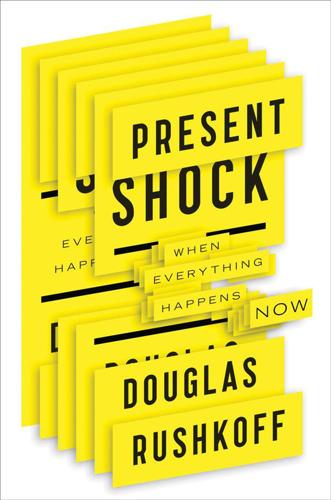
Present Shock: When Everything Happens Now
by
Douglas Rushkoff
Published 21 Mar 2013
As author and social critic Steven Johnson would remind us, ideas don’t generally emerge from individuals, but from groups, or what he calls “liquid networks.”1 The coffeehouses of eighteenth-century London spawned the ideas that fueled the Enlightenment, and the Apple computer was less a product of one mind than the collective imagination of the Homebrew Computer Club to which both Steve Jobs and Steve Wozniak belonged. The notion of a lone individual churning out ideas in isolated contemplation like Rodin’s Thinker may not be completely untrue, but it has certainly been deemphasized in today’s culture of networked thinking. As we become increasingly linked to others and dependent on making connections in order to make sense, these new understandings of how ideas emerge are both helpful and reassuring.
…
The amount of time between purchase (or even earning) and gratification has shrunk to nothing—so much so that the purchase itself is more rewarding than consuming whatever it is that has been bought. After waiting several days in the street, Apple customers exit the store waving their newly purchased i-gadgets in the air, as if acquisition itself were the reward. The purchase feels embedded with historicity. They were part of a real moment, a specific date. The same way someone may tell us he was at the Beatles famous concert at Shea Stadium, the Apple consumer can say he scored the new iPhone on the day it was released. Where “act now” once meant that a particular sales price would soon expire, today it simply means there’s an opportunity to do something at a particular moment.
…
Now, on the surface this sounds like the failing of the fractalnoids—those economists who want to equate the properties of plankton with the personalities of Parisians. But it’s fundamentally different in that it’s human beings applying patterns intuitively to different systems, not the frantic confusion of apples and oranges or, more likely, apples with planets. Yes, it is still fraught with peril, but it’s also a rich competency to develop in an era of present shock. For instance, I still don’t know whether to be delighted or horrified by the student who told me he “got the gist” of Hamlet by skimming it in a couple of minutes and reading a paragraph of critique on Wikipedia.

Artificial Intelligence: A Guide for Thinking Humans
by
Melanie Mitchell
Published 14 Oct 2019
Breakout was the result of Atari’s effort to create a single-player version of its successful game Pong. The design and implementation of Breakout were originally assigned in 1975 to a twenty-year-old employee named Steve Jobs. Yes, that Steve Jobs (later, cofounder of Apple). Jobs lacked sufficient engineering skills to do a good job on Breakout, so he enlisted his friend Steve Wozniak, aged twenty-five (later, the other cofounder of Apple), to help on the project. Wozniak and Jobs completed the hardware design of Breakout in four nights, starting work each night after Wozniak had completed his day job at Hewlett-Packard. Once released, Breakout, like Pong, was hugely popular among gamers.
…
Li and her collaborators soon commenced collecting a deluge of images by using WordNet nouns as queries on image search engines such as Flickr and Google image search. However, if you’ve ever used an image search engine, you know that the results of a query are often far from perfect. For example, if you type “macintosh apple” into Google image search, you get photos not only of apples and Mac computers but also of apple-shaped candles, smartphones, bottles of apple wine, and any number of other nonrelevant items. Thus, Li and her colleagues had to have humans figure out which images were not actually illustrations of a given noun and get rid of them. At first, the humans who did this were mainly undergraduates.
…
According to a Google speech-recognition expert, the use of deep networks resulted in the “biggest single improvement in 20 years of speech research.”3 The same year, a new deep-network speech-recognition system was released to customers on Android phones; two years later it was released on Apple’s iPhone, with one Apple engineer commenting, “This was one of those things where the jump [in performance] was so significant that you do the test again to make sure that somebody didn’t drop a decimal place.”4 If you yourself happened to use any kind of speech-recognition technology both before and after 2012, you will have also noticed a very sharp improvement.
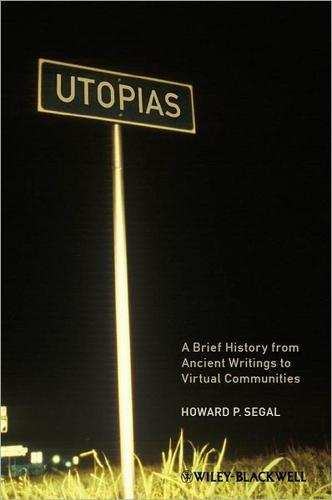
Utopias: A Brief History From Ancient Writings to Virtual Communities
by
Howard P. Segal
Published 20 May 2012
(Robert Noyce also invented the integrated circuit but worked separately from Kilby; however, because he was already dead, he was ineligible for the prize.) There is, however, a bit of historical reverence in Silicon Valley for the three garages in which three major high-tech companies began: Hewlett-Packard (William Hewlett and David Packard, starting in 1938), Apple (Steve Jobs and Steve Wozniak, starting in 1976), and Google (Sergey Brin and Larry Page, starting in 1998). None is open to the public, but all are popular brief stopping places for contemporary geek tours.54 More generally, there is a declining confidence in scientific and technological panaceas—not simply a declining faith in utopia.
…
There have since been improved versions, including a larger-size Kindle that now allows easier access to selected newspapers that were difficult to read in the earlier Kindle. Meanwhile, rivals to the Kindle have inevitably come about, above all the Apple iPad, released in 2010. This tablet computer offers not only books and periodicals but also games, movies, music, and the Internet. Its origins can be traced back to Apple’s first tablet computer, the Newton Message Pad of 1993 (discontinued in 1998), named, of course, after Isaac Newton. Like Apple’s extremely popular iPhone and iPod Touch, the iPad uses a multi-touch finger-sensitive touchscreen—a vast improvement over the pressure-triggered stylus used in previous tablet computers.
…
More recently, books and other printed materials have increasingly been revived in the very electronic form that was predicted to be their downfall. Consider podcasts, for example. In 2004 Ben Hammersley coined the term “podcast”—a mixture of “iPod” and “broadcast.” Apple Computer originated the brand of portable media player that first used podcasts, calling it the Apple iPod. 218 The Resurgence of Utopianism A podcast consists of digital media files that are transferred from the Internet to a computer, iPod, smart phone, or other media player. Podcasts of newspaper, magazine, and journal articles have now become routine.68 There is a growing audience of those willing and often eager to listen to podcasts and to read online versions of books, newspapers, magazines, and journals.
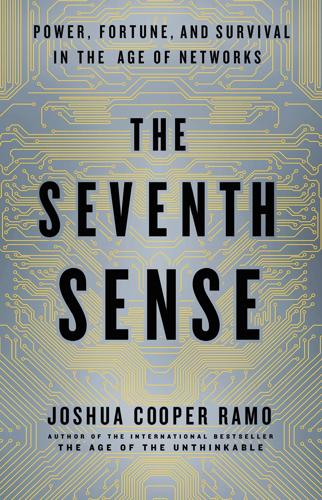
The Seventh Sense: Power, Fortune, and Survival in the Age of Networks
by
Joshua Cooper Ramo
Published 16 May 2016
At one point, a phreaker named John Draper figured out that the little plastic whistles stuffed as children’s toys inside boxes of sugary Cap’n Crunch cereal produced the 2,600-hertz tone nearly perfectly. The hack made him a legend, and he became known, inevitably, as Cap’n Crunch. An article about Draper in Esquire in 1971 had inspired two teenagers named Steve Jobs and Steve Wozniak to start their first company in order to build and sell little blue phreaking boxes. Woz later recalled nervously meeting the Cap’n one day in California. He was a strange, slightly smelly, and extremely intense nomadic engineer. “I do it for one reason and one reason only,” the Cap’n huffed to the writer of that Esquire article, who was a bit baffled as to why a grown man would find whistling into phones so appealing.
…
“You’re also making a social decision, and this may be the more important of the two.” You might ask: What drew tens of millions of people to watch as Steve Jobs, live, unveiled some new Apple device? Of course, partly it was the cool technology, the warm charisma of the man. But something else was at work, I think. What Jobs was unveiling atop those black stages over the years as we waited for him was nothing less than whole new worlds, connected landscapes that emerged entirely from ideas Apple was secretly developing. He wasn’t merely introducing a phone; he was changing how we were going to experience life. “Every once in a while, a revolutionary product comes along that changes everything,” Jobs began in his famous speech introducing the first iPhone, in 2007.
…
“Every once in a while, a revolutionary product comes along that changes everything,” Jobs began in his famous speech introducing the first iPhone, in 2007. “In 1984 we introduced the Macintosh. It didn’t just change Apple. It changed the whole computer industry. In 2001 we introduced the first iPod. It didn’t just change the way we all listen to music. It changed the entire music industry.” Apple devices were cracking open paths to whole new worlds in this sense. The company develops an app for podcasts; a new media form is born. It builds an architecture for video calling; our relations to each other deepen a bit. What Jobs was presenting were new and—until that very instant—unimagined universes of possibility that we would all explore.
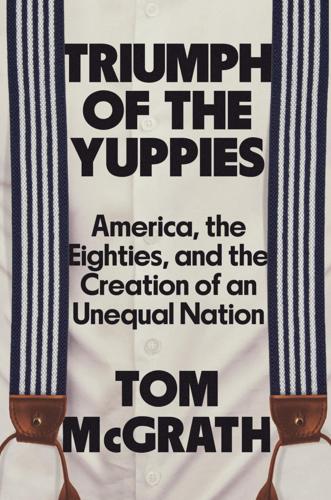
Triumph of the Yuppies: America, the Eighties, and the Creation of an Unequal Nation
by
Tom McGrath
Published 3 Jun 2024
In its first year it brought in more than $50 million in sales, and Kapor, age thirty-three, became a millionaire. Then there was Steve Jobs, who’d cofounded Apple Computer with Steve Wozniak in 1976. Jobs, too, had a ’60s sensibility, and what made him stand out in the tech world was his belief in what computers could achieve. Yes, they could crunch numbers and process data, but he saw them even more as a tool for unlocking human creativity. In early 1984, Apple aired an ad during the Super Bowl unveiling a new computer, the Macintosh, that Jobs believed would change everything. Within five months Apple had sold 70,000 units, and by the end of 1984 it would sell 250,000 units.
…
“Those were the years when the Weekly Reader and National Scholastic joined forces with the rest of the world to persuade us that our future incomes would be directly proportional to our levels of education.… They were the years when it was easier to believe in God, America and apple pie. God hadn’t been declared dead yet, America wasn’t dropping napalm on Vietnam, and apple pie wasn’t pumped full of BHA and BHT. “If you’ll forgive the cliché, times have changed. And nothing is harder on a young idealist than a few years in what we used to call the real world. I’m speaking from experience. After growing up in those fine, committed hippie days, I’ve joined that living cliché: the Young Professional.
…
The Baby Boom generation as a whole cannot afford to buy the homes that its parents are living in today, and that’s a fact. Entrepreneurs? I’m not against entrepreneurship. I love the idea. I love the people that invented Trivial Pursuit and all the new forms of entrepreneurship that are going on… Apple computer. But the concept of entrepreneurship does not address the needs of those who are less fortunate. You can’t say to a Black woman living in Harlem with ten kids and no education, ‘Go out and invent Apple computer.’ You can’t say it to a farmer whose family has been in business for a century and the government just pulled the rug out from under him. You can’t say it to an unemployed steelworker.
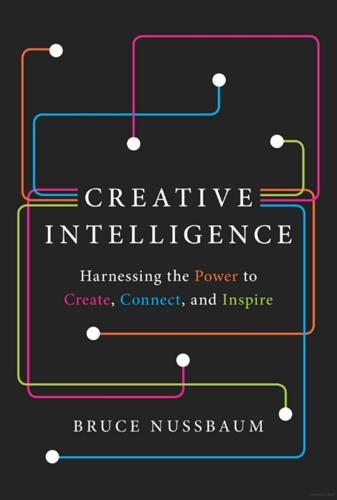
Creative Intelligence: Harnessing the Power to Create, Connect, and Inspire
by
Bruce Nussbaum
Published 5 Mar 2013
As a teenager, he hung out in the garage of his neighbor Larry Lang, an engineer who got Jobs into the Hewlett-Packard Explorers Club. When he needed parts for a frequency counter he was building for the club, he called HP’s CEO Bill Hewlett directly and spoke to him for twenty minutes, according to Walter Isaacson in his biography of Jobs. One could argue that the Apple cofounder’s early introduction to electronics, his friendships with other techies like Steve Wozniak, and his growing up in a hot high-tech culture were instrumental in his development as a tinkerer and designer of computers. Embodiment begins with knowing yourself—who you are, what cultures you belong to, and what you want to create in the world.
…
But the technology of our time—their improved features and lowered costs, their ability to make us all creators and not just passive users—can, in fact, connect people in ways that the films or photographs of seven decades ago could not. As with many of the Creative Intelligence competencies, the road leads back to Apple. Consumers call Apple products “cool” and “easy to use,” and more sophisticated business analysts applaud Apple’s “ecosystem” of integrated software and hardware. But none of those qualities alone explains why we feel the way we do about Apple products; it’s impossible to discuss Apple products without mentioning how they feel in the hand, look to the eye, and connect to our deep emotions. The story of how Apple began creating beautiful, easy-to-use products should be required reading for anyone interested in creating something that’s not just useful but meaningful.
…
Browning, Steven Russolillo, and Jessica E. Vascellaro, “Apple Now Biggest-Ever U.S. Company,” Wall Street Journal, August 20, 2012, accessed October 22, 2012, http://online.wsj.com/article/ SB10000872396390443855804577601773524745182.html; “Apple Becomes the Most Valuable Company Ever,” CBS Money Watch, August 20, 2012, accessed October 22, 2012, http://www.cbsnews.com/8301-505123_ 162-57496461/apple-becomes-most-valuable-company-ever/. In inflation-adjusted dollars, Microsoft was valued at about $850 billion in 1999, higher than Apple in August 2012. Many Wall Street analysts are predicting that Apple’s stock would rise to $800 and perhaps even $1,000 over the next year or two, which would give it a market capitalization higher than Microsoft even when inflation is taken into account. 263 There are clear lessons: Japan’s great moment of innovation in the 1970s and 80s came from a small group of post–World War II entrepreneurs, such as Sony’s Akita Morita, who were not connected with the country’s giant zaibatsus, or conglomerates.

Augmented: Life in the Smart Lane
by
Brett King
Published 5 May 2016
Contrary to popular belief, IBM wasn’t the first company to create a personal computer (PC). In the early 1970s, Steve Jobs and Steve Wozniak had been busy working on their own version of the personal computer. The result—the first Apple computer (retrospectively known as the Apple I)—actually preceded the IBM model6 by almost five years, and used a very different engineering approach. However, it wasn’t until Apple launched the Apple II that personal computing really became a “thing”. Figure 3.2: An original Apple I computer designed by Jobs and Wozniak and released in 19767 (Credit: Bonhams New York) Around the same time as Jobs and Wozniak’s development of the earliest form of PC, there was also a rapid downsizing of computers in the workplace.
…
Let’s dive deeper into this concept of adding years to our lives and life to our years, and building our brains while we are at it, before looking at how to activate the protection against linear decay, and upgrading ourselves. Figure 5.5: Apple’s HealthKit measures 67 different categories. (Credit: Apple) QS products started off as separate products and, by 2013, had reached over US$200 million a year in sales, primarily for devices that counted steps and calculated calories based on height, age and weight input by the user. Several apps have duplicated or emulated this functionality in iOS and Androids. Such an app functionality became part of the Apple iOS in 2015, in large part to increase the functionality and usefulness of the Apple Watch. Apple calls this particular app HealthKit. As you can see from the screen shot of Apple’s HealthKit app in figure 5.5, there are seven major categories (body measurements, fitness, me, nutrition, results, sleep and vitals) and 67 separate categories under All, ranging from active calories through to zinc levels.
…
To illustrate, Kodak at its peak employed 140,000 people, whereas Instagram, arguably the Millennials’ version of Kodak (acquired by Facebook for approximately US$715 million in stock in 2012), only had 13 employees at the time of the acquisition. So it could be postulated that technology is, on a net basis, bad for society when it comes to employment. Apple creates many jobs in its stores, and Foxconn factories reportedly employ 1.23 million people, the majority of whom are dedicated to Apple product manufacturing and assembly, but in terms of the sheer size of the Apple Inc. economy, the company employs relatively few people. Given the efficiency gains that technology brings, does that mean that as technology displaces historical businesses it inevitably destroys jobs?

B Is for Bauhaus, Y Is for YouTube: Designing the Modern World From a to Z
by
Deyan Sudjic
Published 17 Feb 2015
There are plenty of stalls in Shanghai or Shenzhen where you can find alleged Rolex wristwatches complete with impressive-looking authenticating holograms that crumble the first time you try the winding mechanism. There are what look something like Apple iPods but which are not produced in the Shenzhen factory that assembles those sold by the company Steve Jobs and Steve Wozniak started in 1976. More worrying for Apple was the way in which Samsung was able to replicate not just the iPhone but also the iPad. Apple claimed that they are copyright infringements, rather than fakes. For a designer, authenticity has taken on a paradoxical aspect. An authentic design might be understood as a design which is more than merely not a fake.
…
Fifteen years later, Kodak was bankrupt. The company had seen digital photography coming. It built Apple’s QuickTake, launched in 1994, which was one of the first digital cameras aimed at a general audience, even if the price when it first went on sale was $750. But when images are stored as random collections of pixels, rather than on silver and paper, the technical expertise in chemistry and the distribution system it had built up over decades were no longer relevant. There was very little that Kodak could offer Apple. Once digital photography took firm hold, Kodak’s income collapsed, threatening the company’s survival.
…
It is, for better or worse, the peak of the industrial culture that gave birth to the practice of modern design. Yet its power is waning. The Ford Motor Company, founded by Henry Ford, who was no more comfortable a personality than Steve Jobs, used to be the model of the modern corporation, with its company towns, its own orchestra, its own company uniform. Apple and Google have supplanted Ford and IBM as the model corporations that others seek to emulate. And while there are now companies around the globe who have managed to make cars more profitably, and more effectively, than Ford, they are essentially in the business of refining a mature product that may have a limited future.
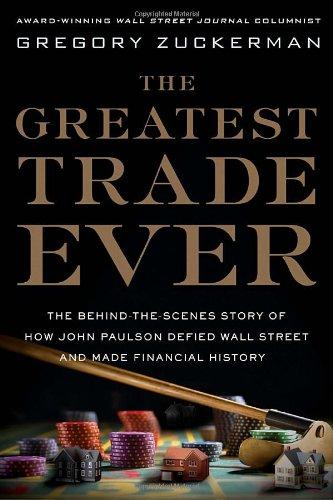
The greatest trade ever: the behind-the-scenes story of how John Paulson defied Wall Street and made financial history
by
Gregory Zuckerman
Published 3 Nov 2009
He named his firm Scion Capital, inspired by the book The Scions of Shannara, a Terry Brooks fantasy novel. Burry would be a scion of investing greats such as Buffett and Benjamin Graham, although he would chart his own path. Back in California, he rented a small office in a suburban office park, blocks from the headquarters of Apple Computer. The office had been Apple’'s cofounder Steve Wozniak’'s, which Burry took as an auspicious sign. Burry wasn’'t very good at courting clients, but he figured if his results were strong enough, investors would line up. Early on in his fund, after top executives of Avanti Software were charged with stealing secrets from a rival and the stock plunged to $2 per share, Burry determined that customers still were relying on Avanti’'s products.
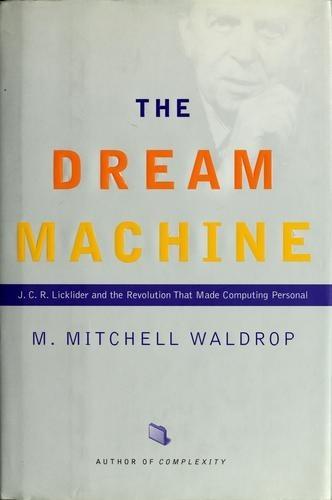
The Dream Machine: J.C.R. Licklider and the Revolution That Made Computing Personal
by
M. Mitchell Waldrop
Published 14 Apr 2001
And partly it was at- tributable to his memory of Steve Wozniak's former employer, Hewlett-Packard, which had once rebuffed Woz's proposal for a microcomputer. But in any case, Jobs changed his mind after repeated urging by Apple engineer Jef Raskin, who had joined the company to help design the Apple II. Raskin had visited PARC, as it happened, and his friends there had shown him its wonders. So on April 2, 1979,Jobs and his team met with the XDC people and struck a deal that could make sense only in the go-go world of Silicon Valley: Xerox would be allowed to invest $1.05 million in Apple's private stock sale, and in re- turn it would allow Apple full access to PARC's technology.
…
Instead of just providing a kit, a bag of parts, they would have to offer something much more like an appliance: a finished system that would work as soon as you plugged it in. Keyboard, moni- tor, disk drives, operating system, software-everything had to be right there in the box, or else be very easy to add. On the hardware side, this challenge was taken up most famously by the Apple Computer Company, founded in 1976 by Homebrew Computer Club members Steve Wozniak and Steve Jobs, longtime buddies from the Silicon Val- ley town of Cupertino. After some encouraging success with their first com- puter, which they marketed through local hobby shops-it was actually just a single circuit board using the new, 8-bit 6502 microprocessor from MOS Tech- nology, plus 4 kilobytes of RAM-Jobs and Wozniak were joined by the thirty- four-year-old A.
…
Markkula, who had retired from that company two years earlier after earning 434 THE DREAM MACHINE more than a million dollars in stock options, bought a one-third partnership in Apple for $91,000 and began working his contacts to bring in venture capital and management expertise. The result was the Apple II, a much-upgraded, 6502- based micro that was introduced in April 1977 at the first West Coast Computer Faire in San Francisco. Apple's new machine was a beautiful thing to behold, with a built-in keyboard and a professionally designed beige-colored case. It was comparatively cheap, in that a configuration with 16 kilobytes of RAM and no monitor cost just $1,195.
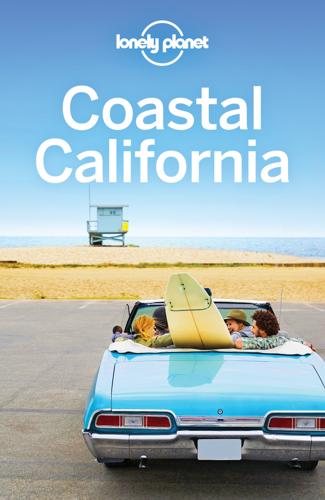
Coastal California Travel Guide
by
Lonely Planet
SAN JOSE FOR CHILDREN Children’s Discovery MuseumMUSEUM ( GOOGLE MAP ; %408-298-5437; www.cdm.org; 180 Woz Way; $13, child under 1yr free; h10am-5pm Tue-Sat, noon-5pm Sun; c) Downtown, this science and creativity museum has hands-on displays incorporating art, technology and the environment, with plenty of toys and cool play-and-learn areas for tots to school-aged children. The museum is on Woz Way, named after Steve Wozniak, cofounder of Apple. California's Great AmericaAMUSEMENT PARK ( GOOGLE MAP ; %408-988-1776; www.cagreatamerica.com; 4701 Great America Pkwy, Santa Clara; adult/child under 4ft $69/48; hApr-Oct, hours vary; c) If you can handle the shameless product placements, kids love the roller coasters and other thrill rides.
…
Consumers didn’t know quite what to do with computers, but in his 1969 Whole Earth Catalog, author (and former LSD tester for the CIA) Stewart Brand explained that the technology governments used to run countries could empower ordinary people. Hoping to bring computer power to the people, 21-year-old Steve Jobs and Steve Wozniak introduced the Apple II at the 1977 West Coast Computer Faire. Still, the question remained: what would ordinary people do with all that computing power? By the mid-1990s an entire dot-com industry boomed in Silicon Valley with online start-ups, and suddenly people were getting everything – their mail, news, politics, pet food and, yes, sex – online.
…
Winemaker Courtney Foley specializes in Bordeaux varietals and blends, along with Zinfandels and Pinots. An hour-long tour takes guests through the crush pad, barrel room and vineyard and finishes with a tasting. Bottles are $30 to $80. Sebastopol Grapes have replaced apples as the new cash crop, but Sebastopol’s farm-town identity remains rooted in the apple – evidenced by the much-heralded summertime Gravenstein Apple Fair. The town center feels suburban because of traffic, but a hippie tinge gives it color. This is the refreshingly laid-back side of Wine Country and makes a good-value base for exploring the area. 1Sights Around Sebastopol, look for family-friendly farms, gardens, animal sanctuaries and pick-your-own orchards.

Is the Internet Changing the Way You Think?: The Net's Impact on Our Minds and Future
by
John Brockman
Published 18 Jan 2011
“Pearls before swine” overestimates the average chat room conversation, but it is the pearls of hardware and software that inspire me: the Internet itself and the World Wide Web, succinctly defined by Wikipedia as “a system of interlinked hypertext documents accessed via the Internet.” The Web is a work of genius, one of the highest achievements of the human species, whose most remarkable quality is that it was constructed not by one individual genius such as Tim Berners-Lee or Steve Wozniak or Alan Kay, nor by a top-down company such as Sony or IBM, but by an anarchistic confederation of largely anonymous units located (irrelevantly) all over the world. It is Project MAC writ large. Suprahumanly large. Moreover, there is not one massive central computer with lots of satellites, as in Project MAC, but a distributed network of computers of different sizes, speeds, and manufacturers—a network that nobody, literally nobody, ever designed or put together but which grew, haphazardly, organically, in a way that is not just biological but specifically ecological.
…
Net Gain Richard Dawkins Evolutionary biologist; emeritus Professor of the Public Understanding of Science, Oxford; author, The Greatest Show on Earth If, forty years ago, the Edge question had been “What do you anticipate will most radically change the way you think during the next forty years?” my mind would have flown instantly to a then-recent article in Scientific American (September 1966) about Project MAC. Nothing to do with the Apple Mac, which it long predated, Project MAC was an MIT-based cooperative enterprise in pioneering computer science. It included the circle of AI innovators surrounding Marvin Minsky, but, oddly, that was not the part that captured my imagination. What really excited me, as a user of the large mainframe computers that were all you could get in those days, was something that nowadays would seem utterly commonplace: the then- astonishing fact that up to thirty people, from all around the MIT campus and even from their homes, could simultaneously log on to the same computer, simultaneously communicate with it and with each other.
…
So, even though I spend lots of time on the Internet (fallen, pancake person that I am), I can’t help being reminded of the Greek philosopher who attributed his long life to avoiding dinner parties. If only I could avoid the equally distracting Internet, which, in its promise of connectedness and expanded knowledge, is really a substitute social phenomenon. The “entire world” the Internet seems to offer harmonizes strangely with the apple from the Tree of Knowledge offered to Eve—ah, we don’t believe in those old myths? (I guess one company guru did.) Well, the only hope I see hovering in the Neverland (now real) where the Internet does its work of feeding smart people amphetamines and “dumb” people tranquilizers is that the expanding puddle of boiling, bubbling hot milk will eventually coagulate and a new, unforeseen pattern will emerge out of all that activity that thought it was aiming at a particular goal but (as is usual with life) was really headed someplace else, which nobody knew about.
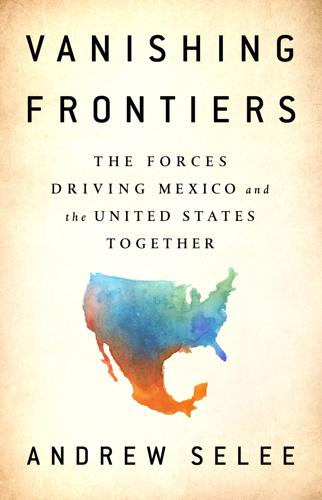
Vanishing Frontiers: The Forces Driving Mexico and the United States Together
by
Andrew Selee
Published 4 Jun 2018
The first citywide event was celebrated in 2010, right as the gang violence was subsiding; it was followed by similar massive events in 2012 and 2014. Galicot coaxed top talent from around the world to participate, including former US vice president Al Gore and Nobel Prize–winning chemist Mario Molina to talk about the environment; Twitter cofounder Biz Stone, Apple cofounder Steve Wozniak, and Mexican billionaire Carlos Slim to discuss innovation; TV and radio host Larry King and political scientist Francis Fukuyama to address politics; and, of course, Javier Plascencia to speak about the city’s culinary scene. And the talks were only part of the multiday events: there were food stands showcasing the local Baja Med cuisine, as well as musicians, dancers, and stalls displaying the many goods produced by companies in the city.
…
Chinese, Mexican, and Italian food make up most of the “ethnic cuisines” that Americans consume regularly, according to the National Restaurant Association, with half of Americans saying they consume Mexican food frequently and another third at least occasionally. And most American families have, at some point, probably made a Mexican or Italian meal at home too, regardless of their own background. Tacos have become almost as American as apple pie—or pizza—with #TacoTuesday a common hashtag. And Mexican food has become so much a part of America’s food habits that even some newer ethnic cuisines try fusing with it. For instance, Korean barbecue tacos have showed up at food trucks around the country. “That tells you about Americanized food today,” says Pilcher, when “American Korean food is in a taco, not a bun.”

The Equality Machine: Harnessing Digital Technology for a Brighter, More Inclusive Future
by
Orly Lobel
Published 17 Oct 2022
Available data might include an applicant’s list of contacts, GPS information, SMS logs, app download history, phone model, available storage space, and other data scraped from mobile phones. In August of 2019, Apple introduced its first credit card with Goldman Sachs and faced immediate regulatory discipline for its “sexist” credit limits. High-profile tech leaders, including Apple co-founder Steve Wozniak and tech entrepreneur David Heinemeier Hansson, took to social media to voice their complaints, noting that female spouses were approved for a minuscule percentage of the credit limits that their male spouses received, despite having identical assets and shared bank accounts.
…
It also uses machine learning to make predictions about the presence of child abuse materials in digital files. In 2021, Apple announced that it will begin using new software that aims to stop the spread of child sexual abuse material (CSAM). This new technology would enable Apple to detect known CSAM images stored in iCloud Photos and report the instances to the National Center for Missing and Exploited Children. Apple didn’t anticipate the public outrage of consumers and the media, who claimed that the scanning and monitoring of one’s photo library is an invasion of privacy. The public outrage led Apple to place the initiative on hold. Nonetheless, this kind of technology represents a powerful tool to tackle some of society’s worst ills.
…
SRI International—the company that developed Siri—originally conceived Siri as a gender-neutral voice, but as Apple commercialized the technology, it became the female-voiced Siri we so intimately know today. Siri Inc. co-founder Norman Winarsky says, “What Apple did is absolutely brilliant. They took Siri and gave it more of a personality. It’s the first real artificial intelligence working in millions of people’s hands.”5 Personality in the hands of Apple meant making Siri sound and feel like a woman. While all the leading devices on the market were launched with female voices, many have now introduced non-female voice options. Still, defaults are sticky, and when Apple and Amazon advertise Siri and Alexa, the voices are consistently female.

Super Thinking: The Big Book of Mental Models
by
Gabriel Weinberg
and
Lauren McCann
Published 17 Jun 2019
Technologies that people use every day started their growth among small groups of innovators many years before they became commonplace. For example, long before computers were everywhere, enthusiasts gathered into groups such as the Homebrew Computer Club in Silicon Valley, which included Steve Wozniak (cofounder of Apple) and Jerry Lawson (inventor of the video game cartridge) among its members. Academic advances and groundbreaking ideas in every area follow a similar pattern, starting with innovators and early adopters before moving into the mainstream (see the technology adoption life cycle in Chapter 4).
…
YouTube became a mainstream possibility only once broadband access was prevalent. In both cases there were earlier attempts to accomplish similar things that failed because the timing wasn’t right. The rest of the world wasn’t yet sufficiently equipped with the necessary technology. Apple famously introduced the Apple Newton tablet device in 1993 and discontinued it in 1998 after lackluster sales. More than a decade later, Apple introduced a new tablet device—the iPad—which had the fastest initial adoption rate of any mainstream electronic device up to that point, even ahead of the iPhone and the DVD player. What changed? For one thing, the internet: you could do so much more with the iPad relative to the Newton, given the previous twenty years of internet advances.
…
A long-term commitment to an organizational strategy creates a lot of inertia toward that strategy. This inertia can lead to suboptimal decisions, referred to as a strategy tax. For example, most people would like to reduce their online footprint and be tracked less by advertisers. As a result, web browsers have incorporated more privacy features. For example, in 2017, Apple’s Safari browser introduced a feature called Intelligent Tracking Prevention, which attempts to prevent ads from following you around the internet. However, we expect that Google will not add a feature like this to its Chrome browser, because Google itself is the company tracking you on most sites, since its long-term strategy is to dominate online advertising.
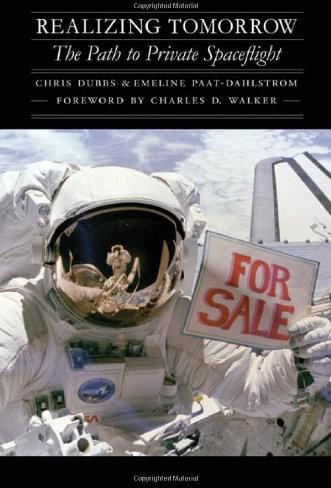
Realizing Tomorrow: The Path to Private Spaceflight
by
Chris Dubbs
,
Emeline Paat-dahlstrom
and
Charles D. Walker
Published 1 Jun 2011
An English teenager named Trevor kept sending letters with a few pounds of his hardearned money in each. People wanted to believe in PPE; they wanted to be part of it in whatever small way they could. A furniture store in San Francisco donated beds; a sporting goods store thought a trampoline would help in astronaut training. An up-and-coming Apple Computer was just three miles down the road. Apple founders Steve Jobs and Steve Wozniak visited PPE operations and were so impressed they sent a truckload of computers the next day. A number of NASAS astronauts took a keen interest in the project. Alan Shepard, Wally Schirra, and Deke Slayton would write or call, wondering when PPE would launch.
…
The question of how well she was able to mesh with the astronauts on her crew was illustrated during an earlier portrait session in Houston. Her crewmates told her to wait alone in the adjoining room. Although puzzled, she complied. They soon joined her, each wearing a mortarboard and holding a plastic lunchbox and an apple. In that same prelaunch interview, McAuliffe mentioned how delighted she was that a teacher had been chosen as the first spaceflight participant. She encouraged others to follow in her footsteps. "I'm hoping that everybody out there who decides to go for it-the journalist in space, the poet in space-whatever the other categories, that you push yourself to get the application in."

User Friendly: How the Hidden Rules of Design Are Changing the Way We Live, Work & Play
by
Cliff Kuang
and
Robert Fabricant
Published 7 Nov 2019
Still another problem is that when digital products have greater and greater reach, it means fewer and fewer people are making the decisions. That’s all the more surprising because the power and promise of the personal computer wasn’t born from whole cloth. It was born of the fact that a bunch of hackers like Steve Wozniak could break machines apart and assemble their own, better machines. But as our machines have become more elegant, our ability to alter them hasn’t nearly kept pace. As easy as it is to change the preferences on your smartphone, it’s all but impossible to make a different smartphone. The most optimistic thinkers in Silicon Valley believe that the answer is for all of us to be able to code.
…
But Crowder is one of the first people in the annals of history to use the term “user friendly” to refer to a computer. Every week or so, Crowder fends off the real estate agents and their offers of a multimillion-dollar payday. Apple fuels it all—Apple, the company that made “user friendly” into an idea that we live with every day. Crowder looks on at the new Apple Park during his daily walks past the campus, the crown jewel in an empire built upon trillions of dollars in iPods and iMacs and iPads and Apple Watches and iPhones—devices that, despite being some of the most advanced computers ever made, can still be operated by toddlers. Their power dwarfs that of the “supercomputers” Crowder once worked with at IBM.
…
While working on the Lisa, Atkinson had been paying attention to a stream of academic papers flowing from Xerox PARC about a prototype operating system called Smalltalk. So had Jef Raskin, an Apple employee who’d heard rumors about what wasn’t in the papers. The timing was fateful. By the winter of 1980, Jobs had brought Apple to the cusp of a hotly anticipated public offering of Apple’s stock. Investors across the Valley were hounding him, afraid of missing out. Jobs toyed with them all—including Xerox, which offered up $1 million for a mere 0.1 percent of Apple’s shares, implying that the young company was already worth a gobsmacking $1 billion. It was Raskin who convinced Jobs they had to have a peek at Xerox’s Smalltalk.

Machines of Loving Grace: The Quest for Common Ground Between Humans and Robots
by
John Markoff
Published 24 Aug 2015
Smart young computer hackers like Steve “Slug” Russell and Whitfield Diffie followed McCarthy west, and during the next decade and a half a startling array of hardware engineers and software designers would flow through the laboratory, which maintained its countercultural vibe even as McCarthy became politically more conservative. Both Steve Jobs and Steve Wozniak would hold on to sentimental memories of their visits as teenagers to the Stanford laboratory in the hills. SAIL would become a prism through which a stunning group of young technologists as well as full-blown industries would emerge. Early work in machine vision and robotics began at SAIL, and the laboratory was indisputably the birthplace of speech recognition.
…
Ultimately the investors were convinced; Jobs’s offer was lucrative enough and offered much lower risk. Soon after Apple acquired Siri in April of 2010, the Siri team moved into the very heart of the office space for Apple’s design group, on half of the top floor of Infinite Loop 2. Although Apple could have licensed Nuance to convert speech directly to text—which Google later did—Jobs decided that Apple would undertake the more ambitious task of placing an intelligent assistant software avatar on the iPhone. Siri helped solve another major problem that Apple had with its new iPhone and iPad. Glass screens and multitouch control could replace a keyboard and mouse for navigation through screens, but they did not work well for data entry.
…
In the beginning, however, the project was met with resistance within the company. Apple employees would refer to the technology as “voice control,” and the Siri team had to patiently explain that their project had a different focus. The Siri project didn’t feed into the “eye candy” focus at Apple—the detailed attention of software and hardware design that literally defined Apple as a company—but was instead about providing customers with reliable and invisible software that worked well. But many engineers in the software development organization at Apple thought that if Steve—and later on one of his top lieutenants, Scott Forstall—didn’t say “make it happen,” they didn’t need to work on that project.
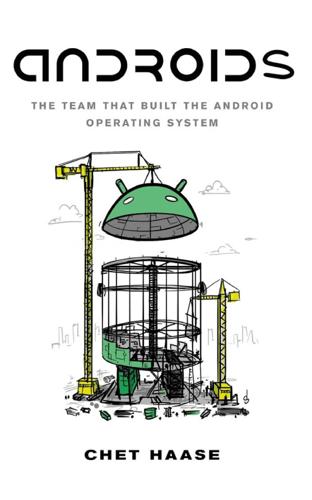
Androids: The Team That Built the Android Operating System
by
Chet Haase
Published 12 Aug 2021
This device was not a computer as we know it today, but used plastic and metal parts to perform simple boolean and math operations, like counting from zero to seven.251 Cary was so fascinated by this machine that he wore it out and asked for the same present the following Christmas. He upgraded to a used Apple II in the late 70s while he was at college, spending so much time learning programming in his dorm room by taking apart Steve Wozniak’s BASIC implementation on the Apple II that he flunked out of college. He eventually came back and finished his degree, but in the meantime had started working in sales at a hobbyist computer store. When customers had questions about their Apple computers, Cary would call up the regional Apple tech support office for answers, but realized that the staff had no idea how things actually worked.
…
Steve transitioned into management while he was at Microsoft, which led to his future role on Android. While he was at Microsoft, Steve got an interesting offer from Tony Fadell340 at Apple to run a systems software group for the iPod, at the time that that team was starting to think about the iPhone. “It was a good offer. But I had a lot of Microsoft stock, and they gave me an offer with a little bit of Apple stock. At the time, I liked what I was doing at Microsoft. The Apple offer looked interesting, but Apple [stock] would have had to go up a hundred times for it to be even close. Of course, sure enough, they did — more than a hundred times.
…
Gosh, just imagine what he could have accomplished if only he’d gotten a college degree. 339 Steve’s hiring manager at Apple was Cary Clark. Years after hiring Steve into Apple, he worked for Steve at Microsoft. Later, he co-founded Skia with Mike Reed (another Apple colleague), which was acquired by Android, and Cary again found himself working for Steve. Be nice to your colleagues — you will work with them again someday. And maybe even several somedays. 340 Tony Fadell ran the iPod group at Apple for many years and later co-founded Nest. 341 “you there?” 342 Mobile World Congress is a huge annual trade show for the mobile industry. 343 Years later, Steve ended up back at Google, running the software division of Motorola.

Digital Disconnect: How Capitalism Is Turning the Internet Against Democracy
by
Robert W. McChesney
Published 5 Mar 2013
And if you include the costs of the wireless subsidies, tax breaks (e.g., no sales taxes on online purchases), etc., it’s well into the hundreds of billions range.”21 Meinrath does not even include the immense amount of volunteer labor that provided a “continuous stream of free software to improve its functionality.”22 For context, even a conservative take on Meinrath’s estimate puts the federal investment in the Internet at least ten times greater than the cost of the Manhattan Project, allowing for inflation.23 The issue is not only public subsidies with no return on investments. It’s also about a public ethos. The early Internet was not only noncommercial, it was anticommercial. Computers were regarded by many of the 1960s and ’70s generation as harbingers of egalitarianism and cooperation, not competition and profits. Apple’s Steve Wozniak recalls that everyone at his 1970s computer club “envisioned computers as a benefit to humanity—a tool that would lead to social justice.”24 Salvador Allende’s democratic socialist government in Chile in the early 1970s devoted considerable resources to computing, in the belief that it could provide efficient economics without the injustice and irrationality of capitalism.25 By the 1970s and 1980s, the computer professionals and students who comprised the Internet community “deliberately cultivated an open, non-hierarchical culture that imposed few restrictions on how the network could be used.”26 Rebecca MacKinnon calls this the digital commons, which would provide the foundation for all subsequent commercial applications.27 The hacker culture that emerged in that period was typified by its commitment to information being free and available, hostility to centralized authority and secrecy, and the joy of learning and knowledge.28 Nothing enraged the Internet community more than advertising and commercialism.
…
For tangible products, the type that fills economics textbooks, one person’s use of a product or service precludes another person from using the same product or service. Two people cannot eat the same hamburger or simultaneously drive the same automobile. More of the product or service needs to be produced to satisfy additional demand. Not so with information. “If you have an apple and I have an apple and we exchange apples, then you and I will still each have one apple,” George Bernard Shaw allegedly once said, “but if you have an idea and I have an idea and we exchange these ideas, then each of us will have two ideas.”49 Stephen King doesn’t need to write an individual copy of his novels for every single reader. Likewise, whether two hundred or 200 million people read one of his books would not detract from any one reader’s experience of it.
…
Back in 2006, Jonathan Zittrain predicted that in the coming decade the personal computer would be replaced by a new generation of (proprietary) “information appliances.” Tim Wu says he was “exactly right.”28 Apple was committed to this approach from the very beginning, and “Jobs’s vision of a closed computer did not waver.”29 Wu notes that Apple’s various devices were “Hollywood-friendly,” and designed to work with a single ISP.30 Technology writer Steven Johnson praised Apple for providing one of “the most carefully policed software platforms in history.” The genius of the iPhone, for example, is that it is a “tethered” device, for which all the control is with Apple. As John Naughton put it, the Internet-connected mobile phone “is functional, enjoyable and perhaps even beautiful—but it is largely under someone else’s control.”31 By 2008 Bill Gates conceded that Apple’s closed system had proven to be the best approach.32 The investment community agreed; by 2012 Apple was the most valuable company in the United States, worth over $550 billion.

The Optimist: Sam Altman, OpenAI, and the Race to Invent the Future
by
Keach Hagey
Published 19 May 2025
University professors scrambled to create policies on AI usage and new ways to give final exams. Investors demanded to know how AI was going to lower costs for the companies they had invested in—would it cut 20 percent? 30? How many people would be fired? Could it start today? By the end of March, Elon Musk, Yoshua Bengio, and Steve Wozniak were among more than one thousand signatories to an open letter by the Future of Life Institute calling for a six-month pause on developing AI models more powerful than GPT-4.29 The government took notice. Altman was summoned to the White House, along with Nadella, Pichai, Amodei, and Clark, for a two-hour meeting on May 4, 2023, with Vice President Kamala Harris and Commerce Secretary Gina Raimondo, among others, about the risks of AI.
…
The meetings in November 2007 won Loopt no special access to the iPhone SDK when it was finally made available in March 2008. But Apple did offer Loopt something that turned out to be very valuable: they would test Loopt’s iPhone app internally, give feedback on it and offer them a chance to be part of the keynote speech of Apple’s Worldwide Developers Conference the following June. The deal came with some time pressure, and no guarantee of any kind of prominent placement on the device. But after some discussion, Altman and McAdoo agreed it was worth investing in building the software to elicit Apple’s feedback. “I think we had one hundred Apple employees at one point running around using the [Loopt] app on an iPhone,” McAdoo said.
…
“We were enamored with the application,” Forstall recalled. To get up on the coveted stage of Apple’s developer conference, however, Altman had to pitch Jobs himself. The Apple developer relationships team helped Altman and Howard come up with a script for their presentation and drilled them on it. Eventually they brought them to a building on Apple’s Cupertino campus. Altman and Howard waited in a lobby with the Bösendorfer grand piano that Jobs had bought to inspire the original Macintosh team—a symbol of Apple’s emphasis on beauty—and then were shuttled into an auditorium. In the center of the seats sat Jobs, surrounded by a few assistants, dressed not in a black turtleneck, as Altman and Howard expected, but in shorts and a T-shirt.

Who Owns the Future?
by
Jaron Lanier
Published 6 May 2013
There are legendary professors and we scramble to recruit their graduating students. But it’s also considered the height of hipness to eschew a traditional degree and unequivocally prove yourself through other means. The list of top company runners who dropped out of college is commanding: Bill Gates, Steve Jobs, Steve Wozniak, and Mark Zuckerberg, for a start. Peter Thiel, of Facebook and PayPal fame, started a fund to pay top students to drop out of school, since the task of building high-tech startups should not be delayed. Mea culpa. I never earned a real degree (though I have received honorary ones). In my case poverty played a role, as it did for many others.
…
After we learn how to survive global climate change, the earth will not be the same place it was before. It will be more artificial, more managed. That is not anything new. It is nothing more than another stage in the adventure that started when Eve bit the apple, which we can also think of as Newton’s apple. (Not to mention Turing’s apple.) But no one wants to hear that. It is hard to be comfortable accepting the degree of responsibility our species will have to assume in order to survive into the future. The game was entered into long ago and we have no choice but to play. THE FIRST HIGH-TECH WRITER It can be a little deflating to realize how much of the present-day conversation about economic systems, technology, and personhood was already well worn in the century before last.
…
Google is perhaps a confusing example, since it is part of the large phylum of Siren Servers in which the users are product, and the true customers, the so-called advertisers, might not always be apparent. (Varieties of Siren Servers will be listed later on.) Apple provides a clearer example. People use Apple products in part because there are so many apps in its store. Developers are motivated to create lots of apps because there are a lot of people using the Apple store. That’s a classical rewarding network effect. For Every Carrot a Stick The most successful Siren Servers also benefit from punishing network effects. These are centered on a fear, risk, or cost that makes “captured” populations think twice if they want to stop engaging with a Siren Server.

The Innovation Illusion: How So Little Is Created by So Many Working So Hard
by
Fredrik Erixon
and
Bjorn Weigel
Published 3 Oct 2016
Superior at answering problems they may be, but a far more challenging prospect for humans is that robots will also be more creative and innovative, perhaps even better lovers.11 And there is no point fighting it: resistance is futile. Inventor Clive Sinclair argues that “once you start to make machines that are rivalling and surpassing humans with intelligence, it’s going to be very difficult for us to survive.” For Sinclair, AI dominance “is just an inevitability.” Steve Wozniak, one of Apple’s founders, is equally gloomy, suggesting that humans “will be the family pets,” or possibly the “ants that get stepped on” in the New Machine Age.12 Today, Americans fear robots more than death.13 It is not surprising that people are both fascinated and frightened. For many of us, this is not just a weird sci-fi future, but – just like life in Thomas Hobbes’ state of nature – one that appears “solitary, poor, nasty, brutish, and short.”
…
But if you actually take a look at the 1.3 billion phones that get sold, I’d prefer to have our software in 60% or 70% or 80% of them, than I would to have 2% or 3%, which is what Apple might get.9 Six years after Ballmer’s prediction, only 3 percent of new mobile phones used Microsoft’s operating system while Apple’s iOS had close to 50 percent of the market. And he is not the only executive to have made spurious claims about their products. Around the same time as Ballmer’s brash dismissal of Apple, Research in Motion (RiM), the parent company of BlackBerry, ridiculed the iPhone as a marginal event in the market for cellular phones. That arrogance seemed daring, even at that time.
…
Defensive actions usually have a good payoff, especially in consumer markets where the customer “experience” or the “identity” of a product is central. Apple’s iPhone and its strong market position is a good example. While the first iPhone was truly innovative, later versions have failed to give customers much more value than previous models. However, that has not restrained customers from embracing the iPhone. A study shows that almost 60 percent of iPhone owners admit to “blind loyalty” to the product.37 That sort of loyalty is worth tons of gold because Apple’s customers do not switch brands when they purchase a new phone, even when they think that the iPhone is not a particularly good phone. Only 28 percent of Apple’s loyal customers think of it as the best phone on the market.
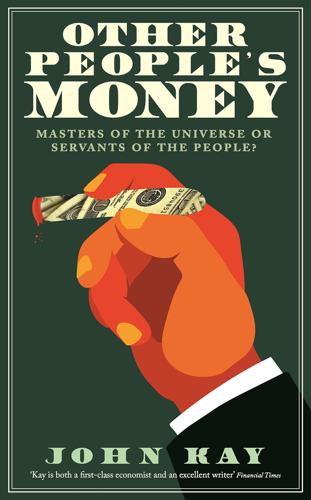
Other People's Money: Masters of the Universe or Servants of the People?
by
John Kay
Published 2 Sep 2015
Forty members of Apple staff became (paper) millionaires that day, and Steve Jobs’s wealth was estimated at over $200 million. Mike Mark-kula, who had invested $80,000 to enable Jobs and his partner Steve Wozniak to start making computers, was similarly enriched. Stock markets are not a way of putting money into companies, but a means of taking it out. The opportunity to realise a return on investment is essential to an early-stage investor such as Markkula. The ability to attach value to their shareholdings provides an incentive to Jobs and his colleagues and successors. Once a business becomes established, long-term institutional investors will pay for a share in the profit stream generated. This opportunity enables angel investors such as Markkula, and entrepreneurs like Jobs, to monetise their efforts.
…
Apple’s future customers do not, however, report any matching liability, and perhaps they should not, since they will buy the company’s products only if they are delighted to do so. The difference between the value of Apple as a company and the value of its physical assets might be quantified as an ‘intangible asset’, the value of the ‘Apple brand’. But this reasoning is essentially circular. The ‘Apple brand’ is no more, or less, than the company, its products and its operations. The ‘brand value’ is simply a number calculated to make the stock market value of the company and the book value of its assets the same.2 To attach value to Apple stock far in excess of Graham’s book value is to recognise that a modern economy rests on design and ideas rather than on physical activity.
…
The flagship UK store on London’s Regent Street is jointly owned by the Queen and the Norwegian sovereign wealth fund. Operating assets therefore represent only around 3 per cent of the estimated value of Apple’s business. Apple shares have been listed on NASDAQ since 1980, when the corporation raised $100 million from investors. Even then, the purpose of the issue was not to obtain money to grow the business. As with most flotations of technology companies, the reason for bringing the company to market was to give early investors and employees of the business an opportunity to realise value. Forty members of Apple staff became (paper) millionaires that day, and Steve Jobs’s wealth was estimated at over $200 million.
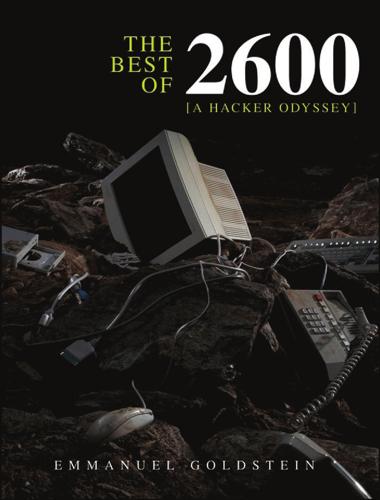
The Best of 2600: A Hacker Odyssey
by
Emmanuel Goldstein
Published 28 Jul 2008
I am a modern hacker, but I’ve been interested in computers since I was a child in the early 1970s when “hack” meant “create” and not the current media corruption, which essentially translates to “destroy.” 94192c15.qxd 6/4/08 3:45 AM Page 619 Still More Hacker Stories This was a time when there were no visible computers and the government still decided who had ARPANET access. Around then, the first ads started appearing for Steve Jobs’ and Steve Wozniak’s Apple II—a useful configuration cost the same as taking a family to Europe (or the United States if you’re European). A real physical computer like the ones I saw in the magazines that taught me to program were simply out of the question. My only computer was imaginary. It existed only as a simulation in my head and in my notebook—the old fashioned paper kind.
…
If I had, I don’t think I would have emerged a survivor. Quite honestly, I probably wouldn’t be here today. I don’t think this mark on my record, this felony, reflects with much accuracy what kind of person I am, or what kind of employee I am. Many youths do stupid things that aren’t necessarily injurious to anyone. Before Steve Wozniak and Steve Jobs co-founded Apple Computer, they “cheated” the phone company with a device called a “blue box” while in college at Berkeley, CA. Didn’t they turn into quasi-responsible multimillionaires? 94192c15.qxd 6/4/08 3:45 AM Page 633 Still More Hacker Stories “They didn’t get caught,” a landlord said to me, whose rental operation routinely turned away convicted felons per police sponsored programs.
…
It would be nice if there was substantially less of this to report for our next issue. What is the EFF? (Summer, 1990) One of the results of our public outcry over the hacker raids this spring has been the formation of the Electronic Frontier Foundation (EFF). Founded by computer industry giants Mitch Kapor and Steve Wozniak along with writer John Barlow, the EFF 501 94192c13.qxd 6/3/08 3:34 PM Page 502 502 Chapter 13 sought to put an end to raids on publishers, bulletin board operators, and all of the others that have been caught up in recent events. The EFF founders, prior to the organization’s actual birth this summer, had said they would provide financial support to those affected by unjust Secret Service raids.
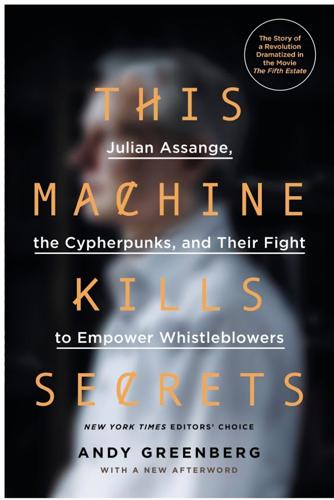
This Machine Kills Secrets: Julian Assange, the Cypherpunks, and Their Fight to Empower Whistleblowers
by
Andy Greenberg
Published 12 Sep 2012
So a kindergarten-age Zatko acquired the ability to write software as naturally as most children learn to write their ABCs. At the same time, his parents introduced him to the violin and later the guitar; his talents on both sets of instruments, digital and analog, developed in parallel. When the Apple II was released, Zatko’s grandfather spent Zatko’s father’s entire inheritance to buy the sleek new machine for the family’s prodigy. Plugging into Steve Jobs and Steve Wozniak’s powerful creation, Zatko soon discovered video games, their annoying copyright protections, and the tantalizing task of picking those digital locks. “It’s 1978, I’m eight years old, and twenty dollars for a game is a lot of money,” says Zatko.
…
When he dialed up Metamorphic Systems, a tiny Boulder, Colorado, start-up specializing in porting Apple software to Intel chips, the man on the other end of the line responded with so much excitement that Merritt thought he might have been planted by a friend as a prank. As he later told an encryption historian, his first impression of Metamorphic’s founder, one Phil Zimmermann, was “the most gee-whiz-whoopie enthusiastic character I had run into.” Since his college days, Zimmermann had gotten married, moved from Florida to Colorado to escape his native land’s mosquitoes, and founded a less-than-stellar business porting Apple programs to run on Intel chips.
…
The topic of his talk was the same problem that had troubled Julian Assange years earlier, one central to any activist who believes in the power of cryptography: how to keep encrypted data encrypted, even when authorities are standing over the user, rubber hose in hand, demanding the key. In his talk in Berlin, Appelbaum walked the audience through a series of crypto-schemes, grading various software and taking special pleasure in giving Apple an F. (The user’s unencrypted key could be extracted from a file Apple carelessly left on the computer’s hard drive.) And then he came to Julian Assange’s very own solution to the problem of violent key extraction—Assange’s 1997 invention, the crypto-scheme Rubberhose. “In today’s world,” Appelbaum told the audience of European hackers, “this is probably going to get you killed.”
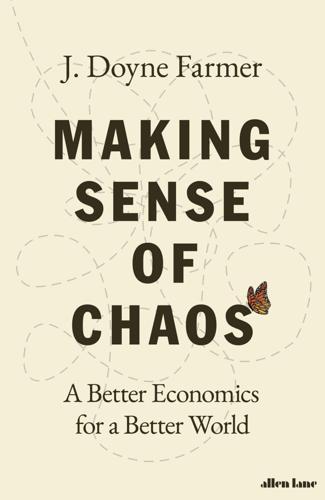
Making Sense of Chaos: A Better Economics for a Better World
by
J. Doyne Farmer
Published 24 Apr 2024
The slowing down of the spinning wheel in the center can be predicted using the assumption of rolling friction, but the ball cannot be predicted very well this way. 15 In part because of our demonstration that roulette could be beaten, the state of Nevada subsequently passed a law against ‘using a computer to predict the outcome of a game’. 16 As we were completing construction of the first wearable digital computer, our friend Jim Crutchfield came home one evening and said that he had just been to a meeting of the HomeBrew Computer Club, where two guys were working on a computer that they said they were going to sell to housewives. We couldn’t figure out why housewives would want computers, and decided that we would make more money by beating roulette. The two guys were Steve Jobs and Steve Wozniak. 17 Lorenz (1963). 18 The term ‘chaos’ for sensitive dependence on initial conditions was first used by Li and Yorke in a 1975 paper called ‘Period Three Implies Chaos’. However, it didn’t really catch on until the 1980s, in particular with the publication of James Gleick’s popular book, Chaos (1987). 19 Poincaré (1914). 20 Packard et al. (1980). 21 Wicksell, Knut. 1918.
…
We needed to make our calculations in secret and quickly enough to place bets, but in 1976 there was no such thing as a personal computer, much less a smartphone. Following some insightful suggestions from our mentor Tom Ingerson, we designed and built the world’s first wearable digital computer. It was based on the 6502 microprocessor, the same one used to build the original Apple computer.16 With the technology available at the time, there was barely enough space to fit 3,000 bytes of program memory into the biggest box we could hide. I painstakingly hand-coded the program in machine language; this included an operating system (with perhaps the shortest floating-point arithmetic package ever written) and all the logic needed to perform the calculations and output the results.
…
The argument for efficient markets depends on the idea that buying drives prices up and selling drives them down, causing market inefficiencies to quickly disappear. An investor who processes information and weighs the merits of one stock against another and trades accordingly is called an arbitrageur. If Apple stock is underpriced, arbitrageurs will buy it and drive the price up until it’s properly priced. According to received knowledge, their action should quickly remove any future opportunities to make profits, making the market efficient. But as already noted, this argument is self-contradictory: Market efficiency requires arbitrageurs who are attracted by profits.
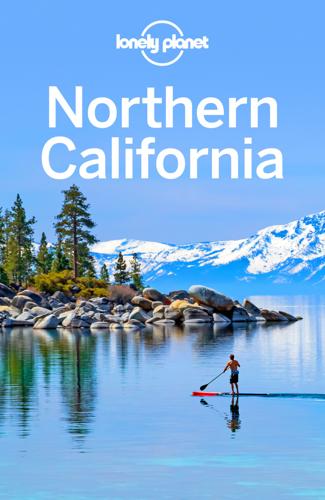
Northern California Travel Guide
by
Lonely Planet
SAN JOSE FOR CHILDREN Children’s Discovery MuseumMUSEUM ( GOOGLE MAP ; %408-298-5437; www.cdm.org; 180 Woz Way; $13, child under 1yr free; h10am-5pm Tue-Sat, noon-5pm Sun; c) Downtown, this science and creativity museum has hands-on displays incorporating art, technology and the environment, with plenty of toys and cool play-and-learn areas for tots to school-aged children. The museum is on Woz Way, named after Steve Wozniak, cofounder of Apple. California's Great AmericaAMUSEMENT PARK ( GOOGLE MAP ; %408-988-1776; www.cagreatamerica.com; 4701 Great America Pkwy, Santa Clara; adult/child under 4ft $69/48; hApr-Oct, hours vary; c) If you can handle the shameless product placements, kids love the roller coasters and other thrill rides.
…
Consumers didn’t know quite what to do with computers, but in his 1969 Whole Earth Catalog, author (and former LSD tester for the CIA) Stewart Brand explained that the technology governments used to run countries could empower ordinary people. Hoping to bring computer power to the people, Steve Jobs and Steve Wozniak, both in their 20s at the time, introduced the Apple II at the 1977 West Coast Computer Faire, with unfathomable memory (4KB of RAM) and microprocessor speed (1MHz). Still, the question remained: what would ordinary people do with all that computing power? By the mid-1990s an entire dot-com industry boomed in Silicon Valley with online start-ups, and suddenly people were getting everything – their mail, news, politics, pet food and, yes, sex – online.
…
It’s about half a mile from downtown, on the north side of Hwy 50. WORTH A TRIP APPLE HILL In 1860, a miner planted a Rhode Island Greening apple tree on a hill and with it established the foundation for bountiful Apple Hill, a 20-sq-mile area east of Placerville and north of Hwy 50 where there are more than 60 orchards. Apple growers sell directly to the public, usually from August to December, and some let you pick your own. Other fruits and Christmas trees are available during different seasons. Maps of Apple Hill are available online through the Apple Hill Association ( GOOGLE MAP ; %530-644-7692; www.applehill.com; 2461 Larsen Dr, Camino), or use the El Dorado Farm Trails Guide (http://visit-eldorado.com).
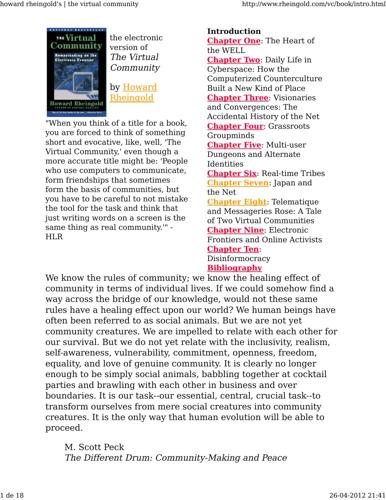
Howard Rheingold
by
The Virtual Community Homesteading on the Electronic Frontier-Perseus Books (1993)
Published 26 Apr 2012
Kapor, concerned about the nature of the Sun Devil arrests and what they signaled for civil liberties in cyberspace, offered to support the costs of legal defense. Acid Phreak, Phiber Optik, and their buddy Scorpion were represented by Rabinowitz, Boudin, Standard, Krinsky, and Lieberman. Within days of the Pinedale meeting, Steve Wozniak, cofounder of Apple Computer, and John Gilmore, Unix telecommunications wizard and one of the first employees of the enormously successful Sun Microsystems, offered to match Kapor's initial contributions. A board of directors was recruited that included, among others, WELL founder Stewart Brand. The EFF endowment was intended from the beginning to be a great deal more than a defense fund.
…
It started out as a community of Apple users and Apple dealers, and people still exchanged information about Apple computers and argued about different kinds of Apple software, but they also started chatting, in groups of twenty or thirty, for no particular purpose other than to make each other fall off the chair laughing, every day. "We would shoot phrases at each other, carry on multiple conversations. All the fun came from the mingling of different conversations. You could see the transcript on your screen. We would do it for hours on end." The word began to get around the French Apple community, and by 1985, Calvados had grown to about three thousand users, and income was about $100,000 a month.
…
Baxter, who operated out of an office in Rock Springs, Wyoming, one hundred miles away from Pinedale, wanted to get together with Barlow as soon as possible to talk about some kind of mysterious--at least to him--conspiracy to steal the trade secrets of Apple Computer. A word of explanation is always in order when discussing high-tech crimes, because many involve theft or vandalism of intangible property such as private credit records, electronic free speech, or proprietary software. Apple computers all include in their essential hardware something known as a ROM chip that contains, encoded in noneraseable circuits, the special characteristics that make an Apple computer an Apple computer. The ROM code, therefore, is indeed a valuable trade secret to Apple; although it is stored in a chip, ROM code is computer software that can be distributed via disk or even transmitted over networks.
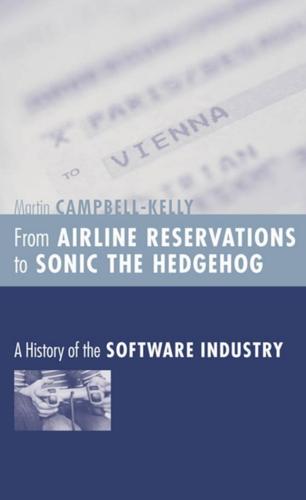
From Airline Reservations to Sonic the Hedgehog: A History of the Software Industry
by
Martin Campbell-Kelly
Published 15 Jan 2003
However, a number of individuals who developed software for these machines—including Bill Gates, Paul Allen, and Gary Kildall—were to get a first-mover advantage that would give them early dominance of the personal computer software industry. The transforming event for the personal computer was the launch of the Apple II in April 1977. The tiny firm of Apple Computer had been formed by the computer hobbyists Steve Jobs and Steve Wozniak in 1976. Their first machine, the Apple, was a raw computer board designed for kit-building hobbyists. The Apple II, however, was an unprecedented leap of imagination and packaging. Looking much like the computer terminals seen on airport reservation desks, it consisted of a keyboard, a CRT display screen, and a central processing unit, all in one package.
…
In late 1987, Windows 2.0 was released to modest acclaim. The interface had been polished considerably, and its main visual elements were almost indistinguishable from those of the Macintosh. Microsoft had obtained a license from Apple Computer for Windows 1.0 but had not renogotiated it for the new release. Version 2.0 so closely emulated the “look and feel” of the Macintosh that Apple sued for copyright infringement in March 1988. The Apple-vs.-Microsoft lawsuit consumed many column-inches of reportage and rattled on for 3 years before a settlement in Microsoft’s favor was reached in 1991.33 So far as can be ascertained, the lawsuit was something of a sideshow that had little bearing on Microsoft’s or any other company’s technical or marketing strategy.
…
In 1982, when Xerox had failed to market the technology, Warnock and Geschke started their own company.61 Adobe grew rapidly, supplying a software technology known as Postscript for manufacturers of laser printers and for the Apple Macintosh. That the Macintosh was subsequently able to dominate the high-end desktop publishing market was due largely to Adobe’s technology. By 1984, half of Adobe’s income came from Apple royalties. By the late 1990s, however, Adobe’s Postscript technology was no longer unique; both Apple and Microsoft had developed their own systems. Recognizing that its niche in printing software was evaporating, Adobe made a number of strategic acquisitions in order to diversify into desktop publishing and electronic document distribution.
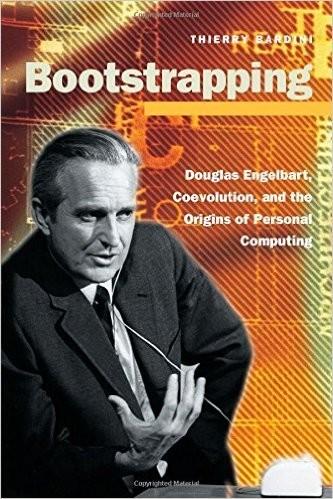
Bootstrapping: Douglas Engelbart, Coevolution, and the Origins of Personal Computing (Writing Science)
by
Thierry Bardini
Published 1 Dec 2000
(Johnson et al. 1989, 25-26) The "other" personal computer revolution that redefined the idea of the per- sonal computer was indeed partly the result of the computing philosophy that had led to the Star and that had invented a personal user for the computer. The final stages of product development and marketing of the interface for the per- sonal computer, however, occurred at Apple, not at Xerox. Apple and The End of the Bootstrapping Process The fairy-tale story of the founding of Apple Computer by Steve Jobs and Steve Wozniak, beginning with the Apple I and the meetings of computer hobbyists at the Home Brew Computer Club in a Palo Alto burger joint, is often told and need not be repeated here. It is necessary, however, to trace the path followed by Douglas Engelbart's innovations as they reached their terminus in the form in which they now are employed, a form very different from the one Engelbart had envisioned for them.
…
They absolutely refused, they wouldn't do 174 The ArrIval of the Real User it, we could not sell them on the concept of the mouse, we showed them the re- port, we showed them the mouse, and what they did instead was to put a little finger-sensitive tablet on the keyboard. . . which was useless, it was so bad that finally they gave it up, but they wouldn't use the mouse. . . they said people don't want that extra thing on their desk. . . that was just really difficult to understand, in the same company. . . it was just crazy. . . . It wasn't until Apple picked it up. . . . I mean, it was the real change from there, Steve Jobs saw the technology at PARC and pIcked it up right away. The mouse attracted Steve Jobs's attention during Larry Tesler's demon- stration of the Alto at PARC, and when Tesler moved to Apple a few months later, the mouse moved with him. This last move, at the end of the bootstrap- ping process, was the one that made a star out of the mouse, to the extent that many still believe that Apple invented the mouse. Although Apple never claimed such an invention, some of its employees still occasionally say that "we're the ones who perfected the mouse by getting rid of these extra buttons" (Bruce Tagliazini, quoted in Card and Moran 1988, 524).
…
(Irby 1992) This involvement with publishing organized Tesler's contribution to personal computing and put him in the position of spanning boundaries between the community of hackers as early as the late 1960's and the more formal R&D environment of computer science at Xerox PARCo Then, at Apple Computer, Tesler got the opportunity to set the agenda for the design of the Lisa and then the Macintosh in an institution that by then had become a perfect, if improbable hybrid of the two communities. Jobs foresaw the potential of such a technology for a marketable product. Two major factors influenced the success of the technology transfer of the graphic user interface from Xerox PARC to Apple. Jobs and Wozniak were connected to the hobbyist movement of the early 1970'S, and by 1979, Apple had successfully moved from this hobbyist market to the office market, thanks to Visicalc, the first spreadsheet program developed for the Apple II.
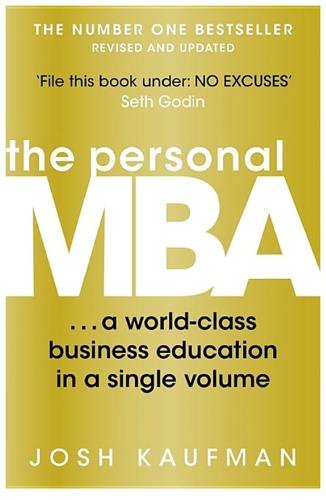
The Personal MBA: A World-Class Business Education in a Single Volume
by
Josh Kaufman
Published 2 Feb 2011
Excessive Self-Regard Tendency is the natural tendency to overestimate your own abilities, particularly if you have little experience with the matter at hand. Being optimistic about our capabilities has benefits—it increases the probability we’ll try something new. That’s how novices sometimes accomplish great things—they do them before realizing how risky or difficult their objective was. Steve Wozniak, who cofounded Apple Computer with Steve Jobs, built the world’s first personal computer. Here’s what he had to say about the experience: “I never had done any of this stuff before, I never built a computer, I never built a company, I had no idea what I was doing. But I was going to do it, and so I did it.”
…
Sell the product for as high a markup as possible, preferably a multiple of the purchase price. Resellers are valuable because they help wholesalers sell products without having to find individual purchasers. To a farmer, selling apples to millions of individuals would be time-intensive and inefficient: it’s far better to sell them all to a grocery chain and focus on growing more apples. The grocery then takes the apples into inventory and sells them to individual consumers at a higher price. Major retailers like Walmart and Tesco, book retailers like Barnes & Noble, and catalog operations like Lands’ End work in fundamentally the same way: purchase products at low prices directly from manufacturers, then sell them for a higher price as quickly as possible.
…
When paired with the book’s cover image of a guy relaxing in a hammock on a tropical beach, the title goes a long way in convincing people to purchase and read the book. Apple used a Hook for the launch of the iPod: “1,000 songs in your pocket.” At the time, portable music players consisted of bulky CD and cassette players, and advertising for early MP3 players focused on geekspeak: megabytes of disk space. Apple’s Hook highlighted the primary benefit: instead of carrying around hundreds of tapes or CDs, you could carry your entire music collection in one elegant device. Apple’s five-word tagline worked wonders. In a little under a year, 236,000 first-generation iPods were sold—an astounding start, considering this was the company’s first foray into the portable music category.

Smart Cities: Big Data, Civic Hackers, and the Quest for a New Utopia
by
Anthony M. Townsend
Published 29 Sep 2013
But you had to put the thing together yourself.12 Hobbyists quickly formed groups like Silicon Valley’s Homebrew Computer Club to trade tips, hacks, and parts for these DIY computers. Homebrew was a training camp for innovators like Apple cofounders Steve Jobs and Steve Wozniak who would overthrow IBM’s dominance of the computer industry. (According to Wozniak, the Apple I and Apple II were demo’d at Homebrew meetings repeatedly during their development.)13 Never before had so much computing power been put in the hands of so many. Grassroots smart-city technologies—mobile apps, community wireless networks, and open-source microcontrollers among them—are following a similar trajectory as the PC: from utopian idea to geek’s plaything to mass market.
…
Almost immediately after the iPhone’s launch in June 2007, hackers figured out how to “jailbreak” the iPhone’s operating system, a technique that allowed them to load third-party software. A little more than a year later, in July 2008, Apple co-opted the growing movement by launching the iTunes App Store. The App Store created a place where buyers and sellers of software for mobile devices could come together and easily do business with a few clicks. While not quite as open as the Web (Apple could and did ban many apps, especially those that replicated the iOS operating system’s core features like e-mail), it was a huge improvement. Second, apps made signing up new users and getting them to interact with the service much easier.
…
But while TIA’s grand database sought to find traces of terror cells in big data, the real value of all this covert watching is more mundane. It’s about money. It starts in our pockets. Mobile devices, like the iPhone, keep a running record of where we’ve been. Apple quietly disclosed this practice in 2010, but it didn’t make headlines until a year later when security experts Alasdair Allan and Pete Warden created a tool for users to easily access and map it. The data wasn’t just comprehensive and detailed; it was unencrypted and copied to every machine you synced with.52 Owners of non-Apple smartphones smirked, but a half-year later, another scandal broke over the widespread use of Carrier IQ software on other manufacturers’ devices.
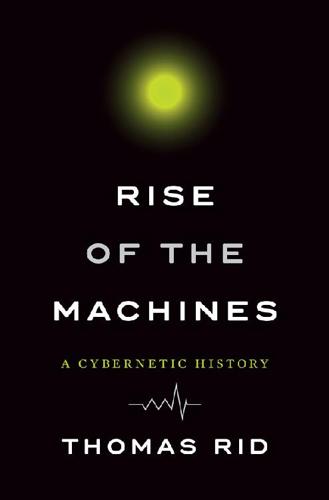
Rise of the Machines: A Cybernetic History
by
Thomas Rid
Published 27 Jun 2016
They invented time-sharing, against the interest of large corporations, and gave more people access to SAGE-style supercomputers—in effect, turning mainframes into more widely accessible virtual personal computers. The second wave of hackers, in the late 1970s, overturned mainframes entirely by bringing the personal computer to market. Many of them were hard-core counterculture types—for instance, Steve Jobs and Steve Wozniak, two cofounders of Apple. They had honed their skills by developing, and then selling, so-called blue boxes, illegal phone phreaking devices to make free calls. Then came the third wave of “hackers,” the social hackers of the early 1980s. The personal computer and emerging network technology didn’t articulate an entire philosophy and aesthetic just by themselves.
…
Algebra isn’t limited by the availability of fresh apples to count or to multiply. Arithmetic is dealing with abstract entities. The ambitions of the emerging discipline were equally expansive. The “real machine” could be electronic, mechanical, neural, social, or economic. This alone meant that the realm of cybernetics was vast. This ambitious vision of cybernetics is best expressed through an analogy: cybernetics relates to the machine as geometry relates to the object in space. Ashby’s machines-and-math comparison was an inspiration, a stroke of genius. Nature provides a range of geometrical objects in space: stones, apples, snakes, horses, or something more complex, like trees or mountains.
…
Geometry contains these objects and can very well calculate the surface of an apple or the volume of a stone. But real, existing objects don’t limit geometry. Geometry is far more expansive—a framework to grasp all possible forms and shapes and sizes. It is just the same with cybernetics and machines: “It takes as its subject-matter the domain of ‘all possible machines,’” Ashby argued in 1956. It is of secondary interest whether some of these machines “have not yet been made, either by Man or by Nature.”51 No mathematician would ever feel constrained by five apples on the kitchen counter. Why should a cyberneticist be constrained by vacuum tubes?
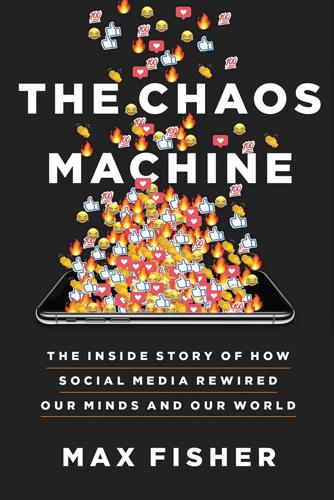
The Chaos Machine: The Inside Story of How Social Media Rewired Our Minds and Our World
by
Max Fisher
Published 5 Sep 2022
Planning for nuclear war, the Pentagon encouraged contractors to shift vital projects away from major population centers. The aerospace giant Lockheed complied, moving its missiles and space division to the quiet Santa Clara Valley, just behind hangar three on Moffett Field. Much of the Cold War arms race was conducted from its campus. Apple co-founder Steve Wozniak, like many of his era, grew up watching a parent head to Lockheed every morning. Equally important was an unusual new academic research center, just a few miles away. Frederick Terman, the son of a psychology professor at then-unremarkable Stanford University, spent World War II at Harvard’s labs, overseeing joint military–academic research projects.
…
In newsletters and regular gatherings, they codified their revolutionary self-image into something like doctrine. PCC’s newsletter ran technical guidance alongside treatises on the coming libertarian utopia. Homebrew’s meetups produced a generation of startups, among them Apple Computer. As personal computers expanded beyond the niche hobbyist market, Apple vaulted ahead of its competitors, thanks to its technology and, especially, marketing. It sold the “freedom and weirdness” image to baby boomers as simultaneously nostalgic—echoing ’60s counterculture—and aspirational. In 1984, with business skyrocketing year over year, it ran a Super Bowl spot of a woman hurling a hammer at a video screen of a totalitarian overlord.
…
Almost…” Most users never encountered these communities, tucked away in shadowy corners of the site, but enough made their way to them for digital-monitoring groups to warn Reddit that it was becoming an incubator of hate. “We will not ban legal content even if we find it odious or if we personally condemn it,” Wong, the CEO, had said. But his tech idealism finally broke in September 2014, when a hacker broke into the iCloud accounts of a number of female celebrities. iCloud is Apple’s cloud computing service; many Apple products back up user files to its servers. The hacker downloaded the targets’ iPhone data, including a number of private nude photos. Dozens were uploaded to 4chan, then Reddit, which, befitting its role as the link between the internet’s underbelly and its mainstream, became, overnight, the central repository.
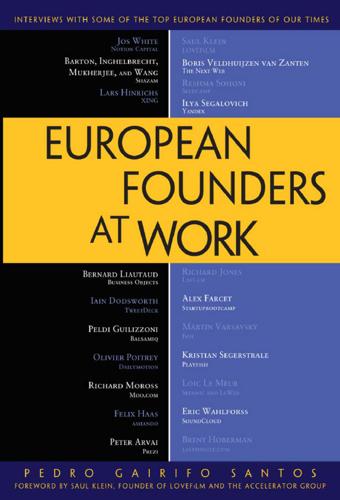
European Founders at Work
by
Pedro Gairifo Santos
Published 7 Nov 2011
And ultimately all of these start-ups were amalgamated under the umbrella of LOVEFiLM International. I think there are between five and ten people who could credibly say that they were co-founders of what became LOVEFiLM. I think there are some interesting lessons. People very often focus on the single or the dual founder story. The Steve Jobs/Steve Wozniak story, that then just becomes the Steve Jobs story. Or the Bill Gates/Paul Allen story that then becomes the Bill Gates story. Or the Larry Page and Sergey Brin story, which is still the Larry Page and Sergey Brin story. Or the Jeff Bezos story, which is just the Jeff Bezos story. Or the Reed Hastings story.
…
In fact, the capacity for serious scale is almost part of the muscle memory of Silicon Valley’s residents. As a newly-minted founder, you have unparalleled access within a 10-mile radius to a living ecosystem of talent and investors who have been part of businesses in almost every technology sector. Some of these went from start-up to superstar—HP, Intel, Apple, Cisco, Oracle, and Google—the list goes on and on, each one at different speeds and with different approaches, creating tens of thousands of jobs, over $10 billion in annual sales, and over $100 billion of enterprise value. Of course, there are examples of extraordinary value creation driven by visionary founders who were able to build great organizations in the last 30 years outside of Silicon Valley, including monsters like Amazon, Dell, and Microsoft.
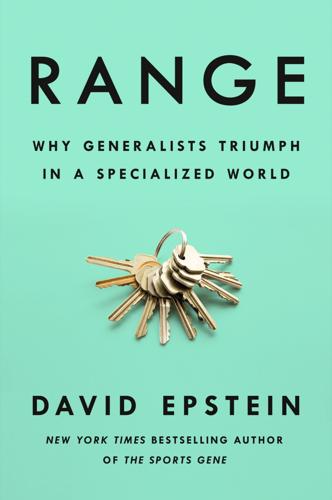
Range: Why Generalists Triumph in a Specialized World
by
David Epstein
Published 1 Mar 2019
The first true electrical engineer Nintendo hired was Satoru Okada, who said bluntly, “Electronics was not Yokoi’s strong point.” Okada was Yokoi’s codesigner on the Game & Watch and Game Boy. “I handled more of the internal systems of the machine,” he recalled, “with Yokoi handling more of the design and interface aspects.” Okada was the Steve Wozniak to Yokoi’s Steve Jobs. Yokoi was the first to admit it. “I don’t have any particular specialist skills,” he once said. “I have a sort of vague knowledge of everything.” He advised young employees not just to play with technology for its own sake, but to play with ideas. Do not be an engineer, he said, be a producer.
…
The students prompted with one analogy came up with more strategies than those given no analogies, and students given multiple analogies came up with more strategies than those reminded only of one. And the more distant the analogy, the better it was for idea generation. Students who were pointed to Nike and McDonald’s generated more strategic options than their peers who were reminded of computer companies Apple and Dell. Just being reminded to analogize widely made the business students more creative. Unfortunately, students also said that if they were to use analogy companies at all, they believed the best way to generate strategic options would be to focus on a single example in the same field. Like the venture capitalists, their intuition was to use too few analogies, and to rely on those that were the most superficially similar.

Open: The Story of Human Progress
by
Johan Norberg
Published 14 Sep 2020
That is why we need open economies with permissionless innovation, so that the small groups who believe in something can use a great diversity of decentralized funding sources and test it on the consumer market, to see if it is in fact worthless, impossible and stupid, or if it turns out to be the next big thing. It allowed Steve Jobs and Steve Wozniak to assemble the Apple I in Job’s bedroom and garage in 1976, and sell the first copies to a small computer retailer and then start a company with the help of an angel investor. The Soviets also had their eccentrics in garages. In 1979, three employees of the Moscow Institute of Electronic Engineering used Western technologies to build their own home computer called the Micro-80.
…
That was a reasonable assumption at the time. Atari was offered the Apple computer but said no. Wozniak asked Hewlett-Packard if they wanted it five times, and they turned it down five times. And in 1985 Wozniak himself thought they had oversold their product and that the ‘home computer may be going the way of video games, which are a dying fad’. The president of Apple, John Sculley, agreed: ‘People use computers in the home, of course, but for education and running a small business. There are not uses in the home itself.’32 Jobs was himself ousted from Apple, before he returned in 1997 to save the faltering company.
…
But with the exception of the Spartans, the Greeks soon learned that it brought prosperity and so they started to imitate their Middle Eastern neighbours. The agora, the assembly space in Greek cities, took on an increasingly commercial flavour from about 700 bc. In the fourth century the comic poet Eubulus provided a witty list of everything for sale in the agora of Athens: ‘figs, witnesses to summonses, bunches of grapes, turnips, pears, apples, givers of evidence, roses, medlars, porridge, honeycombs, chickpeas, lawsuits, beestingspudding, myrtle berries, allotment machines, irises, lamps, waterclocks, laws, and indictments’.43 There was even an ‘Agora of the Kerkopes’, a black market for stolen goods. The Romans considered plundering of the provinces both a quicker and more glorious way to get rich than trade but, as was the case with many empires, the Romans’ unification of enormous areas also gave new opportunities for migrants, travellers and traders.
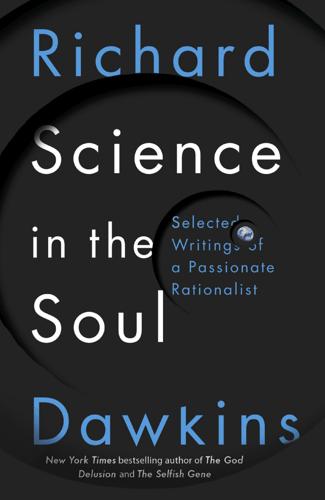
Science in the Soul: Selected Writings of a Passionate Rationalist
by
Richard Dawkins
Published 15 Mar 2017
‘Pearls before swine’ overestimates the average chat-room conversation, but it is the pearls of hardware and software that inspire me: the internet itself and the World Wide Web, succinctly defined by Wikipedia as ‘a system of interlinked hypertext documents contained on the internet’. The Web is a work of genius, one of the highest achievements of the human species, whose most remarkable quality is that it was constructed not by one individual genius like Tim Berners-Lee or Steve Wozniak or Alan Kay, nor by a top-down company like Sony or IBM, but by an anarchistic confederation of largely anonymous units located (irrelevantly) all over the world. It is Project MAC writ large. Suprahumanly large. Moreover, there is not one massive central computer with lots of satellites, as in Project MAC, but a distributed network of computers of different sizes, speeds and manufacturers, a network that nobody, literally nobody, ever designed or put together, but which grew, haphazardly, organically, in a way that is not just biological but specifically ecological.
…
Something calculated to shake hell’s foundations?’ ‘Tradition has it that he was apprehended eating an apple, sir.’ ‘Scrumping?*4 That was it? That was the sin that Jesus had to redeem – or atone according to choice? I’ve heard of an eye for an eye and a tooth for a tooth, but a crucifixion for a scrumping? Jarvis, you’ve been at the cooking sherry. You are not serious, of course?’ ‘Genesis does not specify the precise species of the purloined comestible, sir, but tradition has long held it to have been an apple. The point is academic, however, since modern science tells us that Adam did not in fact exist, and therefore was presumably in no position to sin.’
…
(For full publication details of books referred to in the text and notes, please see the bibliography at the back of this volume.) *3 I like Steve Gould’s way of putting it. ‘In science, “fact” can only mean “confirmed to such a degree that it would be perverse to withhold provisional assent.” I suppose that apples might start to rise tomorrow, but the possibility does not merit equal time in physics classrooms’ (‘Evolution as fact and theory’, in Hen’s Teeth and Horse’s Toes). *4 Professors of ‘Women’s Studies’ are occasionally given to lauding ‘women’s ways of knowing’ as if these were different from, even superior to, logical or scientific ways of knowing.
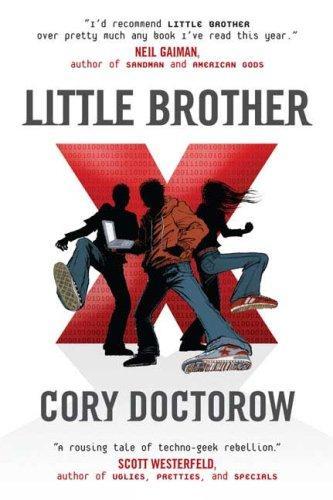
Little Brother
by
Cory Doctorow
Published 29 Apr 2008
"San Francisco was ground zero for this. Revolutionary armies were founded here. Some of them blew up buildings or robbed banks for their cause. A lot of those kids grew up to be more or less normal, while others ended up in jail. Some of the university dropouts did amazing things -- for example, Steve Jobs and Steve Wozniak, who founded Apple Computers and invented the PC." I was really getting into this. I knew a little of it, but I'd never heard it told like this. Or maybe it had never mattered as much as it did now. Suddenly, those lame, solemn, grown-up street demonstrations didn't seem so lame after all. Maybe there was room for that kind of action in the Xnet movement.
…
My brain was really going now, running like 60. There were lots of reasons to run ParanoidXbox -- the best one was that anyone could write games for it. Already there was a port of MAME, the Multiple Arcade Machine Emulator, so you could play practically any game that had ever been written, all the way back to Pong -- games for the Apple ][+ and games for the Colecovision, games for the NES and the Dreamcast, and so on. Even better were all the cool multiplayer games being built specifically for ParanoidXbox -- totally free hobbyist games that anyone could run. When you combined it all, you had a free console full of free games that could get you free Internet access.

Radical Uncertainty: Decision-Making for an Unknowable Future
by
Mervyn King
and
John Kay
Published 5 Mar 2020
MS-DOS (powering Windows 3.1) was everywhere. Meanwhile, Steve Jobs and Steve Wozniak began assembling Apple machines in 1976 in Jobs’s garage, now designated a historic site. 18 Although Gates and Microsoft had understood that ease of use was as important as technical sophistication to commercial success, Jobs extended this vision further and conceived a computer that you could use without understanding anything about computers. To achieve this goal, Jobs drew on another invention from Xerox Parc – the graphical user interface. Apple machines had screens with icons which created the appearance of a desktop, and friendly aids such as a mouse and trash bin – innovations that seemed like gimmicks to the nerds who then predominated among computer users, but which opened computing to a much wider audience.
…
Apple machines had screens with icons which created the appearance of a desktop, and friendly aids such as a mouse and trash bin – innovations that seemed like gimmicks to the nerds who then predominated among computer users, but which opened computing to a much wider audience. Apple machines were more fun. But you could access these capabilities only by buying Apple’s integrated software and hardware. Apple’s determination to maintain its proprietary system failed in the face of widespread adoption of the more open standard of the IBM PC: Windows, a combination of Apple’s graphical user interface with Microsoft’s ubiquitous MS-DOS, swept the world, and almost swept Apple from that world. By the mid-1990s, Apple was on the edge of bankruptcy, its market share falling, its innovations failing.
…
The return of Jobs to the company he had founded twenty years earlier enthused the dwindling band of Apple devotees, but few in the business world had high expectations. In 1998, Dick Rumelt, the UCLA strategy professor we met in chapter 1 , interviewed Jobs about his plans. The Apple CEO responded, ‘I’m going to wait for the next big thing.’ 19 The ‘next big thing’ proved to be music. Music publishers resisted digital downloads, proclaiming them piracy. They sought to protect their established business of selling compact discs through record stores. Napster and other illegal file-sharing services flourished. Apple secured the rights to sell millions of downloadable tracks at 99 cents each through the iTunes Store, and launched the iPod in 2002.
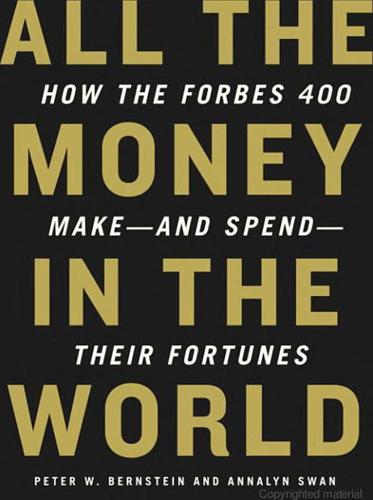
All the Money in the World
by
Peter W. Bernstein
Published 17 Dec 2008
“Work and career take on the quality of a mission, a pursuit of some Holy Grail. And because they are talented and convinced they can change the world, they often do.” Meyer refers to Apple founder39 Steve Jobs, for one, as a “visionary monster,” and other accounts seem to bear that out. In The Silicon Boys, for example, David Kaplan recounts a telling anecdote about Jobs. Jobs and his buddy Steve Wozniak famously founded Apple Computer in 1976, when both were in their early twenties. As the company grew, stories of Jobs’s abrasive personality and propensity for tantrum-throwing swirled around Silicon Valley.
…
Certainly no one that morning, not even Gates, realized the full implications of what was at stake: that his deal with IBM would not only reshape the computer industry and have an impact on billions of consumers around the world, but would help bring about a seismic shift in the accumulation of wealth in America. The high-tech landscape was changing fast in 1980. Apple Computer, a three-year-old start-up2 founded by a couple of hippies from northern California, Steve Jobs and Stephen Wozniak, was in the process of racking up $139 million in sales. Later that year, Apple would go public with the most successful stock offering since that of the Ford Motor Company in 1956. An impatient IBM3 wanted to break into the burgeoning personal-computer market, and it was going into overdrive to take advantage of a new sixteen-bit microprocessor chip developed by Intel, a company founded by Gordon E.
…
At one club meeting Jobs met fellow hobbyist Steven Wozniak, who had recently designed a prototype of one of the first personal computers. The twenty-one-year-old Jobs had a premonition that what appealed to the Homebrew zealots would also appeal to households all over America and, together with Wozniak, formed Apple Computer in 1977. It was an extremely modest beginning: Jobs sold his minivan to finance the new company. The first Apple computers retailed for $666.66, and the company sold about 175 of them. Buoyed by their success, the duo set out to raise more money for mass production. Had he had been living on the East Coast, the notoriously unkempt Jobs probably wouldn’t have stood a chance.

Capitalism in America: A History
by
Adrian Wooldridge
and
Alan Greenspan
Published 15 Oct 2018
By 1981, about two-thirds of all U.S. manufacturing was suburban.22 America became a land of edge cities as back-office functions moved to office parks and retailing moved to shopping malls. IT’S ALWAYS DARKEST BEFORE THE DAWN By the late 1970s, there were stirrings of a better future. The high-tech boom was on the horizon: the young Bill Gates started Microsoft in Albuquerque, New Mexico, in 1975 and Steve Jobs and Steve Wozniak founded Apple in 1976. And America had not lost its talent for creative destruction, even during the decade of malaise. America’s pharmaceutical industry escaped the general decline in management quality: Pfizer continued to invest heavily in R&D and developed a pipeline of blockbuster drugs. American businesspeople continued to revolutionize the consumer economy: Dee Ward Hock built Visa International, a credit card company, into a giant with 64 million customers in 1980.23 Michael Harper turned ConAgra (short for Consolidated Agriculture) from a disorganized mess into the second-largest food company in the world.24 The political system also began to generate antibodies to the virus of malaise.
…
The stock market continued to plunge until, at its bottom in 1932, stocks were worth a mere 11 percent of their high-water mark and Wall Street was reduced to a ghost town. Two thousand investment houses went out of business. The price of a Big Board seat fell from $550,000 before the crash to $68,000. Securities firms declared “apple days”—unpaid vacation days each month to allow destitute brokers to go out and supplement their income by selling apples on the sidewalks. The Empire State Building, which John Raskob had commissioned in 1929 as a monument to “the American way of life that allowed a poor boy to make his fortune on Wall Street,”6 was nicknamed the “Empty State Building.”7 The Union League Club had a room wallpapered with worthless stock certificates.
…
Embracing debt reduction and globalization made for complicated politics: Clinton was repeatedly forced to do battle with his friends in the liberal wing of his party while forging alliances with his enemies in the Republican caucus. The result of this political turbulence was a remarkable economic boom. The United States became the center of the high-tech economy, with the PC revolution (dominated by Microsoft and Apple) followed by the internet revolution. The Dow Jones hit record highs in every year of Clinton’s presidency as the economy boomed and regular Americans shifted their retirement savings into stocks. Between November 1995 and March 1999, the Dow rose from 5,000 points to an unprecedented 10,000. The economic boom that Clinton finally enjoyed was driven by four profound changes that had been developing from the 1970s onward: the revival of entrepreneurialism; the deregulation of financial capitalism; the advance of globalization; and the high-tech revolution.
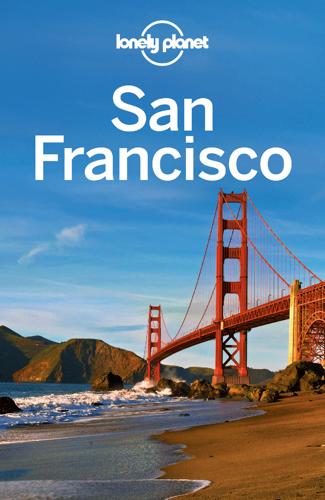
San Francisco
by
Lonely Planet
Top 5 for Weird Technology Exploratorium (the Presidio) Musée Mécanique (Fisherman’s Wharf) Audium (Japantown) SFMOMA (SoMa) Children’s Creativity Museum (SoMa) The next wave of California techies was determined to create a personal computer that could compute and communicate without crashing. When 21-year-old Steve Jobs and Steve Wozniak introduced the Apple II at San Francisco’s West Coast Computer Faire in 1977, techies were abuzz about the memory (4KB of RAM!) and the microprocessor speed (1MHz!). The Mac II originally retailed for the equivalent today of $4300, or for 48KB of RAM, more than twice that amount – a staggering investment for what seemed like a glorified calculator/typewriter.
…
Emergencies Police, Fire & Ambulance ( emergency 911, nonemergency 311) San Francisco General Hospital ( emergency room 415-206-8111, main hospital 415-206-8000; www.sfdph.org; 1001 Potrero Ave; Potrero Ave) Drug & Alcohol Emergency Treatment ( 415-362-3400) Trauma Recovery & Rape Treatment Center ( 415-437-3000; www.traumarecoverycenter.org) Internet Access SF has free wi-fi hot spots citywide – locate one nearby with www.openwifispots.com. Places listed in this guide that offer wi-fi have a symbol. You can connect for free at most cafes and hotel lobbies, as well as at the following locations: Apple Store (www.apple.com/retail/sanfrancisco; 1 Stockton St; 9am-9pm Mon-Sat, 10am-8pm Sun; Powell St; ) Free wi-fi and internet terminal usage. San Francisco Main Library (www.sfpl.org; 100 Larkin St; 10am-6pm Mon & Sat, 9am-8pm Tue-Thu, noon-5pm Fri & Sun; ) Free 15-minute internet terminal usage; spotty wi-fi access.
…
Celebration of Craftswomen (www.womensbuilding.org) Local craftswomen show off their skills and support the Women’s Building; held at Fort Mason in December. Shopping by Neighborhood » The Marina, Fisherman’s Wharf & the Piers ( Click here ) Date outfits, girly accessories, wine, design in the Marina. » Downtown & Civic Center ( Click here ) Department stores, global megabrands, discount retail, Apple store. » The Hills & Japantown ( Click here ) Date outfits, girly accessories, wine and design in Pacific Heights. » The Mission, SoMa & Potrero Hill ( Click here ) Bookstores, local design collectives, artisan foods, art galleries, vintage whatever. » The Haight & Hayes Valley ( Click here ) Local and independent designers, home design, sweets and shoes in Hayes Valley; head shops, music stores, vintage, eccentric accessories, and skate, snow and surf gear in the Haight.
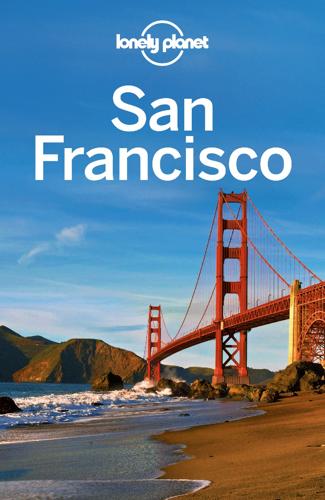
San Francisco
by
Lonely Planet
Top 5 for Weird Technology Exploratorium (the Presidio) Musée Mécanique (Fisherman’s Wharf) Audium (Japantown) SFMOMA (SoMa) Children’s Creativity Museum (SoMa) The next wave of California techies was determined to create a personal computer that could compute and communicate without crashing. When 21-year-old Steve Jobs and Steve Wozniak introduced the Apple II at San Francisco’s West Coast Computer Faire in 1977, techies were abuzz about the memory (4KB of RAM!) and the microprocessor speed (1MHz!). The Mac II originally retailed for the equivalent today of $4300, or for 48KB of RAM, more than twice that amount – a staggering investment for what seemed like a glorified calculator/typewriter.
…
Emergencies Police, Fire & Ambulance ( emergency 911, nonemergency 311) San Francisco General Hospital ( emergency room 415-206-8111, main hospital 415-206-8000; www.sfdph.org; 1001 Potrero Ave; Potrero Ave) Drug & Alcohol Emergency Treatment ( 415-362-3400) Trauma Recovery & Rape Treatment Center ( 415-437-3000; www.traumarecoverycenter.org) Internet Access SF has free wi-fi hot spots citywide – locate one nearby with www.openwifispots.com. Places listed in this guide that offer wi-fi have a symbol. You can connect for free at most cafes and hotel lobbies, as well as at the following locations: Apple Store (www.apple.com/retail/sanfrancisco; 1 Stockton St; 9am-9pm Mon-Sat, 10am-8pm Sun; Powell St; ) Free wi-fi and internet terminal usage. San Francisco Main Library (www.sfpl.org; 100 Larkin St; 10am-6pm Mon & Sat, 9am-8pm Tue-Thu, noon-5pm Fri & Sun; ) Free 15-minute internet terminal usage; spotty wi-fi access.
…
Celebration of Craftswomen (www.womensbuilding.org) Local craftswomen show off their skills and support the Women’s Building; held at Fort Mason in December. Shopping by Neighborhood » The Marina, Fisherman’s Wharf & the Piers ( Click here ) Date outfits, girly accessories, wine, design in the Marina. » Downtown & Civic Center ( Click here ) Department stores, global megabrands, discount retail, Apple store. » The Hills & Japantown ( Click here ) Date outfits, girly accessories, wine and design in Pacific Heights. » The Mission, SoMa & Potrero Hill ( Click here ) Bookstores, local design collectives, artisan foods, art galleries, vintage whatever. » The Haight & Hayes Valley ( Click here ) Local and independent designers, home design, sweets and shoes in Hayes Valley; head shops, music stores, vintage, eccentric accessories, and skate, snow and surf gear in the Haight.

Blood in the Machine: The Origins of the Rebellion Against Big Tech
by
Brian Merchant
Published 25 Sep 2023
Throughout its history, Apple has stolen or emulated key innovations from competitors, like, perhaps most famously, the concept of the graphical user interface (GUI), from Xerox, as depicted in the 1996 documentary Triumph of the Nerds, where this quote is taken from. In another parallel between Arkwright and Jobs, the courts determined that Arkwright’s patent for his chief invention, the water frame, was invalid because it was actually invented by a former partner, John Kay, who, not unlike Apple cofounder Steve Wozniak, was pushed out of the partnership and thus missed out on the lion’s share of the company’s eventual riches. 10. Like Jeff Bezos A line can be drawn back from Jeff Bezos and Amazon, whose warehouses are laboratories for advancing new technologies to discipline workers for maximum productivity; through the big auto manufacturers’ automated car plants of the 1960s, which demanded workers become freshly subservient to heavy machinery; to the scientific management theories of Frederick Winslow Taylor in the 1910s, when he timed workers with a stopwatch to ensure they were meeting productivity standards; to the textile factories of the Industrial Revolution in the 1800s, and to Arkwright, where the model saw its most successful case study. 11. compared to the previous engine The Newcomen was the previously dominant steam engine, but was too inefficient to be widely affordable. 12.
…
Arkwright’s “main difficulty” Andrew Ure, The Philosophy of Manufactures: Or, An Exposition of the Scientific, Moral, and Commercial Economy of the Factory System of Great Britain (London: Charles Knight, 1835), 16. 9. Like Steve Jobs The Apple cofounder and iconic CEO liked to quote Picasso: “He said, ‘Good artists copy, great artists steal.’ And we have always been shameless about stealing great ideas.” Throughout its history, Apple has stolen or emulated key innovations from competitors, like, perhaps most famously, the concept of the graphical user interface (GUI), from Xerox, as depicted in the 1996 documentary Triumph of the Nerds, where this quote is taken from.
…
But the logic of unfettered capitalism ensures that any labor-saving, cost-reducing, or control-enabling device will eventually be put to use, regardless of the composition of the societies those technologies will disrupt. Consider it the iron law of profit-seeking automation: once an alluring way to eliminate costs with a machine or program emerges, it will be deployed. This precept has held true throughout the era of Silicon Valley, of Facebook, Google, Amazon, and Apple, about which the historian Margaret O’Mara notes that founders often “had little inkling of how powerful, and exploitable, their creations would become.” At a time when software has been developed to automate nearly every process, including finding processes to automate, and when profit-seekers have the whole of the digital world at their fingertips to pull ideas from, this tendency only stands to proliferate.
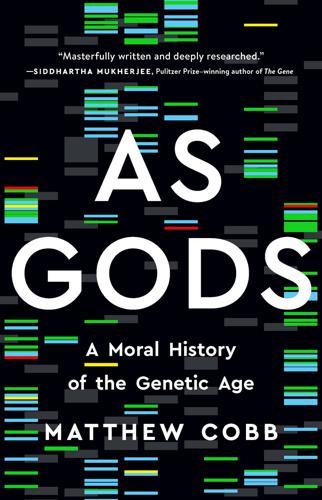
As Gods: A Moral History of the Genetic Age
by
Matthew Cobb
Published 15 Nov 2022
That would soon change – less than a decade later around $4.5 billion would be invested in venture capital projects, partly due to a legal change that allowed pension funds to invest their vast wealth in riskier companies.9 In a bizarre coincidence, two of the sparks that began this explosion flashed into existence on 1 April 1976. On that day Swanson met with Kleiner & Perkins in San Francisco to pitch his recombinant insulin idea, while 60 km away down in Silicon Valley, Steve Jobs and Steve Wozniak set up Apple Computer Company.10 As Jobs and Wozniak took the first tiny step in the creation of what turned out to be a business behemoth, Swanson was already playing with the big boys, presenting his ex-bosses with a six-page business plan and asking for a cool $500,000. After postponing their decision until they met Boyer – he was the man with the scientific know-how upon which the whole project would depend – Kleiner & Perkins eventually agreed to invest $100,000 in Swanson’s six pages of paper.
…
For the president of the New York Stock Exchange, 1980 was ‘probably the most profitable year in the history of Wall Street’.65 Two months after the Genentech IPO, the far more reliable prospect of the Apple Computing Company – already turning a tidy profit – followed suit. It was the most heavily oversubscribed launch in history and by the end of the day Apple was worth $1.79 billion – over three times as much as Genentech (at the time of writing, Apple is valued at $3 trillion).66 Although Boyer might not have had Jobs’s style, he was still a golden boy. In March 1981 his jovial, moustachioed face appeared on the cover of Time magazine.
…
Ronay was not writing about GM crops but about an anodyne proposal to allow the mild irradiation of food in order to reduce microbial contamination; nevertheless, the alliterative phrase was soon adopted as a way of describing GM food.44 Three years later, one Paul Lewis wrote a brief letter to the New York Times, in which he apparently coined a term that would stick to GM products like mud: ‘If they want to sell us Frankenfood, perhaps it’s time to gather the villagers, light some torches and head to the castle.’45 To an extent, scientists had brought this on themselves, by a mixture of overexcitement and ill-considered hyperbole. In 1981, at the beginning of the commercial application of genetic engineering, the president of the International Plant Research Institute, the fortuitously named Martin Apple, promised the readers of the New York Times, ‘We are going to make pork chops grow on trees.’46 Quite how much Apple was either joking or misquoted does not really matter – with repeated promises of an amazing future, it was hardly surprising that the public began to take those promises seriously and even to fear what they might lead to. ✴ Before the advent of GM crops, genetic engineering seemed to have become routine.
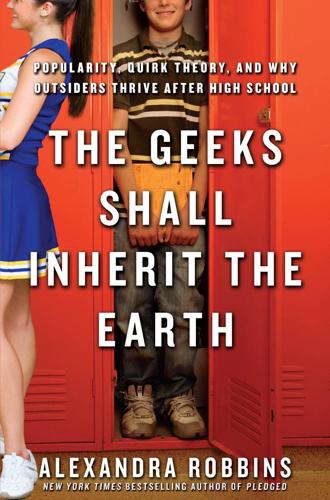
The Geeks Shall Inherit the Earth: Popularity, Quirk Theory, and Why Outsiders Thrive After High School
by
Alexandra Robbins
Published 31 Mar 2009
These outcasts are rising up, exulting in the “geek cred” that differentiates them from other groups and the knowledge and precision that, as Geoffrey suggested, eventually will enable them to profit financially (as have, to name a few, Paul Allen, Sergey Brin, Larry Ellison, Bill Gates, Steve Jobs, Larry Page, and Steve Wozniak, some of whom themselves exemplify quirk theory). They are realizing at an early age that the geeks (and loners, punks, floaters, dorks, and various other outcasts) shall inherit the earth. Some students are fighting their marginalization by co-opting typically derogatory terms. In 2009, four twelve-to-fourteen-year-olds won the New York City FIRST LEGO League Robotics Championship under the team name Nerd Herd.
…
ELI, VIRGINIA | THE NERD Eli rejoiced when Kim—a girl from his lunch table whom he liked talking to—and a few of her friends invited him to play board games with them in the library on early-release days. Eli laughed more often than usual with this group, even though he couldn’t help thinking, I should really be doing schoolwork right now, while in the midst of a game. During a game of Apples to Apples, Kim was having a side conversation with a friend. “Watch,” she said, smiling. “Eli, when did you turn in your college apps?” “October,” he said. “See?” Kim said to her friend. “When did you finish your gov vocab?” The homework was due at the end of the week. “Two weeks ago,” Eli replied.
…
More than half of the nearly three thousand students at Citygrove, a public high school in an urban valley north of Los Angeles, were Latino, about 30 percent were white, and 12 percent Asian. Only 3 percent were black. Joy remained in her seat, following her Jamaican school’s rules, until the teacher told her it was okay to leave. During a break before PE, Joy pulled a box of apple juice out of her drawstring bag and called her mother. “Hi, Mommy,” she said. “Hi, Joy, how you doing?” “I’m fine.” Joy wiped away a rolling tear. She noticed a tall student who sat across from her in second period. She hoped he would say hello, but instead he gazed through her at the wall. “What are you doing?”
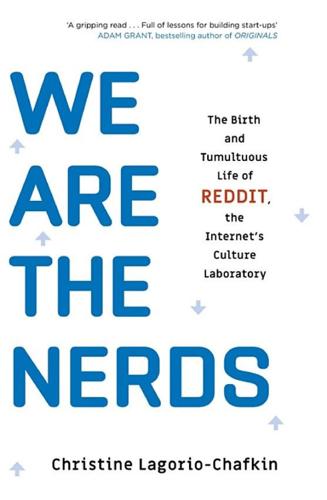
We Are the Nerds: The Birth and Tumultuous Life of Reddit, the Internet's Culture Laboratory
by
Christine Lagorio-Chafkin
Published 1 Oct 2018
Ever since Graham had sold Viaweb to Yahoo—his code would over the years become the technological backbone of Yahoo Shopping—he’d been dabbling in early-stage startup investing. These kids were starting to look like they might fit the bill. They were young and enthusiastic classmates, with wildly different personalities, like Larry Page and Sergey Brin. They were a hacker and a computer-competent salesman, like Steve Wozniak and Steve Jobs. They were tight friends, like Bill Gates and Paul Allen. They were awkward, and smart. Enthusiastic—and almost too young for him to relate to. Maybe they were perfect. Huffman piped up suddenly, interrupting Graham’s monologue about disrupting the act of line-waiting. “No no no!
…
Ohanian shared a room with a good friend and fellow student named Jack Thorman, a lifelong resident of Charlottesville. Huffman took the other bedroom. At Preston Square, Huffman began a subtle mission to inculcate Ohanian with his passion for startups. While they lounged in the two La-Z-Boy recliners Huffman had nabbed from his mom’s house, he told Ohanian stories of Intel and Apple and Viaweb. Ohanian had always wanted to study law and assumed he’d use his education for good—maybe be a human rights attorney or work in nonprofits—but slowly Huffman convinced him that creating something cool in the world, even a business, could effect more change. A few months later, Huffman gave Ohanian a copy of Masters of Doom.
…
Slowe spent his days writing software and attempting to freeze light, and looked the part, with his T-shirts tucked into his high-waisted, belted light-wash jeans. But he drove a cool car—a white Mustang—and always seemed to possess an easy gravitas. The startup Slowe and his cofounder, Zak Stone, were building stalled at the prototype phase when summer ended. Apple had launched Spotlight, bringing to market the desktop search tool they’d barely built. Still, Slowe had one foot firmly in startup land and did not want to extract it. He’d developed a daily routine of waking early and working all day in the lab, only taking a break to train for a half-marathon over lunch.

Army of None: Autonomous Weapons and the Future of War
by
Paul Scharre
Published 23 Apr 2018
Over 3,000 robotics and artificial intelligence experts have called for a ban on offensive autonomous weapons, and are joined by over sixty nongovernmental organizations (NGOs) in the Campaign to Stop Killer Robots. Science and technology luminaries such as Stephen Hawking, Elon Musk, and Apple cofounder Steve Wozniak have spoken out against autonomous weapons, warning they could spark a “global AI arms race.” Can an arms race be prevented, or is one already under way? If it’s already happening, can it be stopped? Humanity’s track record for controlling dangerous technology is mixed; attempts to ban weapons that were seen as too dangerous or inhumane date back to antiquity.
…
Unlike traditional computer algorithms that operate based on a script of instructions, neural networks work by learning from large amounts of data. They are an extremely powerful tool for handling tricky problems that can’t be easily solved by prescribing a set of rules to follow. Let’s say, for example, that you wanted to write down a rule set for how to visually distinguish an apple from a tomato without touching, tasting, or smelling. Both are round. Both are red and shiny. Both have a green stem on top. They look different, but the differences are subtle and evade easy description. Yet a three-year-old child can immediately tell the difference. This is a tricky problem with a rules-based approach.
…
What neural networks do is sidestep that problem entirely. Instead, they learn from vast amounts of data—tens of thousands or millions of pieces of data. As the network churns through the data, it continually adapts its internal structure until it optimizes to achieve the correct programmer-specified goal. The goal could be distinguishing an apple from a tomato, playing an Atari game, or some other task. In one of the most powerful examples of how neural networks can be used to solve difficult problems, the Alphabet (formerly Google) AI company DeepMind trained a neural network to play go, a Chinese strategy game akin to chess, better than any human player.

Future Politics: Living Together in a World Transformed by Tech
by
Jamie Susskind
Published 3 Sep 2018
As Tim Wu explains, the invention of the personal computer was an OUP CORRECTED PROOF – FINAL, 26/05/18, SPi РЕЛИЗ ПОДГОТОВИЛА ГРУППА "What's News" VK.COM/WSNWS 314 FUTURE POLITICS ‘unimaginable’ moment: ‘a device that made ordinary individuals sovereign over information by means of computational powers they could tailor to their individual needs’.2 Until then, computing power had been the preserve of large companies, governments, and university laboratories.3 Steve Wozniak, who co-founded Apple with Steve Jobs, saw computers as ‘a tool that would lead to social justice.’4 The idea of property will assume pre-eminent importance in the digital lifeworld, largely because (in economic terms) it will be more worthwhile to own things than to do things.Those on the wrong side of the ownership/labour divide could face real hardship.
…
Think for a moment about using an Apple device. It’s usually a thing of beauty: smooth, seamless, and intuitive. It offers a universe of applications. But it’s a universe closely curated by Apple. You can’t reprogram the device to your tastes. You can only use the applications chosen by Apple, whose Guidelines for app developers say: We will reject apps for any content or behavior that we believe is over the line.What line, you ask? Well, as a Supreme Court Justice once said, ‘I’ll know it when I see it.’ Despite the somewhat arbitrary power of this clause, it feels churlish to complain. Apple devices offer plenty of choice and the system works well.
…
Allison Linn,‘Microsoft Creates AI that Can Read a Document and Answer Questions About it As Well As a Person’, The AI Blog, OUP CORRECTED PROOF – FINAL, 30/05/18, SPi РЕЛИЗ ПОДГОТОВИЛА ГРУППА "What's News" VK.COM/WSNWS Notes 18. 19. 20. 21. 22. 23. 24. 25. 26. 399 15 January 2018 <https://blogs.microsoft.com/ai/microsoft-createsai-can-read-document-answer-questions-well-person/> (accessed 21 January 2018). See Jonathan Zittrain, ‘Apple’s Emoji Gun Control’, New York Times, 16 August 2016 <https://mobile.nytimes.com/2016/08/16/opinion/ get-out-of-gun-control-apple.html?_r=0&referer=https://www. google.com/> (accessed 1 December 2017). Lotus Ruan, Jeffrey Knockel, Jason Q. Ng, and Masashi CreteNishihata, ‘One App, Two Systems’, The Citizen Lab, 30 November 2016 <https://citizenlab.ca/2016/11/wechat-china-censorship-oneapp-two-systems/> (accessed 1 December 2017). Zittrain, ‘Apple’s Emoji Gun Control’. Robert Booth, ‘Facebook Reveals News Feed Experiment to Control Emotions’, The Guardian, 30 June 2004 <https://www.theguardian. com/technology/2014/jun/29/facebook-users-emotions-newsfeeds> (accessed 11 December 2017).
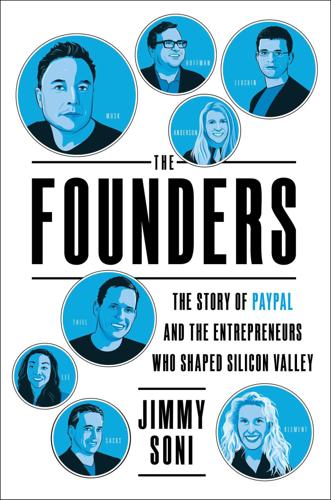
The Founders: The Story of Paypal and the Entrepreneurs Who Shaped Silicon Valley
by
Jimmy Soni
Published 22 Feb 2022
Iconoclastic, intense, soft-spoken, and with “Jesus-like hair,” Banister became a guiding light for both Nosek and Levchin, and the three became fast friends and collaborators. Their first joint venture was a T-shirt for the 1995 Engineering Open House, a student-organized annual conference whose keynote speaker that year was Apple cofounder Steve Wozniak. The trio bonded over producing something small, and it gave them confidence that they might one day make something big. As they got to know one another, Nosek and Banister gave Levchin a crash course on libertarianism. The two had cofounded a libertarian student group, and Banister coded the group’s website.
…
X.com’s leaders took Bill Harris’s rocky tenure as evidence that such “supervision” was not only unnecessary, but counterproductive. For every Schmidt-like success, there seemed to be a John Sculley waiting in the wings. Sculley, the former CEO of PepsiCo, had been installed to lead Apple following the ouster of Steve Jobs—with mixed results. “We saw what had happened at Apple when they brought in the Pepsi executive,” David Sacks recalled. “We saw what had happened at Netscape when they brought in Jim Barksdale. And we saw that we were on a similar trajectory.” Musk, too, was skeptical that a wizened adult figure was needed to whip young companies into shape: The founder may be bizarre and erratic but this is a creative force, and they should run the company.… If someone’s the creative force, or one of the creative forces, behind a company, at least they understand which direction to go.
…
If you want to, say, Let’s, like, basically take over the world’s financial system, then X is the better name, because PayPal is a feature, not the thing itself,” Musk said. To him, naming the company PayPal “would be like Apple naming itself the Mac.” That summer, the issue came to a head. Focus groups rated the PayPal name more highly than X.com. Vivien Go, who helped spearhead the market research, remembered “again and again, the theme of Oh God, I wouldn’t trust this website. It’s an adult website.” Go admitted that user opinion had its limits—“You know, people used to think ‘Apple’ was a funny name, too”—but she was hearing concerns directly. “It’s kind of hard to refute when people say over and over, almost in the same words, I just wouldn’t trust that.
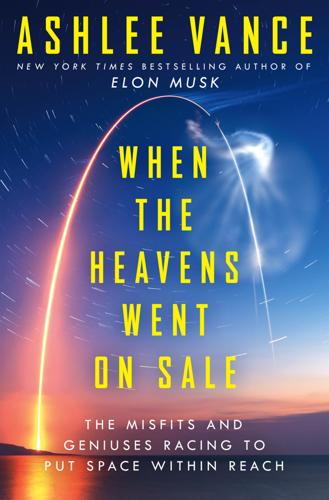
When the Heavens Went on Sale: The Misfits and Geniuses Racing to Put Space Within Reach
by
Ashlee Vance
Published 8 May 2023
All of the people whom Pete Worden—Darth Vader himself—had drawn to the Bay Area shared not only a love of space but also a romantic view of what life could be like here on Earth. The technology industry, through its dot-com-era obsession with stock prices and acquiring users, had lost much of the counterculture luster that had driven it in the 1960s. Back then, people like Apple’s future cofounders, Steve Jobs and Steve Wozniak, had been hacking the phone system to stick it to AT&T, while others were championing computers as the tools that would let “the people” take back power from the government and corporations. The new arrivals at Ames were, like everyone else, part of a much more commercial era of technology, but they also held on to many of the beliefs that had long made the Bay Area an epicenter of social revolutions.
…
None of the companies was profitable, but each one was suddenly worth billions of dollars as if by magic. Astra started using its newfound riches right away. It began by hiring a slew of executives from big-name companies in Silicon Valley. Most bizarrely, it named Benjamin Lyon as chief engineer. Lyon came from Apple, which, as of this writing, does not make rockets. His experience revolved around developing track pads for laptops, iPhones, and allegedly Apple’s struggling and secretive self-driving car program. Kemp argued that Lyon brought fresh perspective and the knowledge of what it took to make industrial-grade products to Astra. In other conversations, people told me that Lyon had been hired to make Astra’s investors feel good.
…
Marshall took the lead on the project, poring over Craigslist ads in a bid to find a place near NASA Ames that could accommodate an unusually large number of housemates. He quickly stumbled on a listing for a very big house—a mansion, in fact—located at 21677 Rainbow Drive in the suburbs of Cupertino, aka Apple’s hometown. The owners of the house had been involved in the tech business, but they’d moved elsewhere, and the property had sat idle for years in the wake of the dot-com bust. If an unusually large group of twentysomethings wanted to rent the place, so be it, so long as they were willing to put down the first month’s rent, the last month’s rent, and a security deposit for a grand total of $20,000.

Nexus: A Brief History of Information Networks From the Stone Age to AI
by
Yuval Noah Harari
Published 9 Sep 2024
It was a conscious ideological decision, influenced by the 1960s counterculture with its anarchist ideas of power to the people and libertarian distrust of governments and big corporations.53 Leading members of the Homebrew Computer Club, like Steve Jobs and Steve Wozniak, had big dreams but little money and didn’t have access to the resources of either corporate America or the government apparatus. Jobs and Wozniak sold their personal possessions, like Jobs’s Volkswagen, to finance the creation of the first Apple computer. It was because of such personal decisions, rather than because of the inevitable decree of the goddess of technology, that by 1977 individuals could buy the Apple II personal computer for a price of $1,298—a considerable sum, but within reach of middle-class customers.54 We can easily imagine an alternative history.
…
Fruit trees photosynthesize, so they require sunlight. Mushrooms feed on dead organic matter, which can usually be found in the ground. So mushrooms are usually down at soil level, whereas fruits grow further up. Another common rule is that apples grow on apple trees, whereas figs grow on figs trees. So if you are looking for an apple, you first need to locate an apple tree, and then look up. When living in a forest, humans learn this organic order. It is very different with archives. Since documents aren’t organisms, they don’t obey any biological laws, and evolution didn’t organize them for us.
…
Truth and reality are nevertheless different things, because no matter how truthful an account is, it can never represent reality in all its aspects. If a NILI agent wrote that there are ten thousand Ottoman soldiers in Gaza, and there were indeed ten thousand soldiers there, this accurately pointed to a certain aspect of reality, but it neglected many other aspects. The very act of counting entities—whether apples, oranges, or soldiers—necessarily focuses attention on the similarities between these entities while discounting differences.6 For example, saying only that there were ten thousand Ottoman soldiers in Gaza neglected to specify whether some were experienced veterans and others were green recruits.
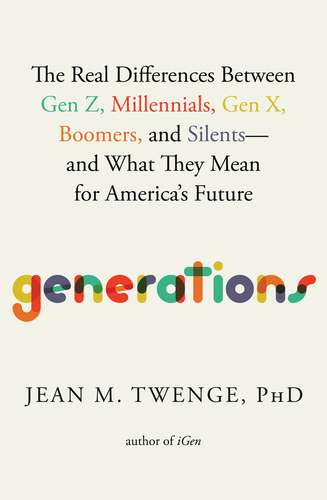
Generations: The Real Differences Between Gen Z, Millennials, Gen X, Boomers, and Silents—and What They Mean for America's Future
by
Jean M. Twenge
Published 25 Apr 2023
Fox (1961) Tom Cruise (1962) Rosie O’Donnell (1962) Jim Carrey (1962) Jon Stewart (1962) Steve Carell (1962) Brad Pitt (1963) Conan O’Brien (1963) Quentin Tarantino (1963) Mike Myers (1963) Stephen Colbert (1964) Adam Carolla (1964) Musicians and Artists Robert Mapplethorpe (1946) Billy Joel (1949) Annie Leibovitz (1949) Bruce Springsteen (1949) Gene Simmons (1949) Pat Benatar (1953) Madonna (1958) Prince Rogers Nelson (1958) Michael Jackson (1958) Marie Osmond (1959) K. D. Lang (1961) Melissa Etheridge (1961) Garth Brooks (1962) Sheryl Crow (1962) Whitney Houston (1963) Eddie Vedder (1964) ENTREPRENEURS AND BUSINESSPEOPLE Steve Wozniak (1950) Bill Gates (1955) Steve Jobs (1955) Jeff Bezos (1964) Politicians, Judges, and Activists Bill Clinton (1946) George W. Bush (1946) Donald Trump (1946) Hillary Clinton (1947) Dan Quayle (1947) Arnold Schwarzenegger (1947) Mitt Romney (1947) Al Gore (1948) Clarence Thomas (1948) Elizabeth Warren (1948) Samuel Alito (1950) Chuck Schumer (1950) Condoleezza Rice (1954) Sonia Sotomayor (1954) John Roberts (1955) Anita Hill (1956) Mike Pence (1959) Elena Kagan (1960) Barack Obama (1961) Kamala Harris (1964) Athletes and Sports Figures Kareem Abdul-Jabbar (1947) O.
…
Another Boomer who rose to fame in the 1980s epitomizes the interplay of individualism and technology in the Boomer life cycle: Apple Computer cofounder Steve Jobs (b. 1955). Jobs was a Boomer taken to its logical extremes. He spent much of his adulthood rejecting the conventional, trying various vegetarian and vegan diets, walking around barefoot in offices, and refusing to buy furniture for his house (the famous picture of Jobs with one of the first Macs was taken with him sitting on the floor because he had no chairs in his living room). The Apple name was inspired by a commune near Portland, Oregon, with apple orchards called the All One Farm. When Jobs returned to the helm of Apple after a few years’ absence, the company’s advertising slogan became “Think Different.”
…
(worldwide, nearly 7 million died as of late 2022). The aftereffects of COVID on both mental and physical health will reverberate for decades to come. CHAPTER 6 Generation Z (Born 1995–2012) “Every once in a while, a revolutionary product comes along that changes everything,” said Apple CEO Steve Jobs on January 9, 2007. “Today, Apple is going to reinvent the phone.” It did: Six months later, Apple introduced the first iPhone, and the world has never been the same. That was true for everyone, but it was particularly true for the post-Millennial generation born after 1995, who has never known a world without the internet. The oldest were 12 when the iPhone premiered and the smartphone changed social life, communication, entertainment, culture, and politics.
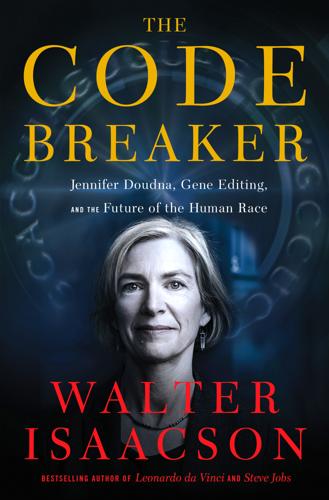
The Code Breaker: Jennifer Doudna, Gene Editing, and the Future of the Human Race
by
Walter Isaacson
Published 9 Mar 2021
By being the first person to try to edit his own DNA, he showed that the gene genie would someday be out of the bottle, which he insisted was a good thing. Zayner wants to make the genetic engineering revolution as open and crowdsourced as the early digital revolution was, when coders like Linus Torvalds created the open-source operating system Linux and hackers like Steve Wozniak gathered at the Homebrew Computer Club and talked about liberating computers from the exclusive control of corporations and government institutions. Genetic engineering, he insists, is no harder than computer engineering. “I almost failed out of high school,” he says, “but I was able to learn how to do this stuff.”
…
After more than three billion years of evolution of life on this planet, one species (us) had developed the talent and temerity to grab control of its own genetic future. There was a sense that we had crossed the threshold into a whole new age, perhaps a brave new world, like when Adam and Eve bit into the apple or Prometheus snatched fire from the gods. Our newfound ability to make edits to our genes raises some fascinating questions. Should we edit our species to make us less susceptible to deadly viruses? What a wonderful boon that would be! Right? Should we use gene editing to eliminate dreaded disorders, such as Huntington’s, sickle-cell anemia, and cystic fibrosis?
…
Isn’t it dangerous, I ask, for everyone to have access to this technology? “No, it’s fucking exciting,” he counters. “No great technology has flourished until people had complete access to it.” He has a point. What truly caused the digital age to blossom was when computers became personal. It happened in the mid-1970s with the advent of the Altair and the Apple II, devices that democratized control of computing power. First hackers and then the rest of us got to play with our own computers and produce digital content. The digital revolution was kicked into an even higher orbit in the early 2000s with the birth of the smartphone. As Zayner says, “Once we have people doing biotechnology at home, like we did with computer programming, so many amazing things will be contributed.”5 Zayner will probably have his way.

Architects of Intelligence
by
Martin Ford
Published 16 Nov 2018
But we’ve also got other limitations to deal with, like we still don’t have generalized tools in AI and we still don’t know how to solve general problems in AI. In fact, one of the fun things, and you may have seen this, is that people are now starting to define new forms of what used to be the Turing test. MARTIN FORD: A new Turing Test? How would that work? JAMES MANYIKA: Steve Wozniak, the co-founder of Apple, has actually proposed what he calls the “coffee test” as opposed to Turing tests, which are very narrow in many respects. A coffee test is kind of fun: until you get a system that can enter an average and previously unknown American home and somehow figure out how to make a cup of coffee, we’ve not solved AGI.
…
Essentially, as a child I lived through the previous big wave of excitement in AI in the late 1970s and 1980s, which allowed me to go to AI conferences as a kid. We grew up in the Bay Area, and one-time my father took us to Southern California because there was an Apple AI conference taking place, and this was in the Apple II era. I remember that Apple had bought out Disneyland for the evening for all of the attendees of the big AI conference. So, we flew down for the day just to be able to go on Pirates of the Caribbean 13 times in a row, which, looking back, tells you something about just how big AI was even then.
…
So, in the context of computer vision, if say I were a retailer, I might need a model to recognize my logo. If I were National Geographic magazine, I might need a model to recognize wild animals. If I worked in the agricultural industry, I might need a model to recognize apples. People have all kinds of use cases, but not everybody has the machinery expertise to create the AI. Seeing this problem, we built the AutoML product so that as long as someone knows what they need, such as, “I need it for apples versus oranges,” and you bring the training data, we will do everything for you. So, from your perspective, it’s all automatic and delivers a customized machine learning model for your problem.
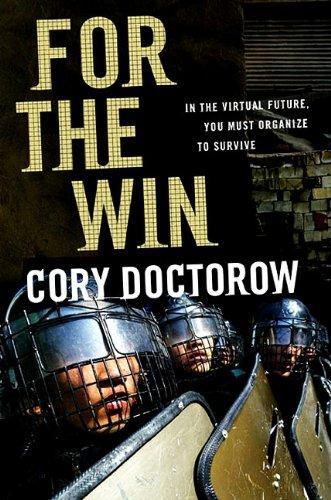
For the Win
by
Cory Doctorow
Published 11 May 2010
But not long after arriving on the scene, Church fell in with Banks, an early fatkins and stalwart of the New Work movement, a technologist who entranced his fellow engineers with his accounts of the New Work’s many “inventions”—prompting one message-board commenter to characterize him as “a cross between Steve Wozniak and the Reverend Sun Myung Moon.” Now, eyewitness accounts have them going at it like shagging marmots, as the bio-enhanced Banks falls on Church’s wrinkly carcass half a dozen times a day, apparently consummating a romance that blossomed while Banks was, to put it bluntly, a giant fat bastard.
…
He was enormous, not just tall but fat, as big around as a barrel. His green tee-shirt read IT’S FUN TO USE LEARNING FOR EVIL! in blocky, pixelated letters. He took her hand and shook it. “I love your blog,” he said. “I read it all the time.” He had three chins, and eyes that were nearly lost in his apple cheeks. “Meet Lester,” Perry said. “My partner.” “Sidekick,” Lester said with a huge wink. “Sysadmin slash hardware hacker slash dogsbody slashdot org.” She chuckled. Nerd humor. Ar ar ar. “Right, let’s get started. You wanna see what I do, right?” Perry said. “That’s right,” Suzanne said. “Lead the way, Lester,” Perry said, and gestured with an arm, deep into the center of the junkpile.
…
“What if I get you some take out, you got a shady place you could eat it? Nursing’s hungry work.” The junkie cocked her head. Then she laughed. “Yeah, OK, yeah. Sure—thanks, thanks a lot!” Lester motioned her over to the menu in the IHOP window and waited with her while she picked out a helping of caramel-apple waffles, sausage links, fried eggs, hash browns, coffee, orange juice and a chocolate malted. “Is that all?” he said, laughing, laughing, both of them laughing, all of them laughing at the incredible, outrageous meal. They went in and waited by the podium. The greeter, a black guy with corn-rows, nodded at Lester and Perry like an old friend.

Power and Progress: Our Thousand-Year Struggle Over Technology and Prosperity
by
Daron Acemoglu
and
Simon Johnson
Published 15 May 2023
This contraption, consisting of a big roller, a wooden-carved frame, and a single button, looked nothing like the computer mouse we are used to today, but with wires sticking from its back, it did look enough like a rodent to get the name. It transformed what most users could do with computers at one fell swoop. It was also the innovation that propelled Steve Jobs and Steve Wozniak’s Macintosh computers ahead of PCs and operating systems based on Microsoft. Other Engelbart innovations, some of them also showcased at the Mother of All Demos, include hypertext (which now powers the internet), bitmapped screens (which made various other interfaces feasible), and early forms of the graphical user interface.
…
Bill Gates was speaking for many in the tech industry at the time when he said, “The [digital] technologies involved here are really a superset of all communications technology that has come along in the past, e.g., radio, newspaper. All of those things will be replaced by something that is far more attractive.” Not everything might go right all the time, but Steve Jobs, cofounder of Apple, captured the zeitgeist perfectly at a conference in 2007 with what became a famous line: “Let’s go and invent tomorrow rather than worrying about yesterday.” In fact, both Time magazine’s upbeat assessment and subsequent techno-optimism were not just exaggerated; they missed entirely what happened to most people in the United States after 1980.
…
Major breakthroughs in communication tools and shipping logistics have enabled a massive wave of offshoring over the last several decades, with production tasks such as assembly or customer service being transferred to countries where labor is cheaper. Offshoring has reduced costs and boosted profits for companies such as Apple, whose products are made of parts produced in many countries and are almost entirely assembled in Asia. But in industrialized nations it has also displaced workers who used to perform these tasks domestically and has not activated a powerful bandwagon. Automation and offshoring have raised productivity and multiplied corporate profits, but have brought nothing resembling shared prosperity to the United States and other developed countries.

California
by
Sara Benson
Published 15 Oct 2010
* * * To read more about the garage-workshop culture of Silicon Valley go to www.folklore.org, which covers the crashes and personality clashes that made geek history. * * * The next wave of Californian techies was determined to create a personal computer that could compute and communicate without crashing. When 21-year-old Steve Jobs and Steve Wozniak introduced the Apple II at the first West Coast Computer Faire in 1977, techies were abuzz about the memory (4KB of RAM!), the microprocessor speed (1MHz!) and a function straight out of science fiction: the ability to communicate directly with other computers, without a person in between. Not until the 1990s would Silicon Valley engineers finally give computers something to talk about.
…
San Jose for Children Downtown, the technology-focused Children’s Discovery Museum (Map; 408-298-5437; www.cdm.org; 180 Woz Way; admission $8; 10am-5pm Tue-Sat, noon-5pm Sun; ) has hands-on science and space displays, plenty of toys and some pretty cool play-and-learn areas such as the kooky ‘Alice’s Wonderland.’ The museum is on Woz Way, which is named after Steve Wozniak, the cofounder of Apple. On hot days, kids can cavort among the 22 minigeysers that climb and fall at the play fountain (Map; Plaza de Cesar Chavez) on downtown’s central square. Kids can romp and whoop it up at two nearby theme parks. Raging Waters ( 408-238-9900; 2333 South White Rd; adult/child under 48in $30/22; May-Sep; ), a water park inside Lake Cunningham Regional Park, has fast water slides, a tidal pool and a nifty water fort.
…
Return to beginning of chapter AROUND PLACERVILLE Apple Hill In 1860 a miner planted a Rhode Island Greening apple tree on what is the present-day property of a family named Larsen. Thus began what is now the bountiful Apple Hill, a 20-sq-mile area east of Placerville and north of Hwy 50 where there are more than 60 orchards. Apple growers sell directly to the public, usually from August to December, and some let you pick your own. Other fruits are available during different seasons. A decent map of Apple Hill is available at the Apple Hill Visitors Center ( 530-644-7692; www.applehill.com) in the Camino Hotel, near the Camino exit off Hwy 50.
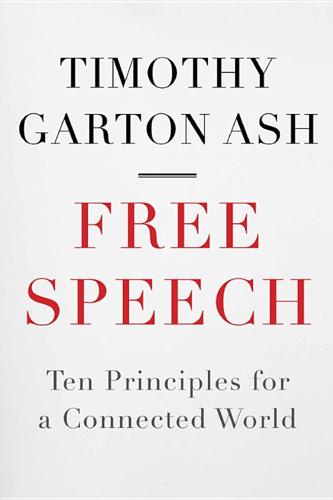
Free Speech: Ten Principles for a Connected World
by
Timothy Garton Ash
Published 23 May 2016
The influence of a Steve Jobs or a Mark Zuckerberg on their respective empires has been more like that of an idiosyncratic absolute ruler in some mediaeval principate than that of the head of government in a modern liberal democracy. Apple’s tethered perfectionism has everything to do with Jobs’s personality. If the other Apple-founding Steve—Wozniak—had become Apple’s dominant figure, it might have remained the open, generative platform it was at the time of the 1982 Apple II desktop computer. For years, Google did not allow advertisements for cigarettes and hard liquor because Sergey Brin and Larry Page disapproved of them. Facebook’s insistence on people using their real names is, to a significant degree, a result of Zuckerberg’s personal attitude.
…
All such artefacts and systems were designed by particular men and women, in a particular time and place, and bear the marks of those origins. In the case of the internet, those men and women were mostly Americans, or English speakers working in America, from the 1950s to the 1990s.48 The Internet, in the original, more specific sense, with a capital I, is not as American as motherhood and apple pie. The Internet is more American than motherhood and apple pie—both of which are, after all, occasionally to be found in other civilisations. It is a product of Cold War America at the height of its power, self-confidence and capacity for innovation. Generous funding from the Pentagon’s Advanced Research Projects Agency, which was originally set up in response to the Soviet Union’s launch of the Sputnik satellite, brought together a strange but dynamic ménage-à-trois of government agencies, private corporations and computer engineers.49 These engineers did not just have tools, they also had views—and generally their views had a strong libertarian strain.
…
While cyberutopians join Ray Kurzweil in envisaging the glorious moment when artificial and human intelligence merge into one transformative ‘singularity’, cyberdystopians fear machine intelligence first overtaking and then taking over humans—like the mesmerically voiced computer HAL in Stanley Kubrick’s ‘2001: A Space Odyssey’, but this time with HAL coming out on top.30 We are not there yet, even if the hypnotic lady speaking from the GPS in your car adjusts her instructions as you change your route, and your handheld box, using software such as Apple’s Siri, can respond to your spoken requests exploiting all the information she’s got on you. Already in the 1960s, the computer scientist Joseph Weizenbaum developed a computer programme named Eliza, after Eliza Doolittle in George Bernard Shaw’s Pygmalion—better known as Julie Andrews in ‘My Fair Lady’.31 Eliza was capable of having rudimentary conversations with people, of a vacuously sympathetic kind (‘I am sorry to hear you are depressed’).
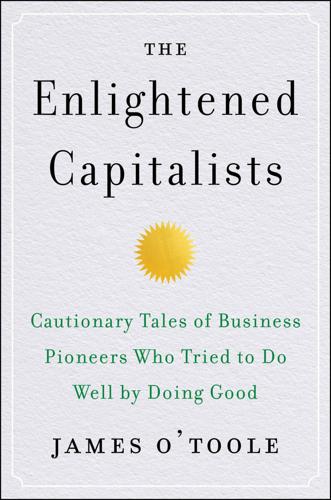
The Enlightened Capitalists
by
James O'Toole
Published 29 Dec 2018
But in the words of Sony founder Akio Morita, Polavision was “too late” by the time Land marketed it.32 Indeed, the hour would prove too late even for Sony’s Betamax videotape system and, subsequently, the VHS system that supplanted it. By then, it was clear that the future belonged to digital technologies. Out in the San Francisco Bay Area, young techies like Steve Wozniak, Steve Jobs, and countless students at Stanford and the University of California, Berkeley, were hard at work creating the technological revolution that eventually put the power of instant photography in the pockets of people around the world. Nonetheless, as late as 1982, Land was still assuring Polaroid’s shareholders that his chemical-based technology produced higher-quality images than digital systems.
…
In essence, we first must understand the tenets of business orthodoxy before we can appreciate our enlightened capitalists’ heresies. Received Wisdom: The Practice of Business Throughout Most of History COMMON TO ALL MANKIND, Adam Smith wrote, is “the propensity to truck, barter and exchange” goods. Indeed, at some point in prehistory, one of our ancestors may have swapped a bunch of apples for a joint of meat, and the species has been engaged in business ever since. Hence it might be said, contrary to competing claims, that the world’s oldest profession is business. If you think about business in terms of stories, as I do, one story is as old as human society itself: the one about the division of labor, and the trading of goods to meet the necessities of life.
…
History then repeated itself, this time as farce: Milton was again forced to beg the Snavelys for money to pay for equipment that never produced a single cough drop. Unwilling to keep investing good money in Hershey père or fils—both of whom Uncle Abraham now considered congenitally born to fail—the Snavelys refused the request for cash. Yet Milton remained the apple of Aunt Mattie’s eye: she pledged property she personally owned as collateral for a bank loan that, when granted, bailed her nephew out and provided enough capital for him to start his third candy enterprise. The Sweet Taste of Success Now in business in Lancaster, Milton began to experiment with recipes for caramels that wouldn’t stick to the teeth of his customers and pull out their fillings.
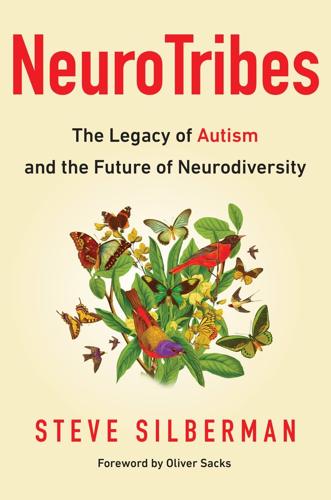
NeuroTribes: The Legacy of Autism and the Future of Neurodiversity
by
Steve Silberman
Published 24 Aug 2015
His labs at MIT and Stanford were elaborate playgrounds for his extraordinary mind, as Cavendish’s estate on Clapham Common was for his own. They also became magnets for other scruffy geniuses who were equally committed to the vision of a world empowered by access to computing—including two young members of a group called the Homebrew Computer Club named Steve Jobs and Steve Wozniak, who would go on to become the founders of Apple. The culture of Silicon Valley began adapting to the presence of a high concentration of people with autistic traits even before the term Asperger’s syndrome was invented. In 1984, a therapist named Jean Hollands wrote a popular self-help book for women called The Silicon Syndrome about navigating what she called “high-tech relationships.”
…
Their equivalents in the mid-twentieth century aimed telescopes at the stars, built radios from mail-order kits, or blew up beakers in the garage. In the past forty years, some members of this tribe have migrated from the margins of society to the mainstream and currently work at companies with names like Facebook, Apple, and Google. Along the way, they have refashioned pop culture in their own image; now it’s cool to be obsessed with dinosaurs, periodic tables, and Doctor Who—at any age. The kids formerly ridiculed as nerds and brainiacs have grown up to become the architects of our future. — WHEN THE VOLENDAM ARRIVED in Glacier Bay, at the midpoint of our journey, we drifted through a natural cathedral of ice with the engines switched off.
…
With the Centers for Disease Control (CDC) currently estimating that one in sixty-eight school-aged children in America are on the autism spectrum, millions of families will be facing sleepless nights in the coming decades. Many autistic adults are not exercising the strengths of their atypical minds at companies like Apple and Google—instead, a disproportionate number are unemployed and struggling to get by on disability payments. Two decades after the passage of the Individuals with Disabilities Education Act (IDEA), parents still routinely find themselves having to sue their local school boards to obtain an appropriate classroom placement for their son or daughter.

Tesla: Inventor of the Electrical Age
by
W. Bernard Carlson
Published 11 May 2013
Alexander Graham Bell had this sort of relationship with his father-in-law, Gardiner Hubbard, as did Thomas Edison with William Orton of Western Union, but we should ask the same questions about the relationship between steam-engine pioneers James Watt and Matthew Boulton or Steve Wozniak and Steve Jobs with Mike Markula in the early days of Apple Computer.22 For ideas to become disruptive technology, inventors must balance imagination and analysis not only in their own minds but also in relationships with their backers. In thinking about how inventors interact with their backers, it’s now time to turn from ideals to illusions.
…
Sending Shallenberger and Stanley to see Tesla was a bit like Steve Jobs’s dealings with Xerox’s Palo Alto Research Center (PARC) in 1979. Determined to have PARC scientists show him their new graphical user interface, Jobs had arranged for Xerox’s venture capital division to invest in his fledging Apple Computer so that PARC would have to cooperate. Much as Xerox capital was the “muscle” needed to force PARC to “open the kimono” and reveal its secrets, so Shallenberger and Stanley were the Westinghouse “muscle.”35 Shallenberger visited Tesla’s lab on 12 June 1888, and Tesla demonstrated his motors operating on four wires.
…
INDEX Abafi (Jósika), 23 Abbey, Ned, 215 AC motors, 3; alternators and, 44, 119, 122, 133–35, 138, 139, 155, 160–61, 181, 211; Brown and, 81, 85, 87, 90, 92–93, 96–97, 99, 100, 103–4, 113, 118–19, 193, 207, 294; demonstrations and, 105, 195; development of, 63–64, 67, 70–71, 74, 77, 81, 85–87, 90–98, 145–46, 403, 405; disruptive innovation and, 402; economic effects of, 402; Ferraris and, 110–11, 146; ideal of, 371; illusion and, 412; impact of, 402; Martin and, 105, 195; mental engineering and, 43–45, 63; out-of-phase circuits and, 84–85; Page and, 97; patents and, 52, 55–56, 64, 93–95, 114, 118, 145, 159, 167, 186, 305, 361, 429n6, 439n8; Peck and, 81, 87, 90, 92–93, 100–105, 107–8, 111–13, 116, 118–19, 193, 207, 294, 318, 405–7; polyphase, 92–99, 104–7, 110–15, 144–45, 158–63, 166–75, 257, 402, 428n42, 434n49; Pöschl lectures and, 41; power transmission and, 140; promotion of, 100, 103–15; rotating magnetic field and, 4, 9–10, 52, 54–64, 67, 84–85, 91–98, 106–12, 124, 169–70, 209, 294, 302, 364, 369, 371, 404, 410, 429n5, 429n6, 436n31; selling idea of, 100–116; single-phase, 88, 96, 98–99, 112, 114, 119, 144, 159–61, 166–68, 170, 173; six-wire scheme and, 64–65, 96, 144, 410; slip rings and, 39, 93, 105, 433n23; split-phase, 95–100, 104, 110–15, 123, 159; Stanley and, 112–13; stator coils and, 37, 39, 40, 44, 52–55, 64–68, 85, 86, 92, 93, 96–97, 100, 106, 115, 119, 166, 209, 404; Szigeti and, 52, 64; Tesla’s legacy and, 396, 405, 410; Thomson and, 106–7; Twain and, 186; two-phase, 159, 161, 169–73; utility industry and, 195; waste heat and, 82, 97, 110; Westinghouse and, 108, 112–18; wireless power and, 209 Adams, Edward Dean, 219, 302; Betts and, 169; Bradley and, 169; Cataract Company and, 164–65; Edison Electric Light Company and, 164; Morgan and, 164, 406; Niagara Falls project and, 164–74, 176, 205, 416; Nikola Tesla Company and, 205–7, 255; polyphase alternating current (AC) and, 167–75; railroads and, 206; Rankine and, 164, 205–7, 259, 353–54; White and, 214–15 Adams, Ernest, 205, 348 Adams, Henry, 342 Aitken, Hugh, 122 Alabama Consolidated Coal and Iron, 372 Albert, Prince of Belgium, 153, 256 Alexander I, King of Serbia, 155 Alley, Dickenson, 220–21, 270, 289, 295–301, 305 Allgemeine Elektricitats-Gesellschaft, 168 Allis-Chalmers, 373 Alta Vista Hotel, 265, 278 alternating current (AC): AC motors and, 3–4, 9 (see also AC motors); alternators and, 44, 119, 122, 133–35, 138, 139, 155, 160–61, 181, 211; arc lighting and, 44–45, 61, 67, 87, 95–96, 108, 120, 171; Bláthy and, 61, 62, 88; Columbia College lecture and, 133–38; conductors and, 66; copper and, 65, 88, 91, 96, 160; demonstrations and, 78, 85, 89–92, 96, 144–45, 160, 166, 172–73, 215; Déri and, 61, 62, 88; disruptive innovation and, 402; egg of Columbus and, 90–92, 103, 172, 257, 407; electromagnetism and, 82, 86; Ganz and Company and, 60–63, 87–88, 155, 158, 258, 429n2, 429n6; Gaulard and, 87–89, 108–9, 112; generators and, 6, 44, 61, 67, 85, 119, 181, 188, 277, 333, 429n48; Gibbs and, 87–89, 108–9, 112; grounding and, 139, 141, 157, 403, 449n43; high-frequency phenomena and, 4, 249 (see also high-frequency phenomena); incandescent lighting and, 88; increasing transmission length of, 138–42; magnifying transmitters and, 268; manufacturers and, 88, 99, 160, 164, 167–68, 173, 304; Niagara hydroelectric project and, 4, 162–67, 170, 172–76, 205, 214, 237, 256, 342–44, 353–55, 365, 416; polyphase, 92–99, 104–7, 110–15, 144–45, 158–63, 166–75, 257, 402, 428n42, 434n49; power transmission and, 95–96, 105–6, 159, 163, 165, 170, 175, 313; promotion of, 100–116, 158–75; pyromagnetic generator and, 76, 81–84; rise of, 85–90; single-phase, 88, 96, 98–99, 112, 114, 119, 144, 159–61, 166–68, 170, 173; skin effect and, 125, 136; split-phase, 95–100, 104, 110–15, 123, 159; Tesla coils and, 120–25, 128, 218, 248–49, 282, 338, 353, 403, 423n6, 450n17, 462n6; thermomagnetic motors and, 76–82; three-phase, 143–45, 159–61, 169–70, 402, 410; three-wire system and, 65, 96, 144; transformers and, 6, 88–89, 111, 184; two out-of-phase currents and, 84–85; two-phase, 159, 161, 169–73; vs. direct current (DC), 44–45, 167–68, 170–71; wireless lighting and, 207–13 (see also wireless lighting); Zipernowski and, 61, 62, 88 alternators: 44, 119, 122, 133–35, 138, 139, 155, 160–61, 181, 211; electromagnets and, 119–20; frequency and, 119, 122, 133–35, 138, 181, 211; heat and, 122; high-power, 155; larger, 155, 160; multiphase current and, 161; new ideals and, 119, 122; synchronous speeds and, 119; wireless lighting and, 181 American DeForest Wireless Telegraph Company, 349 American Electric Manufacturing Company (AEM), 72–73, 431n40 American Institute of Electrical Engineers (AIEE): AC motor and, 51–52, 103, 105–7, 116; Edison Medal and, 240, 376; European delegation of, 117; founding of, 195; lectures at, 51–52, 105–7, 134, 195; Marconi and, 335–37; Martin and, 195 American Marconi, 377–78 American Marconi v. the United States, 378 American Museum of Natural History, 317 American Red Cross, 275, 315 American Smelting and Refining Company (ASARCO), 378 American Union Telegraph Company, 79 American Wireless Telephone and Telegraph Company, 285, 348 America’s Cup, 283, 285–88, 311, 332, 348 Amtorg Trading Corporation, 388 Anderson, Leland, 240, 416, 452n62 Anthony, William, 103–7, 116, 134, 294 Apple Computer, 112, 406 Arago, François, 52–53, 55, 110, 428n43 Arago’s wheel, 52–53 arc lighting: Alley and, 296; alternating current (AC) and, 44–45, 61, 67, 87, 95–96, 108, 120, 171; Brush and, 72; capital needed for, 72–73; direct current (DC) and, 67; economic issues and, 76; Edison and, 71–74, 431n40; Goff and, 72–73; Gramme dynamos and, 41; high-frequency generators and, 120; installation issues and, 72–73; Jablochkoff and, 44, 61; Lontin and, 44; manufacturing and, 72–75; mechanism of, 427n8; on single circuit, 44; oscillators and, 135, 182; patents and, 72–75, 431n46; Rahway and, 73–75, 118; Shallenberger and, 108; Strasbourg system and, 66–69; street lighting and, 120; Tesla Electric Light and Manufacturing Company and, 73, 75, 431n44; Tesla’s streamer picture and, 297; Thomson-Houston and, 72 Armstrong, Edwin Howard, 390, 402 Army Signal Corps, 283 Astor, John Jacob, 256 Astor, John Jacob, IV, 214, 417–18; background of, 256–57; Cataract Construction Company and, 256; Delmonico’s and, 256–57; Ferncliff laboratory and, 256; financial support from, 255–61, 264, 303, 305, 313, 315, 353, 361, 371; Nikola Tesla Company and, 257; poor response of, 305, 353; science-fiction novel of, 256; telephone and, 256; as tinkerer, 256; turbines and, 371–72; wireless lighting and, 257–59, 315, 353; wireless power transmission and, 255–59 Astor, Mrs.
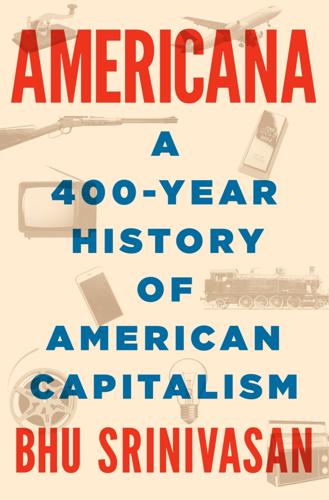
Americana: A 400-Year History of American Capitalism
by
Bhu Srinivasan
Published 25 Sep 2017
When September came around, Gates decided to stay. The Altair, at the time, was causing significant excitement among early adopters—enthusiasts known as hobbyists—including some in Silicon Valley. At the Homebrew Computer Club, formed just weeks after the Popular Electronics issue premiered the Altair, Steve Wozniak made it to the first meeting, which he would later call “one of the most important nights” of his life. There he saw the Altair demonstrated, beginning to understand the implications and flexibility of low-cost microprocessors. Wozniak spent the next few months hacking together the functions of a keyboard and a microprocessor that could show keystrokes on a television screen—which, in Wozniak’s telling, was an achievement that had never been accomplished outside large corporate mainframes costing tens or often hundreds of thousands of dollars.
…
He had an opening. Jobs’s challenges with NeXT coincided with the failure of management at Apple. For the boost in morale from the return of Jobs as much as the gain of any technology, Apple agreed to buy NeXT in 1996 for a little over $400 million. Jobs came back into the Apple fold as an adviser. In the dot-com nineties, Jobs’s return was regarded as quaint and ceremonial—an aging star evincing glimpses of past glory that he had no hope of recapturing—by everyone but a segment of Apple’s most rabid customers. Apple’s place in the technology ecosystem seemed trivial at a time when just about everyone was thriving.
…
Yet the implosion of the Internet companies had a liberating effect on Jobs and Apple. The seeming new stars of the age, like Netscape and AOL, were gone or damaged. While Apple also had a substantial decline in sales from 2000 to 2001—$8 billion to $5.3 billion—the fallout had created an unforeseeable benefit. In 2001 Apple carried out a considerable amount of its manufacturing in America, maintaining a 748,000-square-foot facility in Sacramento. It also owned facilities in Ireland and Singapore. With the drop-off, Apple began to close its own capabilities in favor of contract manufacturers, foreign third parties that could build new Apple products to the company’s specifications.

Americana
by
Bhu Srinivasan
When September came around, Gates decided to stay. The Altair, at the time, was causing significant excitement among early adopters—enthusiasts known as hobbyists—including some in Silicon Valley. At the Homebrew Computer Club, formed just weeks after the Popular Electronics issue premiered the Altair, Steve Wozniak made it to the first meeting, which he would later call “one of the most important nights” of his life. There he saw the Altair demonstrated, beginning to understand the implications and flexibility of low-cost microprocessors. Wozniak spent the next few months hacking together the functions of a keyboard and a microprocessor that could show keystrokes on a television screen—which, in Wozniak’s telling, was an achievement that had never been accomplished outside large corporate mainframes costing tens or often hundreds of thousands of dollars.
…
He had an opening. Jobs’s challenges with NeXT coincided with the failure of management at Apple. For the boost in morale from the return of Jobs as much as the gain of any technology, Apple agreed to buy NeXT in 1996 for a little over $400 million. Jobs came back into the Apple fold as an adviser. In the dot-com nineties, Jobs’s return was regarded as quaint and ceremonial—an aging star evincing glimpses of past glory that he had no hope of recapturing—by everyone but a segment of Apple’s most rabid customers. Apple’s place in the technology ecosystem seemed trivial at a time when just about everyone was thriving.
…
Yet the implosion of the Internet companies had a liberating effect on Jobs and Apple. The seeming new stars of the age, like Netscape and AOL, were gone or damaged. While Apple also had a substantial decline in sales from 2000 to 2001—$8 billion to $5.3 billion—the fallout had created an unforeseeable benefit. In 2001 Apple carried out a considerable amount of its manufacturing in America, maintaining a 748,000-square-foot facility in Sacramento. It also owned facilities in Ireland and Singapore. With the drop-off, Apple began to close its own capabilities in favor of contract manufacturers, foreign third parties that could build new Apple products to the company’s specifications.
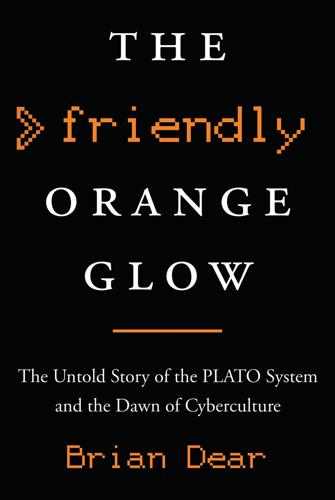
The Friendly Orange Glow: The Untold Story of the PLATO System and the Dawn of Cyberculture
by
Brian Dear
Published 14 Jun 2017
The only difference between what he envisioned for PLATO IV back in 1968 and what he was envisioning in 1975 was the scale. His revised, broader vision did not contemplate nor include microcomputers, which were still in their infancy. The same week Bitzer gave this presentation, microcomputer hobbyists, including Steve Wozniak, who had already begun working on what would soon be known as the Apple I, were meeting at the Homebrew Computer Club in Silicon Valley. Despite the fact that CERL and Xerox PARC had opened their respective labs to each other and offered demos and hands-on experiences and dialogue, none of what was brewing in Silicon Valley either in corporate offices or hackers’ garages was affecting Bitzer’s vision.
…
In one of the great understatements of the computer era, in 1986 Bill Norris said, “We found the proliferations of Apples and IBMs a roadblock to PLATO.” — Mark Ciskey was another bright software engineer whom, along with Kevet Duncombe, Chuck Miller had hired right out of Iowa State because, Miller says, “Kevet Duncombe had said, ‘Smart guy, go get him,’ so, sight unseen, I hired him too.” Ciskey had an Apple computer at home. “He told us one day, you know, ‘What’s so hot about PLATO, you can do anything you want on this Apple that we can do on PLATO.’ We said, ‘Oh yeah? You can’t play Empire.’ Well, that was on a Friday. Monday he came in and said, ‘Watch this,’ plugged his Apple in, and he had developed a PLATO terminal emulator.
…
“When micros came out,” says Tenczar, “all the empowered courses, all the computer science departments, all the major companies completely missed the microprocessor revolution. Some of us, Stan Smith was one, and then myself, began looking at the Apple II. I actually did homework, and I looked at that and realized that that has about ten times the processing power of a PLATO terminal—this was in ’77, when the Apple II came out.” He tried to drum up interest in the Apple II but, he says, “people thought I was nuts.” After having a falling out with Bitzer and members of the senior staff, he founded, with some partners, a company called Regency Systems, designed to bring PLATO’s CBE capabilities to a PC platform.
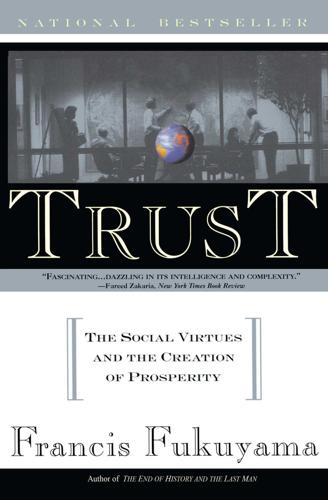
Trust: The Social Virtue and the Creation of Prosperity
by
Francis Fukuyama
Published 1 Jan 1995
Public policy in the United States and Europe has been shaped in recent years by the perception that small companies are more innovative and create greater employment. Most corporations are today trying to downsize, decentralize, and become more flexible. Everyone has in mind the example of the computer industry, where Steve Jobs and Steve Wozniak, working out of their garage, invented the personal computer and started a technological revolution that within a decade undermined the behemoth IBM. The argument is also made that improvements in communications technology make possible industries that are far more decentralized and deconcentrated than before, leveling the playing field between small companies and their larger rivals.
…
It is often the case that the person who turns the enterprise into a durable institution is not the same as the founding entrepreneur: the former has to be more group oriented and the latter more individualistic to play their respective roles. But both types have coexisted easily in American culture. For every Joseph Smith, there has been a Brigham Young; for every Steve Jobs, a John Scully. Are the Mormon church and Apple Computers properly seen as examples of American individualism, or American groupism? Although most people would characterize them in the latter way, they in fact represent both tendencies simultaneously. If we can conceive of a perfectly individualistic society as an “ideal type,” it would consist of a group of totally atomized individuals who interact with each other solely out of rational calculations of self-interest and have no ties or obligations to other human beings except the ones that arise out of such calculations.

Colorado
by
Lonely Planet
It’s a beautiful campus set above downtown, on what is known as the Hill. Free tours begin with a one-hour informational session followed by a 90-minute walking tour. As you stroll, remember you are moving in the footsteps of notable alumni such as astronaut Scott Carpenter (one of 17 astronauts with CU diplomas), Apple’s Steve Wozniak, Sidney Altman (one of six Nobel Laureates), Robert Redford (didn’t graduate), South Park creators Trey Parker and Matt Stone (smoked a ton of dope, did graduate), actor Jonah Hill (stopped by for one semester), and the always memorable Lynne Cheney (married Dick). Boulder Museum of Contemporary Art MUSEUM (BMOCA; Click here ; 303-443-2122; www.bmoca.org; 1750 13th St; adult/senior & students $5/4, free Sat & 4-8pm Wed; 11am-5pm Tue, Thu & Fri, to 8pm Wed, 9am-4pm Sat, noon-3pm Sun; ; 203, 204, 205, 206, 208, 225, DASH, JUMP, SKIP) A historic brick house divided into three galleries filled with evocative modern art.
…
SOUTH BROADWAY Beatrice & Woodsley BAR ( 303-777-3505; www.beatriceandwoodsley.com; 38 S Broadway; cocktails $8-12; 5-10pm Sun-Wed, 5-11pm Thu & Fri, 10am-4pm & 5-11pm-Sat & Sun; 0 RTD) The menu of small plates is whimsical (such as the corn-fed scallop – a scallop served with toasted cornbread and spicy slaw) and brunch here is the fanciest on S Broadway, but it’s the cocktails that kill us. The Europa ’51 exemplifies this bar’s artistry, combining gin, cynar, apple juice, citrus-pepper tincture (whatever that is) and orange. Beatrice and Woodsley is also the most artfully designed dining room in Denver. Chainsaws are buried into the wall to support shelves, there’s an aspen growing through the back of the dining room and the feel is that of a mountain cabin being elegantly reclaimed by nature.
…
The Pilgrim – a pile of turkey with cranberry sauce – was named one of the best sandwiches in America by Esquire magazine. Stuft BURGERS $ ( 970-484-6377; www.stuftburgerbar.com; 210 S College Ave; burgers $7-10; 11am-10pm Sun-Thu, to 2am Fri & Sat; ) Grab a pencil and start scribbling your dream order: the build-your-own burger concept succeeds through a list of high-grade options like chipotle ketchup, apple-cider bacon and fire-roasted chiles. Add fresh-cut, skin-on french fries and a good list of beer specials and lunch takes on unlimited possibilities. Choice City Butcher & Deli SANDWICHES $ ( 970-490-2489; www.choicecitybutcher.com; 104 W Olive St; sandwiches $6-10; 7am-6pm Sun-Wed, to 9pm Thu-Sat; ) The butchers here are straight from central casting – all forearms and white aprons – and all of the five varieties of Reuben sandwiches win raves.
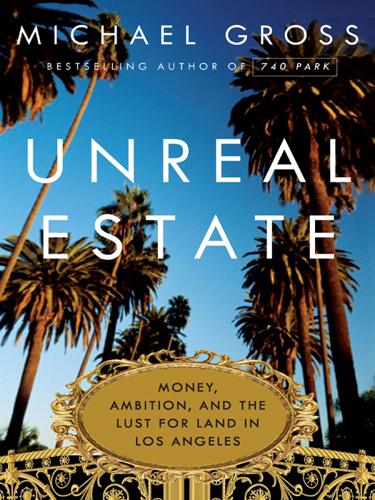
Unreal Estate: Money, Ambition, and the Lust for Land in Los Angeles
by
Michael Gross
Published 1 Nov 2011
Bradley also bought the house next door, the longtime home of Harold Janss and, later, the movie star Gregory Peck, and demolished it to add four acres of gardens to his estate. 23. Years later, a John Dahlinger would write a book claiming to be the illegitimate son of Henry Ford. 24. Among the so-called phone phreaks who built and sold the gadgets were Apple Computer founders Steve Jobs and Steve Wozniak. 25. In 2010, a small house in West Hollywood, occupied by Elijah Blue and reportedly owned by a trust associated with his mother, was sold at a $300,000 loss—one of the few black marks on Cher’s otherwise stellar record as a real estate investor. 26. In 2008, that apartment was put on the market for $6.5 million by its third owner, Rosemary Stack, widow of the well-born actor Robert, who sixty-four years before had bought Colleen Moore’s Bel Air mansion.
…
His first year on his own he made ten times his previous year’s salary. “It wasn’t horrible,” he deadpans. Years earlier, while still a teenager, Burkle had met Paul Whittier, one of Max Whittier’s sons, who lived on a ranch outside Yucaipa, California, on the edge of the San Bernadino National Forest near a small apple orchard the Burkle family owned. While sweeping out Whittier’s barn for an apple growers’ picnic, Burkle discovered that he owned a Camaro—and Burkle’s father bought it, keeping his promise to get his son a car. Burkle was a millionaire when he called Whittier again. After reminding him of that earlier transaction, Burkle got straight to the point: “I’ve always liked your house.”
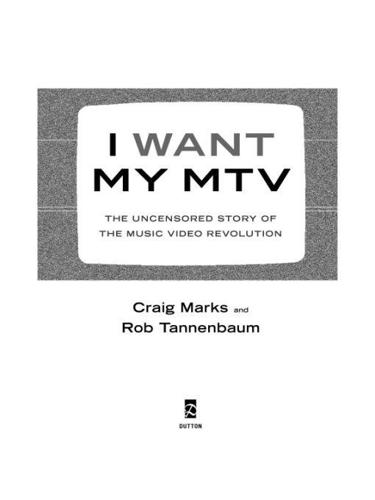
I Want My MTV: The Uncensored Story of the Music Video Revolution
by
Craig Marks
and
Rob Tannenbaum
Published 19 Sep 2011
(On the other hand, it also meant they were bound to the existing rules of the radio industry, which soon proved to be an impediment.) A successful start-up requires dedication and imagination, but not necessarily expertise. Steve Wozniak, the tech wizard who cofounded Apple Computer with Steve Jobs, has recalled that in the early days of the company, when he didn’t know how to design a floppy disk or a printer interface, he’d make something up, “without knowing how other people do it.” He added, “All the best things that I did at Apple came from (a) not having money and (b) not having done it before, ever.” Similarly, MTV had little money and less experience. If there was a corporate culture, it was based on confidence and pugnaciousness, traits that began at the top of the company’s masthead.
…
And Mike Score of A Flock of Seagulls, owner of early MTV’s most unprecedented hair, says video exposure brought like-minded fans together at clubs where outcasts discovered they were part of a tribe. Even if it accomplished nothing else, MTV pissed off baby boomers, in part because it signified a transition from an era when the biggest rock stars were bands that transformed public consciousness, to one where technology filled that role. Today, that transformation is complete: Apple sold 275 million iPods in the first nine years they were on the market, which is higher than the number of records sold by Elton John, Aerosmith, AC/DC, Pink Floyd, or U2 in their careers. But MTV was the first time technology became a rock star, because—unlike calculators, CD players, or home gaming systems—it was sold at a reasonable price.
…
I was on a heavy vampire kick—I was into Anne Rice very early—so that’s where the black veil on the dancer’s head comes from. Prince was brilliant in terms of dance and choreography. You could show him something and three seconds later he could do it perfectly. He’s also funnier than people know. I’d put him next to a six-foot-tall model and he would give me an expression like, “Are you kidding? Where’s my apple box?” He was the one who decided at the last minute to use Wendy in “Kiss.” They had great chemistry, and they were funny together. Her facial expressions in that video were perfect. LISA COLEMAN: At the last minute, Prince asked Wendy Melvoin to be in “Kiss.” Wendy and I were living together, and he called her: “I’m shooting the video today.
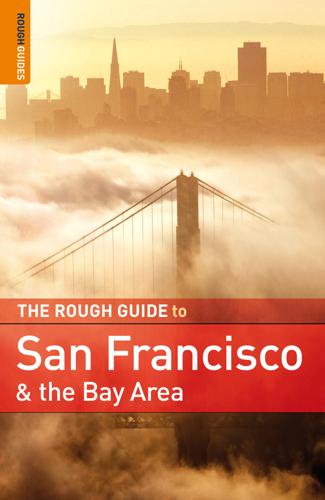
Rough Guide to San Francisco and the Bay Area
by
Nick Edwards
and
Mark Ellwood
Published 2 Jan 2009
It was from these roots that the modern Silicon Valley bloomed in the late 1970s, when the local folks at Intel invented first the silicon semiconductor and then the microprocessor, both radically smaller and more efficient than vacuum-tube technology, and initiated the computer revolution. In 1976, the “two Steves,” Wozniak and Jobs, former high-school friends from Los Altos, founded Apple Computers in a garage, creating the first hardware for their systems using scavenged parts from calculators and money raised by selling a VW bus; the new computers sold for $666.66 apiece. In 1994, capitalizing on this new market, two young Stanford students named Steve Yang and Jerry Filo founded Yahoo!
…
Notable examples of his work include The Athlete, Fugit Amor, The Severed Head of John the Baptist, Fallen Angel, and a small | The Richmond and the beaches The Legion of Honor and Land’s End T he R i c hm ond, G ol d e n G ate Park , a n d t h e S u n s e t The Richmond’s vibrant Chinese community is most in evidence along Clement Street between Park Presidio and Arguello boulevards. On a short stroll, you’ll spot dozens of Chinese dim-sum bakeries, grocery stores, and restaurants, not to mention the dense warrens of one of the city’s best usedbookstores, Green Apple Books (see p.243). At the district’s eastern edge – somewhat incongruous now, given the area’s strong Asian flavor – stands the airy Temple Emanu-El, 2 Lake St at Arguello, a rare public bastion of the city’s Jewish population (w www.emanuelsf.org). One block south, the Richmond’s main driving thoroughfare, Geary Boulevard, showcases the area’s European flavor with a myriad of ethnic restaurants; it’s fume-choked most of the time, though, and not a pleasant place to dawdle on the sidewalk.
…
Sir Francis Drake 450 Powell St at Sutter, Union Square t415/392-7755 or 1-800/227-5480, wwww.sirfrancisdrake.com. The lobby here is a hallucinogenic evocation of all things heraldic: it’s crammed with faux British memorabilia, chandeliers, and drippingly ornate gold plasterwork. Thankfully, the rooms are calmer, with a gentle apple-green color scheme and full facilities. The lobby and rooms recently received a modern quirky-chic update. The hotel is known for the bar, Harry Denton’s Starlight Room, on the 21st floor (see p.210). $197 and up. Spaulding Hotel 240 O’Farrell St at Powell, Union Square t415/397-4924, w www .spauldinghotel.com.

Coastal California
by
Lonely Planet
San Jose for Children Children’s Discovery Museum MUSEUM ( 408-298-5437; www.cdm.org; 180 Woz Way; admission $10; 10am-5pm Tue-Sat, from noon Sun; ) Downtown, this science and creativity museum has hands-on displays incorporating art, technology and the environment, with plenty of toys, and very cool play-and-learn areas. The museum is on Woz Way, which is named after Steve Wozniak, the cofounder of Apple. Great America AMUSEMENT PARK ( 408-986-5886; www.cagreatamerica.com; adult/child under 48in $55/35; 4701 Great America Pkwy, Santa Clara; Apr-Oct; ) If you can handle the shameful product placements, kids love the roller coasters and other thrill rides. Note that online tickets cost much less than walk-up prices listed here; parking costs $12 but it’s also accessible by public transportation.
…
Trentadue WINERY ( 707-433-3104, 888-332-3032; www.trentadue.com; 19170 Geyserville Ave; port tastings $5; 10am-5pm) Specializes in ports (ruby, not tawny); the chocolate port makes a great gift. Sebastopol Grapes have replaced apples as the new cash crop, but Sebastopol’s farm-town identity remains rooted in the apple – evidence the much-heralded summertime Gravenstein Apple Fair. The town center feels suburban because of traffic, but a hippie tinge gives it color. This is the refreshingly unfussy side of Wine Country, and makes a good-value home base for exploring the area. Hwy 116 splits downtown; southbound traffic uses Main St, northbound traffic Petaluma Ave.
…
Farmers market MARKET (cnr Petaluma & McKinley Aves; 10am-1:30pm Sun Apr–mid-Dec) Meets at the downtown plaza. Sturgeon’s Mill MILL (www.sturgeonsmill.com; 2150 Green Hill Rd; ) A historic steam-powered sawmill, open for demonstrations several weekends a year; check the website. Festivals & Events Apple Blossom Festival CULTURAL (www.sebastopol.org) April Gravenstein Apple Fair FOOD (www.farmtrails.org/gravenstein-apple-fair) August Sleeping Sebastopol is good for get-up-and-go travelers exploring Russian River Valley and the coast. Sebastopol Inn MOTEL $$ ( 707-829-2500, 800-653-1082; www.sebastopolinn.com; 6751 Sebastopol Ave; r $119-179; ) We like this independent, non -cookie-cutter motel for its quiet, off-street location, usually reasonable rates and good-looking if basic rooms.

Western USA
by
Lonely Planet
GEEKING OUT When California’s Silicon Valley introduced the first personal computer in 1968, advertisements breathlessly gushed that Hewlett-Packard’s ‘light’ (40lb) machine could ‘take on roots of a fifth-degree polynomial, Bessel functions, elliptic integrals and regression analysis’ – all for just $4900 (about $29,000 today). Hoping to bring computer power to the people, 21-year-old Steve Jobs and Steve Wozniak introduced the Apple II at the 1977 West Coast Computer Faire with unfathomable memory (4KB of RAM) and microprocessor speed (1MHz). By the mid-1990s, an entire dot-com industry boomed in Silicon Valley with online start-ups, and suddenly people were getting their mail, news, politics, pet food and, yes, sex online.
…
CAROLINE COMMINS / ALAMY © Columbia River Gorge 18 Carved by the mighty Columbia as the Cascades were uplifted, the Columbia River Gorge (Click here) is a geologic marvel. With Washington State on its north side and Oregon on its south, the state-dividing gorge offers countless waterfalls and spectacular hikes, as well as an agricultural bounty of apples, pears and cherries. And if you’re into windsurfing or kiteboarding, head straight to the sporty town of Hood River, ground zero for these extreme sports. Whether you’re a hiker, apple lover or adrenaline junkie, the gorge delivers. TYLER ROEMER / LONELY PLANET IMAGES © Monument Valley & Canyon de Chelly 19 Beauty comes in many forms on the Navajos’ sprawling reservation, but makes its most famous appearance at Monument Valley (Click here), an otherworldly cluster of rugged buttes and stubborn towers rising majestically from the desert.
…
Trauma Recovery & Rape Treatment Center ( 415-437-3000; http://traumarecoverycenter.org) A 24-hour hotline. Walgreens ( 415-861-3136; www.walgreens.com; 498 Castro ST; 24hr) Pharmacy with locations citywide (see website). Internet Access SF has free wi-fi hot spots citywide – locate one nearby with www.openwifispots.com. Connect for free in Union Sq, and most cafes and hotel lobbies. Apple Store (www.apple.com/retail/sanfran cisco; 1 Stockton St; 9am-9pm Mon-Sat, 10am-8pm Sun; ) Free wi-fi and internet terminal usage. San Francisco Main Library (http://sfpl.org; 100 Larkin St; 10am-6pm Mon & Sat, 9am-8pm Tue-Thu, noon-5pm Fri & Sun; ) Free 15-minute internet terminal usage; spotty wi-fi access.
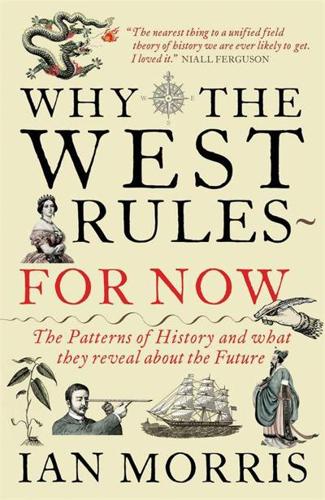
Why the West Rules--For Now: The Patterns of History, and What They Reveal About the Future
by
Ian Morris
Published 11 Oct 2010
Over the next thirty years, International Business Machines (IBM) sold smaller but still monstrous machines to the West’s corporations, but the real transformation followed the invention of the microprocessor in 1971. As so often, the innovators came from the fringes of the elite—in this case, not from ultrarespectable firms such as IBM but, like Steve Wozniak, from garages in places such as suburban Menlo Park in California. Starting with just $91,000 capital and a few geeky friends, Wozniak and his business partner Steve Jobs released their Apple I microcomputer into the world in 1976. By 1982 Apple’s sales had reached $583 million and IBM had invented the Personal Computer to compete. By then the Harvard dropouts Bill Gates and Paul Allen had founded Microsoft and relocated to the West Coast.
…
They have the advantage of being relatively easy to define and document (some potential traits, like happiness, would be much harder), but there are certainly other things we could look at (say employment rates, nutrition, or housing) that might generate different scores. Even economists who agree that the UN’s traits are the best ones sometimes balk at conflating them into a single human development score; they are like apples and oranges, these economists say, and bundling them together is ridiculous. Other economists are comfortable both with the variables chosen and with conflating them, but do not like the way the UN statisticians weight each trait. The scores may look objective, these economists point out, but in reality they are highly subjective.
…
The best-known account of this comes from the Hebrew Bible. Jacob was a successful shepherd in the hills near Hebron in what is now the West Bank. He had twelve sons, but played favorites, giving the eleventh—Joseph—a coat of many colors. In a fit of pique, Joseph’s ten older brothers sold the gaudily dressed apple of their father’s eye to passing slave traders headed for Egypt. Some years later, when food was scarce in Hebron, Jacob sent his ten oldest sons to Egypt to trade for grain. Unknown to them, the governor they confronted there was their brother Joseph, who, although a slave, had risen high in pharaoh’s service (admittedly after a spell in jail for attempted rape; he was, of course, framed).

The Rise and Fall of American Growth: The U.S. Standard of Living Since the Civil War (The Princeton Economic History of the Western World)
by
Robert J. Gordon
Published 12 Jan 2016
In April 1975, they together founded Microsoft. A month earlier, another computer legend, Steve Wozniak, had attended the Homebrew Computer Club in California and was immediately inspired by what he saw. He began work on his own personal computer, the Apple Computer or the Apple I, and got his friend, Steve Jobs, to help with sales. The computer had more memory and a cheaper microprocessor than the Altair and could be plugged into any television to use as a screen. Soon Jobs and Wozniak began work on the Apple II, which included a keyboard and a color screen as well as an external cassette tape (soon replaced with floppy disks).
…
Though white or “Irish” potatoes were a staple in the north, in the southern states they matured too early and could not be stored in the hot climate, forcing southerners to rely on the sweet potato, which did not mature until autumn. Although vegetables were home-grown on farms and in urban back yards during the summer, only root vegetables and dry beans were available in the winter. Fruits were largely missing from the American diet of 1870, except for apples, which could be stored for several months. Fresh fruit was little eaten, because it spoiled rapidly, and much of what was available was made into cider and brandy. Fruit from trees could be made into jam and preserves, but in newly settled areas, fruit was scarce, for fruit trees took years to mature.24 Chocolate, tea, and particularly coffee were the beverages of choice almost everywhere.
…
Keeping a fire burning all day required 50 pounds each day of coal or wood.”82 There was no hired help for the household. A Norwegian immigrant on the frontier complained, “Here the mistress must do all the work that the cook, the maid, and the housekeeper would do in an upper-class family at home. Moreover, she must do it as those three together do it in Norway.”83 This sentiment is notable for its apples-to-oranges comparison of an immigrant farm family with an “upper-class family” back home in Norway. Presumably, working-class housewives in Norway in 1870 were required to perform similar chores to those carried out on the farm by Midwestern Norwegian immigrants. YOUTH, CHILD LABOR, AND SCHOOLING Persons younger than 25 made up 60 percent of the population of 1870, and their lives were very different from those of contemporary youth.
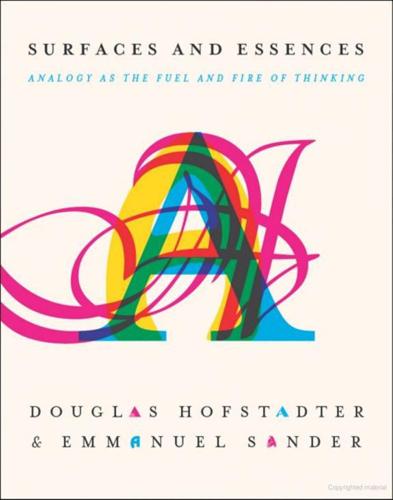
Surfaces and Essences
by
Douglas Hofstadter
and
Emmanuel Sander
Published 10 Sep 2012
From Eggs to Acorns, From Oxen to Oaks Even if we forget about people who steal eggs and oxen, the notion that things can become bigger and better over time is everywhere to be found around us, for after all, grownups were once children; today’s multinational giants were once fledgling outfits; Steve Jobs and Steve Wozniak made the first Apple computer in a garage before going on to found their legendary firm; Sergey Brin and Larry Page incorporated Google in a humble dwelling in Menlo Park; Albert Einstein first learned to read and write before developing his theories of relativity; popes were once priests in little churches; conquerors of Everest climbed small hills before moving on to the big time; major acts of philanthropy were preceded by minuscule acts of charity; every great friendship was once just a tentative affinity; virtuoso instrumentalists were once musical novices; every chess master had to learn the rules at some point; powerful ideas gave rise to modest fruit before resulting in huge advances… All of this is far from egg-stealers turning into ox-stealers, but it nonetheless deserves a proverb or two, along with the rich category that any proverb covertly symbolizes.
…
Here, for example, are a few division word-problems that were invented by university students: •4 friends agree to share 12 candies. How many candies will each one get? •90 acres of land is going to be divided into 6 equal parcels. What will the area of each parcel be? •A mother buys 20 apples for her 5 children. How many apples will each child get? •A theater has 120 seats arranged in 10 rows. How many seats are in each row? •A teacher buying food for a class picnic filled 4 grocery carts with a total of 20 watermelons. How many watermelons were in each cart? •It takes 12 yards of cloth to make 4 dresses.
…
If I tell you it’s a ballpoint pen, that’s an objective fact. No one could say the opposite. Much the same holds for that sheet of paper and the paper clip that I see sitting over there on my desk. Ballpoint pen, sheet of paper, and paper clip are all categories that have the quality of total objectivity. An elephant is an elephant, an apple is an apple, and Paris will always be Paris. There are no two ways about it. When we categorize, we do something that is objective. ANNA:I don’t agree with you, but I think you might have Plato on your side, because I believe he argued, in Phædrus, that every human being is given the opportunity to look at situations ranging from the most general to the most specific, and to carve up the world in an objective fashion while making very fine distinctions.